

Day Hiking Essentials Checklist: Pack Right for Your Hike

Okay, I’ll admit it: years ago, I would never have been qualified to tell you what to bring on a hike.
I used to set off on trails completely unprepared for the twists and turns that lay ahead.
I’ve left my rain jacket in my car, and hiked unsuspectingly into chilling alpine storms. Dehydration has made me so thirsty that I’ve gnawed the windburned crust off of a snowbank. I’ve wandered off-trail, become completely lost, and bushwhacked my way into a backcountry meltdown.
Luckily for me, I’ve always come out in one piece, but my failure to prepare could have sent me to the hospital, put other hikers in danger, or worse. Underestimating mother nature is never a good idea.
That’s why I’ve created this essential day hiking checklist for you , fellow hiker. Because years of mistakes have taught me that preparation is everything in the world of hiking. How you plan your trip can be the difference between chaos and bliss.
Want to avoid making the same mistakes that I did?
Stay tuned, I’ve got you covered.
What to Bring on a Day Hike: The Essentials
10 Essentials for Day Hiking
Backpack & storage, worn clothing & carried gear, cold and/or rainy weather gear, food, water & purification, navigation & communication.
- Emergency Gear
Health & Protection
Photography equipment, personal items.
- Final Thoughts: Day Hiking Essentials

Let’s start with the day hiking building blocks.
Listed below are the uber-important survival items that day hikers should consider packing before every trip. This ‘Ten Essentials of Hiking’ list is universally agreed upon in the hiking community and should serve as a baseline for all the necessary supplies you need to bring along on any given day hike.
1. Navigation : map, compass, GPS device, personal locator beacon, altimeter 2. Illumination : headlamp, flashlight, lantern, extra batteries 3. Sun Protection : sunglasses, sunscreen, lip balm, sun-protective clothes 4. First Aid Kit : including medication, bug repellent, and foot care 5. Gear Repair Kit : knife, multitool, repair tape, rope 6. Fire : lighter, matches, fire starter 7. Emergency Shelter : emergency blanket, bivy, tarp 8. Extra Food : extra day’s portion of calories 9. Extra Water : plus water storage, water purification system 10. Extra Clothing : sufficient layers to survive worst-case scenario weather
Beyond these ten essentials, I’ve prepared a more detailed day hiking checklist, broken down into nine different categories. The list is purposely exhaustive and is meant to cover any and all items you might need on a given day hike. Throughout the checklist, I’ll recommend hiking products that I know and love.
The length, weather, and difficulty of your upcoming hike should dictate which items you choose to bring along and which items you leave behind. Use your best judgment and always err on the side of caution.
Study your hike thoroughly, check the forecast, and use the following 52-item checklist to gather all the essential gear you need before your upcoming day hike.

DAYPACK – Use a practical daypack to carry your food, water, gear, and extra clothing while you’re day hiking in the backcountry. No need to get fancy, as a lightweight daypack between 10 and 30 liters should get the job done.
HIP PACK – It’s nice to have quick, easy access to snacks and supplies while hiking, which is why I load up and strap on my hip pack before I hit the trail. Want to hike without a day pack? An intelligently stocked hip pack with slots for water bottles might just be all the storage you need.
PACK COVER/LINER – If your daypack doesn’t come with built-in water protection, then moisture could become an issue. When the rain starts pounding down, you’ll need the contents inside your pack to remain dry at all costs. Bring a waterproof pack cover or pack liner to keep all the gear inside your backpack safe and dry.

When choosing your trail clothes, try to avoid 100% cotton. When the pros say “ Cotton kills ,” it’s because the wetter cotton clothing gets, the more body heat you lose in cold and/or windy conditions.
Opt for synthetic materials instead, or cotton/polyester blends made from breathable and moisture-wicking fabric. These materials will pull sweat and moisture away from your body to the outer layer of the garment, keeping you dry and warm.
SHIRT/TOP – Stock your day hiking wardrobe with breathable athletic tops. I usually don a long-sleeved shirt for my day hikes. It gives me great protection against the sun, blocks wind, and helps keeps me warm when temperatures drop.
PANTS/SHORTS – Your hiking pants/shorts/etc. should be comfortable and unrestrictive. Avoid jeans or bulky slacks and instead wear breathable hiking bottoms that allow for a wide range of movement.
FOOTWEAR – Feet are finicky and everyone’s body is different, so wear hiking footwear that works for you. Hiking boots that enclose your ankles provide the most support, whereas shorter hiking shoes, trail runners ( I wear these ), and minimalist hiking sandals are less restrictive but also less protective.
UNDERWEAR – Ill-suited underwear can make your day hike unpleasant in a hurry, so don’t cut corners when it comes to choosing your skivvies. Pick a lightweight, breathable, and snug pair of hiking underwear that will wick moisture away and prevent chafing.
SOCKS – Hiking socks should be comfortable, breathable, and prevent blisters. For me, those socks are the Darn Tough Hikers , which are made from high-quality Merino wool and offer an unconditional lifetime guarantee.
HAT – A good hat will keep the sun out of your eyes, protect your skin from harsh UV rays, and tame your sweaty hiker hair. I wear a mesh-back trucker hat and will use my Buff underneath to create earflaps if I need extra sun protection.
SUNGLASSES – Bring a pair of polarized sunglasses to protect your eyes from harmful UV rays and prevent damage down the road. Sunglasses don’t have to be expensive either, as you can find affordable pairs online for under $15 .
TREKKING POLES – For hikers with sensitive knees, trekking poles are a godsend. Bringing a lightweight and sturdy set of sticks will give you two more points of contact with the ground and help ease the pressure off of your knees.

Before your day hike, it’s important to understand the potential weather you might face on the trail. Study the forecast, research typical conditions, and pack your bag accordingly. While you may not need to bring every item listed below during a day hike, pack all that’s essential for staying warm and dry during a worst-case scenario.
LIGHT JACKET/THERMAL – If you anticipate a chilly hike, pack a light jacket or thermal base layer to protect against the cold. You can layer this with your hiking top, rain jacket, and down jacket to stay comfortable as temperatures drop.
RAIN JACKET – Have a lightweight rain jacket on hand if there is even the slightest hint of precipitation in the forecast. Getting stuck in the wilderness with no protection from rain can leave you vulnerable and at the mercy of the elements.
WINTER JACKET – A packable, lightweight winter jacket is a must-have for day hikes where wind chill temperatures might dip close to freezing. The layers of insulation in your jacket will help trap body heat and keep you warm when things turn nasty.
RAIN PANTS – If your day hike forecast includes the possibility of substantial rain, bring along a pair of packable rain pants to pair with a rain jacket. A solid set of rain pants can mean the difference between ‘shivering, stumbling, and cursing’ and ‘dry, warm, and happy.’
LONG UNDERWEAR – When day hiking in cold weather, bring a pair of long underwear to provide an extra layer of insulation for your legs. Conserving heat in your legs will regulate your body temperature and allow you to push on as temperatures plummet.
WINTER HAT – During cold-weather day hikes, body heat escapes from your head faster than any other part of your body. Pack a warm winter hat to help stabilize your body temperature, and you will expend less energy trying to stay warm.
GLOVES – Day hiking in cold weather with exposed hands can suck the fun out of your day, along with your body heat. It can also lead to hypothermia or frostbite in extreme cases. Protect your digits with a quality pair of waterproof gloves when chilly and/or wet conditions threaten your well-being.
FACEWEAR – Constant exposure to the elements — wind, dust, rain, snow, and sun — can do a number on your face, so bring along some proper protection for your next day hike. Multifunctional facewear can be used in a myriad of ways and will shield your face from almost anything nature throws its way.
GAITERS – If significant rain is in the forecast, consider packing a lightweight pair of gaiters — especially if your footwear isn’t waterproof. Proper gaiters will block water and debris from entering the opening of your shoe, keeping your feet dry and undisturbed in the process.
CRAMPONS – When hiking on packed snow and ice, crampons should be an essential part of your day hiking gear checklist. An effective set of crampons will penetrate ice and grip frozen trails, preventing slips and falls that could derail your adventure.

Food and water are your hiking fuels, so kick start your day hike with plenty of calories. A strenuous, full-day hike can easily burn 3,000 calories. Some of those calories can be consumed right before you hit the trail, and the rest should be close at hand in your day pack. Here’s a calories burned calculator to see how much food you should pack.
Always bring at least an extra day’s worth of calories, in case of emergency.
SNACKS – Healthy hiking snacks will be the day hiking fuel that keeps you going, so be sure to pack enough calories to sustain yourself for a long day of hiking. Bring calorie-dense, ready-to-eat foods like nuts, jerky, and meal bars that will keep you going all day on the trail.
LUNCH – Snacks alone can get boring, so consider packing a lunch for a mid-day morale boost. If you want a hot meal, pack a lightweight stove and a dehydrated meal. Or pack something as simple as a sandwich to reward yourself for a long day of hiking.
WATER – Staying hydrated is as important as consuming enough calories on your day hike. Bring enough water! Or purify as you go, providing there are reliable water sources along the trail. Consume at least one liter of water per two hours of hiking, and even more on hot, strenuous, high-altitude hikes.
WATER PURIFICATION – If there are multiple, year-round water sources along the trail, a lightweight water purification system is a good option for filtering as you go. Other options include using iodine tablets or zapping your water with UV rays. All these methods allow you to carry less water weight as you hike and will allow you to clean water sources in case of an emergency.
WATER STORAGE – You’ll need to carry liquids while hiking, so choose a water storage system that works for you. Large-volume hydration packs, insulated containers, collapsible pouches , or old water bottles — the choice is yours.

Losing your way in the backcountry can be stressful and even life-threatening, so come prepared. Arm yourself with an accurate map (print and/or digital), a reliable compass, and the skills to stay on track even when the unexpected happens.
MAP – Though many trails are very easy to follow, always bring a detailed print map for less-established day hikes into the backcountry. Should you get lost or disoriented, a good topographical map will show you the contours of the land and guide you back to civilization.
COMPASS – If you don’t know your direction of travel, a map alone might not be enough to get back on the right trail. Always pack a reliable compass — magnetic or digital — and use it in conjunction with your map to keep moving in the right direction.
CELL PHONE – Many hiking purists choose to travel with only a printed map, but the truth is that smartphones can also be excellent tools for navigating the wilderness. Just make sure your smartphone is equipped with GPS technology that doesn’t rely on cell phone tower connections. And keep your battery charged and a backup map close at hand.
POWER BANK – Your cell phone won’t do you much good if its battery dies, so pack a lightweight power bank to charge your cell phone as needed. You likely won’t need a power bank on most day hikes, but it’s a good piece of gear to have in case you get sick, lost, or injured and need to spend the night on the trail.
OFFLINE DIGITAL MAPS – Many smartphone navigation apps allow you to download an offline map of your hike before you hit the trail. Doing so will let you trace your live location along the trail route without the need for cell service. My personal favorite app is Gaia GPS .
Emergency Day Hiking Gear

Nobody ever intends to get into an emergency situation on a day hike, but it’s important to come prepared for a worst-case scenario. Whether you become lost, threatened , injured, or sick on your hike, bringing along the all-important emergency gear will help you right the ship and return to civilization safely.
FIRST AID KIT – Prepare for injuries both big and small and pack a basic first aid kit on your next day hike. You can purchase a lightweight first aid kit or piece together one from your medicine cabinet. Here’s a helpful first aid kit checklist to ensure that you don’t leave anything behind.
WHISTLE – If you become lost or injured on your day hike, a loud, piercing emergency whistle can attract & guide rescuers to you, even if they’re miles away. Some hikers keep their whistles close at hand, but many modern-day packs have whistles built into their buckles. Choose & learn your preferred method for summoning help in a potential emergency.
BEACON – Personal locator beacons can be expensive, but they consistently save the lives of hikers in emergency situations. These beacons have technology that tracks your location anywhere in the world, and some can also download maps, send SOS messages, and load weather forecasts.
LIGHTER/MATCHES – Bring a lighter, matches, or a fire starter in case an emergency leaves you lost, injured, or stranded during your day hike. The ability to start a controlled fire to signal for help or to keep warm in the cold could be life-saving.
MULTITOOL/POCKET KNIFE – Though you hopefully won’t need to use one on your day hike, always pack a multitool or a pocket knife to help deal with the unpredictable. A basic multitool can repair gear, assist in first aid, make kindling, and prepare food in an emergency.
HEADLAMP – If your day hike stretches into the night, you’d better have packed a headlamp to help you find your way. A powerful light source can safely guide you down dark trails or can help you signal to rescuers for help if you’re lost or injured.
EMERGENCY BLANKET – In the dreadful event that you get stranded overnight on your day hike, a lightweight emergency blanket could save your life. An emergency blanket’s reflective qualities will trap your body heat and protect you against hypothermia when temperatures drop and you need to hunker down for the night.
BEAR SPRAY – If your day hike takes you into an area known to have bears, bring some potent bear spray to defend yourself against any aggressive ones. The highly-concentrated pepper spray will temporarily blind and disorient the bear from as far away as 35 feet, giving you time to make a quick getaway.

Take care of your body and the environment on your day hike by packing the items needed to manage your basic health along the way. The items below will help protect you against sun, bugs, bacteria and allergies, all while leaving no trace.
MEDICATION – Bring along an assortment of medication, prescribed or otherwise, that you might need during your day hike. Backpacker Magazine has written two great posts on this topic: one for over-the-counter meds and one for doctor-prescribed meds . If you have any allergies to food or medication, let your hiking partners know beforehand and tell them how to help in case of a serious reaction.
SUNSCREEN – Bring along a heavy-duty sunscreen (30 SPF or higher) to protect against the sun’s powerful UV rays and prevent sunburns that can lead to skin cancer. Sure, hiking hats and UV-rated clothing often do well in protecting against UV rays, but they’re not always enough.
BUG SPRAY – Insects can often overwhelm you in the backcountry, so bring some effective bug repellent if you anticipate pesky insects on your day hike. By keeping mosquitos, ticks, and others at bay, you’re protecting yourself from such harmful diseases as malaria and Lyme disease.
CHAPSTICK/LIP BALM – Cracked, chapped, and sunburnt lips are common among day hikers but are incredibly easy to prevent. Be sure to pack a tube of long-lasting, UV-rated chapstick — especially on dry and sunny hikes — and your lips will thank you later.
HAND SANITIZER – Hand washing in the backcountry is cumbersome and not always environmentally friendly, so bring an alcohol-based hand sanitizer to keep clean while you hike. Always use hand sanitizer before you eat to neutralize any bacteria, parasites, or viruses that you may have encountered along the trail.
TROWEL – If the urge to go #2 presents itself on the trail, make sure you’re prepared to bury your waste properly with an ultralight hiking trowel . Dig a hole at least six inches deep — 200 feet from any water sources, trails, and campsites — and bury your waste entirely, letting it compost naturally into the earth below.
TOILET PAPER – Always, always bring toilet paper on your day hike, even if you don’t think you’ll need it. And always pack out your TP and avoid burying it at all costs. Many brands of toilet paper have harmful chemicals that will be released into the earth when buried.
WASTE BAGS – While digging a cathole and burying your poo properly is classic hiking etiquette, some trails require that you pack all of your waste out. If that’s the case, come prepared with wilderness waste pouches that allow you to pack your messiest waste out safely and odor-free.

Though photography equipment isn’t essential day hiking gear, it will help to capture the stunning beauty you encounter along the trail. Hikers and backpackers tend to opt for lightweight and durable photography gear that can withstand the rigors of the trail.
CAMERA – While smartphones are the simple solution to capturing photos during your day hike, a packable camera can take your backcountry photography to the next level. Mirrorless cameras are popular among hikers and backpackers because they are compact and capture high-quality photographs.
EXTRA LENS(ES) – If you’re bringing your camera along on your day hike, don’t forget to pack any extra lenses you might need to capture the adventure. Wide-angle lenses are great for capturing epic landscapes, whereas zoom lenses are better for long-distance photos of wildlife.
TRIPOD – Bringing a lightweight and compact tripod on your hike will make you a more versatile photographer in the wilderness. Tripods will allow you to snap stunning backcountry portraits and also help stabilize the camera, capturing more clear and vivid photos.
WATERPROOF BAG – Cameras and water don’t play together well. You can use a Ziploc or a simple rolltop dry bag to give your photography gear the extra layer of protection it needs. Consider using a silicon lens cover to prevent lenses from fogging and accumulating water during especially humid conditions.
PEN & PAPER – While a pen and paper are great for taking notes or doodling during your day hike, their usefulness could help save your life in case of an emergency. Whether you’re forced to leave a note to communicate with rescuers or you need help starting a fire, a weatherproof hiking journal and reliable pen will be there for you when things go awry.
WALLET/IDENTIFICATION – In the event of an emergency, it’s important to provide rescuers with your medical profile and basic personal information. With this info, they’ll have a better idea of how to help you. If you have serious allergies, leave an allergy information card in your wallet, as it will alert medics to any medications or food to avoid.
Final Thoughts: What to Bring on a Day Hike

I’ve learned over the years that day hiking is more than just throwing some food and water in a bag and hitting the trail. Hiking is about preparation, diligence, and respect for mother nature. Reckless decisions can lead to life-threatening emergencies when you’re at the mercy of the backcountry.
And that’s why I created this extensive 52-item day hiking essentials list for you. I’ve experienced firsthand how risky failing to prepare can be. Day hikes, both big and small, deserve thoughtful preparation.
So, get ready for your next day hike the right way. Utilize my extensive checklist, get your hands on the proper gear, and hit the trail relaxed and full of confidence.
And, next time you ask yourself, “What should I bring on my day hike?” I think you know exactly where to get started.
More Hiking & Backpacking Resources
- Essential Backpacking Gear: The Items I Can’t Hike Without
- 8.2 lb Ultralight Backpacking Gear List for 2024
- Waterproof Backpacks to Keep Your Gear Dry
- Backpacking Food: Meal Plan Tips & Ideas for Your Next Hike
- Best US Cities for Hikers: Visit (or Live) Here for Primo Hiking
- Get Paid to Hike: 10 Jobs to Make Money on the Trail
- Best Gifts for Hikers: Unique Hiking Gifts for Any Budget
PIN THIS POST!

Are there any day hiking essentials that should have made my list? What essential hiking advice would you give to a beginner? What piece of gear do you bring on every single day hike? Let me know by leaving some feedback in the comments below!
Last Updated on March 19, 2024

Noel Krasomil
Affiliate Disclosure : Some of the links in this post may be affiliate links. If you click an affiliate link and make a purchase, we may receive a small commission at no extra cost to you. Affiliate links help support this website and keep it 100% ad-free.
Leave a Comment Cancel reply
This site uses Akismet to reduce spam. Learn how your comment data is processed .

Appropriate Footwear
Happy feet make for pleasant hiking. Think about traction, support, and protection when selecting well-fitting shoes or boots .
Map and Compass/GPS
While phones and GPS units are handy, they aren’t always reliable in the backcountry; consider carrying a paper map and compass as a backup and know how to use them.
(and a way to purify it)
As a guideline, plan for half a liter of water per hour in moderate temperatures/terrain. Carry enough water for your trip and know where and how to treat water while you’re out on the trail.
Pack calorie-dense foods to help fuel your hike, and carry an extra portion in case you are out longer than expected.
Rain Gear & Dry-Fast Layers
The weather forecaster is not always right. Dress in layers to adjust to changing weather and activity levels. Wear moisture-wicking items and carry a warm hat.
Safety Items
( light , fire, and a whistle).
Have means to start an emergency fire , signal for help, and see the trail and your map in the dark.
First Aid Kit
Supplies to treat illness or injury are only as helpful as your knowledge of how to use them. Take a class to gain the skills needed to administer first aid and CPR.
Knife or Multi-Tool
With countless uses, a multi-tool can help with gear repair and first aid.
Sun Protection
Sunscreen, sunglasses, and sun-protective clothing should be used in every season regardless of temperature or cloud cover.
Protection from the elements in the event you are injured or stranded is necessary. A lightweight, inexpensive space blanket is a great option.
Pack this 11th essential to making sure that the trails you love stay beautiful for generations to come. A ziplock bag is a great option for keeping the trash you pick up along the trail separate from the rest of your gear. Level up by including a pair of disposable gloves to use when picking up less-pleasant litter.
Related Hiking Resources
Hikes near you, annie spratt, planning your hike, leave no trace, samuel scrimshaw, be a part of the national hiking community.
Give to American Hiking Society today and help build and maintain hiking trails, conserve America’s natural landscapes, build a more inclusive outdoors, and ensure that tomorrow’s hiking experience is even better than today’s. Your gift makes you part of a growing hiking community helping to protect the places you love to hike.
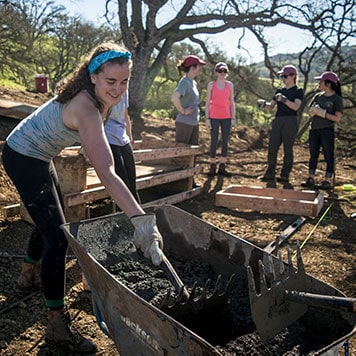
Matthew Mage
AHS prepares the next generation of trail stewards and advocates from local parks to Capitol Hill.

Ryan Nelson
Volunteer to help maintain trails in some of the nation’s most beautiful parks and wildernesses.

Kelly Snavely
AHS keeps you informed and gives you the tools to take action and make your voice heard!
- Odnoklassniki icon Odnoklassniki
- Facebook Messenger
- LiveJournal
Table of contents
10 Essentials You Should Bring On Every Day Hike

Some of the links on this page are affiliate links
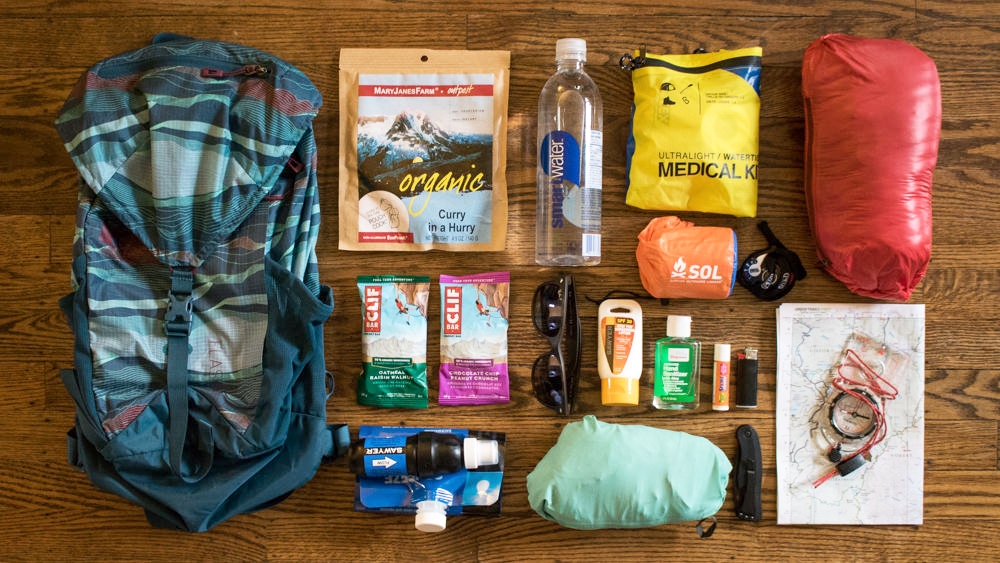
Whether you’re casually hiking to a favorite waterfall or bagging a difficult summit, carrying the proper equipment is absolutely critical. When things go wrong, as they often do, this can mean the difference between a minor inconvenience and a dire result. For first-timers and sage backcountry traveler alike, dialing in essential day hiking gear is an important part of any pre-trip preparations.
In the article below we discuss our opinions and preferences for some of the most critical day hiking equipment. We also take a ton of multi-day backpacking trips, so if you’re interested in checking out our top picks for tents, sleeping bags/pads, backpacks, and a whole lot more, have a look through the CleverHiker Backpacking Gear Guide .

10 Day Hiking Essentials
1. navigation.
A topo map and trusty compass are two navigation components that should accompany you on any trip into the backcountry. They’re reliable, lightweight, durable, and guaranteed to never run out of batteries. They can keep you from getting lost or help you find your way again, but they won’t do any good if you don’t know how to use them. So brush up on how to use a map and compass and how to keep from getting lost before heading out on your next trip. We also recommend keeping your maps in a clear, waterproof map sack to keep them dry and protected.
Though not technically a component of the 10 Essentials List, GPS devices and phone apps ( GAIA , TopoMaps , etc) are excellent tools for supplementing a map and compass. If you plan on using GPS regularly, you may want to carry a power bank in case your device runs out of juice. While GPS tools can be very convenient and useful on the trail, they should never fully replace your map and compass.
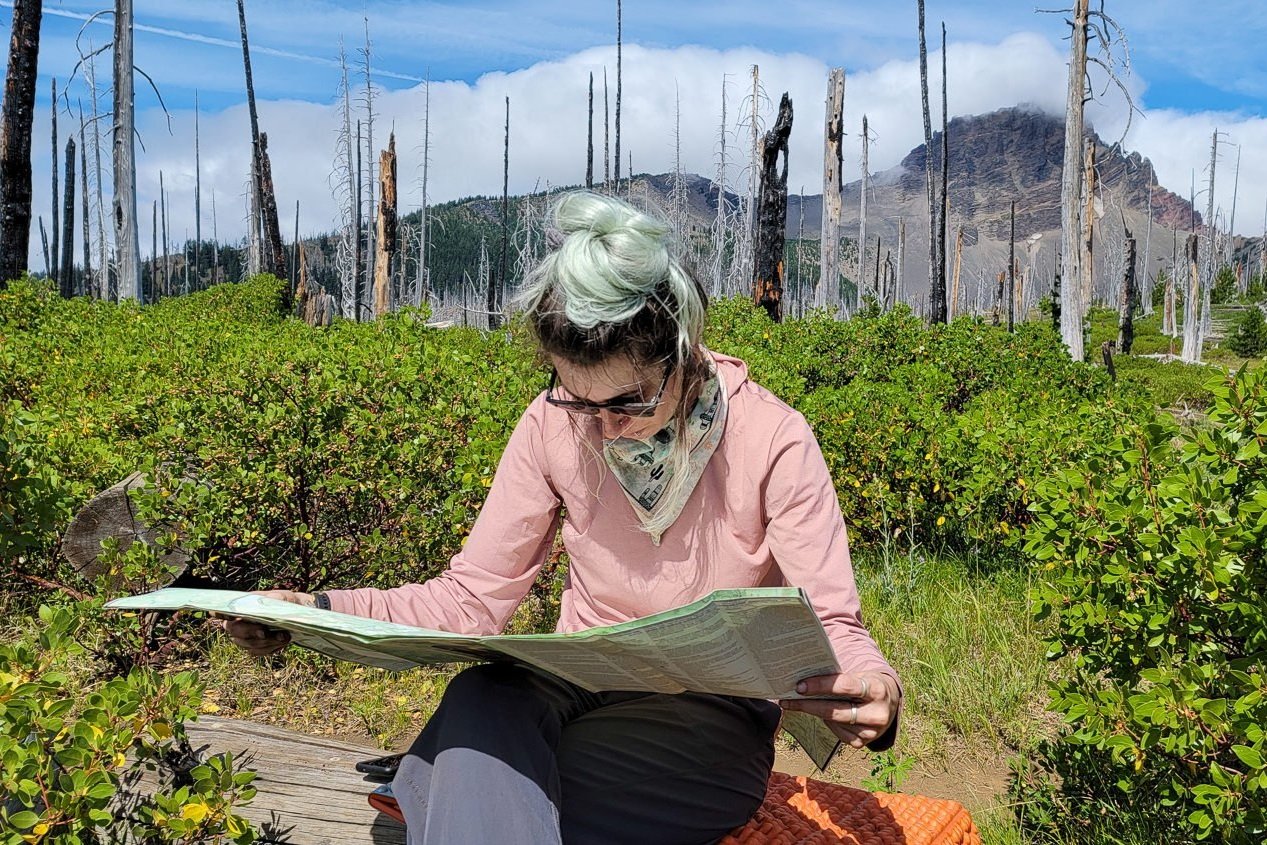
2. Sun Protection
Sun protection is an incredibly important part of any backcountry trip, even when the weather looks cloudy. Sunscreen , SPF lip balm , sunglasses (preferably polarized), a brimmed hat, and protective clothing should be considered essential on every hiking trip. Bad sunburns, bleeding cracked lips, and conditions like snow blindness can be debilitating if proper respect isn’t paid to the sun’s power.
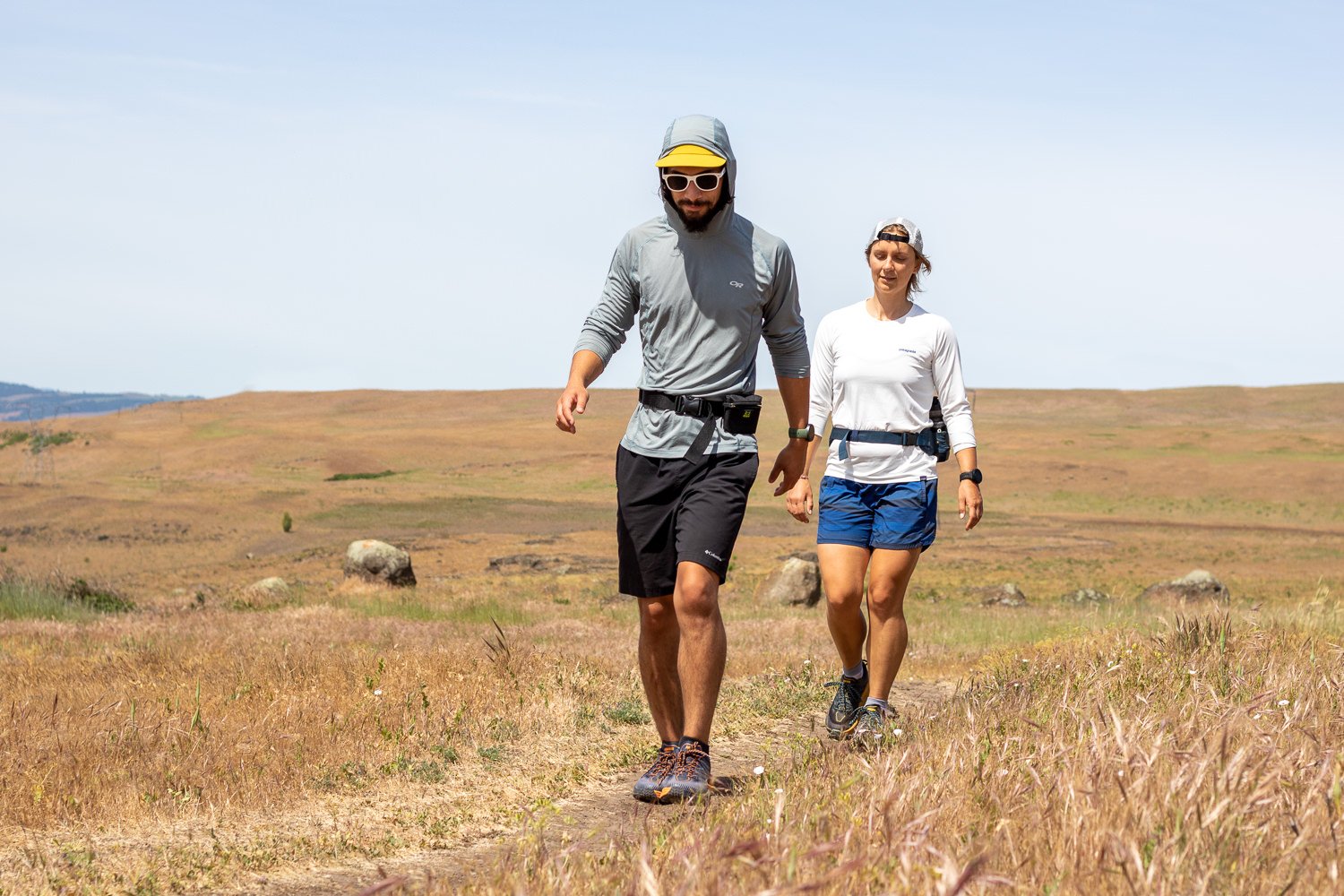
3. Insulation
Weather can change quickly on any wilderness trip, so we always recommend bringing an extra insulation clothing layer – even on warm weather trips. A simple layerable, quick dry clothing system will ensure you’re safe and warm when temps drop. For example, we pack a down hooded jacket and rain protection on almost every hiking trip, regardless of the forecast.
For your clothing system, you’ll want to avoid cotton products, which take a long time to dry and pull heat from your body. Instead, wear quick dry, synthetic layers and manage perspiration to keep your clothing from soaking with sweat. Wet clothing will quickly chill you to the bone as soon as you stop hiking. Check out our post on building a layering system for hiking for more tips.

4. Illumination
We bring a reliable headlamp on every hiking trip, even if we’re not planning on being out past dark. Sometimes a hike will take longer than expected, and getting lost in the dark can quickly compound a bad situation. If you ever do find yourself unexpectedly in the backcountry as daylight is fading, you’ll be happy to have a headlamp to help you find the way home. We usually hike with our phones as well, and their built-in flashlights serve as a good backup light source. Make sure to test your headlamp batteries prior to your hike as well.
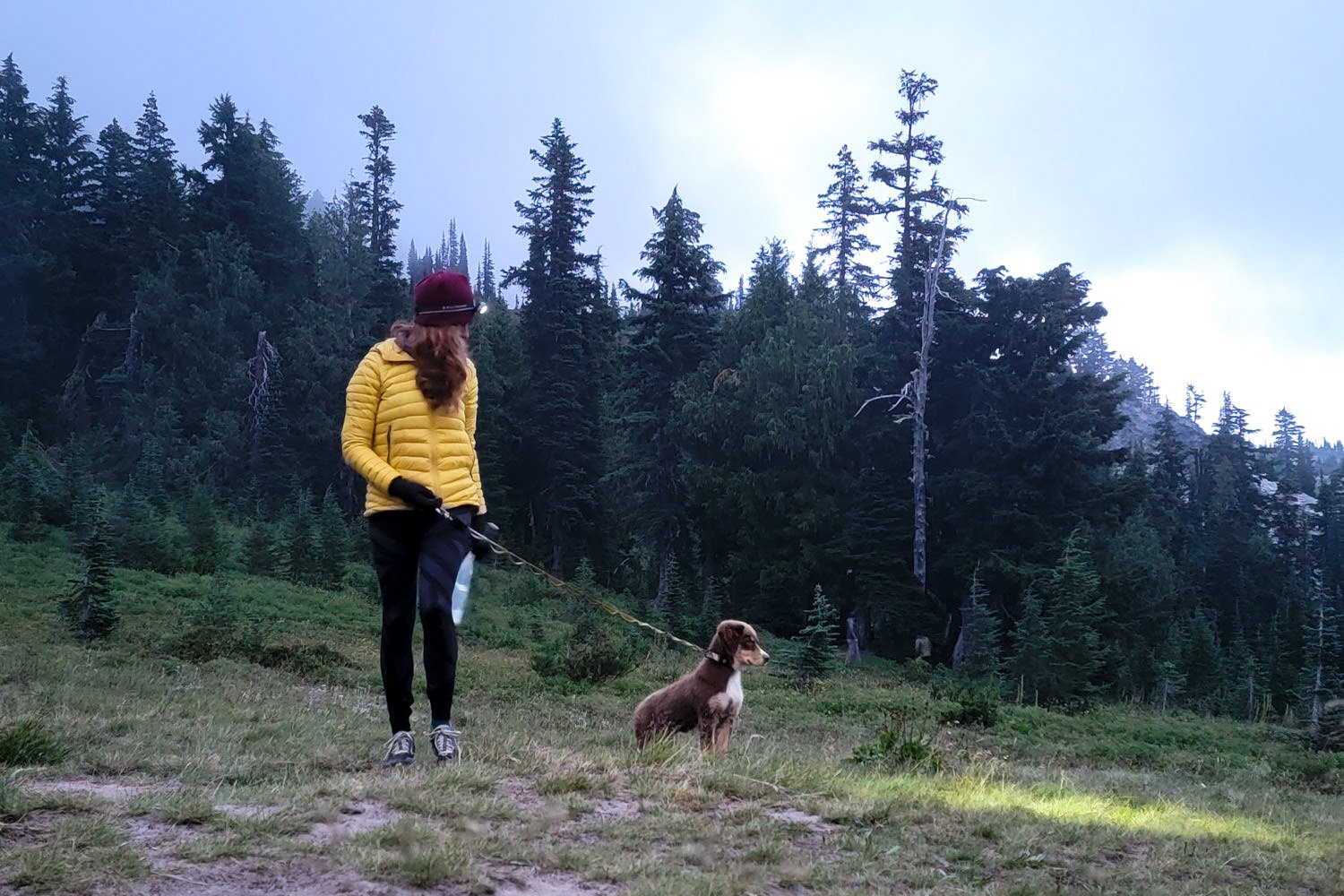
5. First Aid Supplies
When traveling into the backcountry, you’ll always want to carry a comprehensive first aid kit. Most backpackers buy a pre-packaged first aid kit , which will provide a lightweight and reliable setup for minor ailments. As you gain more trail experience you’ll be able to add or subtract from your first aid kit depending on your individual needs. And always make sure to replace anything you use as soon as you return home from your trek. Check out these videos we made to see what’s in our first aid kit and learn some critical wilderness emergency first aid skills .
Knowing how to build a fire in nasty weather can be a life saving backcountry skill. For a quick tutorial, check out this video we made on building fires in harsh conditions . To make a fire as easy as possible, we always bring two small Bic lighters (one is kept in a dry place as a backup), a few stormproof matches , and a few small firestarter cubes . We only use the fire starters when we really need them, but they make fire building much easier, especially in wet conditions.
If you’re looking to go more survivalist style, you can carry a small fire flint , but small lighters tend to work just fine for us. Additionally, some hikers make homemade fire starters , which are cheap and easy to make, but we usually prefer the convenience and ease of the store-bought stuff.
7. Repair Kit & Tools
We bring a lightweight multitool and basic repair equipment on every backcountry trip we take. A simple multi-tool knife, like the Swiss Army Classic , will come in handy in a variety of situations and we use ours all the time on the trail. Duct tape and Tenacious Tape are also excellent tools for repairing gear in the field, so we always hike with a small amount of both in our packs.
Tenacious Tape is great for fixing sleeping pad punctures, tent fabric tears, sleeping bag rips, puffy coat holes, and stuff like that. Duct tape is a great all-around repair tool that can be used for things like splinting a broken tent pole or repairing sunglasses, and it’s even good for preventing blisters when you feel a hot spot on your foot.
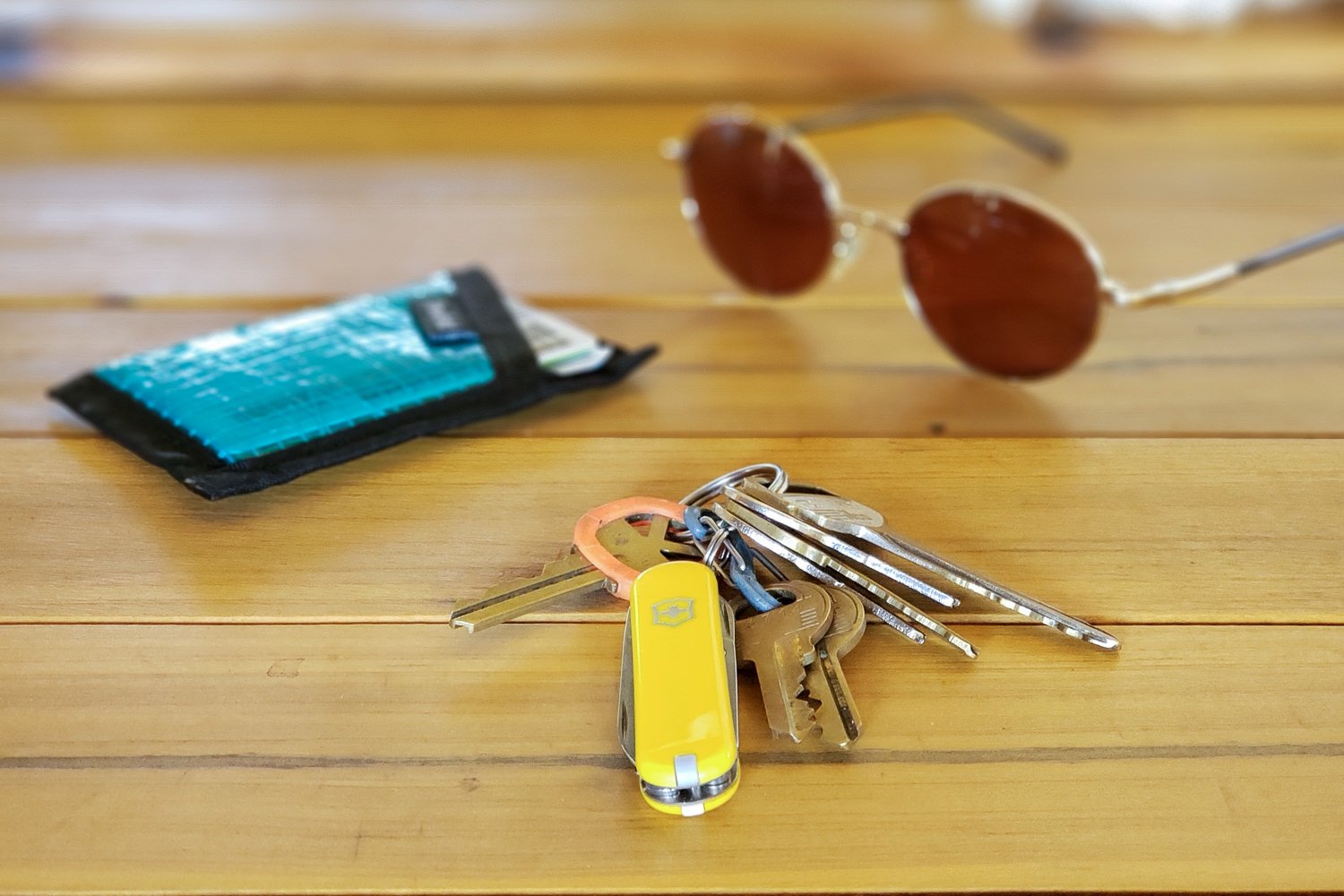
8. Nutrition
When preparing for a hike, you’ll want to make sure to bring along enough calories to sustain your energy for a long day of activity. We commonly snack on energy bars ( Larabar , Clif Bar , ProBar , Luna , and Kind bars tend to be our favorites), dried fruits, nuts, and jerky while we hike. For a more substantial lunch, we like to pack tortillas or bagels and make sandwiches with hard meats (like salami) and cheeses (like parmesan).
If you’re headed out on a long hike, we recommend bringing some extra calorically-dense food, just in case your trip takes longer than expected. Check out our Backpacking Food Guide for a bunch more information and recommendations on our favorite trail grub.
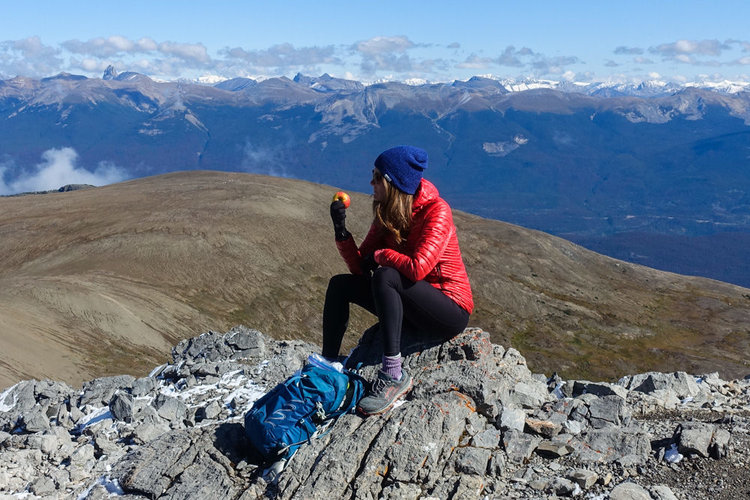
9. Hydration
It’s absolutely essential to stay well hydrated on the trail to keep your body’s critical systems running properly. Water helps cool you down when you’re hot, warm you up when you’re cold, and will keep your muscles and joints working properly to avoid injury while you hike.
Make sure to bring enough water for the duration of your hike, or bring a lightweight water filter and know where water sources will be located along your route. For a 24-hour water supply, one gallon (or 4 liters) is recommended per person. Make sure your water is easily accessible via water bottles or a hydration pack so you can drink freely while you hike.
Also, it’s important to remember that while water is critically important, it’s also one of the heaviest things you’ll carry on the trail. So carrying a bunch of extra water should be avoided as well.
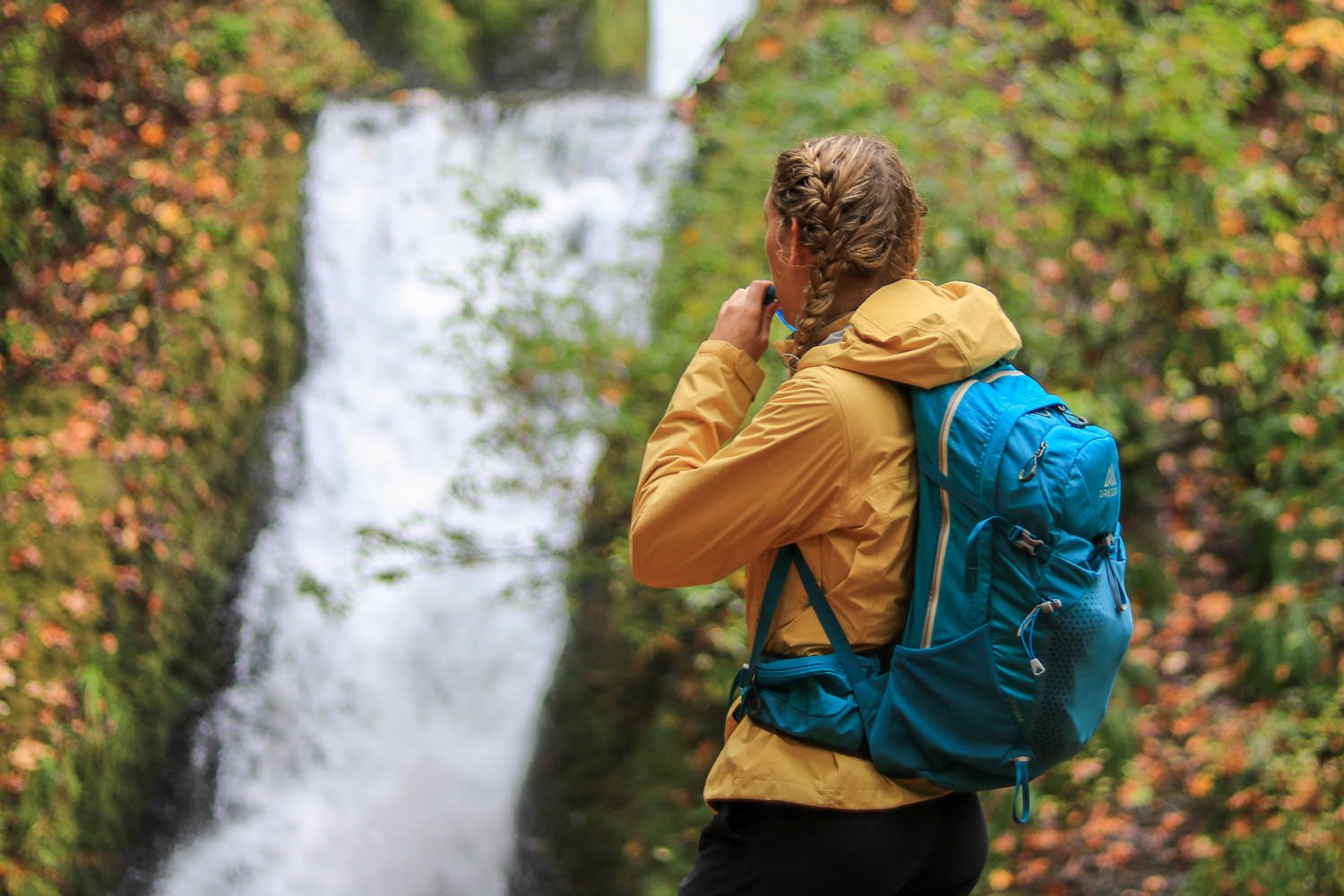
10. Emergency Shelter
If you’re on a multi-day backpacking trip, you’ll already have a shelter in your pack. But for day hiking trips, we recommended bringing a small, lightweight emergency shelter, just in case you unexpectedly have to spend a night outside. Emergency blankets and bivys (we prefer the bivy) are lightweight, affordable options that could potentially save your life if you’re ever in a really bad spot.
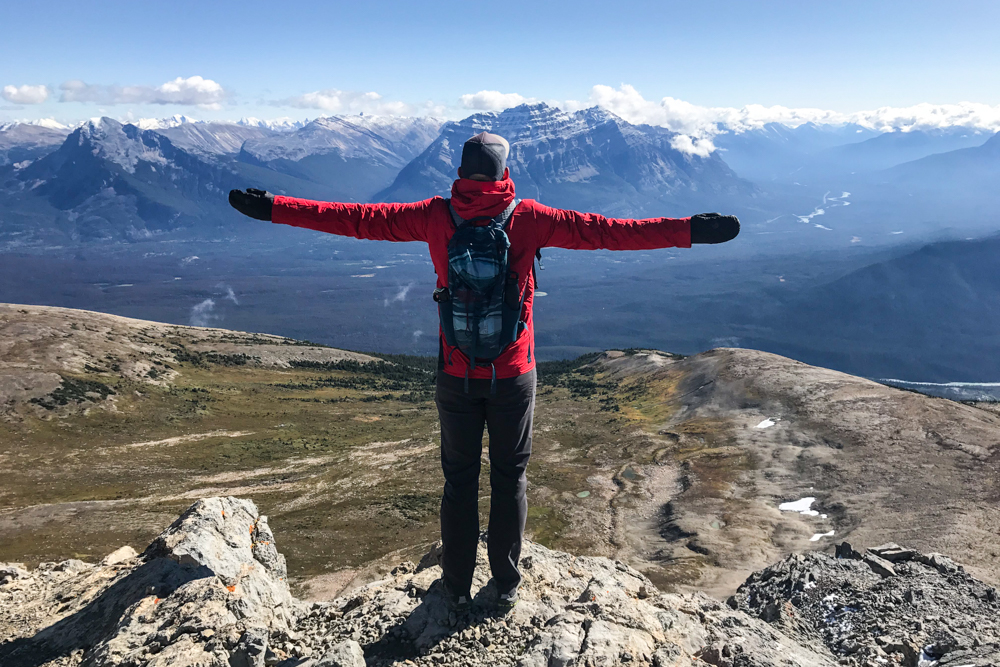
Beyond The Essentials
A well-fitting and comfortable daypack is essential for carrying the gear you’ll need in the backcountry. Choose a pack large enough to carry essential gear with convenient storage compartments and easy access to water bottles or a hydration bladder. To learn more about the most important daypack considerations and to see our top recommendations, check out our Best Hiking Daypacks List .
We wear trail running shoes on almost every spring, summer, and fall hiking trip we take. Trail runners are comfortable and lightweight, they dry quickly, help us avoid blisters, and provide excellent traction. “But don’t I need hiking boots for water protection, ankle support, and durability?” Not necessarily. If you’re in good shape, have strong ankles, and don’t have a history of nagging injuries, trail running shoes might be the best fit for you too. Check out our article: 5 Reasons To Ditch Your Hiking Boots to learn more.
For us, unless we’re planning to encounter winter snow conditions, trail runners are our hiking footwear of choice. And we haven’t made that decision in haste. We’ve literally hiked thousands of miles through some of the roughest terrain on the planet in trail runners and they fit our needs the best. For more information and some of our trail-tested recommendations, check out our Best Hiking Shoes list.
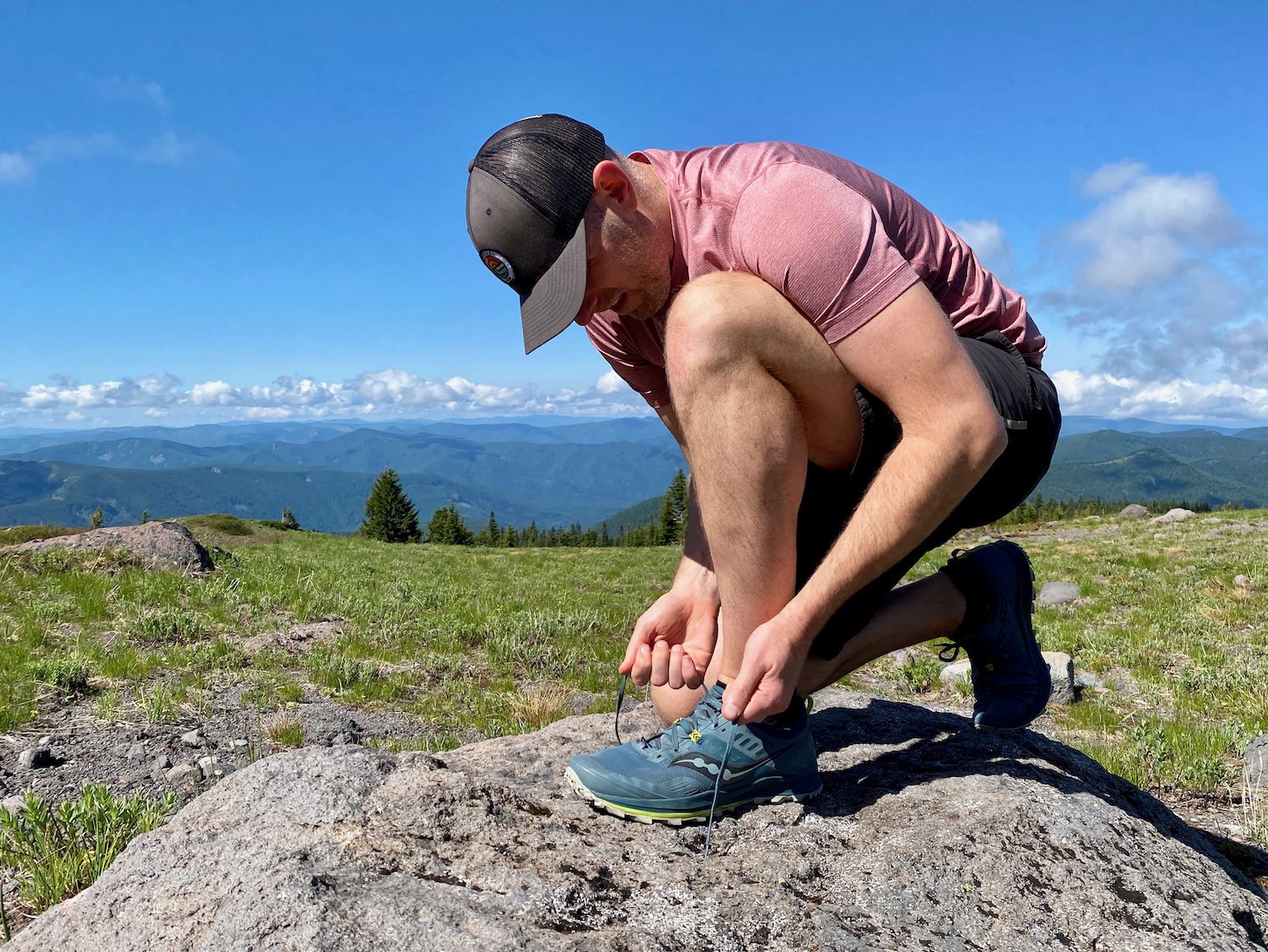
Toilet Paper & Trowel
Dirty toilet paper is the most common form of backcountry litter we find on trails throughout the world. A) Gross. B) Why? The answer is far too many backcountry travelers are not prepared to bury their waste properly. To dispose of human waste the right way, you need to dig a cathole at least 6-8 inches deep before you go, and if you don’t pack a trowel (we currently use this cheap and lightweight snow stake ), you won’t be able to dig a hole deep enough. It’s as simple as that. After doing your business, either bury your TP deep in the hole, or pack it out in a Ziploc bag. C’mon people. You love nature. That’s why you’re out there. So educate yourself on Leave No Trace principles and help us keep our wild spaces beautiful for generations to come. Check out our How to Poop in the Woods post for more tips.
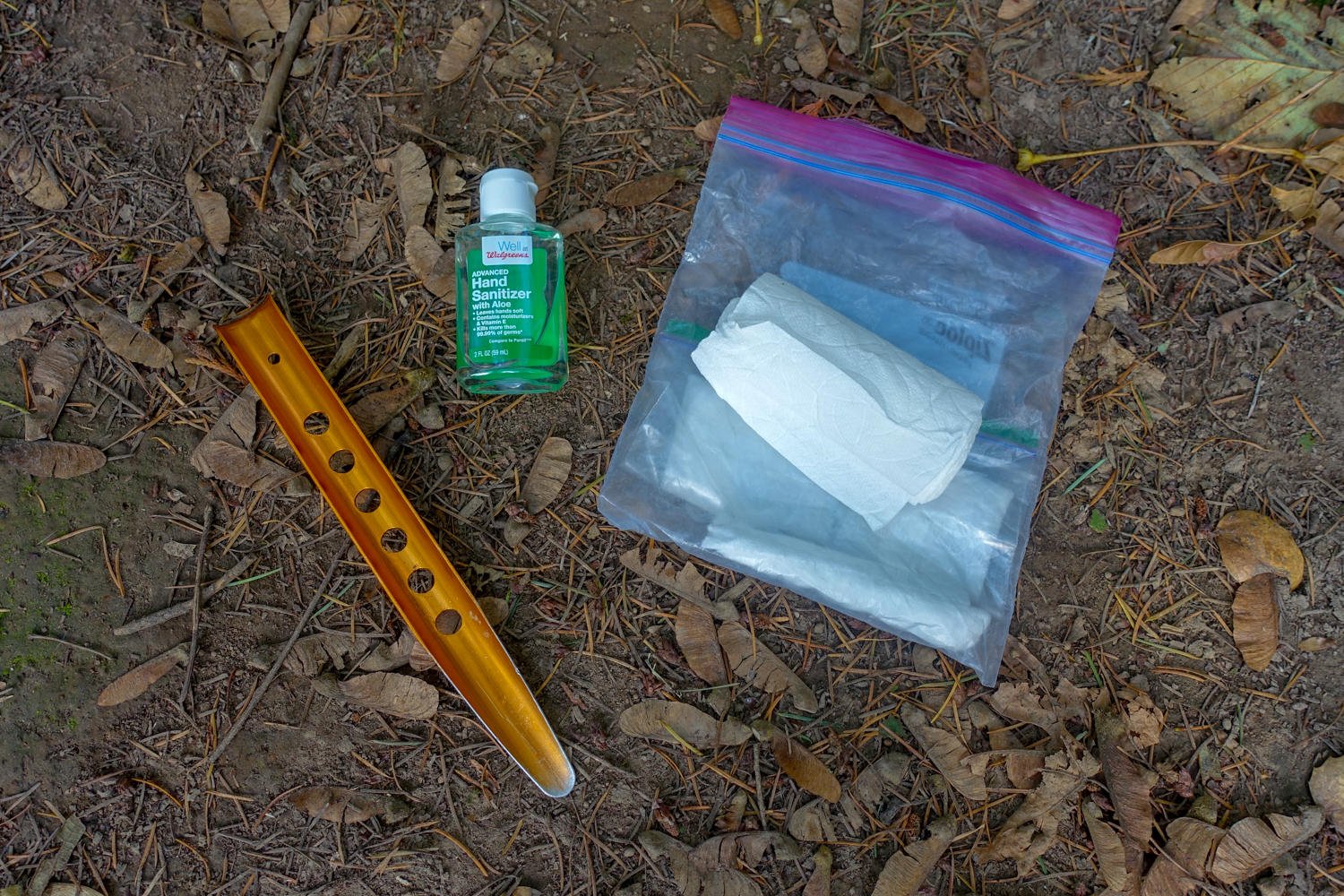
Hand Sanitizer
Dirty hands are the biggest contributor to illness in the backcountry. This happens because many hikers leave proper hygiene habits behind when they hit the trail. But this is an easy issue to avoid, so bring a small container of hand sanitizer and use it after bathroom breaks and before preparing meals.
Trekking Poles
Trekking poles shouldn’t be considered an essential item, but many hikers like them for a variety of reasons. The main benefit of trekking poles is reduced impact on knees and increased stability, which can be especially beneficial on long uphill or downhill sections of trail and when fording rivers. In addition, trekking poles can be used as tent pole supports for many ultralight shelters, which will help shave weight on long-distance trips. Take a look at our Pros and Cons of Hiking with Trekking Poles post, then head over to our Best Trekking Poles list to see our top recommendations.
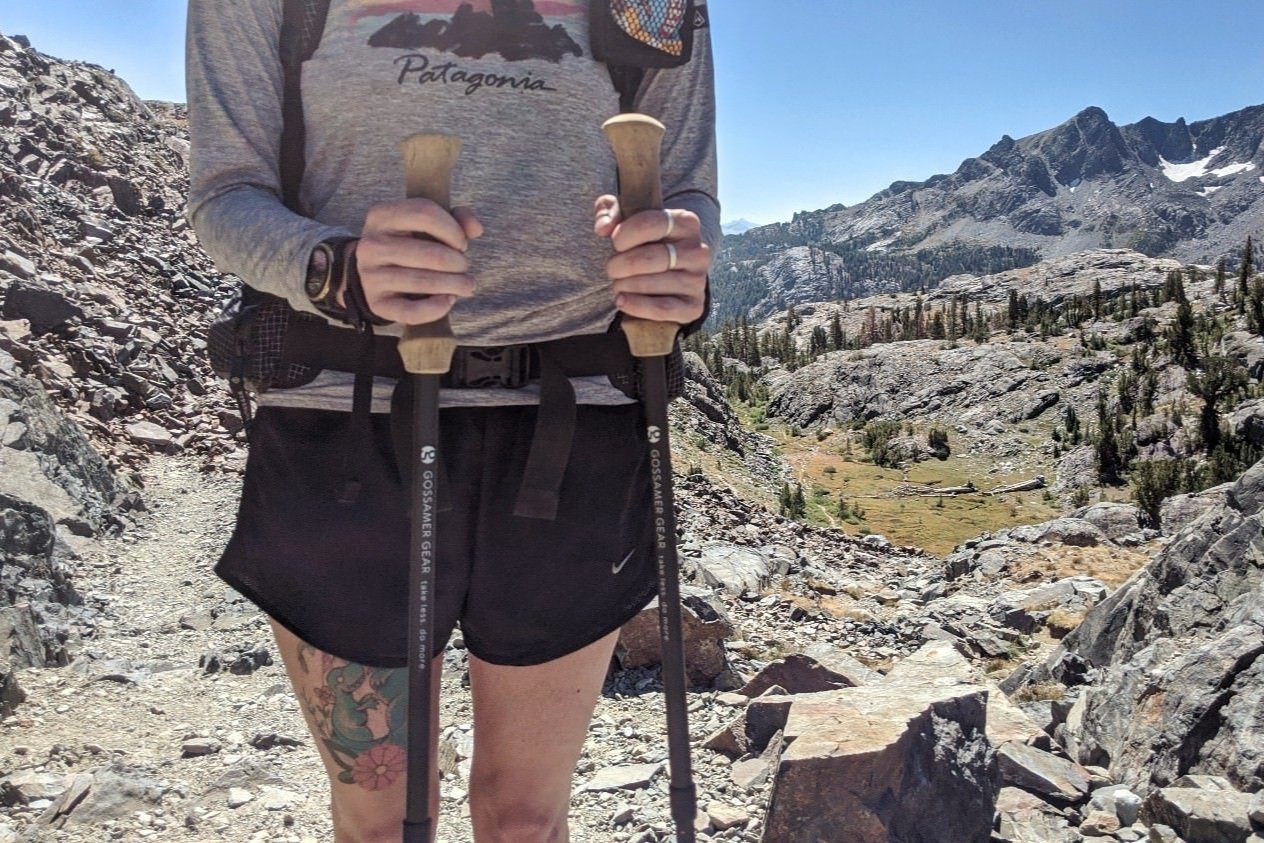
PLB (Personal Locator Beacon)
A personal locator beacon is a device that can be used to send a GPS emergency signal from the wilderness in areas without cell phone reception. If you’re ever deep in an isolated wilderness and you need emergency help, a PLB could save your life. The main downside with locator beacons is they tend to be pretty expensive and require a subscription, but their upsides are worth it in our opinion – especially when hiking in truly remote locations. We like the Garmin InReach Mini , which allows us to message with loved ones and can a search and rescue if necessary.

Why trust us?
We understand how tough it is to find trustworthy gear advice, and that’s one of the main reasons we built CleverHiker. We live for outdoor adventure, and we take these guides very seriously.
- Our recommendations are completely independent and based on hands-on experience.
- We test outdoor gear for a living – we’ve logged over 20,000 trail miles and 1,000 nights in the wilderness.
- Our team has thru-hiked some of the most iconic long trails, including the Continental Divide Trail, Pacific Crest Trail, Appalachian Trail, Colorado Trail, Long Trail, Oregon Coast Trail, Arizona Trail, Pinhoti Trail, Superior Hiking Trail, as well as extensive peak bagging, and international treks.
- We field test every product we recommend, which is sadly not the norm.
- We travel to industry trade shows to stay up-to-date on product innovations.
- We continuously update our guides throughout the year and when new products launch.
- We treat recommendations to our readers as if they were for our family and friends.
- We’re lifelong learners and we’re always open to feedback. If you think we’ve missed a worthy product or got something wrong, we’d love to know about it.
Related Content
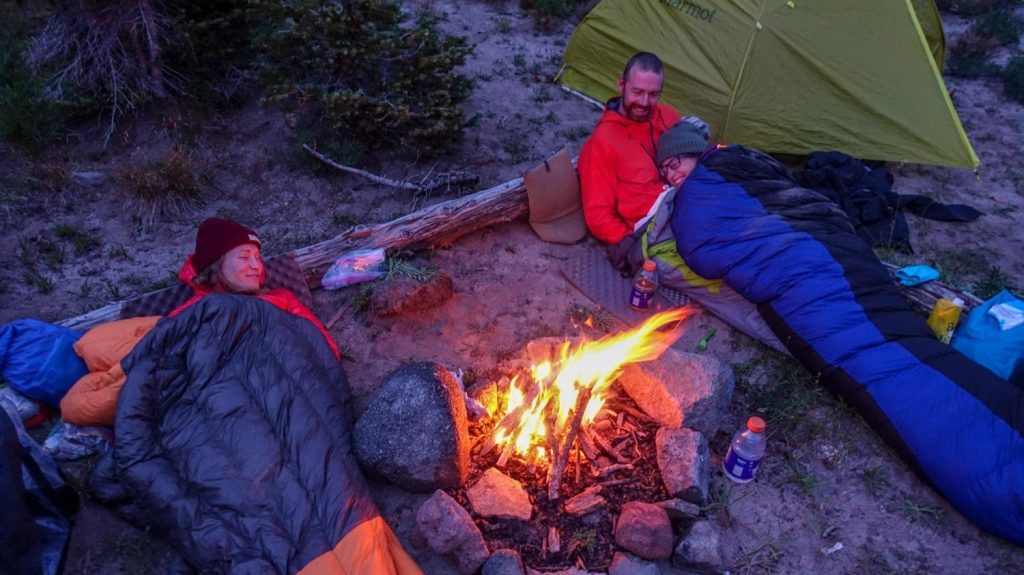
10 Campfire Safety Tips
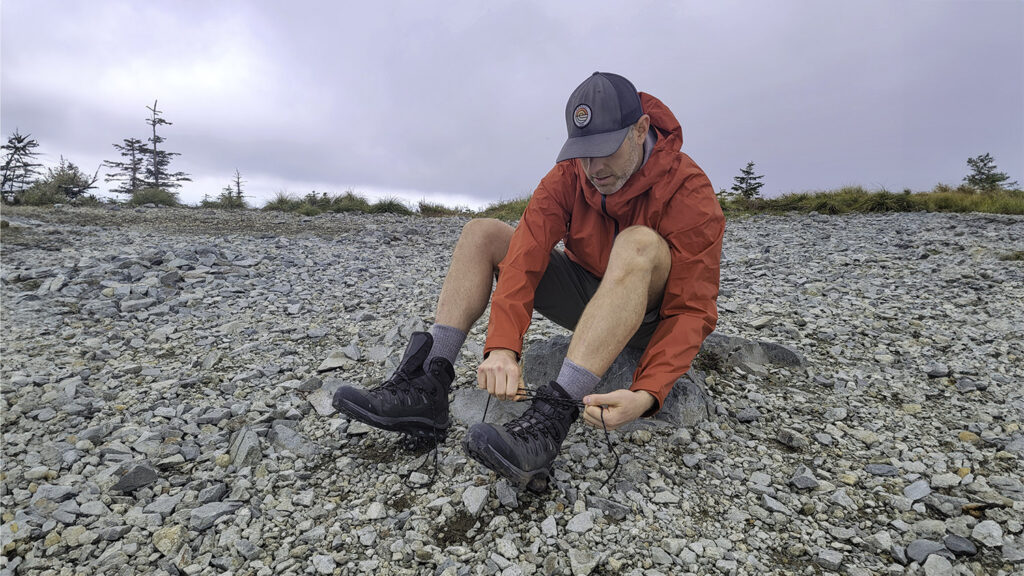
How to Lace Hiking Boots & Shoes
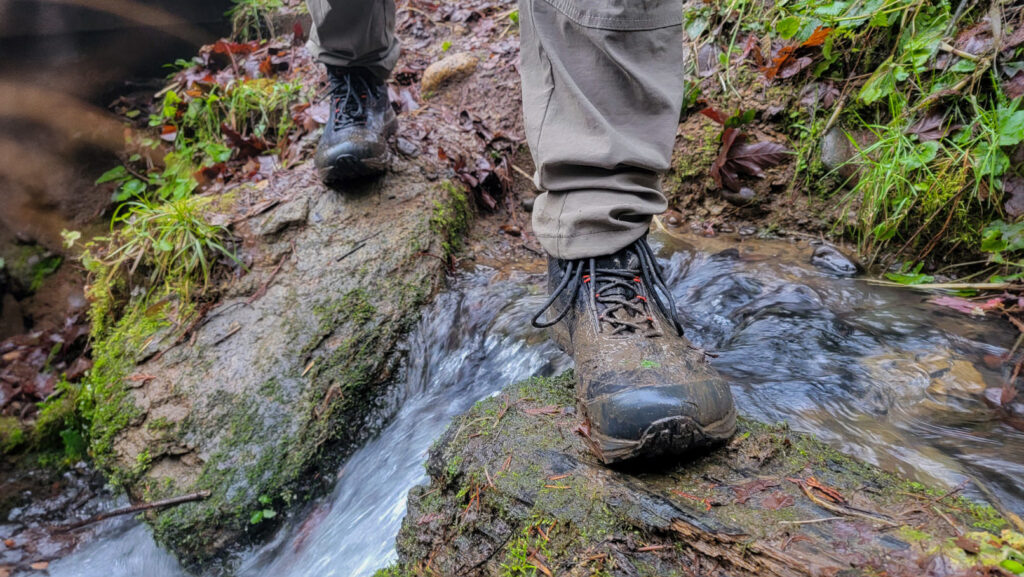
How to Clean Hiking Shoes & Boots
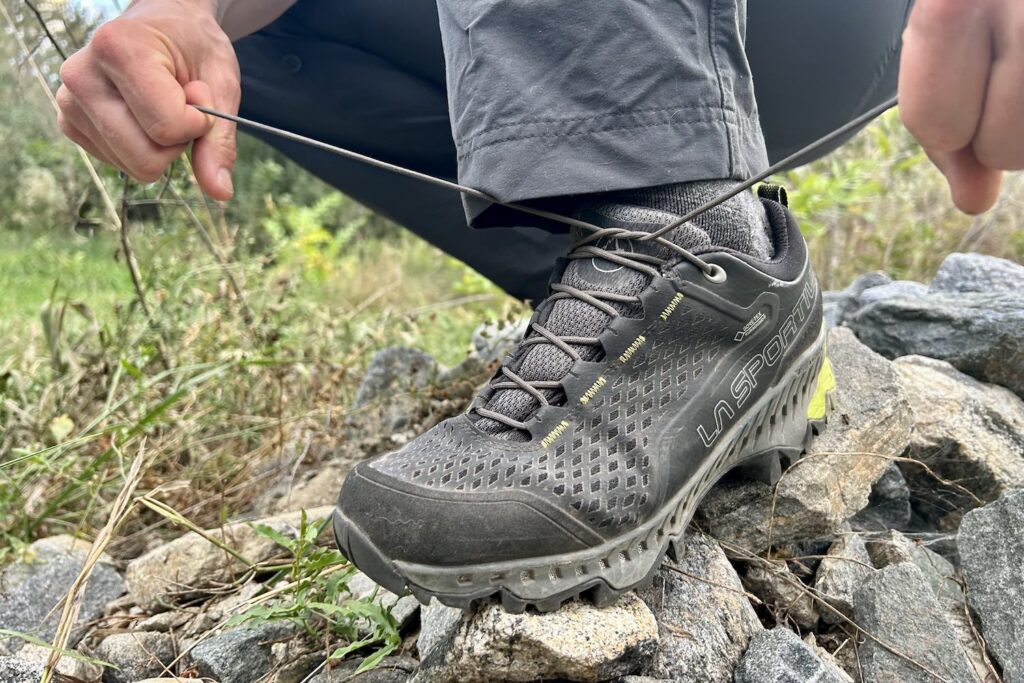
La Sportiva Spire GTX Hiking Shoes Review
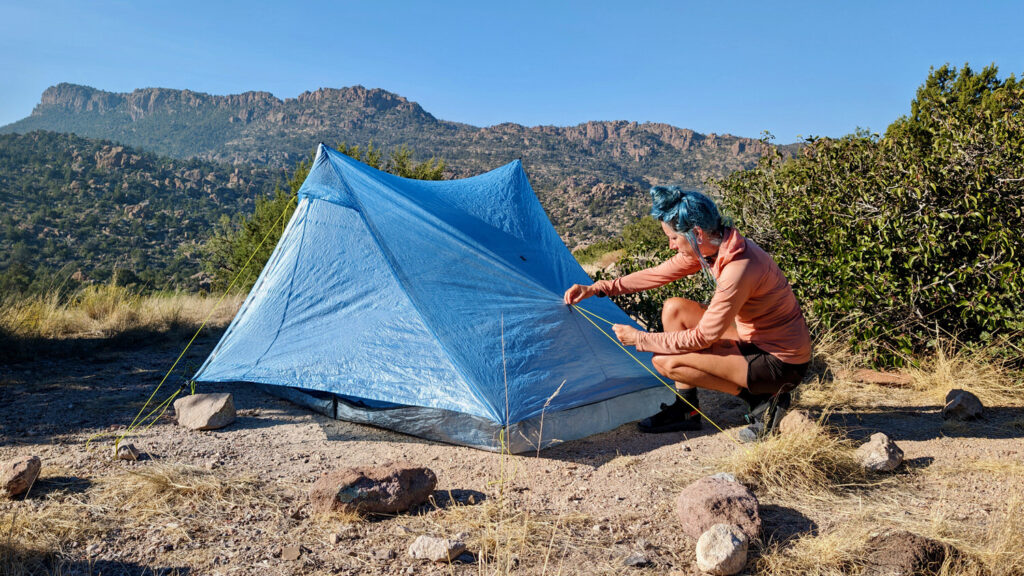
Zpacks Duplex Zip Tent Review
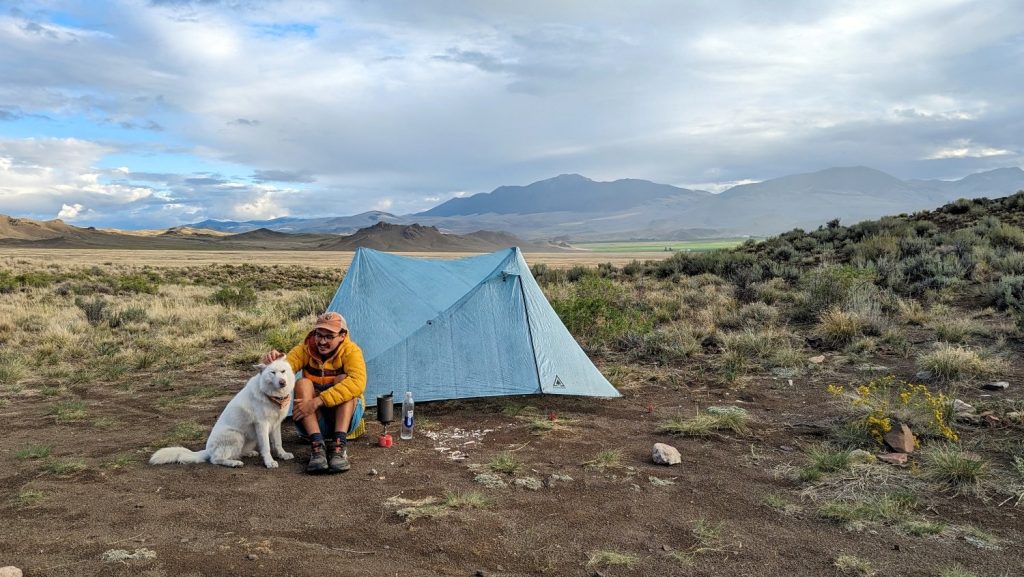
Durston X-Mid Pro 2 Tent Review
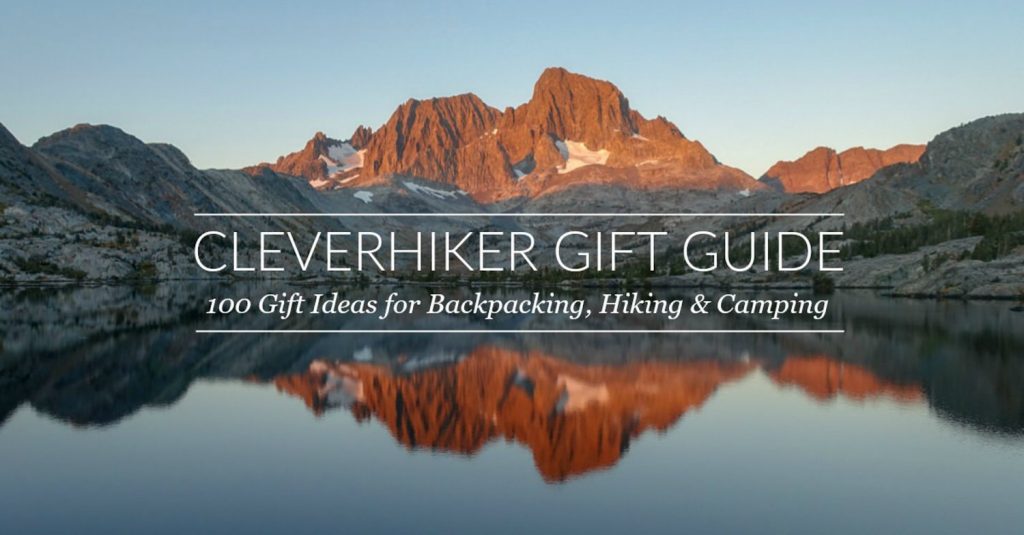
100 Best Gifts For Hikers, Backpackers & Campers 2024
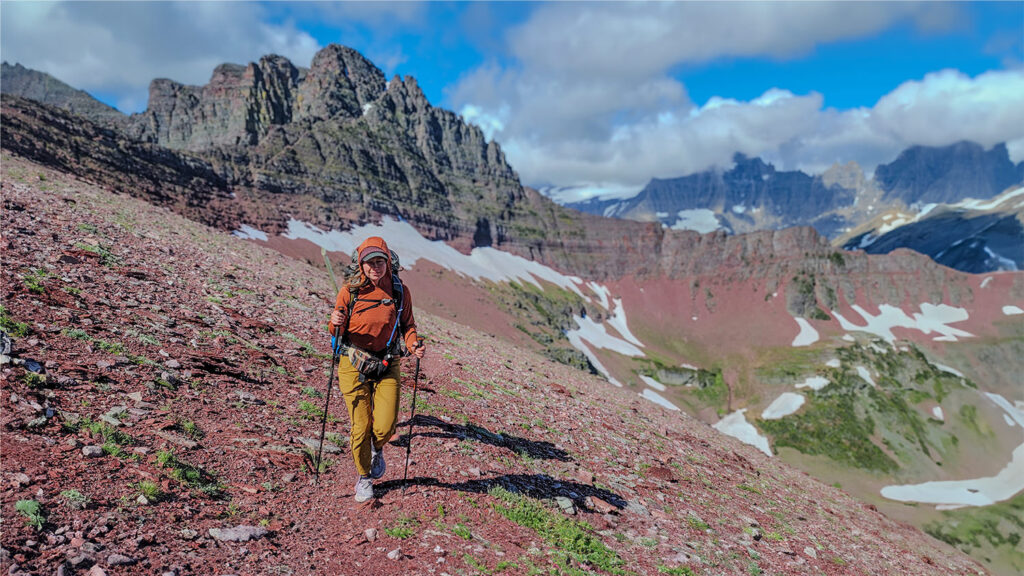
7 Best Trekking Poles of 2024
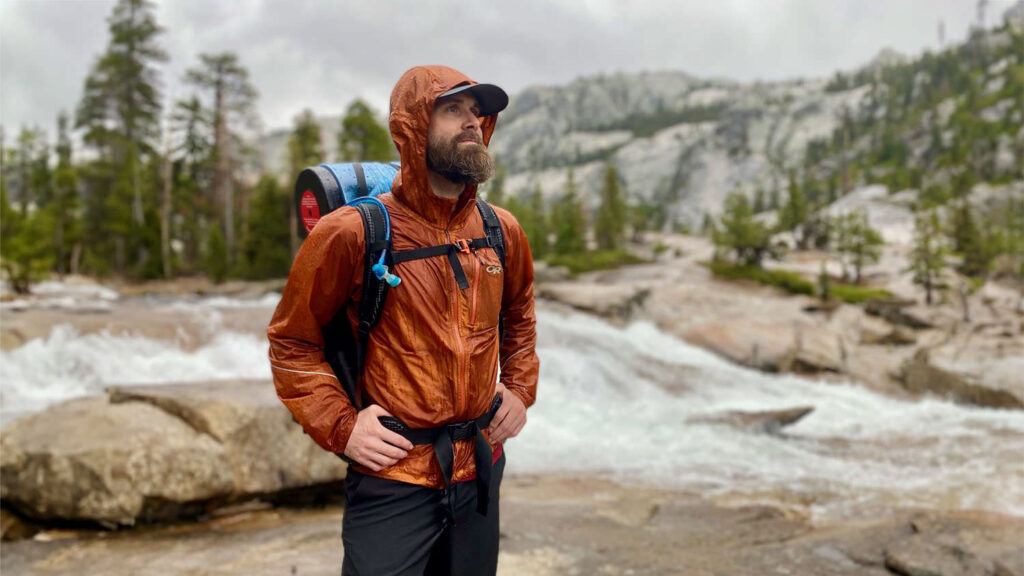
10 Best Rain Jackets of 2024
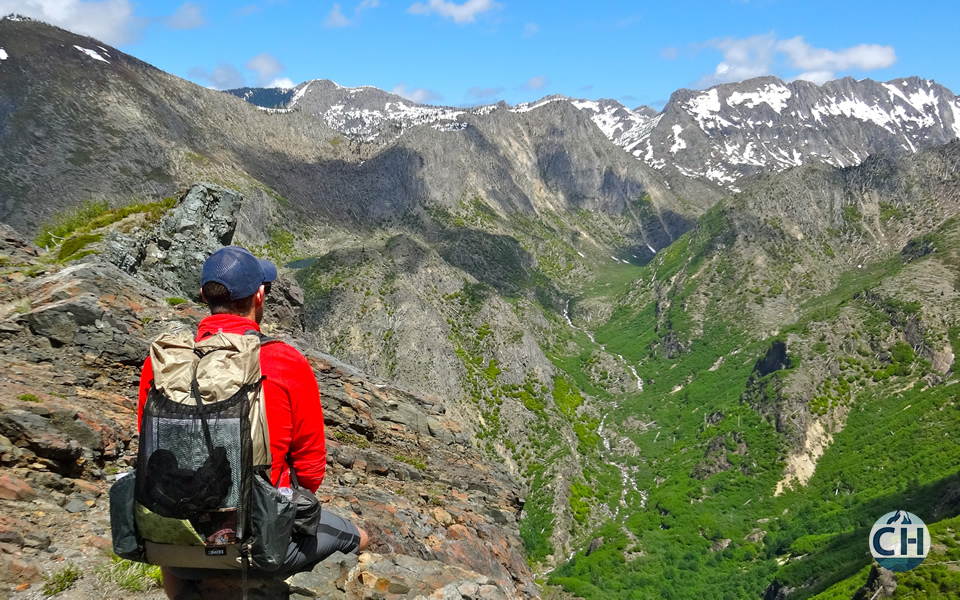
ZPacks Arc Blast Backpack Review
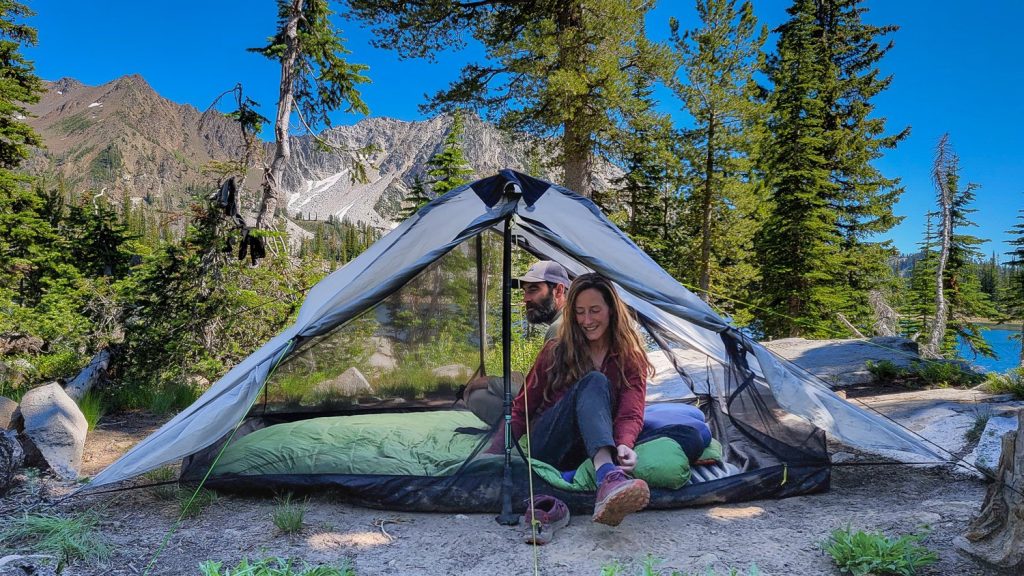
Six Moon Designs Lunar Duo Tent Review
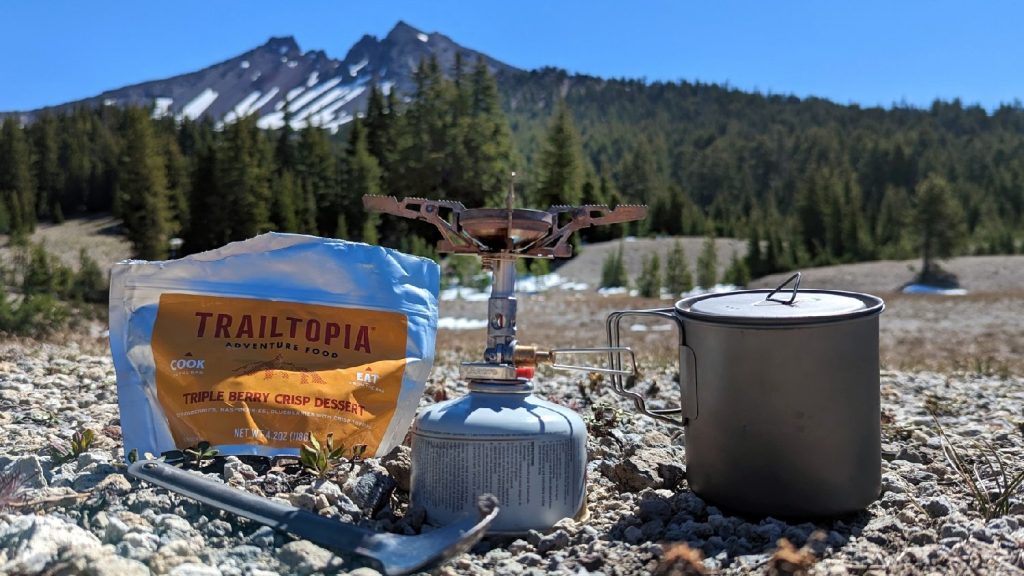
SOTO Windmaster Backpacking Stove Review
Get the best content from cleverhiker & around the backpacking world.
Social media is great, but our bi-weekly newsletter is a much better way to stay in the know.
Sign up to get our curated emails with the best content from CleverHiker and around the backpacking world. You’ll be turned on to new videos, trip reports, gear reviews, inspiring outdoor stories and much more. So get in the mix!
- Bear's Books
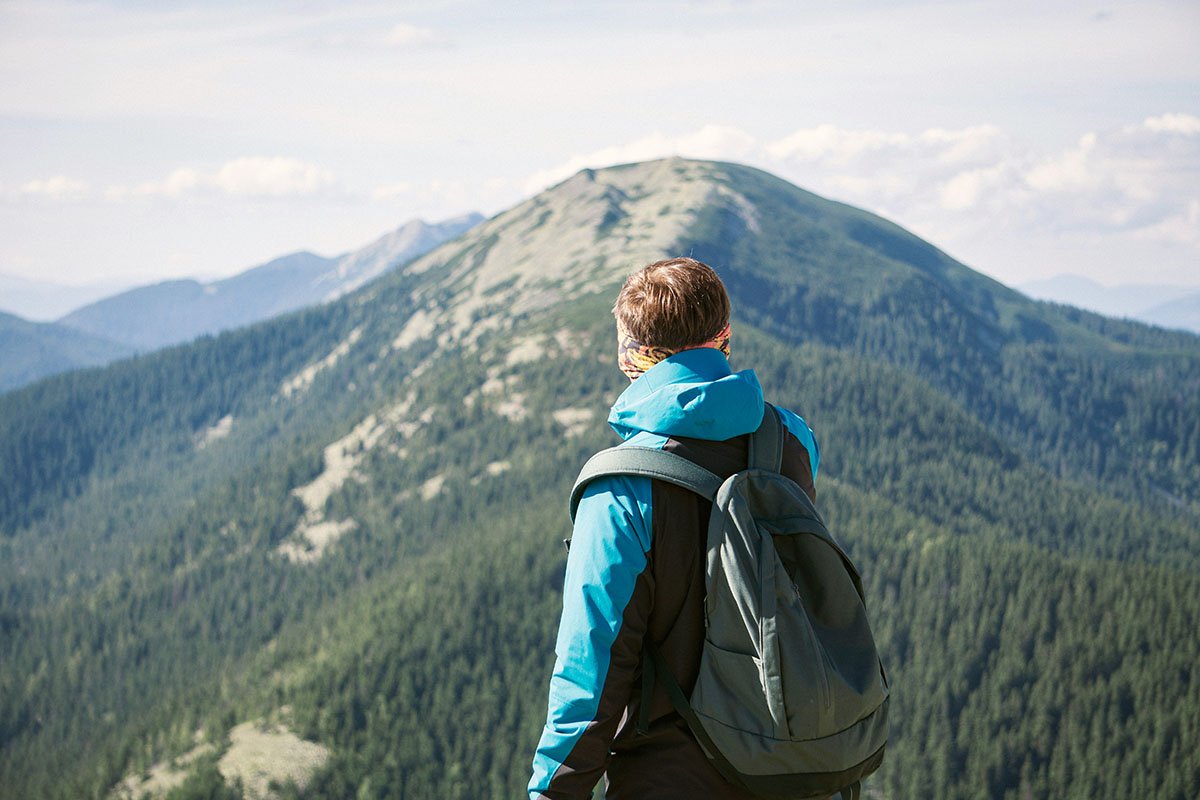
Day Hiking Essentials: How to Prepare and What to Bring on Your Outdoor Adventures
By Bethanie Hestermann
Nearly 60 million Americans went hiking at least once in 2022 , and that’s up from 34.5 million a decade earlier. Day hiking is one of the most popular outdoor activities, in part because it doesn’t require an immense amount of training, skill, or gear.
It’s also frequently a free to low-cost way to exercise, see new places, and experience the great outdoors.
Hiking can be as easy as a leisurely walk along a well-maintained path or as difficult as a steep ascent up a massive peak. It’s an excellent sport to grow into and enjoy for a lifetime, even as your fitness level waxes and wanes alongside the demands of life.
Day hiking may be an easy outdoor activity for beginners, but that doesn’t mean you don’t need to be prepared with the proper knowledge and gear. Hiking can be dangerous if you’re not adequately prepared for a trek’s weather, terrain, and physical demands.
Whether you’re just starting or you’re an experienced hiker, you shouldn’t hit the trail without the hiking essentials. Here’s your guide to preparing for and gearing up for a day hike—whether it’s a tame walk in nature or a trek up Yosemite’s Half Dome .
Are you ready to level up your day-hiking game?
Table of Contents
Basic logistics: how to plan for a day hike, how to layer, hiking footwear, tips for eating and drinking enough on a day hike, slips and falls, getting lost, dehydration, extreme weather, bites, stings, and other wildlife encounters, navigation tools, sun protection, extra clothing, light source, fire supplies, tools and repair kit, other day hiking essentials, day-hike packing and organization tips, you’re now prepped and ready to go day hiking.
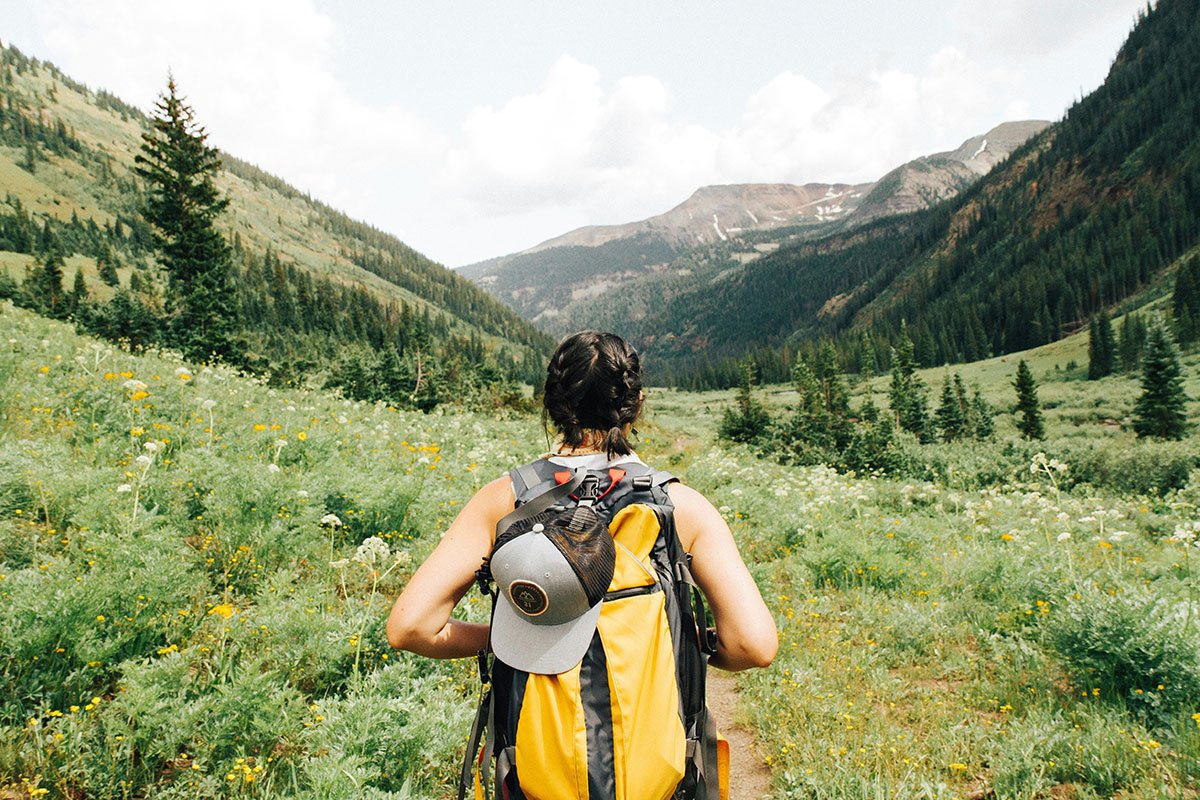
Exploring the unknown is fun, but knowing where you’re going is the best practice when you’re hiking. Keep these tips in mind:
- As you’re planning a day hike, research the trail in advance. Use AllTrails or a similar platform to figure out the trail’s length and difficulty level (as rated by others who have gone before you).
- Pay attention to elevation gains and the type(s) of terrain you’ll be hiking through. Do your best to find out in advance if there are water crossings, tight switchbacks, uneven terrain, or areas with steep drop-offs.
- Research if there are any other noteworthy obstacles you may need to mentally or physically prepare for. Will you be hiking on sand or dirt? Loose rock or scree? Knowing all of this in advance will dictate, to some degree, what you bring hiking.
- Check what the weather will be like where you’re going on the day that you’ll be there . This way, if necessary, you can plan by adjusting your gear for inclement weather.
Day hikes, by definition, are hikes that you can complete in one day (meaning, you’re not sleeping overnight on the trail like you would on a backpacking trip or thru-hiking trip).
That said, some day hikes turn into overnight trips when people run into trouble, so it’s best to bring along some emergency items as part of your essential gear. We’ll cover day-hiking essential gear below, but first, here’s what to wear.
What to Wear on a Day Hike
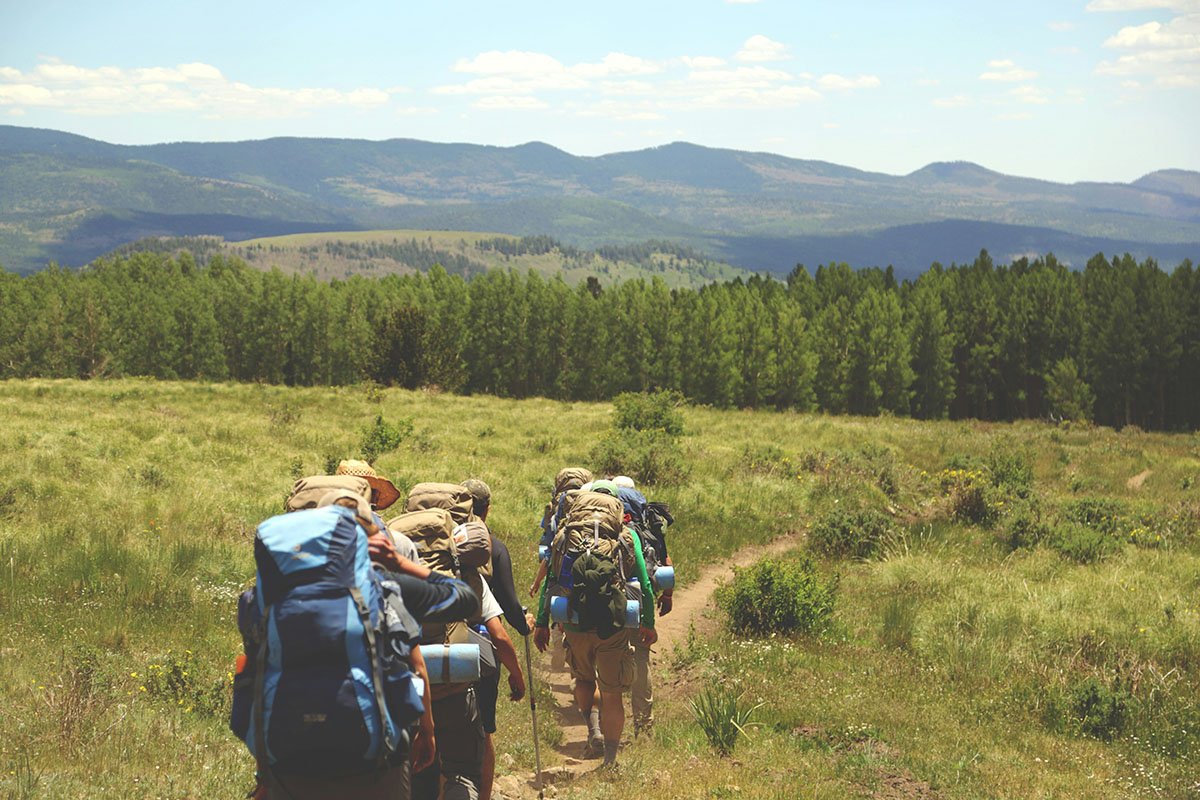
The clothes on your back are pretty important in terms of hiking gear. Get it right, and you won’t even notice what you’re wearing. Get it wrong, though, and you’ll be miserable.
First and foremost, what you wear on a day hike will depend very much on the season and the location of your hike. You wouldn’t wear the same outfit on a summer hike in Joshua Tree National Park that you’d wear on a spring hike in Rocky Mountain National Park , after all.
If the temperature is warm and sunny, wear moisture-wicking clothing, including hiking shirts , hiking pants , hiking shorts , and a hiking hat . Look for clothing that is lightweight and offers sun protection in the form of both coverage and, ideally, a UPF 30 rating or higher.
If you’re hiking in an area where the temperature dips at dawn and dusk, you’ll want to be prepared for that. Throw a pair of lightweight hiking pants in your pack for times when the sun’s not up.
When it’s a shoulder season (spring or fall), what you wear hiking will be a little more complicated. Layers are your friend in complicated weather, and layering your clothing is one of experienced hikers’ top hiking tips for beginners.
In general, hiking layers should include:
- A moisture-wicking base layer
- An insulating layer
- A waterproof and windproof outer layer (like a rain jacket)
If you’re hiking in the winter in a warmer climate, you may be able to wear short sleeves and a pair of lightweight hiking pants. Bring extra layers for dawn and dusk, and don’t forget proper sun protection in the form of a hat or UPF 30+ rated clothing, even in the winter.
If you’re hiking in the winter in a cold climate, you’re going to need to wear all the layers mentioned above on your top half, plus winter hiking pants on your bottom half.
You’ll also need some extras, like a warm hat, gloves, and warm hiking socks. Consider materials like merino wool for your insulating layer. Wool socks will be a nice addition, too.
Last, but certainly not least, your hiking-essentials wardrobe requires hiking shoes. Invest in some sturdy and comfortable hiking boots or trail-running shoes.
Historically, hiking boots were required hiking gear, but many people today prefer to hike in trail runners since lightweight hiking shoes tend to be comfortable over long distances.
Whether you choose boots with ankle support or lightweight shoes like trail runners for your day hike will depend on personal preference, the amount of time you plan to spend on the trail, the terrain you’ll be crossing, and the weather you’ll encounter.
Good hiking socks are also essential. Moisture-wicking socks are your best bet to keep your feet dry as you exercise. Don’t underestimate a good pair of socks and shoes as you build your outdoor gear. Happy hikers have happy feet.
How to Stay Hydrated and Nourished on Day Hikes
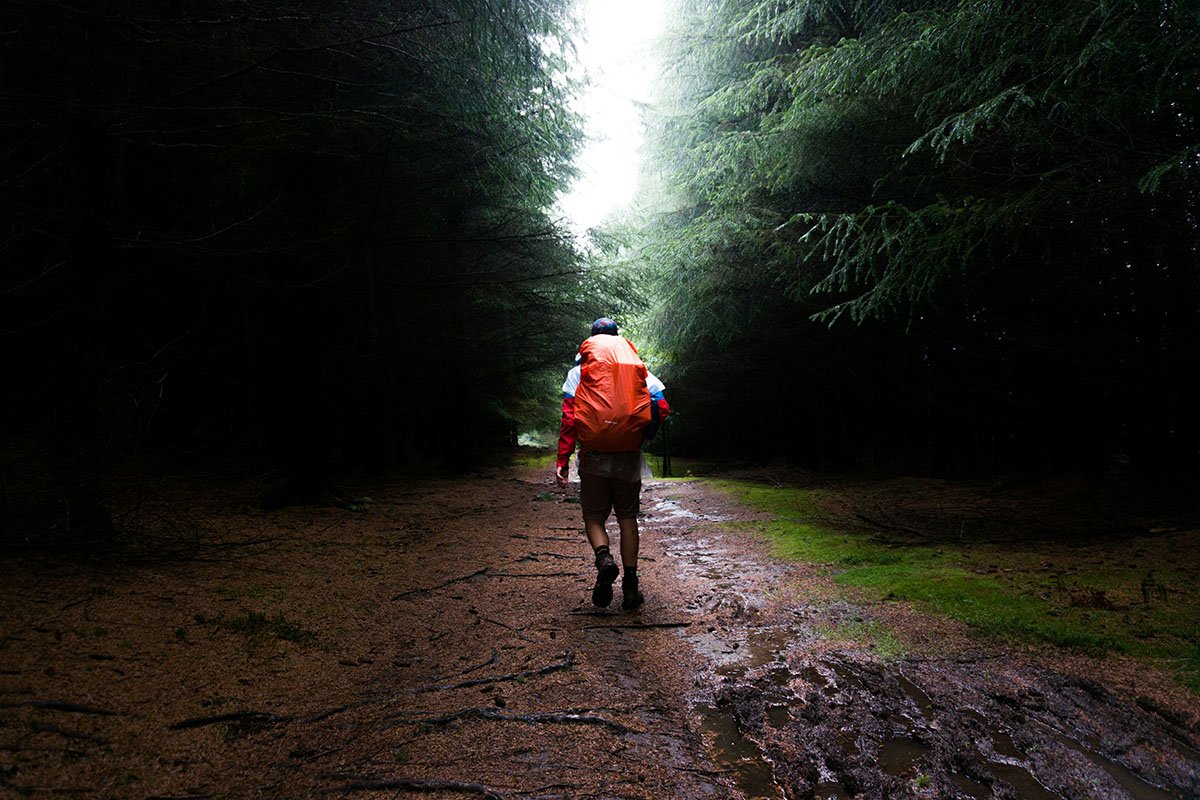
Not having enough food and water while day hiking is a common mistake many hikers make. As a general rule, your hiking gear should facilitate and include 1-2 liters of water per person for every two hours of hiking.
Keep in mind that when it’s hot outside, you will go through much more water. When it’s warmer outside, you will want to make sure you bring more water with you.
The best way to stay hydrated and well-nourished on a day hike is to prepare in advance by bringing enough food and more than enough water along with you on the day.
Having the proper gear will make a world of difference. Invest in an appropriately sized water bottle that clips into a hip belt or a hydration pack with a water bladder to carry your water.
Your day hike packing list should also include food—for instance, nutrient-dense trail snacks like bars and nuts that deliver a mix of fats, proteins, and carbohydrates.
Each person’s caloric intake while exercising outdoors is going to be different, so the best general advice is to figure out your calorie needs in advance, and then plan to bring extra food—even more than you think you’ll need.
Note: Day hikes are not the appropriate time to skimp on calories. Consult with a medical professional before you hit the trails if you have any questions or concerns about your specific needs.
Rather than chugging a bunch of water on infrequent rest breaks, train yourself to take sips frequently as you hike. It’s the same story with food—choose small snacks on the go over a big feast when you reach the summit halfway through your day hike.
As you sweat, you lose electrolytes, so the best way to maintain your energy level during a hike is to replenish those electrolytes with trail snacks or a sports drink that will help you regain the electrolytes that you have lost on the trail.
If you need help remembering to snack or sip your water, consider setting a timer that repeatedly goes off on an interval. Keep a Ziploc bag full of salted cashews or an open Clif bar in your pocket so it’s easy to access.
The best practice is to eat and drink before you feel hungry or thirsty while hiking.
If you’re hiking at altitude, be aware that you may need to drink more water than usual. And if you’re hiking in cold weather, it’s especially important to keep yourself accountable and hydrated, because you might not feel as thirsty as you do when it’s warm.
Consider bringing a warm liquid to sip on instead of ice-cold water.
Common Dangers While Day Hiking
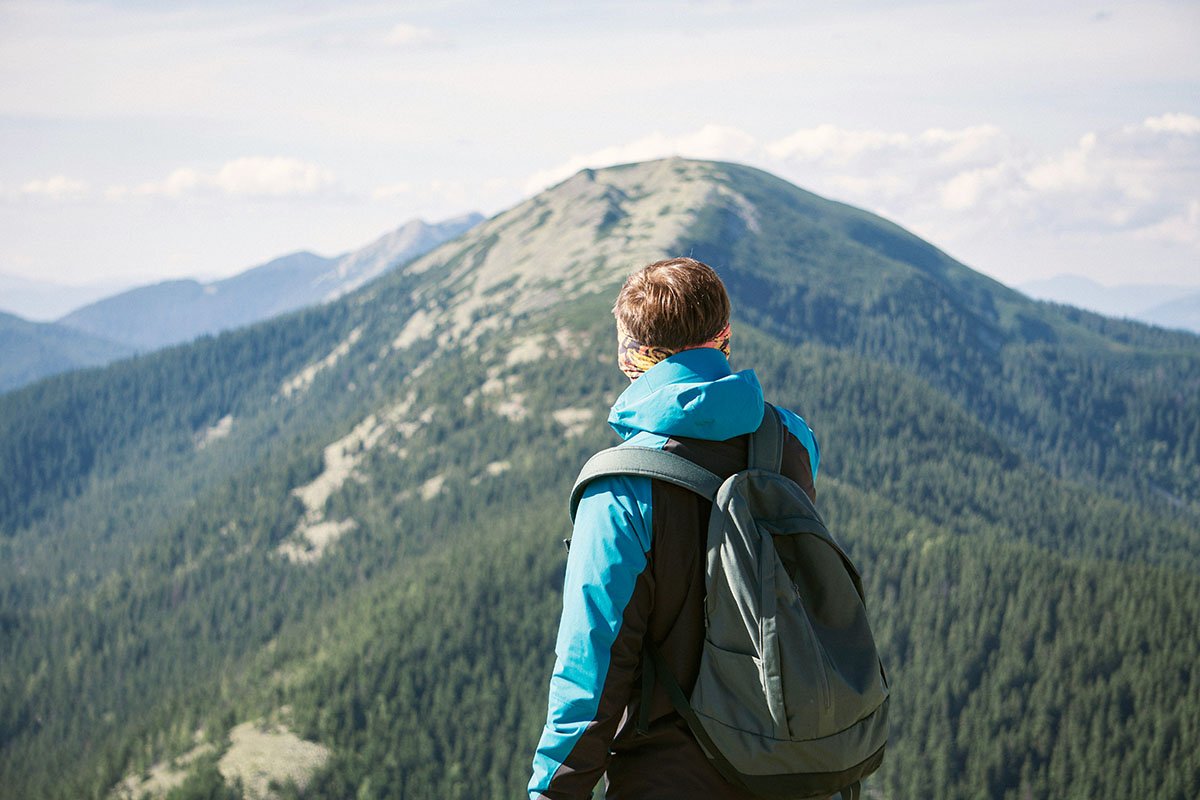
When you’re hiking, there’s the chance you could trip, slip, or fall. Sprained ankles are a common hiking injury as hikers travel across uneven terrain or go downhill on loose rocks. Wet or slick surfaces due to rain, ice, or snow can also create hazards on the trail.
The best way to prevent these injuries is to be diligent. Keep an eye on the trail at all times and never go too close to an edge, even for that selfie you’re dying to take and share.
Having the proper footwear for the trail conditions will also help you stay upright and in control. Consider adding trekking poles to your gear, if you need some extra stability.
We’ve all been there—you had a good handle on where you were when you started hiking, but now it’s dark, and you can’t remember which way you came from. This situation is really common for day hikers trying to get back to their cars, especially if they’ve started to lose daylight. Panic starts to set in.
Prepare for this scenario by using our day-hiking essentials list below. When you have items on hand such as a paper map, a personal locator beacon, and/or a cell phone with a downloaded map, you don’t need to panic when you feel a little turned around.
Remember, you may lose cell service while day hiking, so you cannot always rely on the internet to prevent you from getting lost. We always recommend having a backup for navigation (check out our list of the best Garmin watches for hiking and our pick for the best hiking watch ).
As you hike, your body loses water. If you don’t replenish that water, you’ll become dehydrated. Common signs and symptoms of dehydration include headache, dark-colored urine, dry mouth, dry lips, feeling thirsty, lightheaded, and/or feeling tired.
Water is the most important of all the day-hiking essentials because, without it, your body can’t function properly. Put a water bottle at the very top of your hiking packing list, and, while you’re out there hiking, don’t let yourself get to the point where you’re feeling symptoms of dehydration.
A much less common condition is hyponatremia , which is when your body’s salt concentration becomes dangerously low. Prevent “over-hydration” by replenishing your body’s electrolytes and sipping water continuously while hiking instead of chugging liters at a time.
When temperatures plunge or soar, day hiking can become dangerous. In hot weather, heat-related illness es such as heat stroke and heat exhaustion can be deadly.
Similarly, in cold weather, hypothermia and frostbite can set in quicker than you’d think.
Prepare for extreme temperatures by researching conditions ahead of time and bringing exactly what you need to stay safe. To prevent burns from sun exposure, wear protective clothing and sunscreen. To prevent burns from wind, wear protective clothing.
Unfortunately, you can’t always prepare for extreme weather. When the weather turns switches up on you in the middle of your day hike, you may face flash flooding, landslides, avalanches, rain, dust, or snow storms.
When you’re packing for your upcoming hike, add emergency supplies to your day-hiking essentials, and always be aware of signs that extreme weather is heading your way so you can get to safety.
When you’re hiking outdoors, you’re in animals’ territory. Depending on your location and the time of year, you may be hiking near venomous snakes like rattlesnakes, disease-carrying insects like mosquitos and ticks, and large mammals like bears and mountain lions.
For the most part, if you give animals space, they won’t bother you. However, there are times when a wildlife encounter is inevitable. Consider adding specific items to your hiking gear that could prevent such encounters, such as insect repellant and bear spray.
Before you head out on your hike, educate yourself on the types of wildlife that live in the area where you’re hiking and how to best handle encounters.
Essential Day-Hiking Gear Checklist
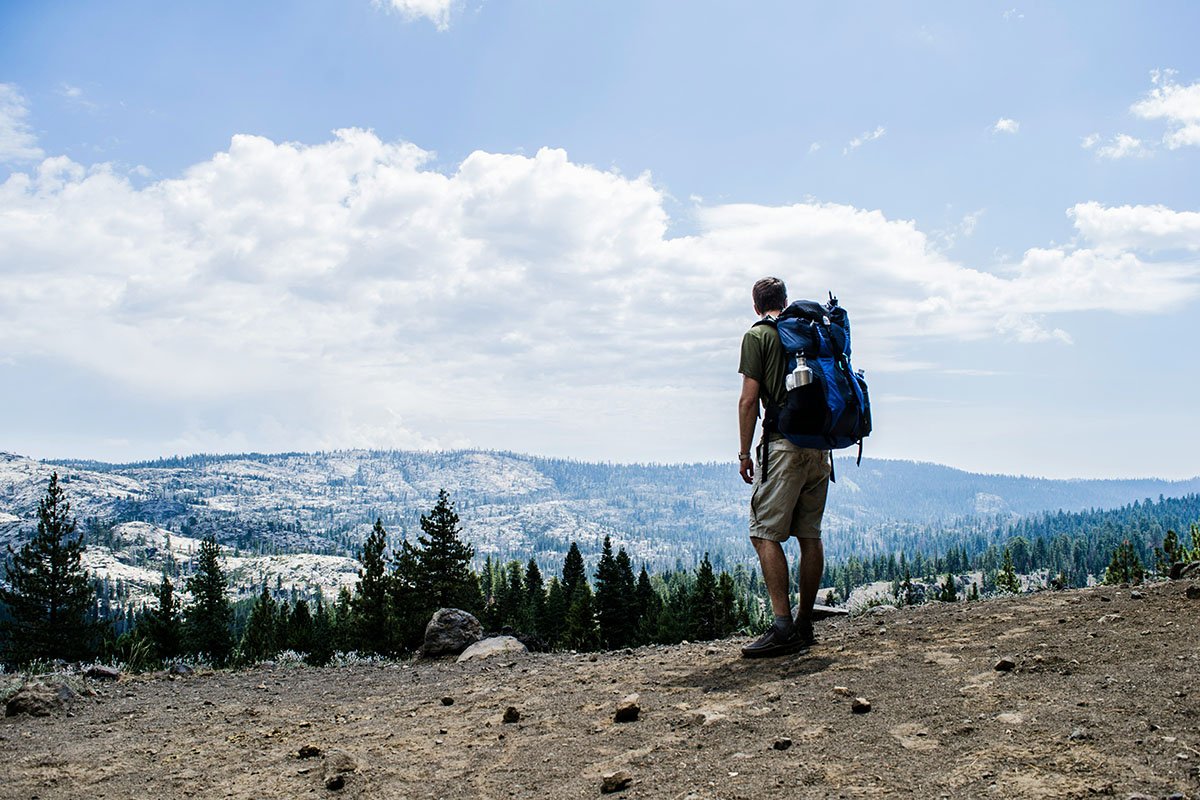
It’s time to brush up on the 10 essentials for hiking: navigation tools, sun protection, extra clothing, a light source, a first-aid kit, fire supplies, tools and a repair kit, food, water, and shelter. Each of these 10 essentials deserves a place on your day-hiking packing list, especially for particularly long or tough hikes.
In addition to your basics, like appropriate clothing, footwear, and a hiking backpack for carrying your essentials, include the following items when packing for a day hike:
- Paper map and compass
- GPS-enabled device, like a personal locator beacon, a hiking watch , and/or a fully charged smartphone
- Sunscreen with an SPF rating of 30 or higher
- Hiking sunglasses with UV protection (wear sunglasses even in the snow to prevent snow blindness)
- Wide-brimmed hiking hat
- Lightweight outer shell or rain jacket
- Extra insulating layer (depending on the weather)
- Gloves and extra socks (in cold and/or wet weather)
- Headlamp or flashlight with extra batteries
- Backup light source (i.e., a second small flashlight or glow sticks)
- Small first-aid kit, including items like bandages, gauze pads, adhesive tape, and antiseptic wipes
- Pain relievers and anti-inflammatory medication
- Any personal medications you need
- Waterproof matches and a lighter
- Fire starters (these can be found on the trail, but it’s wise to bring some along)
- Basic repair kit
- High-energy, nutrient-dense snacks (energy bars, trail mix, etc.)
- Meal(s) for longer hikes
- Water bottles and/or hydration pack with water bladder
- Water-filtration straw or purification tablets
- Lightweight emergency shelter, emergency blanket , or bivy sack
Depending on the situation, the following items may also be helpful, necessary, or desired for your day hike:
- Trekking poles
- Insect repellent
- Toilet paper or an antimicrobial pee cloth (or add multipurpose, biodegradable wipes to your first-aid kit)
- Camera gear and/or binoculars
- Safety whistle
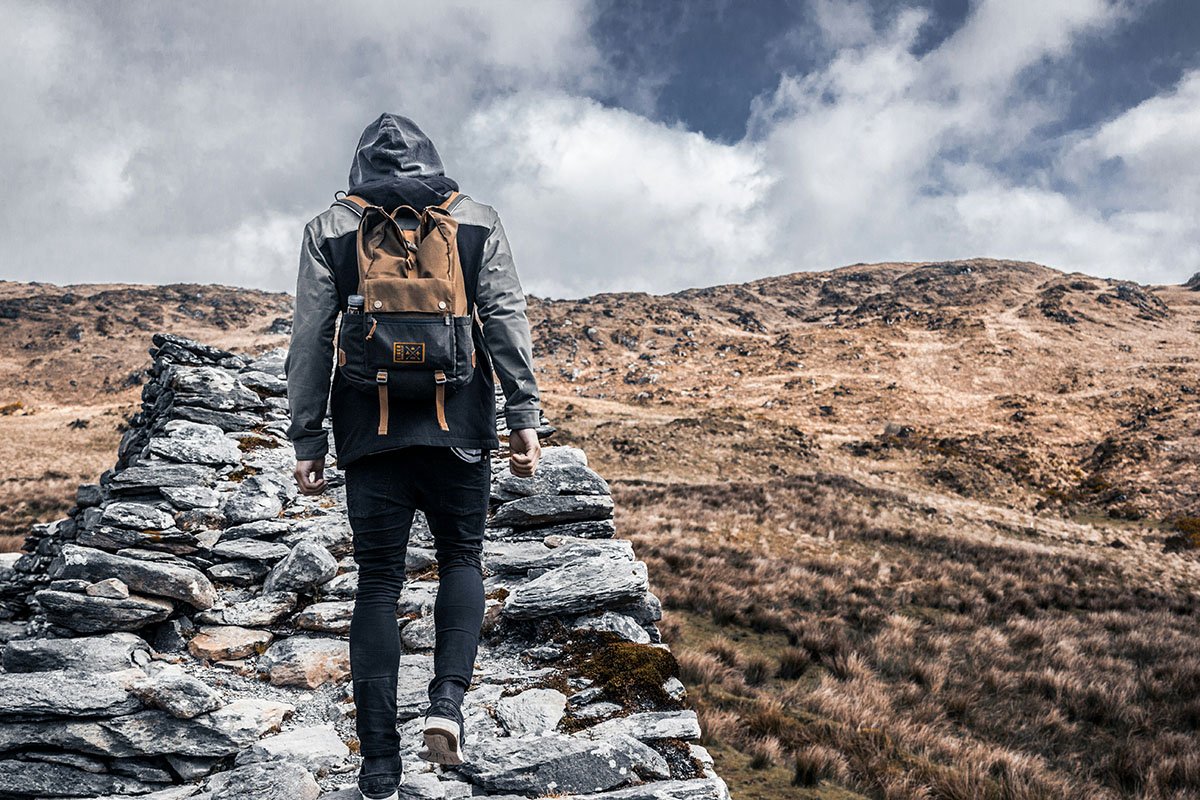
When packing for a day hike, consider what you’ll need handy, and pack those items at the top of your pack or in a front pocket. Your emergency gear can go at the bottom of your pack since you likely won’t need it.
If you’re going for a long hike and your pack is relatively heavy, do your best to distribute the weight evenly so you don’t end up with a particularly sore spot on your shoulders.
In wet weather, pack items in waterproof bags or containers to keep them from becoming drenched. (Fire starters or an extra insulating layer won’t help you much if they’re soaked.)
If you’re using trekking poles but won’t need them the whole time, make sure they fit inside your hiking backpack.
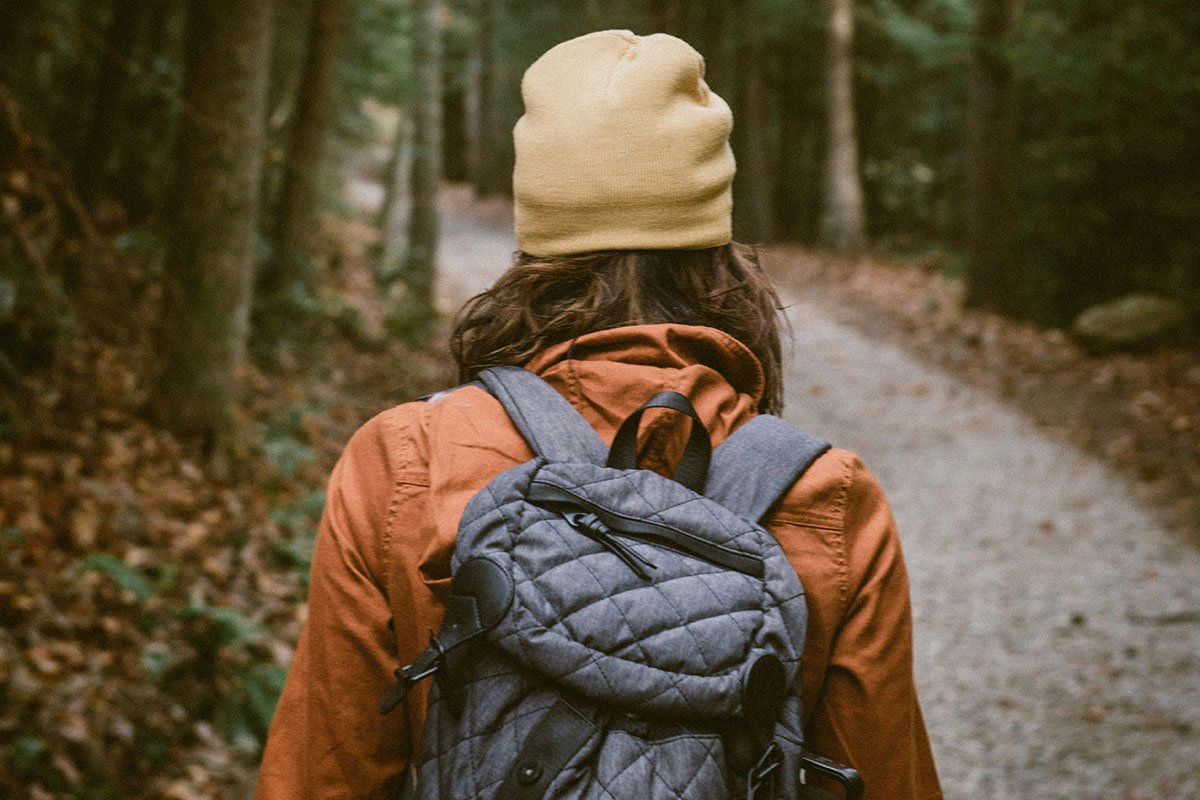
Now that you’ve done your homework and packed everything from a first-aid kit and toilet paper to duct tape and your trail runners (or hiking boots), you’re ready for a day hike.
Whether you’re taking a basic 2-mile trail to a point of interest or embarking on a day-long hike into and out of a canyon, being prepared will set you up for a fun and safe adventure.
Use our day-hiking essentials checklist as a guide, but be sure to make adjustments depending on location and season, as well as your particular needs. Always follow the tips outlined in Basic Logistics: How to Plan for a Day Hike, and remember to have fun!
Related Tags:

Have Scientists Discovered a New Orca Species?
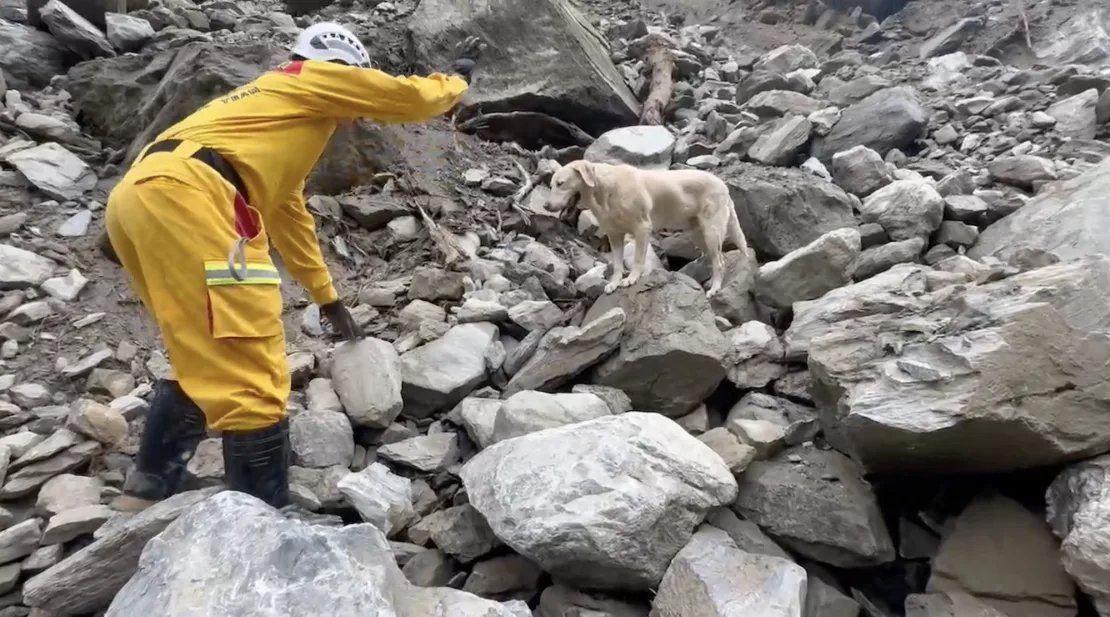
‘Too Friendly’ Labrador Finds Purpose Rescuing Quake Victims
Leave a comment cancel reply.
Your email address will not be published. Required fields are marked *
Save my name, email, and website in this browser for the next time I comment.
Register for newsletter (optional)
More Like This

On The Hunt For Waterfalls In North Carolina
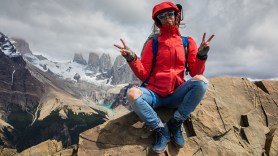
On The Line: Photographer and World Traveler – Kylie Fly

How Bear Grylls Finds Food in the Jungle

Check out the Finalists for the 2023 Comedy Wildlife Photo Awards

How To Deal With The 5 Most Dangerous Animals In North America

Camping: How to Pick the Best Backpack

Backcountry Cooking: 9 Tips for Crafting Simple, Yet Gourmet Meals on Backpacking Trips

Strength Training: A No-No or Resounding Yes for Runners?
More stories.
Wanderlust Movement | A South Africa Travel Blog
45+ Hiking Essentials: The Ultimate Hiking Packing List for Beginners
March 18, 2021 by Lauren Melnick
Last Updated on March 6, 2024 by Lauren Melnick
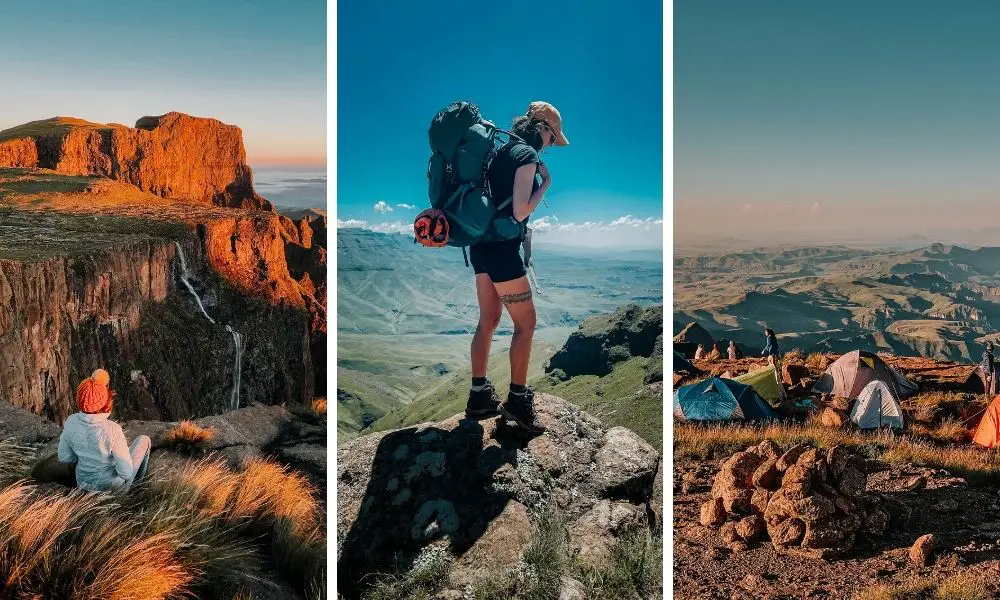
Does packing for an overnight hike make you want to set your hair on fire and send you into a state of panic? Then this is the article for you!
I’m sharing everything you should include in your hiking packing list to make sure you have the most stress-free experience while in the mountains.
However, you don’t need to bring allllll these items for every single hiking trip . You’ll need to tweak it according to your needs. For example, multi-day hikes like the Otter Trail have huts so you don’t need to pack a tent and an insulated mattress.
As someone who has had quite a view hiking fails from not packing the right gear, I’ve learned a thing or two about you need (especially the things that’ll help you get a good night’s sleep).
Trust me, by the time you get to the end of this article, you’ll be an absolute hiking packing master
So, let’s get started – here are all the hiking essentials to pack for a multi-day trek!
Psst…Want more hiking tips and inspiration for your next adventure? Check out these other posts:
- 15+ Best Hikes in South Africa With Mind-Blowing Views
- 12 Best Hiking Trails in Cape Town With Jaw-Dropping Views
- The Best Drakensberg Hikes That’ll Take Your Breath Away
- Hiking The Otter Trail in South Africa: Absolutely Everything You Need to Know
- Hiking Tugela Falls: Africa’s Highest Waterfall
- 10+ Spectacular Multi-Day Hiking Trails In The Western Cape
Table of Contents
Trekking Poles
Hiking shoes, water bladder, first aid kit, mosquito and bug repellent, spf lip balm, sweat wicking shirt, insulated jacket, windbreaker, rain jacket, hiking shorts, hiking pants, wool hiking socks, sleeping bag, sleeping bag liners, insulated mattress, toilet paper and plastic bags, knife and duct tape, jet boil and fuel, water bottle, dishwashing liquid + cloth, portable charger, camera/phone, multi-day hiking packing list, hiking gear for beginners.
Before you go into the mountains, you need the right hiking gear. Here’s what to add to your overnight hiking checklist:
The most important item for any overnight hike is a hiking backpack .
You want to make sure you’re investing in a bag that is made specifically for multi-day hikes. It’s going to give you all the support you need and keep your weight off your back.
I use the Osprey Aura 65l . It’s one of the best hiking backpacks for women as it’s designed for our bodies for a more comfortable fit.
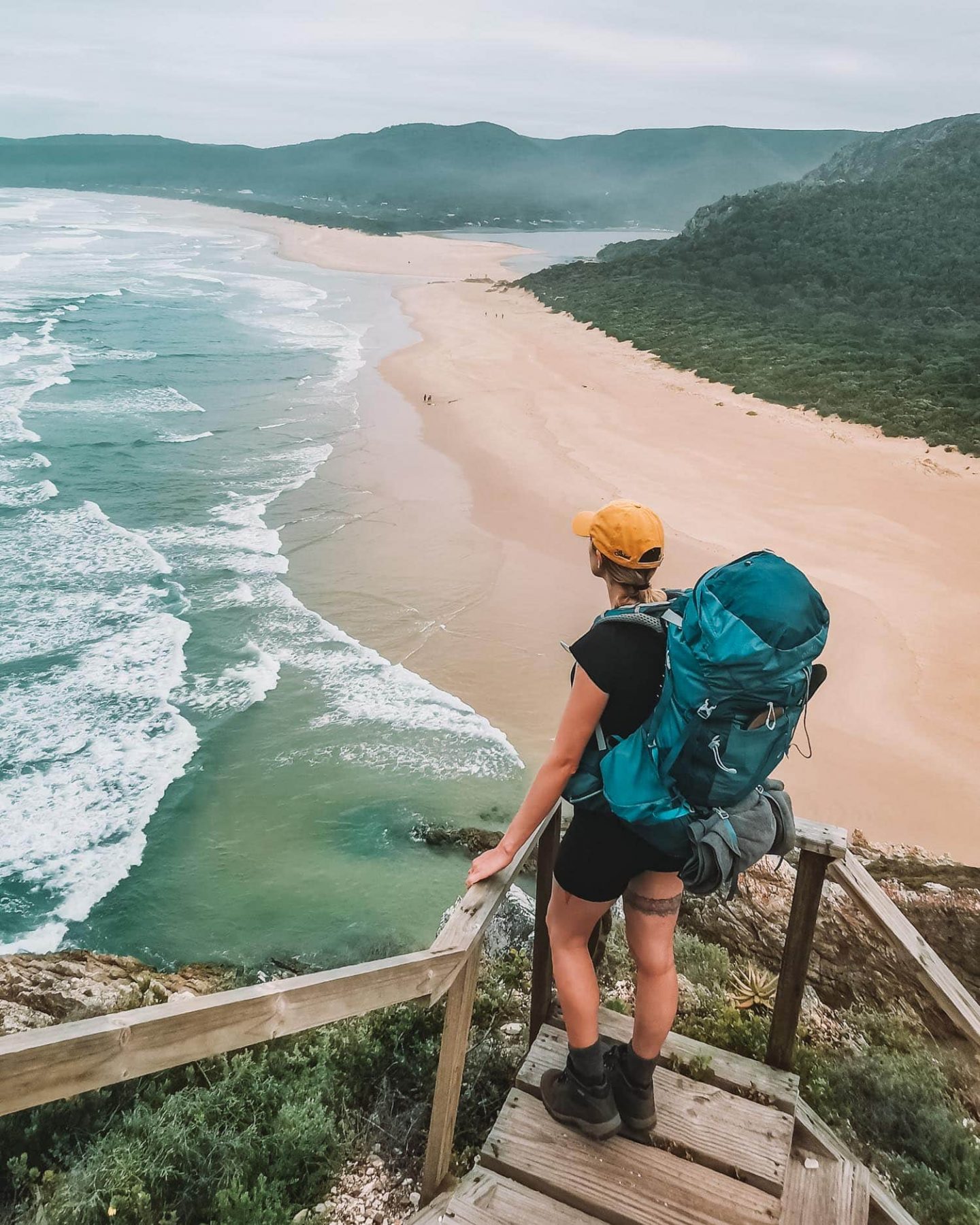
While the weather forecast may say clear skies, sometimes you can’t predict the weather.
A rain cover for your backpack is one of those must-haves for hiking to keep all your gear dry (like your camera and sleeping bag).
If your pack doesn’t come with one, you can buy a rain cover separately. I bought this one from Outdoor Warehouse before I upgraded my pack to an Osprey.
A headlamp needs a spot on any hiking equipment list. It’s also one of my essential items for photography as I often wake up before sunrise to shoot or venture into the wilderness to shoot the Milky Way at 1 am.
When you’re packing for a multi-day hike, a headlamp is going to make it easier to see what’s lurking around your campsite at night.
Plus, you might need to start hiking before sunrise if you’re doing the Otter Trail and need to cross the Bloukrans River at low-tide.

Do you need trekking poles for every single overnight hiking trip? Yes and no.
If your multi-day hike is strenuous (like the Mnweni Circuit in the Drakensberg), trekking poles will go a long way in helping you get up the mountain while it’s not required for an easier hike like Tugela Falls .
However, if you have bad knees, you should invest in poles even if you’re doing easy day hiking trails.
Why do you need a dry bag if your backpack has a rain cover? Extra precautions.
If you’re someone like me who brings expensive camera gear on adventures, you’ll want to add a dry bag to your hiking trip packing list.

Choosing the right hiking shoes for your trip is incredibly important. You want to consider the type of conditions you’re trekking through as well as the style of hiking.
My go-to hiking shoes are the Altitude V Ultra from Hi-Tec . While these hiking boots are quite heavy, they are waterproof (I love jumping in puddles!), have an excellent grip (a must if your route involves scrambling), and super comfortable. For something lighter, I love the K-Way Women’s Scree Shoe .
Water bladders are one of the first things to pack for hiking trips.
It makes it easier to stay hydrated, and you don’t need to keep taking off your pack to pull out your water bottle. I use the 2l water bladder from First Ascent, and it also comes in a 3l if you want more carrying capacity.
Always remember to check the trail has water points and pack purification tablets.
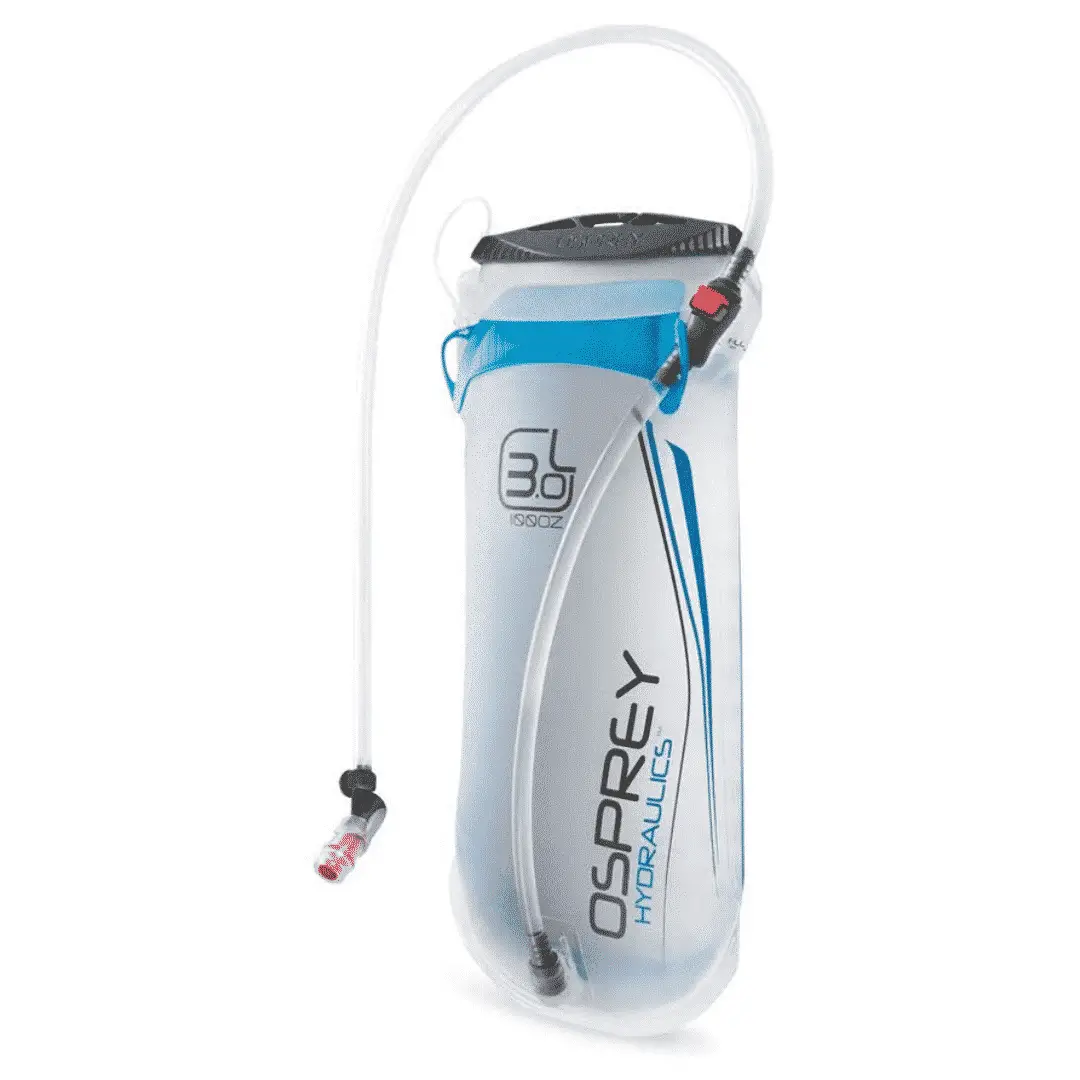
When you’re out in the mountains, you never know what might happen.
You could need a headache tablet, or you might trip and cut yourself on the trail. Add a small first aid kit to your hiking packing list.
Outdoor Warehouse has kits specifically designed with hikers in mind, and it tells you how many people can use it.
If you’re hiking in the summer months, you’ll want protection from the swarms of mosquitos.
If you’re wearing sweet-smelling deodorant, you might attract a few more unwanted friends.
Pack a small bottle of bug and mosquito repellent to get a good nights sleep and avoid bites while on the trail.

I’ll admit, I’m not the best at remembering to pack my SPF lip balm, but it’s a hiking essential. My lips always start to crack and sometimes bleed on a backpacking trip.
When I don’t use my lip balm, I’m in pain for the next couple of days after the hike while the cracks recover.
Don’t leave home without packing sunscreen! It’s one of the top 10 essentials for hikes and will protect you from painful sunburns.
I use the Cetaphil SPF 50+ for oily skin from Dischem . I’d highly recommend it if you’re someone who finds the ‘greasiness” of sunscreen makes you breakout.
P.S. You should wear sunscreen every day to prevent signs of ageing and skin damage.

Toiletries include things like your toothbrush, toothpaste, face wash, make-up etc.
It’s anything that will make you feel clean and comfortable. When packing for a hike, try to use small bottles to lessen the weight in your pack.
What to Wear Hiking
Not packing the right clothes for hiking will leave you freezing or sweating your butt off in the mountains. Here’s what to add to your hiking wardrobe:
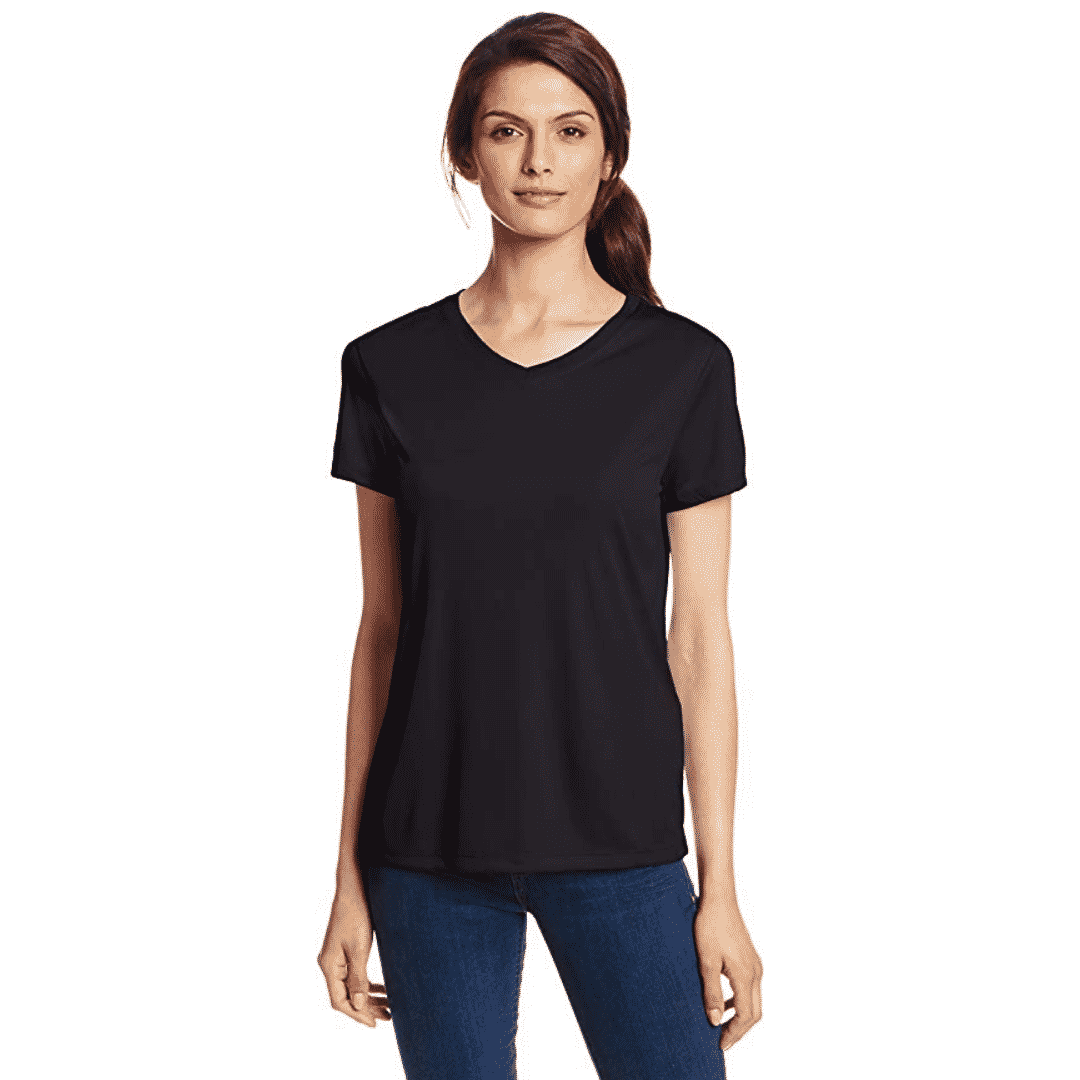
When you start building a hiking wardrobe, invest in a moisture-wicking and quick-drying shirt.
On multi-day hikes, you’re going to sweat A LOT, and you want to wear something that can keep you comfortable.
K-Way has sweat-wicking shirts made from Quik Wic fabric to keep you cool and dry outdoors.
As someone who is a reptile and gets cold as soon as the sun dips under the horizon, I am obsessed with my insulated jackets .
I use the K-Way Women’s Swan ’18 Down Jacket . It’s incredibly light-weight and packs down small.
K-Way also has the Women’s Ember Re: Down Jacket , made from 100% recycled down.
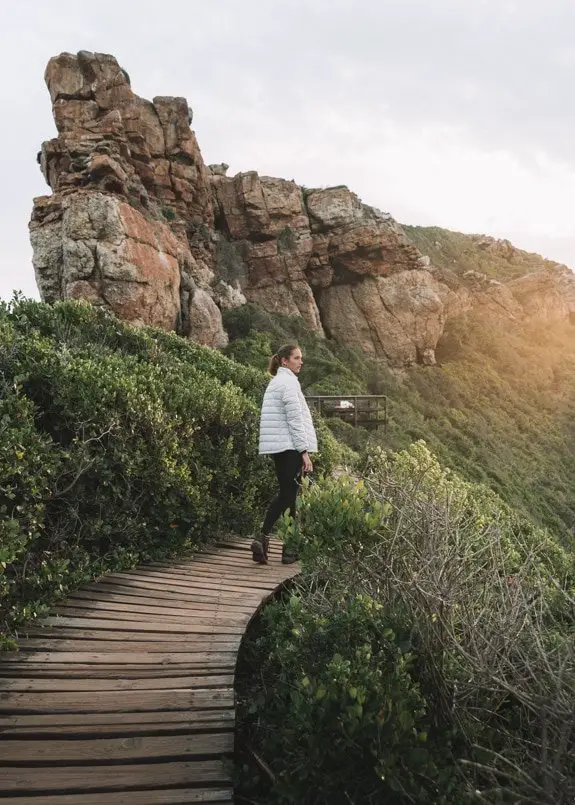
I bought my first windbreaker for my overnight Tugela Falls hike, and it changed my life.
The K-Way Franklin Rain Jacket is light-weight, windproof and waterproof. I used it as an extra layer in the late afternoons and early mornings when the temperatures were cooler and loved it.
When the wind did pick up, it insulated me and kept me comfortable the entire time. I love that you can adjust the sleeves with a velcro strip to stop the wind from sneaking in up your arms!
Another investment I made towards my hiking wardrobe is an insulated mid-layer.
I often reach for my long sleeve mid-layer when I am layering under a heavier jacket or when I want a bit of extra warmth.
My favourite is the K-Way Women’s Hazel Crewneck Fleece . It uses an insulating waffle knit, making it perfect for chilly outdoor conditions.
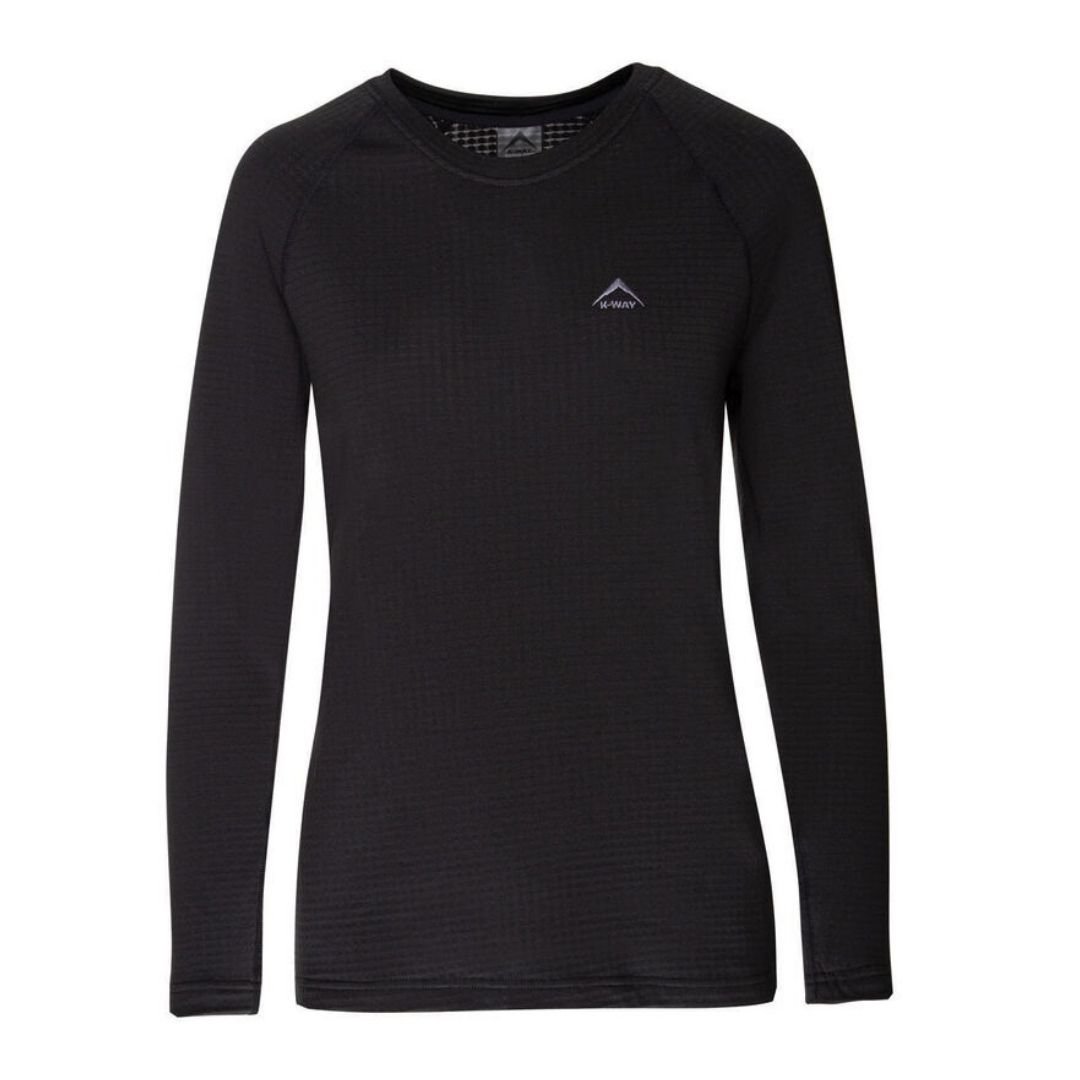
If you have a waterproof windbreaker, you can get away without buying a separate rain jacket.
However, if you’re hiking or trail running in heavy rain, you might want to invest in something like the First Ascent Ladies AR-X Waterproof Running Jacket or the First Ascent Ladies Submerge Rain Jacket .
Both are light-weight, packable, and designed to keep you dry in heavy downpours.
For multi-day hikes in the Drakensberg or anywhere else in South Africa, a pair of hiking shorts will go a long way in keeping you cool in the summer months.
I’ve been using a pair from Boody (it’s made from sustainable bamboo), but I have noticed it’s not the most durable material.
I’m looking at upgrading to First Ascent’s Ladies Corefit Short Tights which has a pocket for your phone!
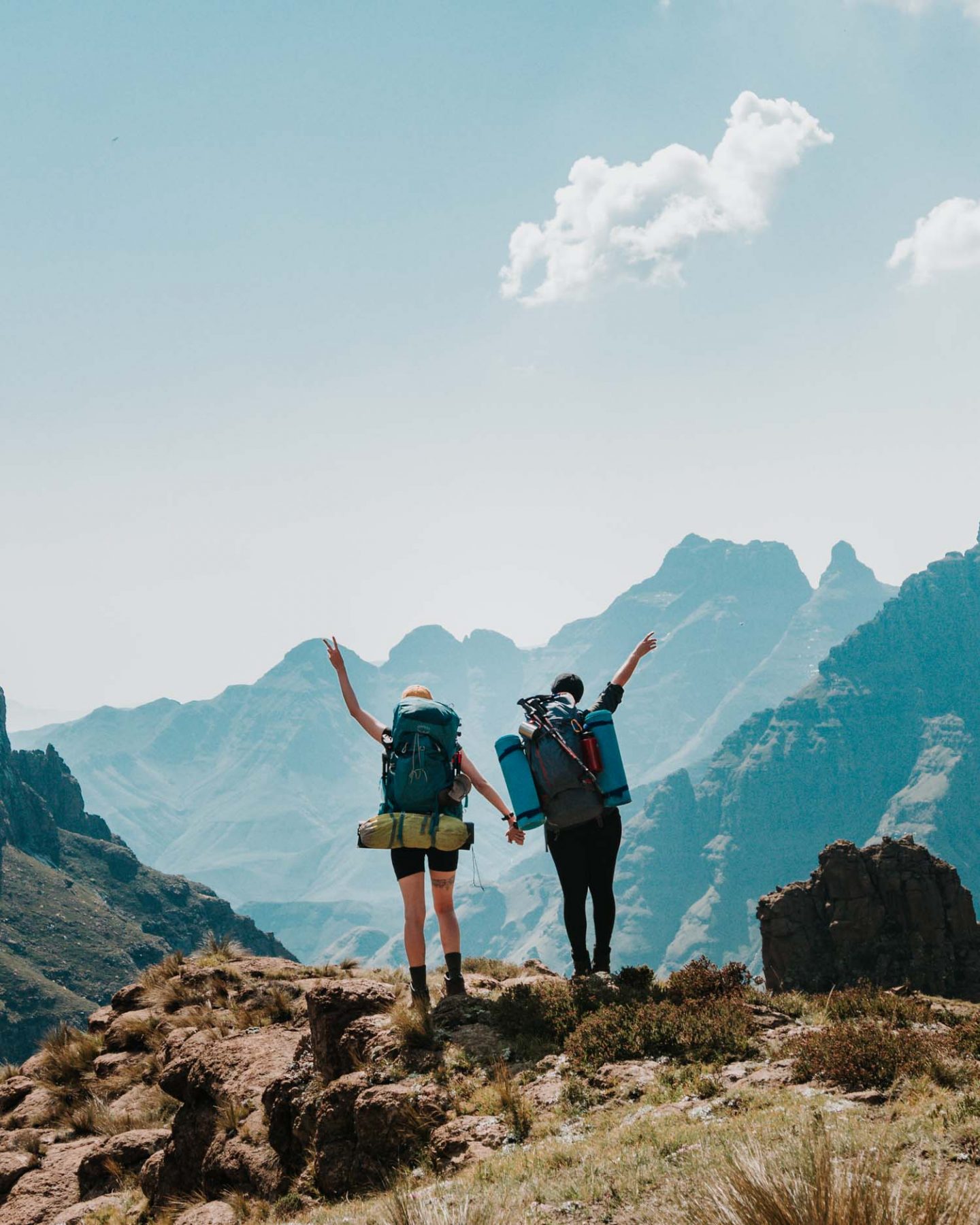
For colder temperatures of if you want to limit sun exposure on your legs, add a pair of long pants to your hiking packing list.
Hiking leggings are a great choice, but if you’re going through more bushy areas, opt for more durable hiking pants .
I did Mnweni without a pair of thermals , and I will never make that mistake again.
Thermals are excellent base layers when you want extra warmth and double as pyjamas in the evening.
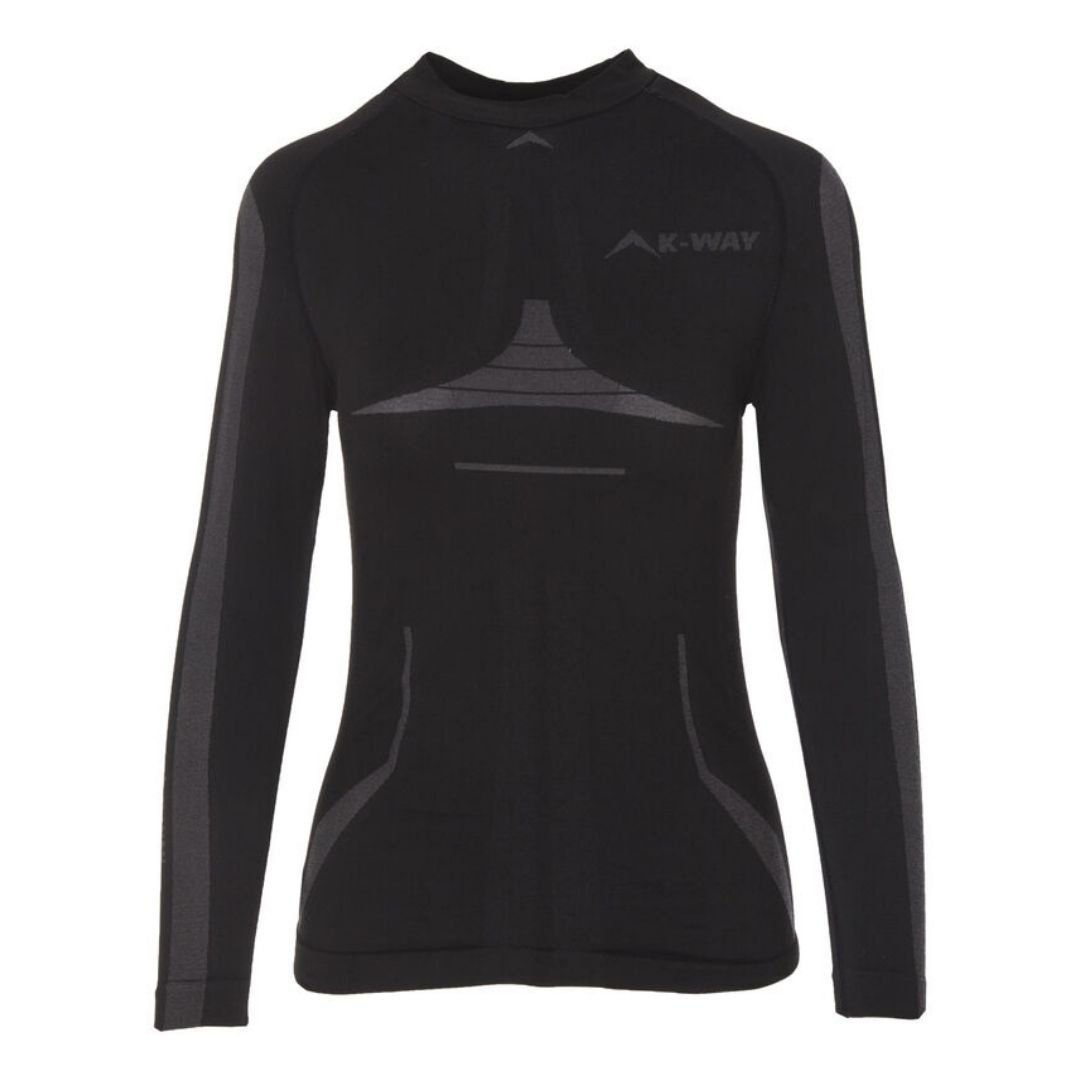
Have you ever had sunburn on your head or ears? It’s the WORST! Protect yourself with a sun hat on your overnight hiking trip.
I often wear a cap from Stoked (one of my favourite South African brands) but opt for a wider brim hat like Olive Venture Wide Brim Hat if you want extra protection.
A thick pair of hiking socks will go a long way in preventing blisters.
For your hiking packing list, look for hiking socks that are breathable, moisture-wicking and odour resistant.
I like to double up my socks as an extra precaution for blisters, and it works like a dream!
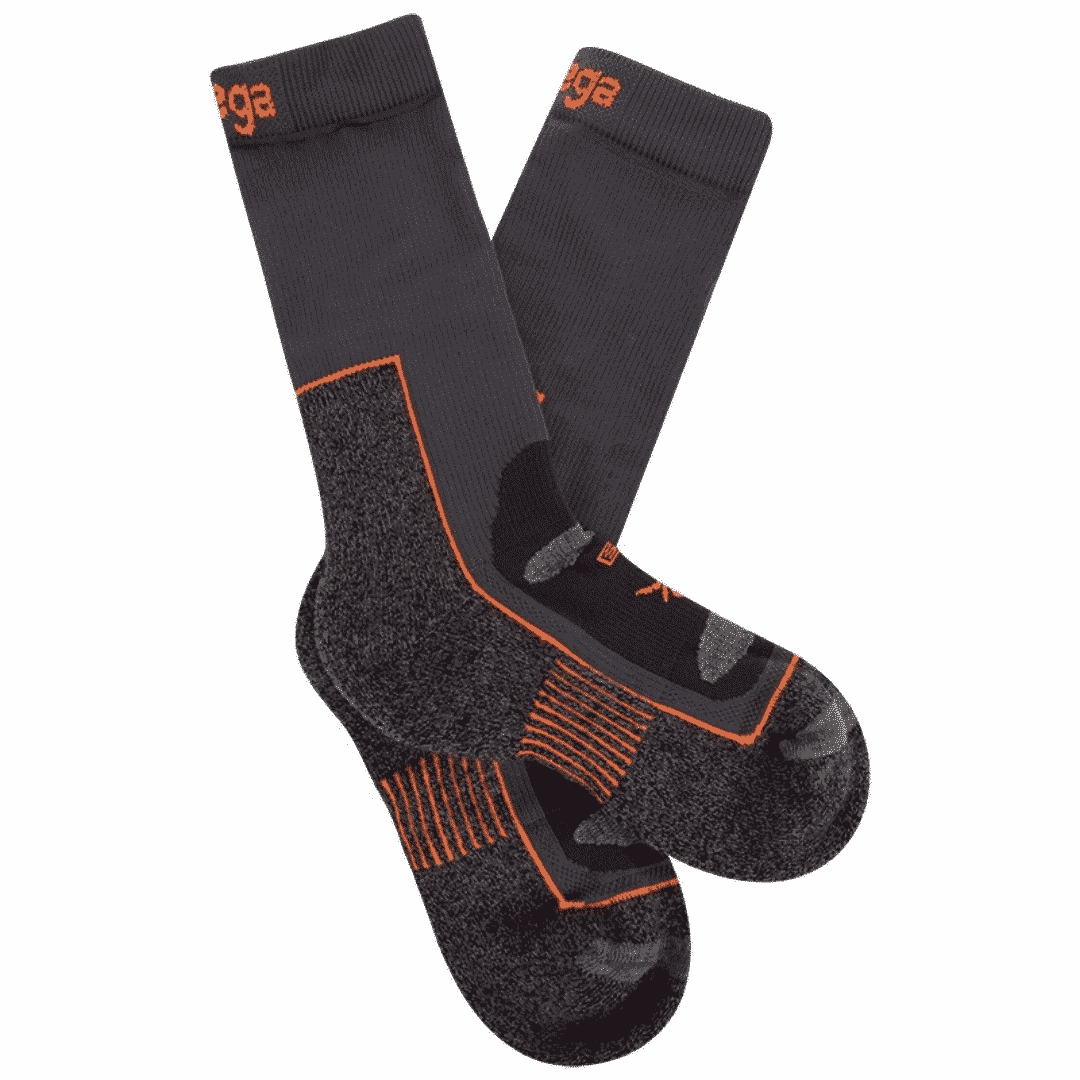
After a long day of hiking, a pair of sandals will feel like the ultimate luxury for your toes.
I bring a pair of flip flops , but if you want to wear socks with your sandals in the evenings, opt for a pair like the K-Way K-Way Women’s Lily Sandal.
Gloves are essential for your trekking gear list if you’re going to colder climates or the temperature will drop quite a lot in the evenings.
Gloves will keep your hands toasty in the evenings and make it easier to cook or take photos in the cold.

Another must-have for sun protection is a pair of polarised sunglasses .
I love the Gold Vintage Octo Lens With Metal Frame from Escape Society. These sunglasses are super affordable and stylish.
Buffs are a handy piece of gear to own.
You can use them as a mask when shopping or use them to protect your neck and face from the sun, wind, and cold.
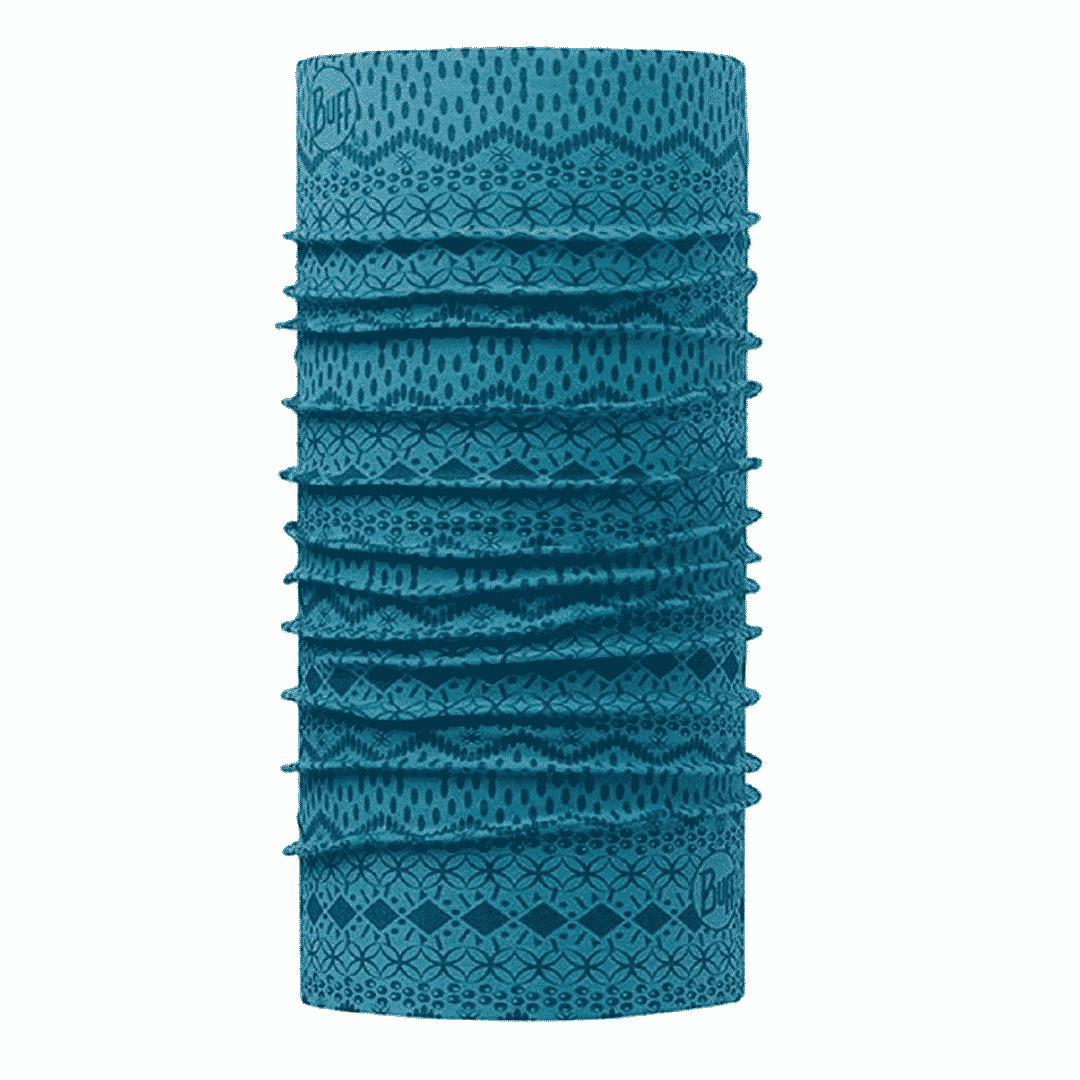
Camping Equipment
For overnight hikes, your camping equipment can make or break your trip. Here are some backpacking essentials to make your night in the wilderness more comfortable:
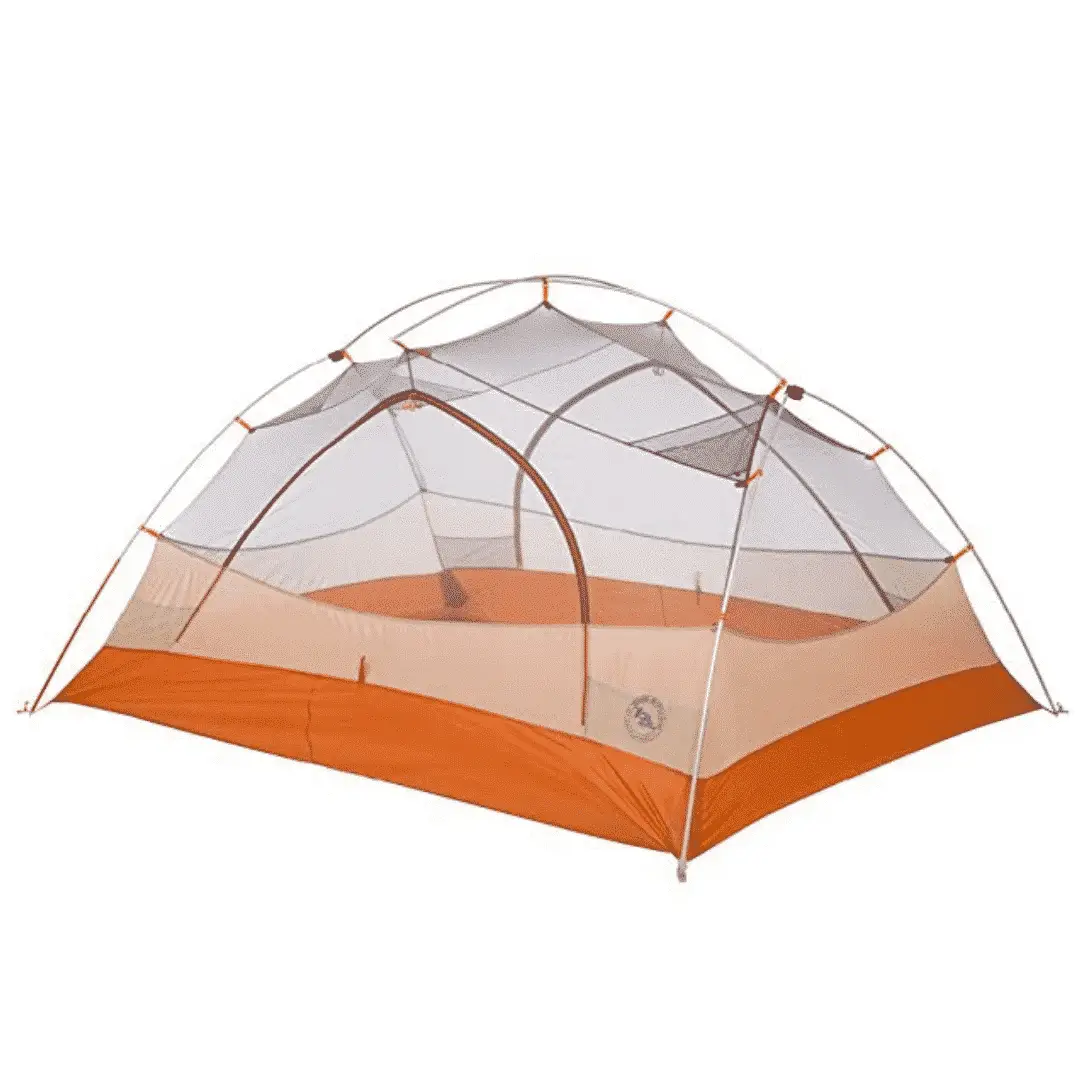
For multi-day hikes, you want to pack a light-weight tent that can handle outdoor elements like wind and rain.
My go-to tent is the Helio 2 Person 4 Season Hiking Tent . It’s small enough to fit into the bottom of your pack and weighs only 2.45 kg.
The right sleeping bag is crucial to getting a good night’s rest on your overnight backpacking trip.
When I first started multi-day hiking, I used the same cheap sleeping bag I bought for OppiKoppi. BIG MISTAKE. I froze my butt off and didn’t sleep a wink.
For my next trip, I added the First Ascent Ice Breaker Down Sleeping Bag to my hiking packing list. It has a comfort rating of -3°C and an extreme rating of -18°C. The bag weighs 1.62kg and is made from responsibly sourced down filling.
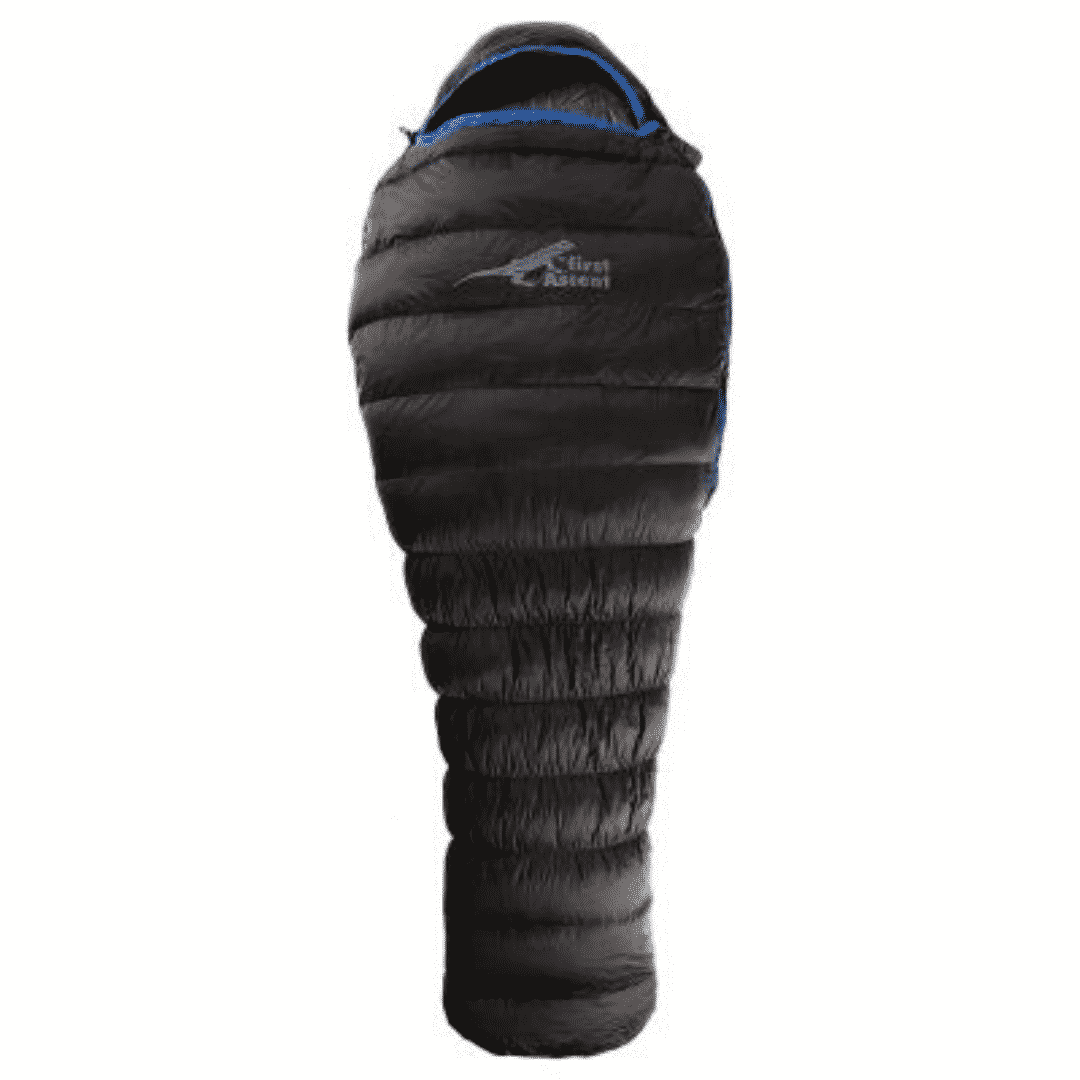
Sleeping bag liners aren’t necessary, but they go a long way if you’re someone like me who struggles with staying warm.
Without a doubt, one of the most underrated items on an overnight hiking checklist is an insulated mattress .
After sleeping on a yoga mat inside a Drakensberg cave , I had the worst sleep in my life. I kept on getting cold, my entire side would go numb, and I could never get comfortable.
When I got back home, I invested in First Ascent Ultralight Insulated Mattress . It’s light-weight, takes up hardly any room, and insulates your body heat, so you don’t freeze to death at night.
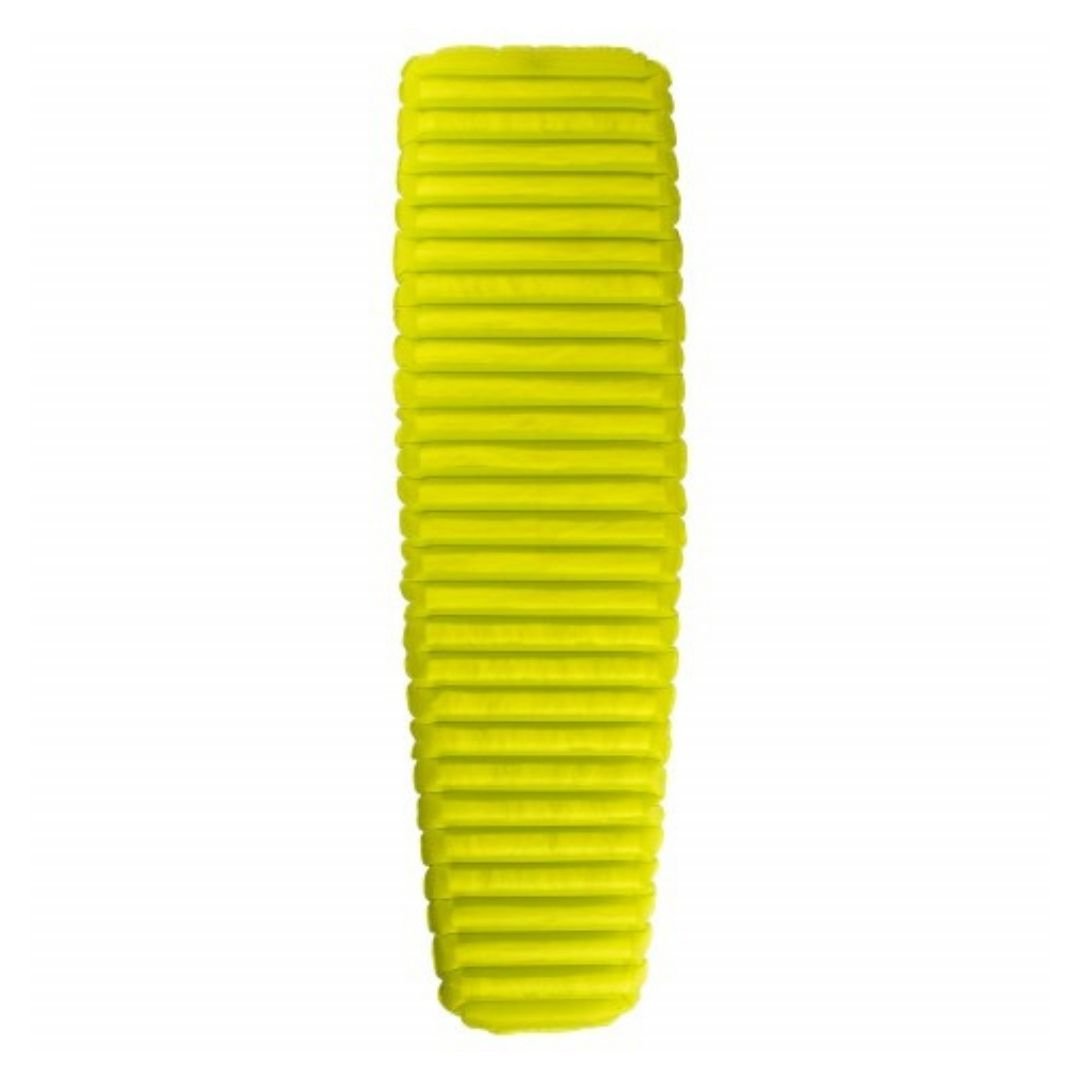
For some reason, I never bought a hiking pillow until my overnight hike to Tugela Falls . In the past, I used a neck pillow or my backpack.
After taking the plunge and buying a self-inflating pillow, I’m never going back. The First Ascent Deluxe Pillow is light-weight, compact, and comfy.
When hiking and camping in the wilderness, one-ply toilet paper is the way to go. It’s the best for the environment as it breaks down quicker than two-ply.
You should always pack a plastic bag to practice leave-no-trace principles and keep the trail waste-free.

After one or three nights camping in the wilderness with no showers, you’re going to feel gross.
Packing baby wipes can help you feel a bit cleaner, especially if there aren’t any rivers to swim in. Just don’t bring scented baby wipes, or you might attract hordes of bugs.
You never know when you might need a knife. From cutting rope, opening bags/cans, or cutting something up for dinner.
Duct tape is one of the most useful items you can pack. Your tent pole could snap, and you need a quick fix, or your sleeping pad gets a hole.

Kitchen Equipment
The best part of any backpacking trip? Taking your pack off, putting on your flip flops, and making a delicious cup of hot chocolate with mini marshmallows! Here are the kitchen essentials you need to survive a night or two in the wilderness:
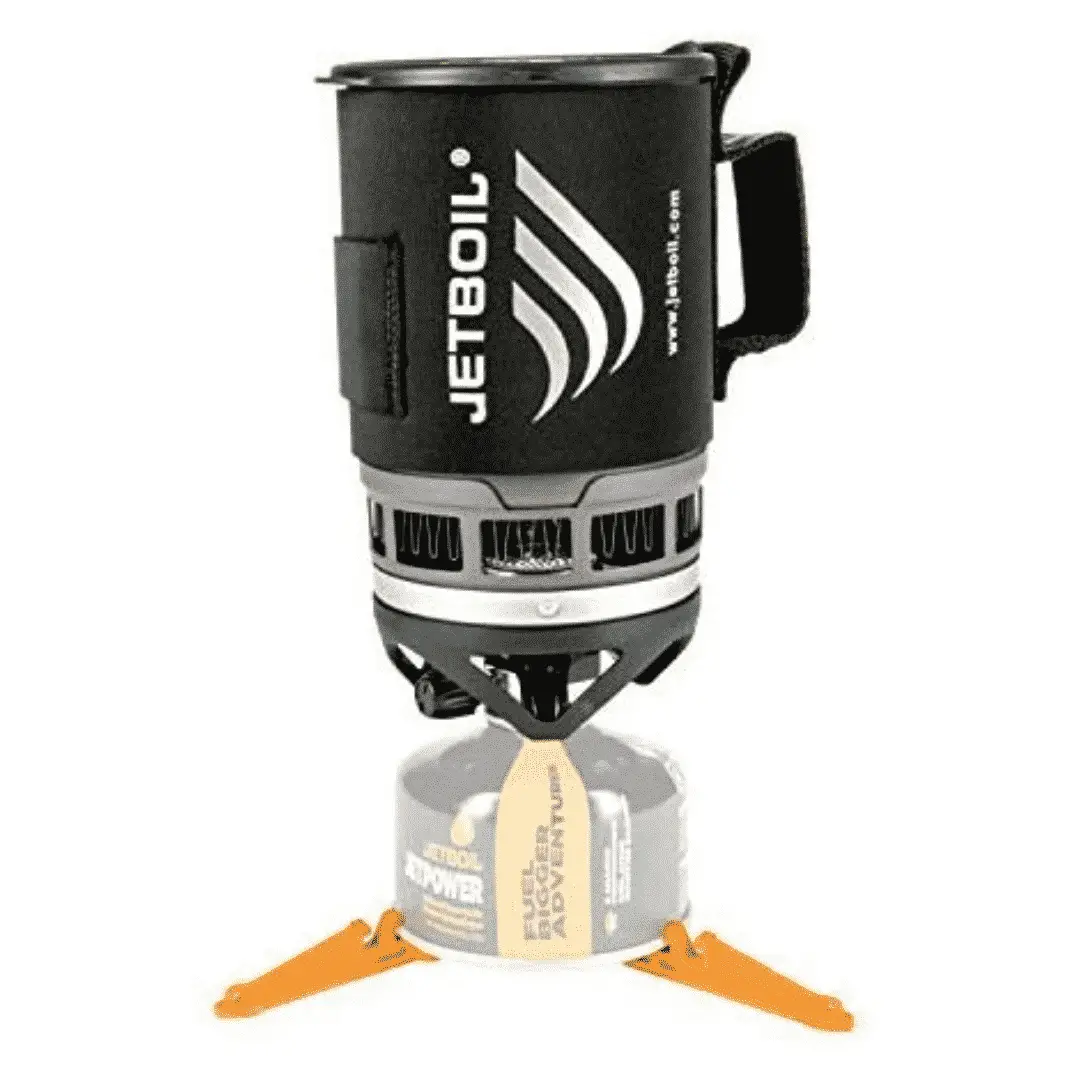
A Jet Boil is an investment, but it will change your life. It’s a nifty device that boils water in less than five minutes!
Plus, most Jet Boil’s come with a 2-in-1 pot and bowl, helping you save space in your pack. Just don’t forget the fuel!
Always pack a lighter. Even if you think you won’t need it, chances are something will happen, and you will.
Plus, it’s always a good time to have a spliff on a mountain at sunset.

I tend to DIY some trail mix on multi-day hiking trips, throw in a few energy bars, and dried food.
At Outdoor Warehouse, you can buy dehydrated food packs , which are super light-weight but a bit pricey. Don’t forget to bring along some instant coffee or a coffee press if you don’t mind the extra weight.
A spork is an excellent backpacking utensil. It doubles as a spoon and a fork, meaning that’s one less thing for you to pack.
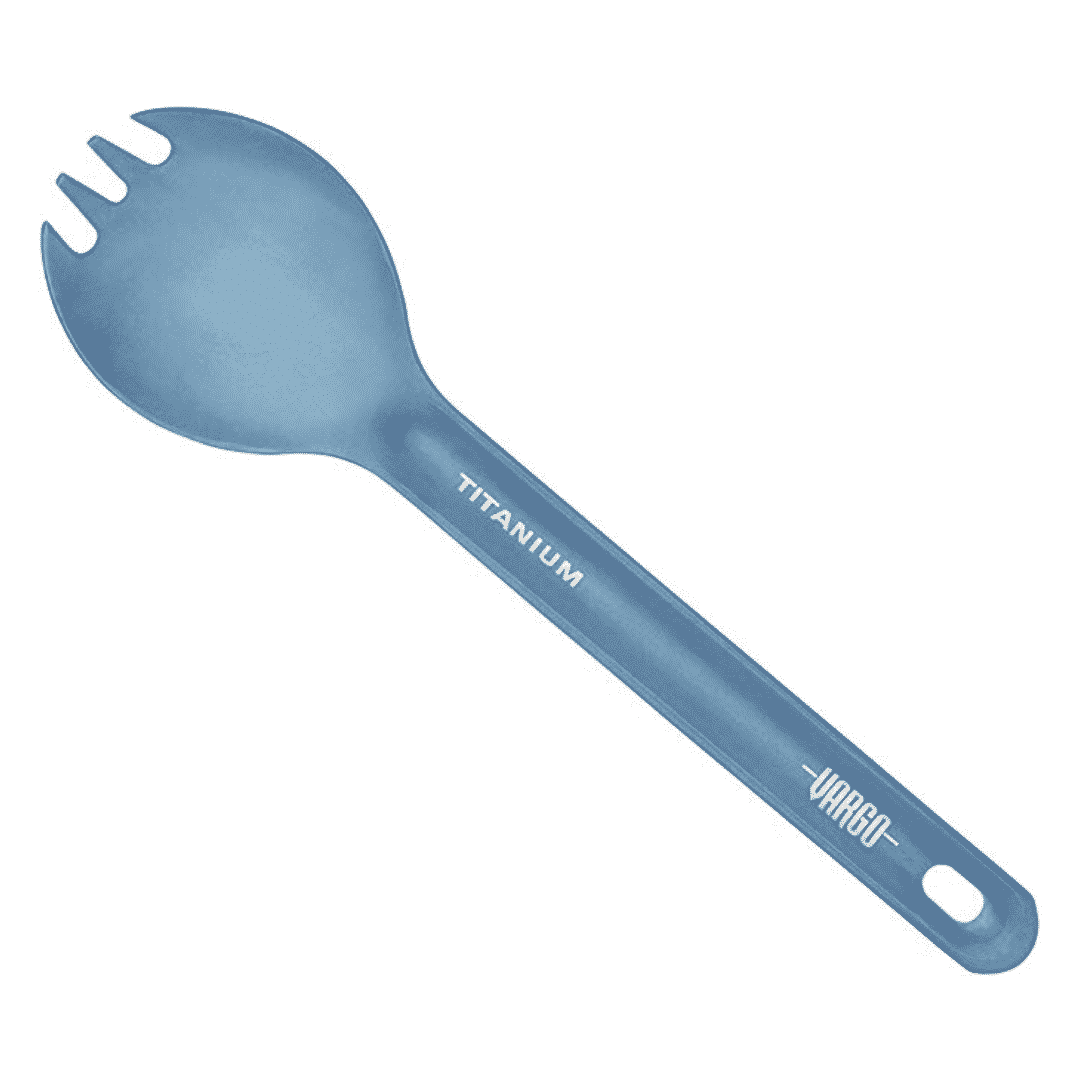
Pack a mug for your coffee or tea. You can clip your mug to the outside of your bag if you’re running out of space.
Bring along a small water bottle to use at the campsite at night.
It’s super useful for when you’re cooking with your Jet Boil or when you need to clean your pots and utensils.

I usually decant a small amount of dishwashing liquid into a travel-sized bottle and pack a small cloth.
It makes the clean-up process in the evening and morning that much easier!
Electronics Equipment
You don’t need a lot of electronic equipment for a hike, but here are a few essentials you may want to pack:
Tip #1 for making your battery last longer, put it on Airplane Mode.
Tip #2, always add a fully charged portable charger to your hiking packing list.

For the casual photographer, your smartphone camera is perfect for multi-day hikes.
However, if you’re someone who wants to shoot landscape or get fancy with astrophotography , you’ll need to pack a camera.
I currently shoot with a Canon 80D and the 18-35mm 1.8 fs Sigma Art lens , but mirrorless cameras from Canon, Sony, and Fuji are a better light-weight option.
You only need to pack a tripod if there are specific shots you need, and stability is a must!
I use the Manfrotto Traveller range.
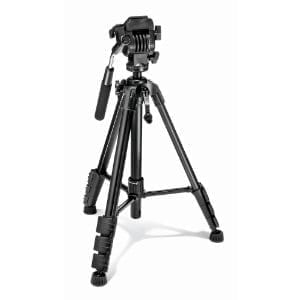
What are your essentials for a hiking packing list? Hit ya gurl up in the comments!
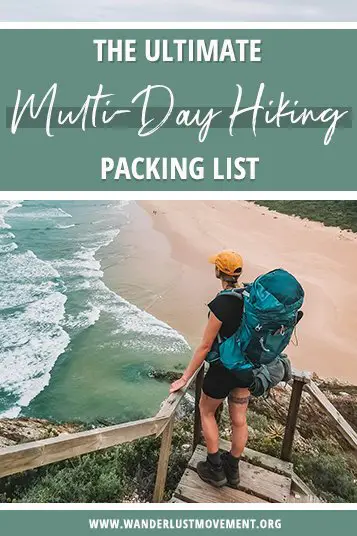
About Lauren Melnick
Lauren Melnick is the founder of Wanderlust Movement, Wander to Here and is a South Africa travel blogger. She's been travelling the world as a full-time freelance writer since 2016 and has visited over 40 countries.
When she isn't typing up a storm, you can find her conquering overnight hikes around the Western Cape, rock climbing, and hosting sold out group travel trips around South Africa, Namibia and Morocco.
Reader Interactions
Leave a reply cancel reply.
Your email address will not be published. Required fields are marked *
This site uses Akismet to reduce spam. Learn how your comment data is processed .
Love The Content?

Day Hiking Essentials: What to Bring on a Hike
Whether you are an experienced hiker or are just starting out, here are the ten day hiking essentials you should bring with you on every hike.
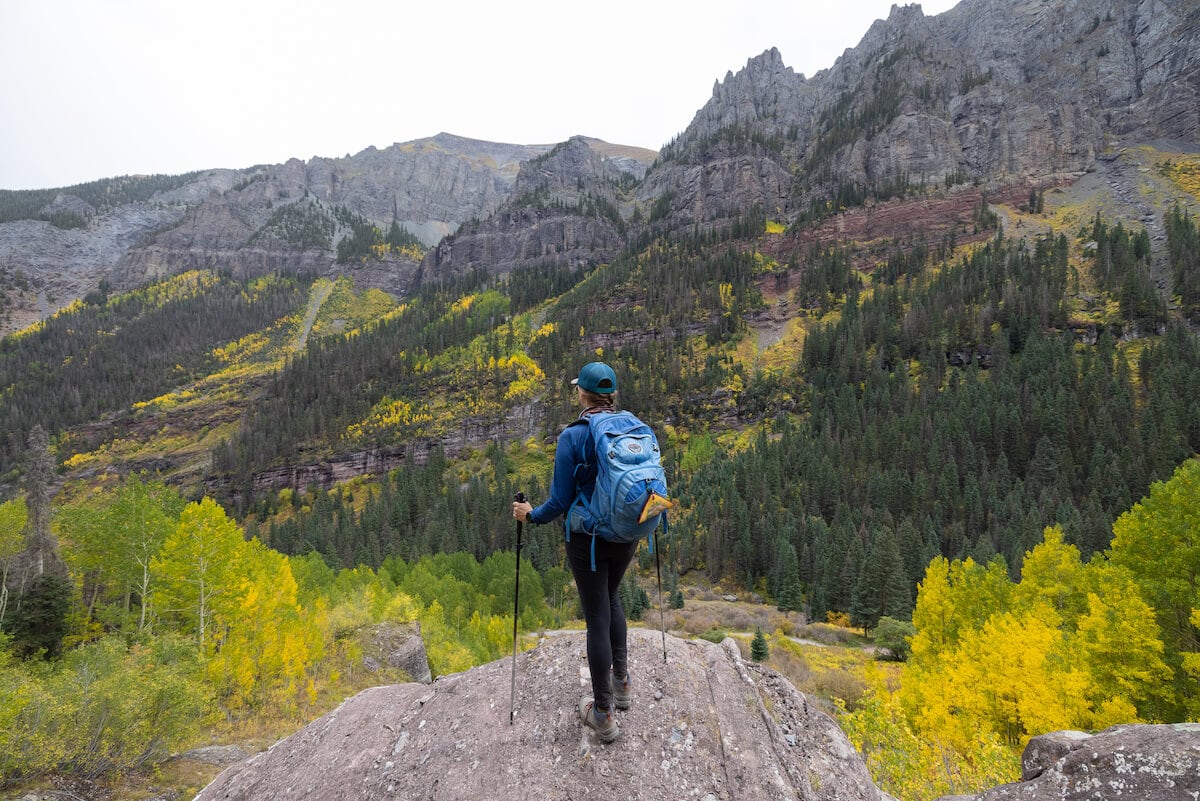
You’re ready for an epic day hike. Not only have you picked out the trail, but you’ve also done your research and have all the important details like distance, trail conditions, elevation, and logistics.
After checking the weather and getting excited to hit the trail, it’s time to gear up. The only problem is, what day hiking essentials you should bring on your hike to keep you safe and comfortable?
If you’ve ever wondered this, you’re certainly not alone. There are dozens of hiking gear lists on the internet to answer this exact question.
But what we’ve found at Bearfoot Theory is that many of these gear lists have a bunch of items that most hikers never take with them on the trail. So how is our day hiking essentials list different? This is the practical stuff we at Bearfoot Theory actually bring on an average day hike. Nothing more and nothing less.
Sponsored by REI Co-op
REI Co-op is our favorite outdoor gear retailer and a long-time supporter of our work here at Bearfoot Theory. We appreciate their 1-year return policy, their Member-only coupons, and the fact that REI Members receive 10% back on their purchases every year. We only recommend products we truly love and think you will love too.
1) A Daypack
The first thing you’ll need for your day hike is a good hiking daypack . You can get away with using an old JanSport from your closet if you’re not going too far, but if you are serious about hiking and want to be comfortable on the trail, you’ll want something a little more robust.
For size, a typical day hiking pack ranges from 20-35 liters . This is enough to hold your extra layers and all of the other day hiking essentials that we talk about below.
Other features you’ll be looking for when you choose a day pack are:
Here are a few of my favorite daypacks that I’ve used over the years:
Osprey Tempest 20 Pack
This pack is a great all-around day pack and is what BFT’s Director, Linda, uses. It’s roomy and comfortable with lots of pockets including side stretch pockets, hip belt pockets, and even a spot to hold your sunglasses. The external hydration sleeve (reservoir not included) makes it easy to take it in and out.
Deuter Speed Lite 2 3 Pack
This is a comfortable, lightweight day pack that’s just the right size. The sternum strap is adjustable and the unique V-shape provides more freedom of movement. It has plenty of pockets including hip belt pockets and it’s hydration compatible (reservoir not included).
Where to shop
REI Co-op Trail 25 Pack
This is a popular budget-friendly daypack that’s made from recycled material and comes with a raincover (bonus!). It has a large U-shaped zipper compartment that makes it easy to access your gear, as well as an interior zippered pocket for keys and valuables and stretch side pockets. It’s also hydration compatible (reservoir not included).
Read next: Looking for more options? See our roundup of the Best Women’s Day Packs for Hiking .
2) The Right Hiking Layers
Some of the most important day hiking gear is the kind that you wear! No matter what season you’re hiking in, bringing layers along on the trail is important for both comfort and safety reasons.
Base Layers
Start with a sweat-wicking base layer that’s breathable and regulates body temperature.
Avoid cotton because in cold environments, wet cotton doesn’t provide insulation, is slow to dry, and can make you even colder. In the heat, cotton traps warmth, which isn’t ideal either. So try to steer clear of this material if you can.
I personally wear a lightweight sweat-wicking shirt on warm summer days ( long-sleeved for extra sun protection). Then, I will add an additional mid-weight layer on top when it’s cooler.
Shop Patagonia Capilene Cool Daily Shirt at:
Shop Patagonia Capilene Cool Long-Sleeve Shirt at:
Read next: Best Women’s Base Layers

Download my FREE Outdoor Trip Planning Toolkit
Enter your email to get access to printable PDF packing checklists, itineraries, and more.
If there’s any chance of it being chilly out or there’s a possibility you’ll be out longer than you expect, pack a fleece or insulated jacket . It can be surprisingly cold on summits or in the shade when you’re taking a break, and the difference between mid-day temps and morning and evening temps can be significant. It’s no fun being cold, throwing an extra layer in your backpack won’t add much weight, and you’ll be happy you have it if it does get chilly!
Shop REI Hyperaxis Fleece Jacket at:
Shop Patagonia Nano Puff Jacket at:
Read next: Still researching a jacket? Read our full review of the Patagonia Nano Puff .
Outer Layers
Always pack a lightweight rain jacket that you can stuff in your pack along with a hat and gloves if you think it might get chilly.
I usually also wear a buff , which is a lightweight layer that goes around your neck. It works well for wiping off sweat, protecting you from the sun or wind, keeping your hair out of your face, or keeping your neck warm if it gets cold.
Shop the REI Co-op Rainier Rain Jacket at:
Hiking Boots
On your feet, choose a pair of sturdy hiking boots and socks that can handle whatever kind of terrain you’re hiking in.
Go for lightweight trail shoes if it’s an easy or moderate trail and protect your ankles on tougher, more challenging surfaces with mi- or high-rise, thick-soled boots.
Shop Oboz Sypes Mid at:

Discover More Outdoor Layers
3) sun protection.
Sun protection while hiking may seem obvious, but it is often overlooked when packing day hiking essentials.
To shield your skin from the sun while you’re hiking, bring:
While these essentials might be obvious for hot and sunny hikes, it’s not as obvious on cloudy days where the weather could clear while you’re out or on snowy hikes where the sun reflects off the snow and sends some pretty strong rays back at you.
Read next: Learn more tips for protecting your skin from the sun with our guide to Sun Protection for Hikers .
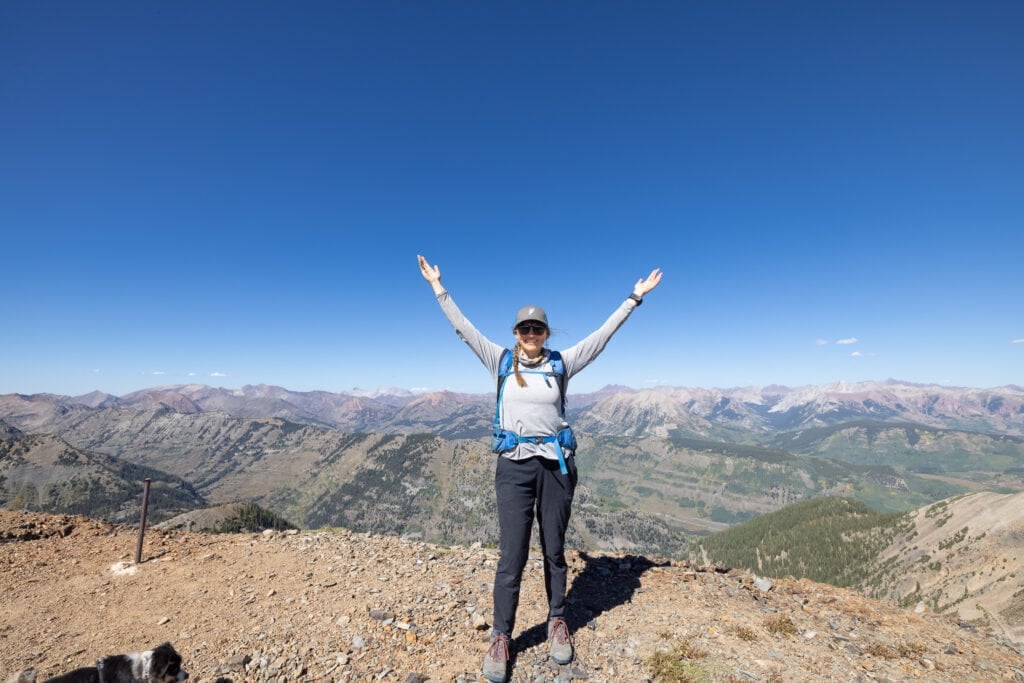
4) Map / Navigational Tools
There are a lot of great websites and apps for finding trails . We highly encourage you to have a few of these downloaded on your phone, and at least one that you’re able to use offline in case you don’t have service on your hike.
In the outdoors, there are plenty of places where there is no cell reception and unlike a map or a compass, the battery on your phone can die. If you happen to get lost and find yourself with a dead smartphone, that could be a real safety concern.
Unless it’s a trail you’re super familiar with and have hiked before, always pack the appropriate map , plus a compass to help you find your way.
Shop Suunto Compass at:
If you’re worried about your phone running out of battery, consider packing a portable power bank .
Shop Goal Zero Flip 24 Power Bank at:
I also recommend packing an emergency satellite communication device, like the Garmin InReach Mini , which allows you to send text messages when you are out of cell service (note that you also need a monthly Garmin Membership to use the inReach).
Shop Garmin inReach Mini at:
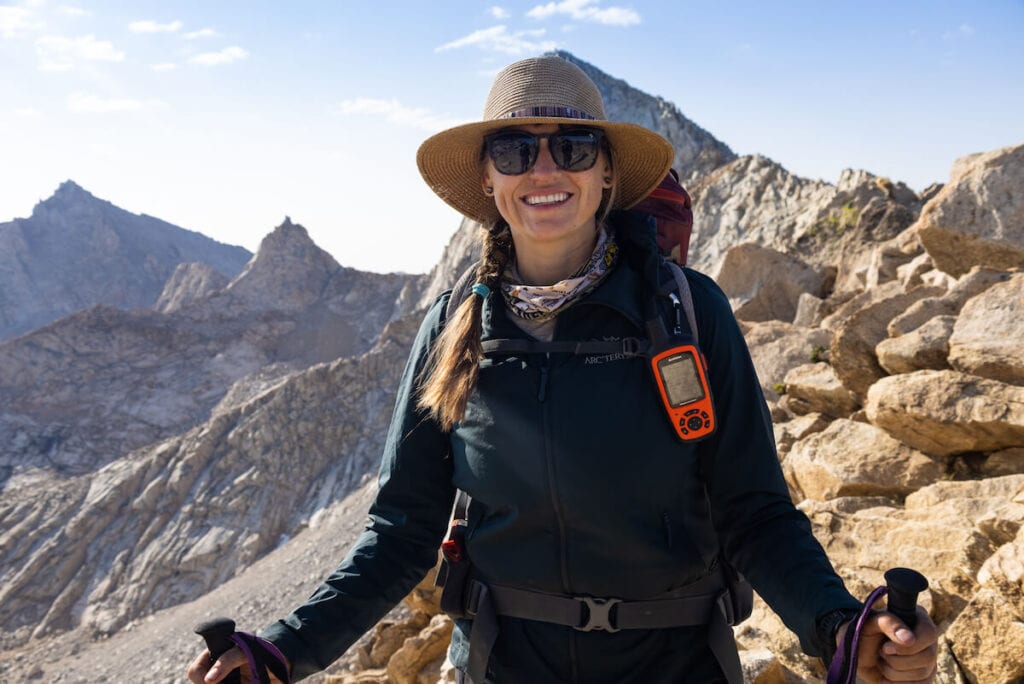
Lastly, we also recommend letting someone know of your hiking plans and what time you expect to return, just in case they need to alert rescue if you don’t check back in by your established time.
5) LOTS of Water
Your body needs water to function at its very best. Bringing extra water, and even a water filter for long hikes in case you run out is a really important day hiking essential to have while you’re out there bagging peaks.
In any weather, staying well hydrated can help you avoid dehydration or even altitude sickness , but moreover, it simply helps you feel good and have fun.
Many daypacks have space for a hydration reservoir which can be filled with water and allows you to drink from an attached tube. Since it’s nestled in between you and the pack, it’s easy to carry and is a great option for staying hydrated on the go.
Shop the Osprey 2L Water Reservoir at:
An alternative to a hydration reservoir is storing one or two lightweight water bottles in the side pockets of your backpack for easy access. You can even bring a water bottle with a filter built in so you can fill it from water sources on your hike.
6) Energizing Snacks
It’s important to bring enough food for the day to stay full and keep your energy up. Snacks that are packed with nutrients are best, so grab some energy bars, nuts, trail mix, and dried fruit. We love these Bobo’s Oat Bars for a quick breakfast on the go and Honeystinger Waffles and Energy Chews for treats.
Sturdy fruits and veggies like apples, oranges, or carrots that won’t get squished in your bag are also great options.
Or you can always pack one of the classic trail snacks: a good ol’ peanut butter and jelly sandwich.
It’s important always to make sure you have enough food, but the point of having extra is really in case of an emergency . It’s better to bring a little extra rather than not have enough. Plus you’ll be burning more calories than you might be used to, so don’t skimp on snacks and nutrition.
Read next: In search of some yummy trail treats? Check out our favorite hiking snacks .
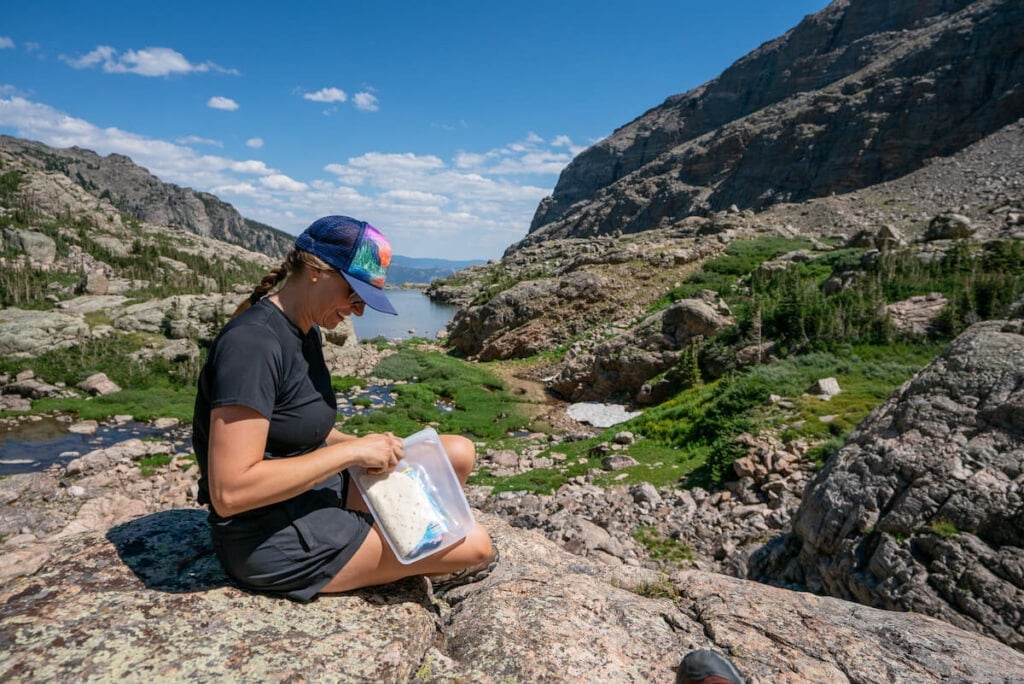
7) First Aid Emergency Kit
It’s a good idea to invest in a portable and lightweight first aid kit that you can always keep in your backpack with your other day hiking essentials. While it’s unlikely that you will have an emergency, things like blisters, cramps, and minor cuts can happen, plus it’s always good to be prepared.
The Adventure Medical Kit Ultralight/Watertight First Aid Kit is a pre-made first aid kit that has the basics for dealing with minor injuries. If you go this route, make sure you are familiar with what’s in it, and adapt the kit to your personal medical needs as necessary.
Shop the Adventure Medical .7 Kit at:
Read next: Want to DIY? Learn how to build your own hiking first aid kit.
We also recommend throwing a lighter and waterproof matches into your first aid kit in case you get caught after dark and need to build a fire, as well as a small whistle that you can use to garner attention in an emergency.
Shop UCO Stormproof Matches at:
8) Flashlight or Headlamp
In case you get caught on the trail after dark, you’ll want a source of light to help you find your way back to the trailhead. Carry a headlamp with you for hands-free light or a small and lightweight flashlight if you don’t have a headlamp. Make sure the batteries are charged, too.
Shop the BioLite 325 Headlamp at:
Read next: Best Hiking Headlamps
9) A Multi-Tool & Mini Repair Kit
A mini repair kit will help you fix something like a tear in your backpack, a loose trekking pole, a broken strap, or any other unforeseen issues that may come up while you’re out there.
While the contents of repair kits can vary between products, it’s always good to have multi-purpose tools with you like a pocket knife, leatherman , repair patches, safety pins, or strips of the ever-handy duct tape.
A good tip is to wrap some duct tape around a lighter so you have it handy in case you need it in a pinch.
Shop the Leatherman Bond Multi-tool at:
9) Trekking Poles
Trekking poles might not be considered a “day hiking essential,” but if you are a beginner hiker or you are tackling steeper, more challenging terrain, trekking poles can be extremely helpful.
Trekking poles take the pressure off your knees, give you more power on the ups, and help maintain a rhythm while you’re hiking.
Shop REI Traverse trekking poles at:
Read next: Check out this list of our favorite trekking poles and learn more about their benefits.
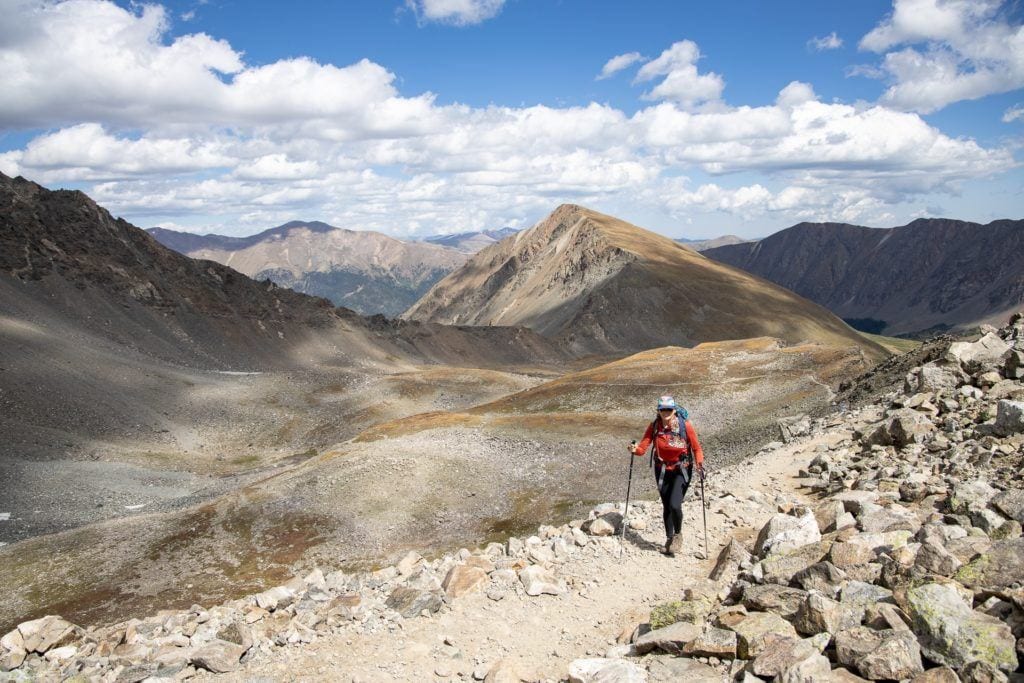
10) Toilet Paper or Pee Rag
No matter how short of a hike you’re going on, you should always be prepared in case you need to use the bathroom.
First, brush up on Leave No Trace principles and make sure you know how to properly poop outside – just in case!
I always have my Kula Cloth anti-microbial pee rag attached to my daypack for #1 and travel-sized toilet paper for #2. Be sure to bring a lightweight trowel in case you have to go #2 and need to dig a hole along with a Ziploc bag to carry out your used TP.
Shop the Kula Cloth at:
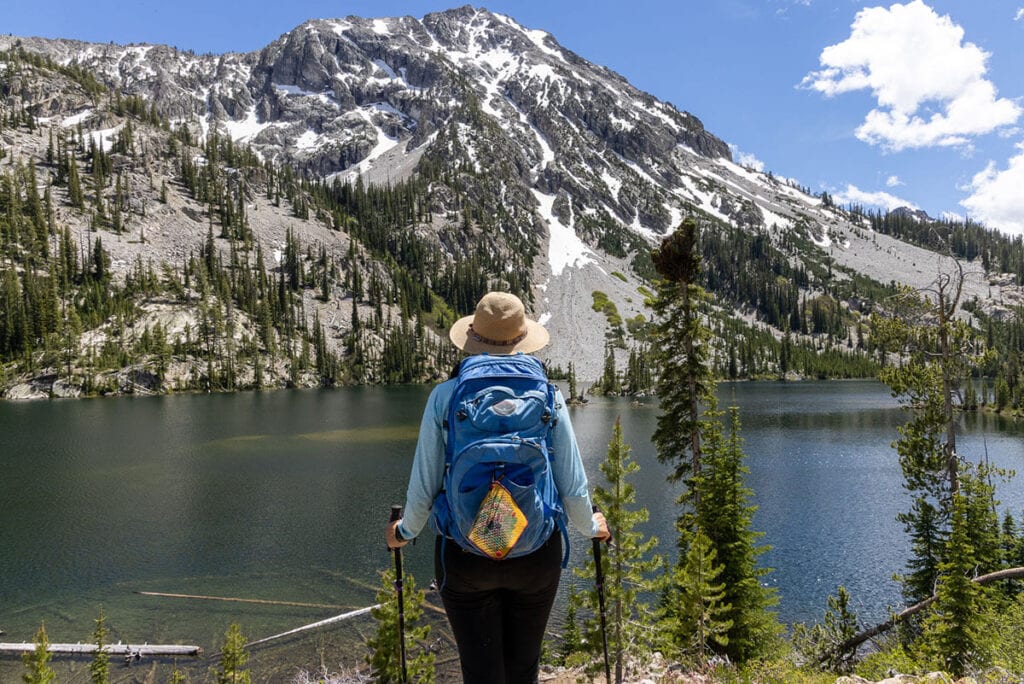
New to hiking? These guides will help you get out, have fun, and stay safe on the trail:
- What to Wear Hiking: A Woman’s Guide to Outdoor Apparel
- Hiking for Beginners: Essential Hiking 101 Tips
- Trail Etiquette 101: The Basic Rules of Hiking
- How to Prevent and Treat Blisters
- Hiking in the Rain: Tips to Stay Dry and Comfortable
What are your day hiking essentials? Do you carry everything we shared above on your day hikes? Share in the comments below .
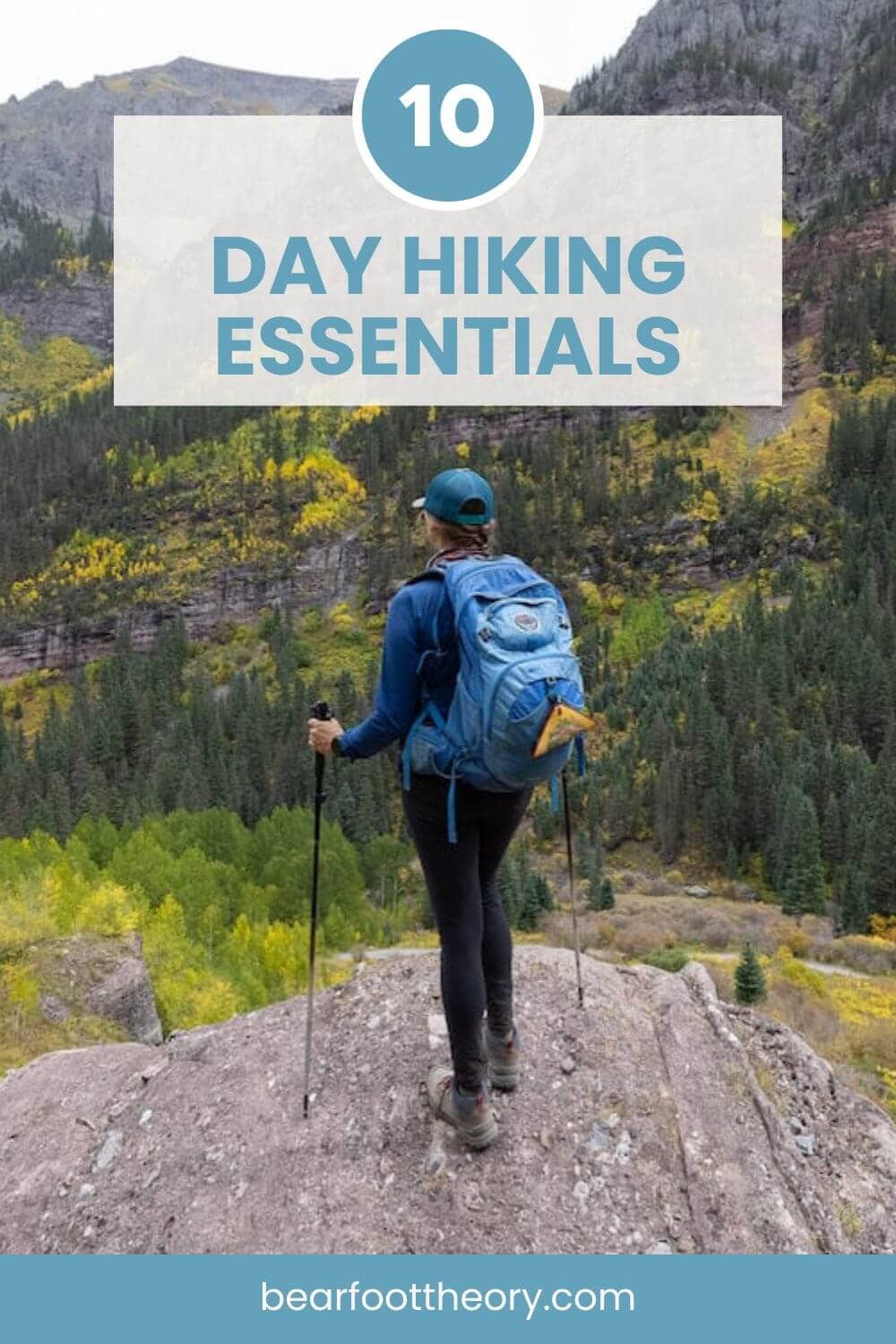
With two decades of hiking and seven years of van life under her belt, Kristen has dedicated her life to helping people experience the positive effects of nature. As a pioneer in the outdoor blogging space, she founded Bearfoot Theory in 2014 and has since authored more than 350 blog posts about outdoor travel, hiking, camping, and van life. Her work has been featured in National Geographic, Outside Magazine, and Backpacker, and when she’s not on the road, she lives in Park City, Utah with her partner Ryan, their son, and two adventure pups.
Leave a Reply Cancel reply
Your email address will not be published. Required fields are marked *
Save my name, email, and website in this browser for the next time I comment.
24 Comments
Maybe if you are relying on your phone, consider a power bank in case your battery drains – especially if it’s cold. When I went to Iceland in the winter my battery drained in about half an hour due to the cold. I need to get myself a first aid kit. I’m lucky if I have plasters at the moment but having just done a fieldwork first aid course, I really do need to get one.
A really great trick I learned is duct tape. Wrap it around (and around and around!) your hiking poles. You can peel off pieces as you need them – good emergency bandages, tent repair, clothing repair…it’s pretty useful.
Thanks, Kelly, for sharing! I did this for the PCT and used it often—very helpful!
Agree with the list, but I swear by the inclusion of a Bothy Bag, especially hiking in the UK.
I always carry an extra pair of socks, and two empty sliced bread bags. Why? It’s an old Boy Scout trick. If your feet and boots get soaked, stop and dry off your feet. Put on your dry socks, and then put each foot in a bread bag before putting on your boots. It will keep your dry socks from absorbing moisture from your boots, and keep your feet dry.
In addition to the items listed in the article, I always take a 3X5 signal mirror w/retro reflective aimer , a pealess whistle, and a handheld amateur radio. All this does not add too much added weight to my pack.
Like your list, but because I hike alone frequently I include some items that would help if I had to be out overnight (injury etc.) I include a good puffy, a lightweight tarp and a bothy bag or space blanket.
Hi Michael, those are all great items to add to your list. I take my puffy everywhere as well.
I always carry a LifeStraw filter, a single wall stainless steel water bottle, an empty Platypus bag, 10 feet of good paracord, an emergency bivy sack, a large trash bag, a first aid kit, a headlamp, a lighter, waterproof matches with two fuel tabs, lip balm, sunscreen & bug spray in summer, snacks, a wide saw, a map, a compass and a warm layer in a waterproof bag.
On my person, I wear layered appropriate clothing with boots & gaiters, either a warm or Sun hat, a belt, a belt knife, bear spray and sometimes my gun. I also wear an emergency whistle, and carry my cell phone and a firesteel.
I leave a note in my truck saying where and when I left and any other pertinent details. I also carry vehicle emergency stuff, a change of clothes, a sleeping bag, and food and water for three days.
I also carry a measure tape in my pack and have plaster and stuff for casting in my truck 🙂
Y’all all are taking about casting, what is that for please?
I think they are referring to making a cast out of plaster in case someone gets injured 🙂
Great list! I would add a couple of safety or emergency items, such as a whistle, signaling mirror just in case you get hurt or lost on the trail.
Nice blog. It will surely help beginners update their knowledge. The efforts you have put in to create the posts are quite interesting. Looking forward to seeing you soon in a new post.
We have a hiking packing list of essential items written down below that you will need to keep them with you for going on a hike. You never know which one is going to come handy for emergency purposes.
Nothing to make fire with in the event you are lost ? How do you keep from getting hypothermia, especially in rain or snow?
That’s a great suggestion, Wesley. We tend to focus more on having the right navigational tools like a map and a GPS/communication device in case of emergencies, but a lighter or some matches are always useful to carry just in case.
I bring a couple items that are less remembered including lip chap, as having chapped lips at a higher elevation is really painful. I also bring Kleenex/tissue/toilet paper. My nose tends to run like a facet the higher I go in elevation and most of the washroom facilities are out out toilet paper.
Those are definitely essentials as well. Thanks for sharing!
I think essentials vary quite a bit from location to location and depend on time of day. We generally hike in Texas with water and snacks being the most important to carry. Of course, we use sunscreen most of the year when shade in not abundant. Most of the year layers and backpacks are too bothersome. I’ve been using an adventure vest to hold water bottles and other items. When full it weighs only a few pounds and is hardly noticeable because it’s designed for runners. However, I have been wanting to try one of the osprey packs which pushes away from the lower back allowing constant airflow.
We move at a very brisk pace because we hike with our dog and I’ve never tried to use poles or sticks. I can’t see how those would do anything but slow us down.
I do carry a headlamp now because we have been caught on the trails at sunset before. I also carry my binoculars because I’ve been at multiple scenic viewpoints without them only to wonder why I did not have them with me. Surprisingly, we almost never encounter snakes out here, but boots are the best way to go in case we do step near one. That and most trails are full of tripping hazards like rocks or tree roots.
Even on short hikes, I carry pretty much everything you mentioned, but have also started including a few snack size zippered bags, some toilet paper, and vinyl gloves & hand sanitizer ‘just in case.’ Longer hikes and/or cooler weather sees a space blanket and fire starter (like fatwood) tossed in the pack too.
Agree with the others, whistle, mirror signalling, space blanket or bivvy, firelighting headlamp and water purification system.
Also let someone know where you’ve gone, your route and when you’ll be back, so they can help direct rescue if needed.
Hi Ian, these are all great items to bring on a hike – thanks for the suggestions! We added in a note about checking in with someone to let them know of your plans/expected return. Happy hiking!
Oh, and you should know how to use a map and compass also, else they won’t help much
I often hike in the desert and will usually bring a smaller water bottle with electrolyte drinks (scratch labs has some great options) in addition to my main water bladder. Also, I bought a Gamin hand-held GPS because I have seen too many times where my phone was not able to connect to GPS when I needed it. Lastly I always leave my music and drones at home so I do not impact other people trying to enjoy themselves.
Hi Matt, great tips! I also like carrying a soft 1L bottle for electrolytes on long and/or hot hikes. Thanks for sharing these tips.

23 Hiking Essentials – What to Bring on a Hike
Whether you’re lacing up a new pair of boots for your very first hike, or you’re a seasoned outdoor enthusiast, it’s always useful to have a reminder of what to bring hiking.
After exploring the world one (hiking) mile at a time, I’ve learned the hiking essentials needed for a trekking adventure.
This list has been put together from my personal experiences, from discovering Patagonia’s beautiful trails across southern South America to uncovering waterfalls and mountain peaks in Shenandoah National Park .
Whether you’re setting off on a day hike or an overnight adventure, there are certain items you need to pack. So, are you ready to make your list of hiking essentials?
Use this list of my essential hiking items to pack to make sure your next trekking adventure is a success!

Basic Hiking Checklist
A little bit of preparation can go a long way. With this in mind, doing your homework on things to bring when hiking can be the difference between a difficult experience and a great one. The first 11 essentials for hiking should be at the top of your list – with the rest to follow.
Having a comfortable, easy-to-carry hiking daypack is a huge asset when on the trails. By storing your items on your back, you’re able to focus on putting one foot in front of the other.
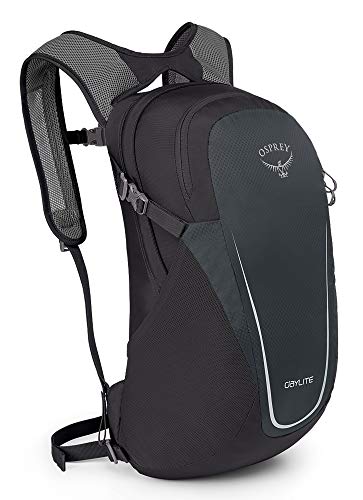
- Large panel loading main compartment provides accessibility to inside contents
- Dual stretch mesh side pockets provide additional storage options
- The multi-function interior sleeve can be used for either a hydration reservoir or tablet
If you expect to hike for multiple days, choose a larger backpack that has different compartments and plenty of storage so that you can store everything in an organized way. I have had a Gregory backpack for years and it has proven itself to be durable and comfortable to wear.
2. Hydro Flask
Anyone that has ever embarked on a trail will know how easy it is to get dehydrated, which is why you need to have enough water packed for your hike. And, staying hydrated is not exclusive to hiking in hot climates, it can happen during any hike.
The Hydro Flask will keep water cold for up to 24 hours. (Conversely, it can also keep liquids hot if you’re out snowshoeing or doing some winter hiking.)
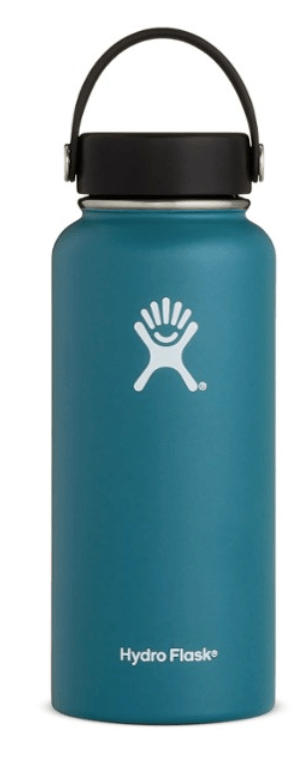
Packing an eco-friendly hydro flask will keep the liquid cool, and your body refreshed. And if you’re out on the trails for more than a day, the wide-mouth container can double as a food prep and storage container for soups and other backcountry meals.
Exercising your body depletes its energy stores. Keeping snacks in your daypack is essential for sustaining energy during the hike. No one likes that feeling of hunger on the trail, not to mention having enough to sustain you should a hike take longer than you originally expected.
Some easy snacks to pack are energy bars , fruit, and nuts. There are also freeze-dried foods that only need hot water to make a fuller meal. Either way, you want to be sure to pack the food you’ll need to stay energized for your trek.
4. Swiss Army Knife
Every hike is unique, presenting you with different obstacles to overcome. Having a trusty and compact Swiss Army Knife is a versatile tool to add to your list.
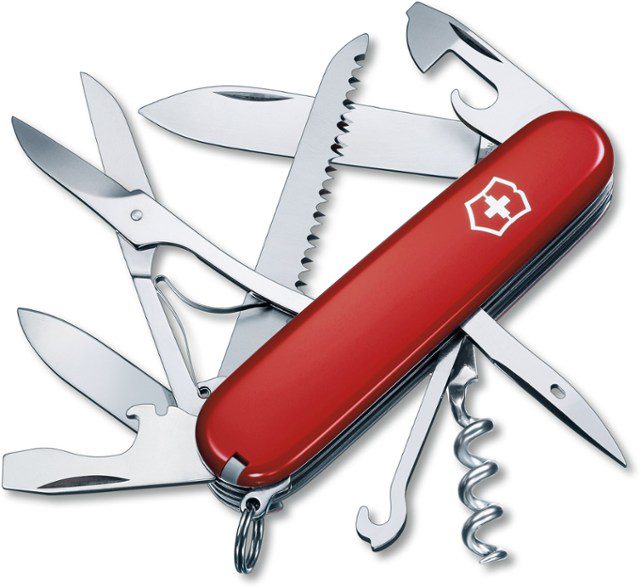
From helping to open a can of beans to fixing a loose screw on a pair of eyeglasses, and even getting a thorn out of your foot – the uses are endless. There’s a reason why a Swiss Army Knife has stood the test of time. It’s like having a toolbox in your pocket!
5. Headlamp
If you’ve ever gone on an overnight hike, you’ll know how disorientating it can be to wake up needing the bathroom in the middle of the night. But even when I’m just planning a day hike, I always bring my headlamp .
If a hike takes longer than it should or you run into some obstacles along the way, you don’t want to find yourself outside without a light.
Sure, your phone likely has a flashlight. But in a situation where you’re out after dark, you’ll want to save your phone battery and keep your hands free to catch yourself should you trip on something.
A well-fitted headlamp is very handy during these after-dark situations, whether you need to make a nighttime trip to a campsite bathroom or get a closer look at trail markings to find your way safely back.
If you’re going on an overnight hike then a camping tent is essential. As fun as it can be staring at the stars, you’ll want a tent for a warm, safe space to retire for some shuteye and for safe storage of your gear away from any wildlife or weather.

With the advancement of textile technology, tents are now designed to be lightweight, durable, compact while still being protective and resistant, especially in rain and wind. This REI tent also lets you enjoy the views through the mesh panels on top when the weather is nice.
7. Sleeping Bag
As romantic as falling asleep alongside the evening fire may sound, waking up at 2 a.m. because your bones have frozen is not much fun.

A versatile sleeping bag suitable for a variety of seasons is one of the top hiking necessities when trekking overnight. I’ve used this line of sleeping bags for overnight hiking in different temperatures and seasons from Canada to Africa and have always been warm and comfortable.
If you’re not planning a multi-day hike, keep reading for a piece of gear I always include in my daypack just in case I find myself in a situation where I need warmth and protection.
In the wilderness, it gets really dark once the sun sets. The headlamp I mention above is great for day and multi-day hiking trips alike. But, if you’re setting up camp for the night, don’t fumble around without guidance. This handy camping lantern provides enough light to cook, wash and go about your business even when it’s dark.

For overnight hikes, you can even clip it to the top inside of your tent for enough light to brighten the whole area. It’s amazing when you’re trying to find something in your backpack or need light to read or play cards.
9. Navigation Tool
Whether you have a good sense of direction or not, having a compass or map to help navigate out on the hiking trail is essential. The wild can be just that – wild! Depending on where you choose to trek, going too far off of the path can even be dangerous.

- PROFESSIONAL GRADE: This professional grade military compass will always lead you in the right direction. The hiking compass is ideal for camping, military usage, emergencies, and anywhere the beaten track takes you.
- ERGONOMIC DESIGN: The lensatic military compass increases the reading’s accuracy with a lens on the rear sight that magnifies the card dial – so you’ll always get an accurate reading. Please keep the compass as horizontal as possible so that it turns and points in the correct direction.
- MILITARY CONSTRUCTION: The lensatic compass is tough and tenacious, the military construction with waterproof and shakeproof properties is built to survive the harshest of hike.
Some National Parks and hiking areas offer paper maps. But even still, it’s a smart choice to also have a compass to ensure you can find your way should you get lost or accidentally veer off the hiking trail. Again, I prefer not to use my phone for this because of battery life so I recommend having a small compass tucked away just in case.
10. Rain Jacket
Mother Nature can be a real tease sometimes. One minute, the skies are clear without a breath of wind, and the next minute clouds roll in and it begins to rain. I have some more tips on what to wear on the hiking trail below. But no matter what, I always have a weather-proof jacket to stay dry and comfortable.
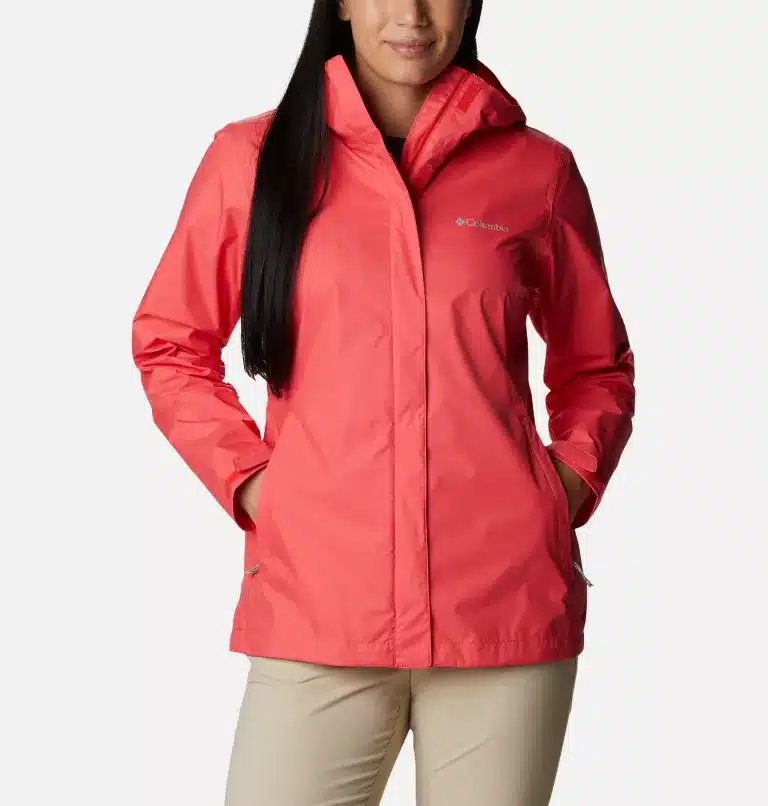
The great thing about this jacket is it packs into its own pocket making it easy to store away or clip to your backpack when the weather is good. No need to tie it around your waist or come up with another makeshift way to carry a jacket on the hiking trail!
11. Trekking Poles
Even if you don’t have any lower body aches and pains, trekking poles are a great asset when walking long routes or on steep trails.
Whether you’re hiking in icy conditions, such as Johnston Canyon’s ice walk or up Zion National Park’s Angels Landing , trekking poles can make the journey a lot easier. And, the sturdy poles are particularly helpful when it comes to protecting your knees on downhill trails.

Emergency Hiking Supplies
The only thing worse than finding yourself in a sticky situation on the hiking trail is having no way out of it. These emergency essentials are important to prevent any hiccups…and even disasters.
12. Fix-All Tape
A small gust of wind can rip a small hole in your tent, you can fall and break your trekking poles or you may put your backpack down on a nasty thorn.
Tenacious Tape is a durable, waterproof repair tape that fixes rips, holes, and tears. It’s easy to tuck away and an absolute lifesaver when you need a quick fix for your hiking gear or clothes.
13. First Aid Kit
It’s never fun planning for a worst-case scenario, but not being prepared is even less pleasant!

Packing a first aid kit provides huge relief in the unfortunate event you or a hiking companion gets hurt, feels ill, or suffers insect bites and blisters. This kit is specifically designed for outdoor adventures and has enough to get you through 2 days.
14. Sunblock & Insect Repellant
As someone who travels with a sun allergy , I’ve learned there are various ways to prevent the sun from ruining my adventures. The easiest way to do this is to wear UPF clothing but I always pack sunblock – and apply it regularly, even in the cold weather.
Similarly, insect repellant is a must. Nothing ruins an outdoor hiking adventure faster than getting bit by mosquitoes! If you’re heading into a heavy mosquito area or somewhere with a high malaria risk, consider treating clothes with Permethrin .
15. Hydration Tablets
If the sun does happen to get the better of you, then you could get dehydrated. It’s easy to prevent this by packing a few hydration tablets.
They add no weight to your backpack and can be dropped into your Hydro Flask to work wonders with sun-induced headaches and cramps.
Even the best-planned day hike can run into problems. There’s no need to carry a sleeping bag if you don’t intend to camp. But, a lightweight body sack can serve as a lifesaver if you have to unexpectedly spend the night outside.

The Emergency Bivy protects the body from the elements, traps your body heat for warmth, and provides temporary shelter. Again, this piece of essential hiking gear is super lightweight and can be packed at the bottom of your backpack just in case.
Tech Backpacking Essentials
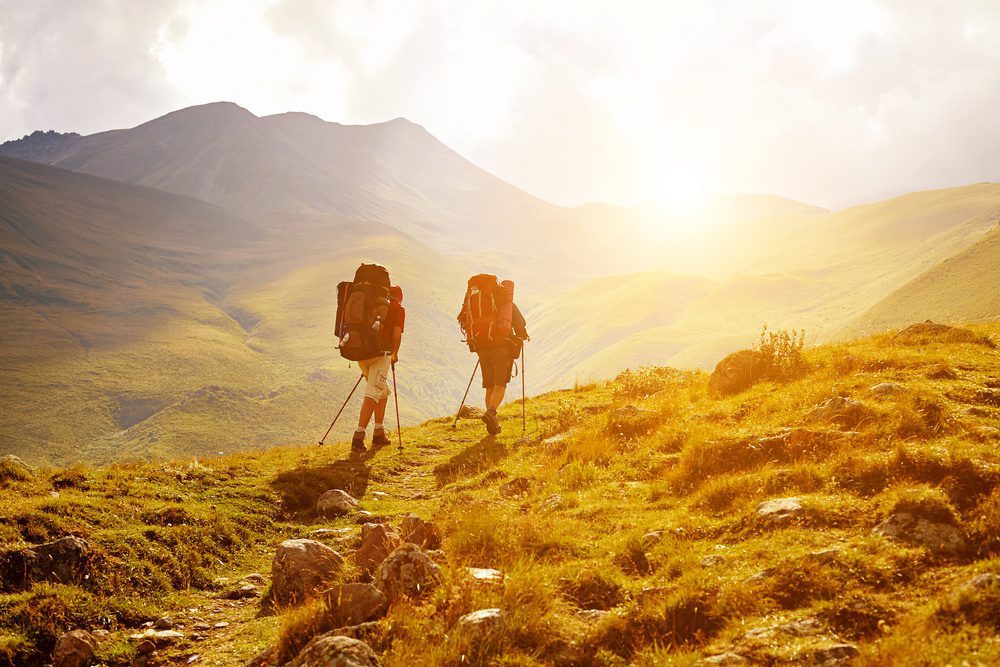
While hiking is all about being out in nature and disconnecting, having a few gadgets can help make your experience smoother and more memorable. Here are some tech essentials that I always carry with me.
The next best thing after an unforgettable hike is being able to relive the memories once it’s over. A compact digital camera is a great addition to your backpack, allowing you to capture photos of the landscape, wildlife, and those special moments you want to remember.
As much as I love snapping photos with my phone, I prefer to bring along my Sony a7 iii mirrorless camera . It takes amazing photos, and I’m a sucker for landscape shots when hiking.
18. USB Power Bank
Although sometimes there’s not much of a signal out on the trails, your phone still needs to stay charged whether you’re using it to take photos or stay in touch with family and friends.

- Colossal Cell Capacity: 26,800mAh of power charges most phones over 6 times, tablets at least 2 times, and any other USB device multiple times.
- Charge 3 Devices at Once: 3 USB output ports together with Anker’s PowerIQ and Voltage Boost technology ensure charging for three devices simultaneously (not compatible with Qualcomm Quick Charge).
- Recharge with Dual 20W Micro USB: A full recharge of the power bank takes just over 6 hours while using both input ports (wall charger not included).
Perhaps someday there will be a cell phone battery that can last a few days. But for now, a USB power bank can give your phone that little bit of extra juice when needed, and even your camera, if it’s compatible like mine is.
I used this power bank to recharge my phone and camera in Africa out in the wilderness for several days before we returned to a source of power.
19. Camera Tripod
This bendy-legged camera tripod is more of a nice-to-have than an essential per se, but if you have space, it can offer a lot of fun.
As a lightweight, easy-to-pack gadget, the small tripod makes it easier to snap creative photos on your hike. It can wrap around tree branches, picnic tables or set up on a flat surface like a tripod. The remote shutter button also makes it easy to take selfies or group photos while still capturing all the natural beauty, too.
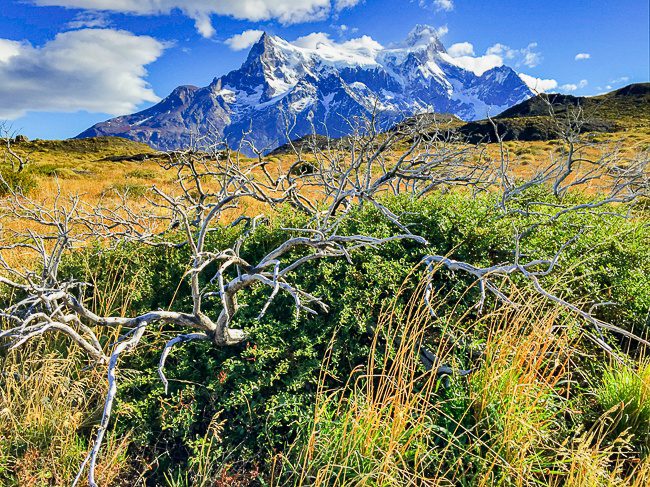
Hiking Gear List Extras
Now that your backpack is full of the important things to bring on a hike, you’re almost ready to hit the trail. Just in case you’re planning a multi-day hike, you’ll want to bring along a couple of things to help make cooking easier.
20. Cooking System
Having a quick-cooking system makes preparing nourishing meals both easy and convenient, without having to carry various supplies.
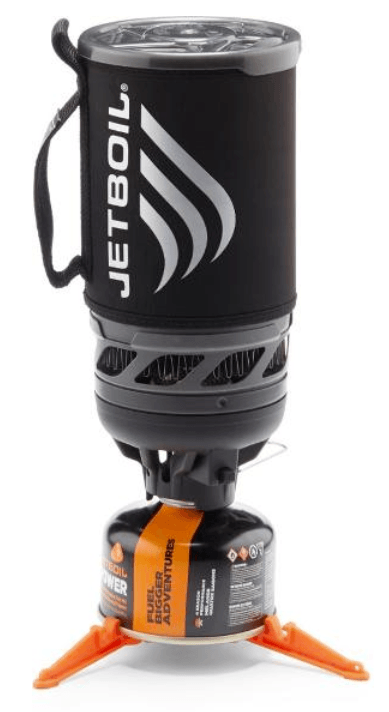
This flash boil system can heat water in just seconds and be used to rehydrate or mixed with dried or instant foods. Best of all, the whole system weighs less than 1 pound.
21. Coffee Press
Although I’m not a huge coffee fan myself, I know that for many people their day only truly begins when they take their first sip of coffee – like my husband!
For the sake of most humans on the trail, the day becomes a lot more pleasant after a hot cup of java. For this reason, a coffee press is a hiking essential for overnight adventures…not to mention an immediate mood-lifter.
What to Wear Hiking
The items below are musts for any kind of hike. For more specifics about hiking clothes, see my recommendations about what to wear on a hike.
22. Hiking Boots
Possibly the most important piece of wearable gear on your list of hiking must-haves is a comfortable pair of hiking boots . I’ve happily worn these boots across 5 continents hiking on all kinds of trails and they’re still my go-to today.
Consider that you’re going to spend a good few hours in your shoes, so make sure they fit you well, are comfortable to walk in, and can endure the various elements expected on your trail.
23. Hiking-Appropriate Pants And Clothing
This may seem like a no-brainer, but wearing the right hiking pants can have a serious impact on your hiking experience. It’s important to consider the season that you’ll be hiking in and make sure that the fabric is durable and quick-drying. You’ll also want your legs to stay protected against plants and insects.
If you’re hiking in winter, I’ve put together a list of the best hiking pants for women to give you a head start on picking the right pair.
Other important hiking clothes include a sun-protective hat , moisture-wicking socks, and clothes made from breathable fabrics.
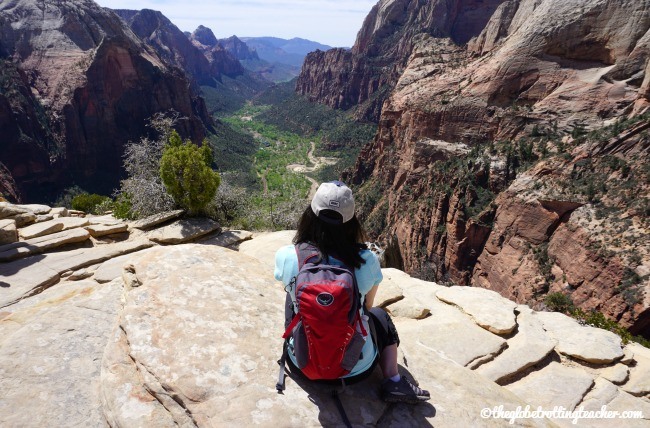
Is Your Backpacking Checklist Complete?
This basic list of overnight and day hike essentials is a great place to start preparing for your trip. I hope my mishaps and experiences give you a head start as you pack for your next trekking adventure.
In addition, there’s lots of room to customize and adapt your list depending on whether you’re hiking in Arches National Park or the humid tropical jungles of Mindo, Ecuador .
And if you’re looking for a gift and reading this post as inspiration, then you can be sure these items, as well as this list of gifts for hikers , make the perfect presents.
Either way, you’re sure to be prepared for a successful day out on the trails!
What are your hiking essentials?
Like this post? Please share it using the share buttons below.
Related Posts

12 Useful Travel Gifts Every Traveler Needs

Do You Know How to Avoid the Most Common Travel Mistakes?
2 thoughts on “23 hiking essentials – what to bring on a hike”.
Thanks for the great tips! Hoping for s fall trip to another beautiful national park!
Thanks for reading, Kim. 🙂 Fall is a great time to get to the National Parks!
Leave a Comment Cancel Reply
Your email address will not be published. Required fields are marked *
Save my name, email, and website in this browser for the next time I comment.
This site uses Akismet to reduce spam. Learn how your comment data is processed .
Privacy Overview

Out & Across
Find your adventure in canada and beyond, 10 day hiking essentials: what to bring on a hike.
- by Thomas Coldwell
- Posted on May 7, 2022 March 15, 2024
Planning a hike can be intimidating. And choosing from an ever-growing list of gear options can become overwhelming. What you bring often depends on weather conditions, hiking terrain, trail length, and, of course, your personal preferences. At a minimum, it’s best to keep the 10 hiking essentials in your pack. So what’s needed for a safe and successful outing? That’s what this post is all about.

First, let me confess: I haven’t always known what to bring on a day hike. And there have been times when I didn’t carry day hiking essentials, even though should’ve known better. I’ve run out of water on scorching hot days, becoming seriously dehydrated. One time, I didn’t apply sunscreen (I hate the feel of it…) and ended up with painful second-degree burn blisters (felt even worse!). Another time, I got caught in a downpour without rain gear and I’ve been disoriented without proper navigation tools. Luckily, through all of these mistakes and mishaps, I’ve never needed an emergency rescue (knock on wood!). Today, I believe in being prepared by bringing day hiking essentials. When it comes to gear, I’ve learned what works for me and what doesn’t. And I keep trying new products and adapting the contents of my pack when needed. You’re not sure where to start? Keep reading to learn more about the 10 hiking essentials system.
This post includes affiliate links. If you make a purchase through one of the links, I may receive a percentage of the sale at no extra cost to you.
Table of Contents
Hiking Preparation

Are you new to the world of hiking? That’s great! I’m glad you’re taking the time to deepen your knowledge and sharpen your skills. Here you’ll find hiking gear essentials and nice-to-haves for your next day trip (including some of my personal gear choices).
If you’ve brand new to hiking, start with a trail that matches your physical fitness and ability. Don’t choose something long and technical. Start on a short and popular path between two to four kilometres. Get used to your hiking boots or trail runners, get used to your pack, and test out your gear. During your hike, is there anything you wish you brought? Add that to your pack. After you’ve tested the waters, plan a longer or more technical trail. You may be surprised where your legs can take you!
Similar to choosing the right hiking location, bringing good gear will help you avoid unpleasant circumstances and—in extreme scenarios—potentially life-threatening situations. Pack what you need. Then pack a little bit more. Be prepared for whatever comes your way.
Tip: If you plan to hike often, leave your daypack ready to go. Constantly unpacking makes hiking preparation harder than it needs to be. Of course, replenish water, snacks, and other items as needed. I find it much easier to stay motivated to hike when my gear is already packed!
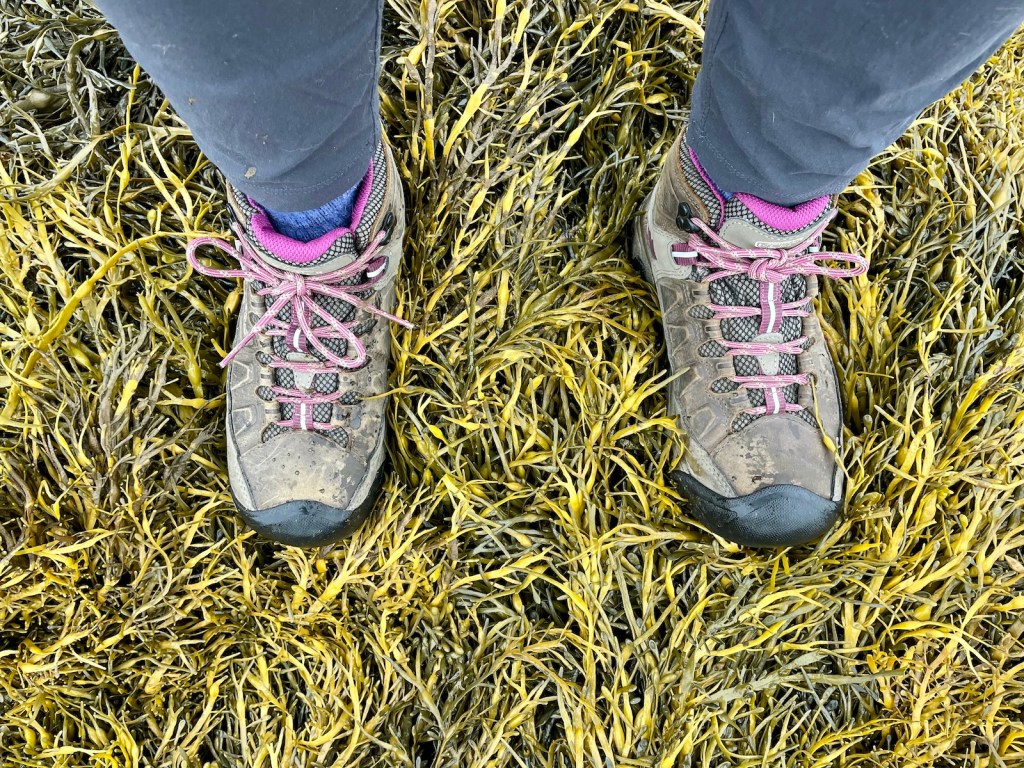
Before heading out, choose hiking footwear that works for you. Take your time to find comfortable and supportive hiking boots or trail runners. If you don’t find the right fit, your heel will lift and nasty blisters can result. Or the front of your foot will rub against your boot on the descent, which can also lead to blisters. Break in new footwear before a long trek. When we rely on our feet to take us 5, 10, or 20 kilometres or more, we have to treat them well!
➔ Shop hiking footwear at MEC
While hiking in the Rockies, I came across a guy wearing regular sneakers with little tread, inching his way down a steep, gravel trail on all fours. Long story short, he borrowed my trekking poles and continued to slowly descend. Meanwhile, the thick tread on my Scarpa Kailash boots allowed a safe and not-too-difficult descent. Always wear the right footwear for the terrain.
Tip: Break in new hikers before planning a longer trek. Start by wearing your shoes or boots inside to make sure there’s no obvious discomfort. After you’re confident in the fit, plan a few shorter hikes to help break them in. Then you’ll be ready for your next big adventure!
Daypack — Bring Day Hiking Essentials

I used to hike with an old backpack that wasn’t particularly comfortable. Don’t get me wrong, that blue MEC bag served me well for many years. But after upgrading to a more technical daypack, I’d be lying if I said I wasn’t happier on the trail.
➔ Shop for daypacks at MEC
One of the best daypacks in the market is the Osprey Hikelite 18 . I’ve been using this pack for a few years—hiking, biking, paddling, and everyday use—and I can’t say enough good things about it. The Osprey Hikelite is supportive and comfortable, with a metal frame, air ventilation for the back, water bladder pouch, two large pockets, and much more. It’s hard to believe how many bells and whistles such a small daypack can have. Oh, I should also mention that the Hikelite includes rain cover to keep everything dry.
Read next: Cape Split Trail: One of the Best Hikes in Nova Scotia
10 Day Hiking Essentials List

The first “Ten Essentials” list was developed in the 1930s by The Mountaineers, a Seattle-based nonprofit for outdoor adventurers. Since then, the 10 essentials have become a foundational part of outdoor education and recreation.
No matter the hike, carry the 10 hiking essentials in your pack. You may also want to add any gear that helps you feel more comfortable and confident on the trail. You might notice that 10 essentials lists can vary slightly, but the goal to be prepared for every situation remains the same.
Every hiking pack should have:
1) Water: Carry enough drinking water and be prepared to find more. ➔ Shop water filtration at MEC 2) Food: Pack extra snacks. This may become your emergency meal. ➔ Shop camping food and drinks at MEC 3) Navigation: Bring a map and compass and know how to use them. Practice your orienteering skills before heading out. GPS and satellite communication technology can be very useful, but doesn’t replace map and compass on the trail. ➔ Shop navigation resources and tools at MEC 4) Headlamp: Bring a headlamp with extra batteries. ➔ Shop for headlamps at MEC 5) Knife: Carry a multi-tool or fixed-blade knife—or both. ➔ Shop knives and multi-tools at MEC 6) Fire: Be prepared to make a fire. Bring a lighter, matches, or flint to start your fire. In some cases, consider carrying a camp stove and fuel to cook meals or boil water. ➔ Shop stoves, fuel, and fire starter at MEC 7) Sun Protection: Wear sunscreen, sunglasses, and sun-protective clothing. Avoid the harmful effects of the sun’s UV rays. ➔ Shop sun protection at MEC 8) First Aid: Pack a first aid kit with medication and safety gear, including bug repellent when needed. Bring a whistle as a signalling device. ➔ Shop first aid kits and supplies at MEC 9) Clothing: Bring extra clothing and several layers to stay warm and dry. Prepare for any possible weather situation. ➔ Shop for hiking and camping clothing at MEC 10) Shelter: Bring a lightweight shelter, like a siltarp or bivy sack. Pack lightweight rope to secure your shelter. ➔ Shop camping tarps and shelters at MEC

Carry enough drinking water to stay hydrated. I typically bring my two-litre Osprey bladder bag ( Buy on Amazon ) on a day hike. On the hottest days, I often pack a full Nalgene water bottle ( Buy on Amazo n ). If you’re hiking with your dog, you may need to bring extra water if there are no water sources near the trail.
Be prepared to find more water in lakes, rivers, and streams. There are many water filtration and purification systems to remove harmful bacteria. Choose what works best for you. I have the MSR Miniworks ( Buy on Amazon ) and MSR Trailshot ( Buy on Amazon ) filters, though I mostly use the Trailshot due to its compact size and weight. I also like to bring the Platypus GravityWorks 4.0L Filter System ( Buy on Amazon ) for longer hiking or paddling trips. Purification drops or tablets ( Buy on Amazon ) are very efficient for large volumes of water. Boiling water is generally my last resort, but can be quite useful in the winter.
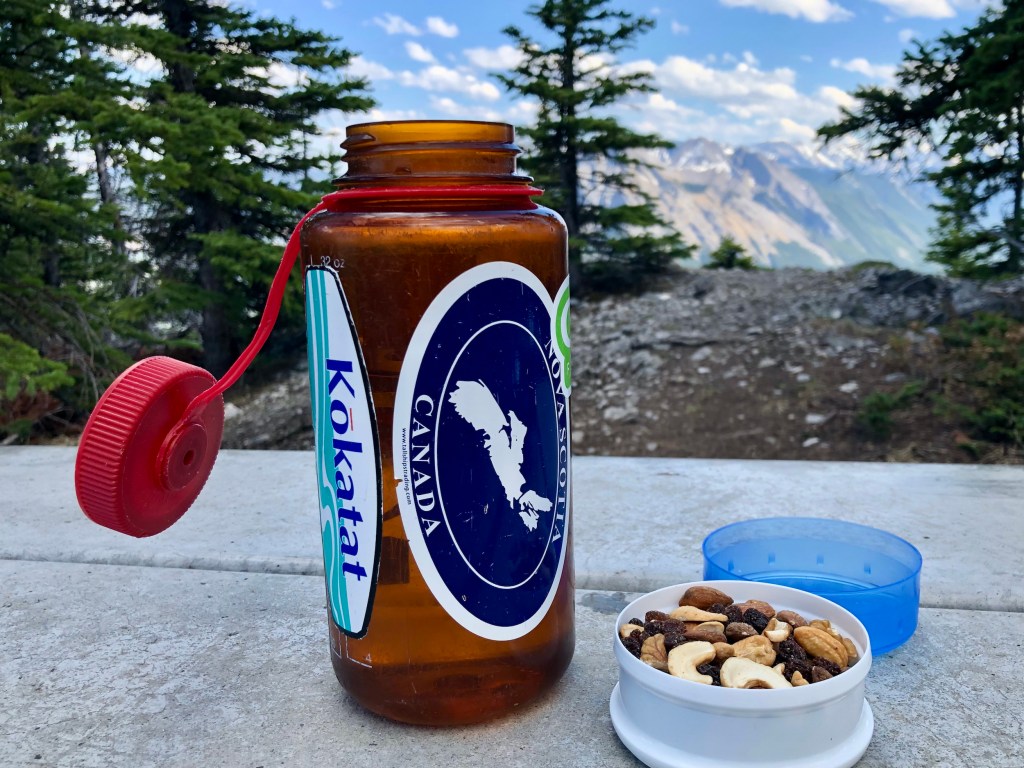
Don’t skimp on snacks and meals, especially on longer day hikes. Fuelling your adventure is crucial. Stopping for a water and nutrition break can drastically improve your day hike. Of course, the promise of a tasty snack can also be motivation for reluctant young hikers.
Bring calorie-dense foods to give your body energy on a long day trip. In an emergency situation, you may need to rely on the food and water in your pack while waiting for rescue. I typically have extra granola bars, protein bars ( Buy on Amazon ), high-energy chews ( Buy on Amazon ), and nuts (almonds or cashews) in my daypack.
Read next: The Grotto Hike in Bruce Peninsula National Park

No one plans to get lost. But every hiker should be prepared for the possibility. Bring a map and compass and practice your orienteering skills before you go. While I tend to use my GPS, carrying a paper map and compass is a necessary backup. When using a GPS, bring an extra battery or powerbank to keep devices charged.
What if you get lost or hurt? If you’re unable to self-rescue, you may need to call for an emergency rescue. I recently started carrying the Zoleo satellite communications device ( Buy on Amazon ) for emergencies. With this device, I can message friends and family or call for an emergency rescue through the Iridium network.
Note: Always leave your trip plan with someone you trust. In your plan, include the hike location, approximate return time, and time to call for emergency response.

Don’t get caught in the dark. Plan your hike during daylight hours and always bring a light source with you. Most hikers prefer headlamps ( Buy on Amazon ) to stay hands-free. Bring extra batteries along, too. Relying on a phone light isn’t a good idea.
Read next: Miles Canyon Hike Near Whitehorse, Yukon

Knives can be extremely useful in the wilderness for food preparation, first aid, gear repair, and much more. Every adult hiker should carry a knife. I typically bring a small multi-tool and fixed-blade Mora knife ( Buy on Amazon ) in my pack.
Not a bad idea to carry a small gear repair kit, especially on longer day hikes. Add things like duct tape, zip ties, safety pins, rope, and tent pole splints. On the West Coast Trail , I repaired my broken trekking pole using a tent pole splint and medical tape—good as new!

In an emergency situation, fire can make all the difference. Starting a controlled fire for warmth or to signal an emergency can be crucial. Bring several lightweight fire options, including waterproof matches ( Buy on Amazon ), flint, or a lighter.
In the winter, consider carrying a lightweight stove to boil water or melt snow. I often bring my Jetboil camping stove ( Buy on Amazon ) to boil water for tea in cold temperatures.
Read next: Nairn Falls Hike Near Whistler, BC
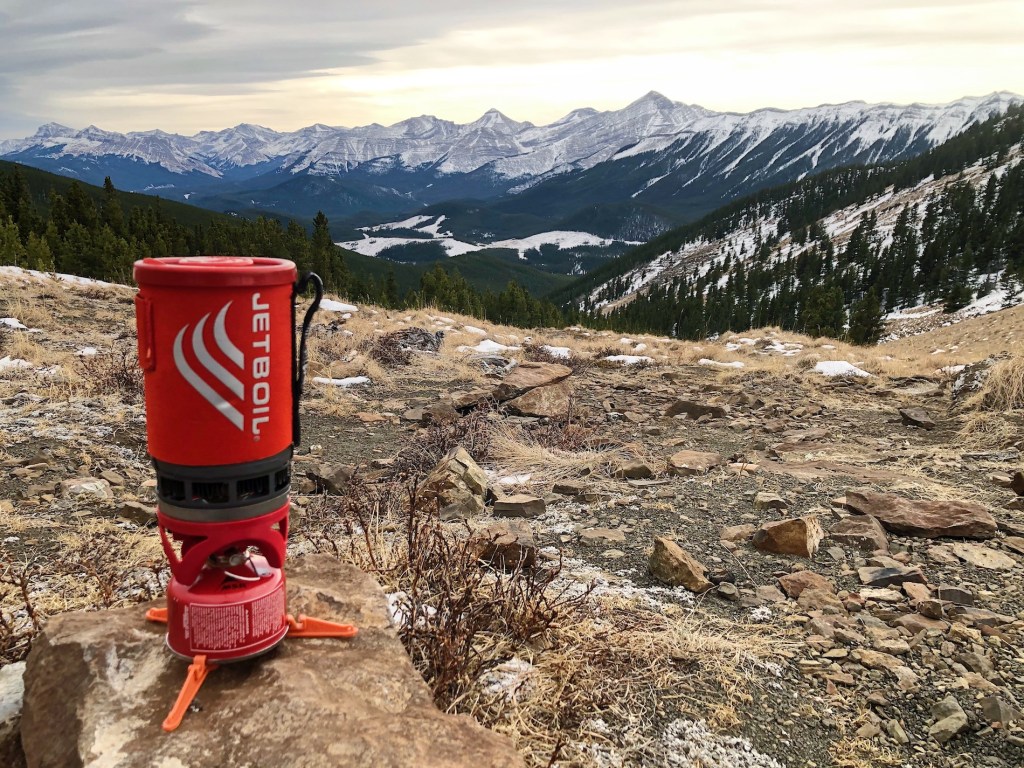
Sun Protection
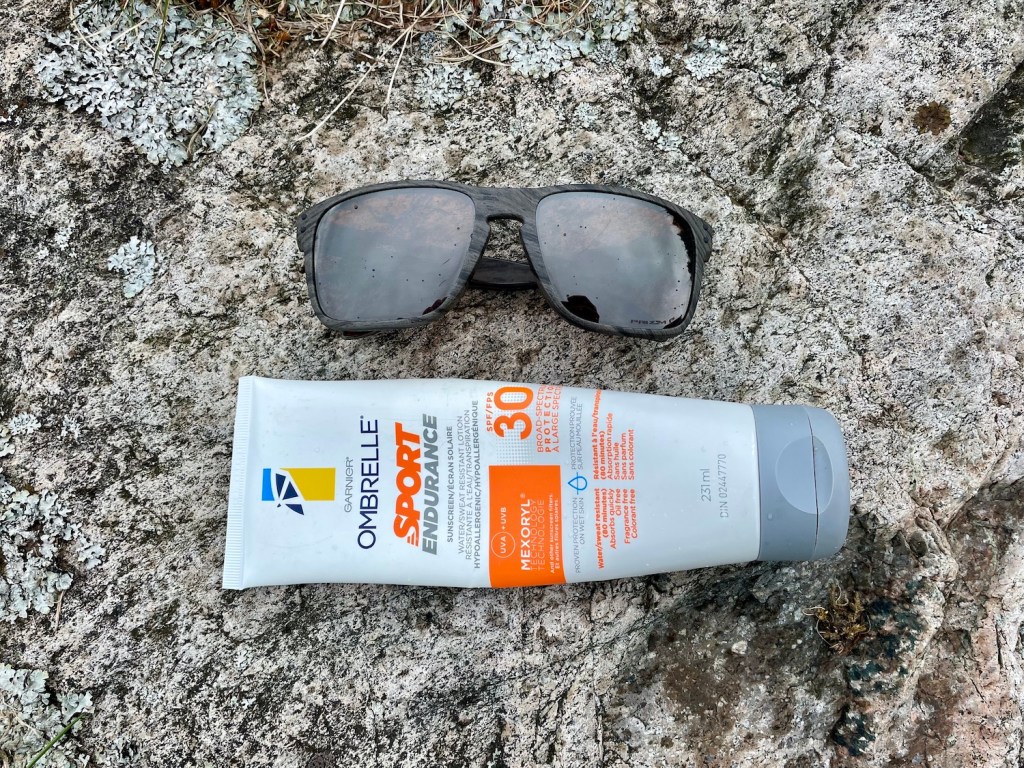
Don’t underestimate the importance of sun protection. There are plenty of risks that come with prolonged sun exposure, including dehydration, sunburns and blisters, and heat exhaustion that can become heat stroke. Severe dehydration, sunburns, and heat stroke often require medical intervention.
Bring sunglasses , sun-protective clothing, and sunscreen on your hike. Without proper sun protection, you risk sunburns that can cause skin cancer (melanoma) and eye issues like cataracts. Wear a hat to keep the sun off your head. Wear a long-sleeve shirt and pants with an ultraviolet protective factor (UPF). Protect exposed skin by applying sunscreen with a sun protection factor (SPF) of at least 30. Reapply as often as every two hours. On hot days, drink more water than normal during your hike (add electrolytes, too).
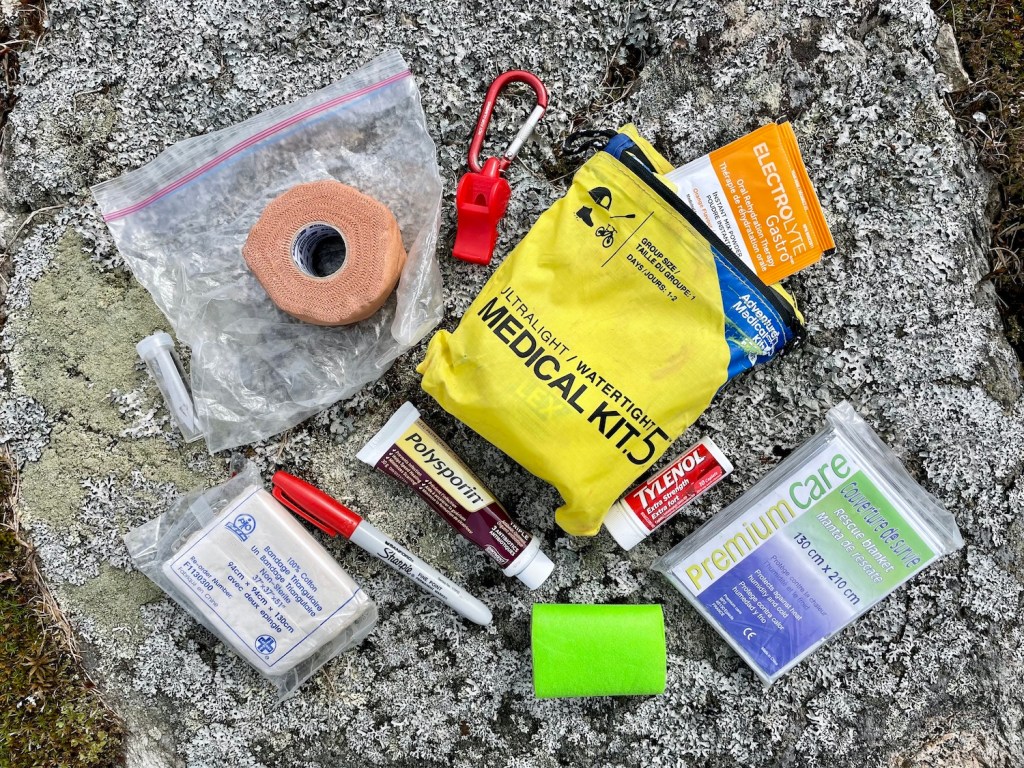
Bring a first aid kit and know how to use it. Adventure Medical Kits are a good place to start, coming in different sizes with waterproof ziplocks to keep everything dry. While pre-packaged first aid kits remove the guesswork, many outdoors people choose to adapt their kit for their own purpose. Regardless of the trail distance or duration, I typically have a first aid kit in my pack (usually this one ).
Most first aid kits don’t come with medicine. But over-the-counter drugs like Tylenol, Advil, and Benadryl can be very useful in the backcountry. I also add Polysporin to help prevent infections in small wounds. Rehydration packets are always in my kit. While some prefer Moleskin, Leukotape is invaluable for blister prevention.
Tip: A first aid kit isn’t very useful without first aid skills. Not very comfortable or confident in first aid? Take wilderness first aid training before heading out. You’ll learn how to assess and respond to difficult situations in the wilderness—when medical intervention is far away. First aid saves lives; it’s essential in the backcountry.
Extra Clothing

Always bring extra clothing on a hike. Hikes often begin in beautiful weather, but we must be prepared for things to change. Ask yourself, Am I ready for the worst-possible weather scenario? Don’t settle for anything less than a resounding “yes!”
Use the layering system—base, mid, and outer layers—to make sure you have enough warmth and protection from the elements. Depending on the weather, I typically hike in a merino wool base layer and sometimes a fleece mid layer for extra warmth. I also carry this Patagonia down sweater in my pack. And I have my Arc’teryx Beta LT shell just in case. Outer layers (or shells) protect from wind and rain and help keep you warm. Regardless of the season, bring gloves (I use these ), a warm hat or buff, extra socks (like these ), and a warm jacket in case the temperature drops. In the winter months, consider bringing extra insulating layers for your upper and lower body.
Read next: 5 Easy Hikes for Rocky Mountain Rookies (Plus a Bonus!)

If you’re hiking any distance, bring an emergency shelter with you. Weather can change quickly. And a shelter might be necessary for any number of reasons. Consider packing an ultralight tarp , bivy sack, or an emergency blanket .
Read next: Mount Carleton Hike: Highest Peak in the Maritimes
Additional Hiking Gear Options
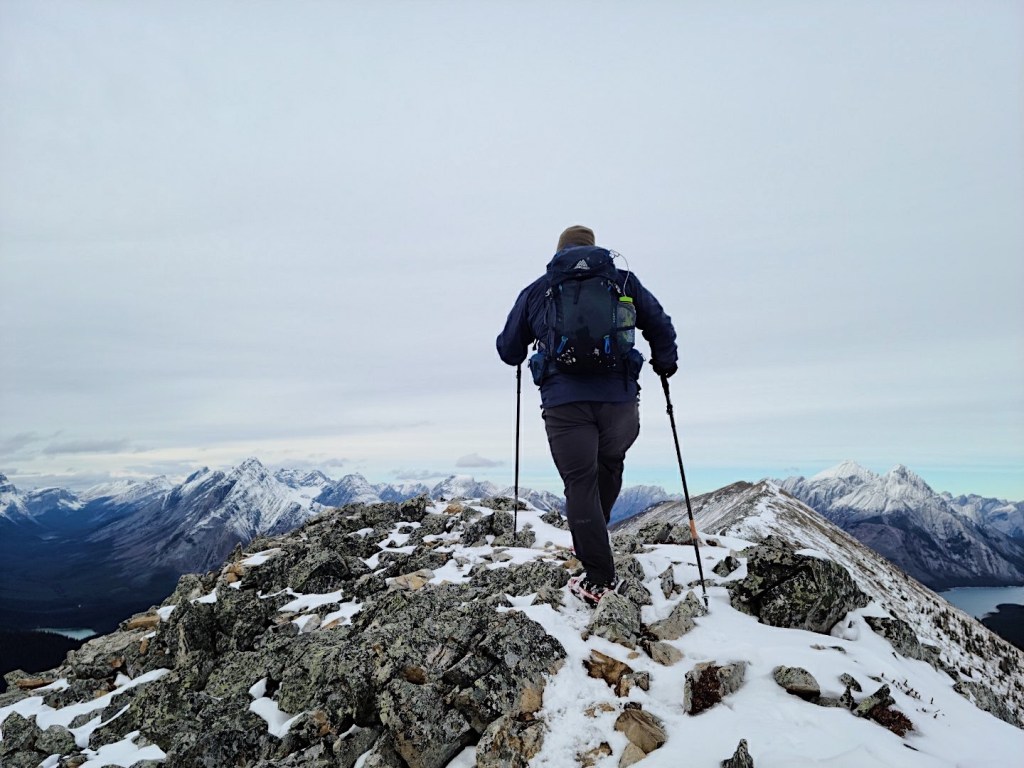
Trekking Poles: Hiking poles are for everyone. I bring poles on most treks and wind up using them most of the time. If you want to save your knees, use trekking poles on the trail. I use these Komperdell poles and absolutely love ’em.
Trail crampons: If you’ve never used trail crampons, I’d suggest getting a pair for winter hiking. They’re an essential part of my winter daypack. I use these .
Gaiters: I don’t use gaiters very often. But I like how they keep sand out of my boots when hiking along the beach. Many hikers use gaiters in tall, wet grass or when hiking in deep snow. Check out these options .
Toilet Paper: When nature calls, you’d better answer. Always be prepared to go number one and two in the woods. Some people prefer leaves over TP. You might want to pack a little trowel to dig a cathole.
Power Bank: I always hike with my phone—it’s my camera, notebook, and GPS. But a dead battery quickly turns a handy device into a useless brick. That’s why I bring at least one power bank ( Buy on Amazon ) to keep my device charged. Don’t forget your charging cable.
Camera: I often hike with my Canon DSLR camera. While camera gear adds extra weight, it’s worth it for shots I wouldn’t otherwise be able to take. Sometimes I bring my GoPro along for video and photo, too.
Bear spray: If you’re hiking in bear country, don’t forget the bear spray. I also carry an animal deterrent horn .

Did you find this post helpful for your hike? What do you carry in your day pack? Let me know in the comments below!
Save this for later? Hover over the image to add to Pinterest!
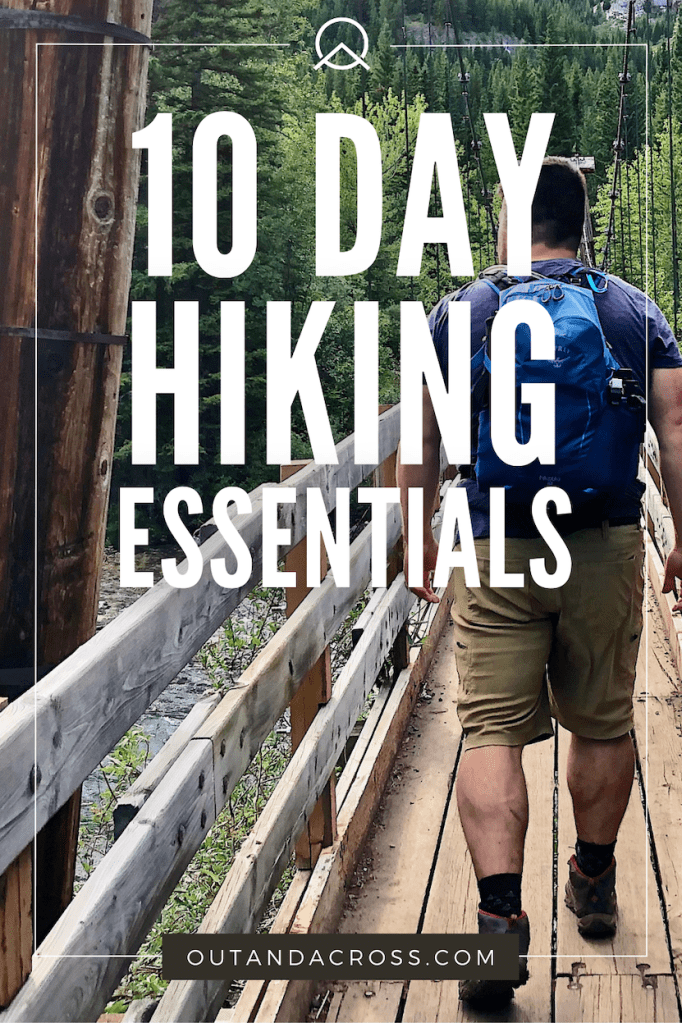
Thomas Coldwell has always been fond of the outdoors. He loves hiking, paddling, and camping, and thoroughly enjoys creating outdoor adventure resources for people like you. Originally from Nova Scotia, Thomas has lived in four Canadian provinces (NS, NB, ON, AB) and has travelled in 20 countries and counting.
Related Posts
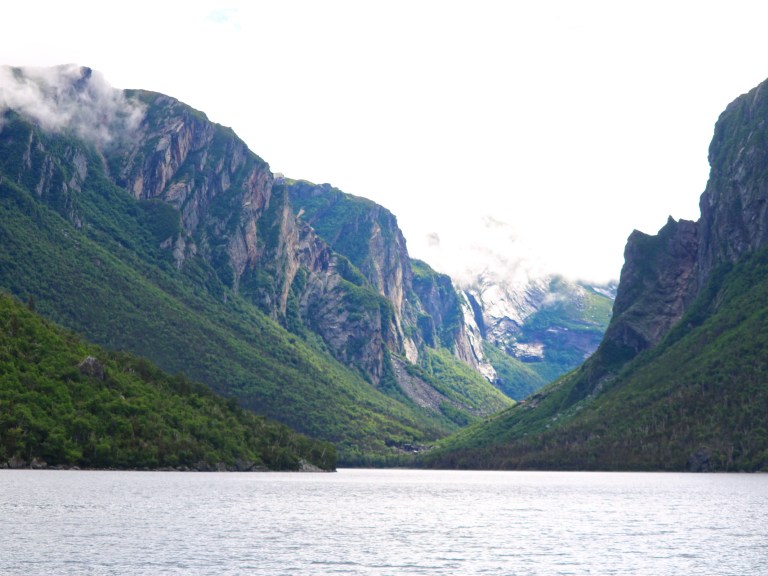
Share this:
Leave a Reply Cancel reply
Discover more from out & across.
Subscribe now to keep reading and get access to the full archive.
Type your email…
Continue reading
- Tips & Tricks
- Tales from the Trails

What to Take Hiking – Day Hiking Essentials Checklist
Hiking | 0 comments

Hiking can be a fun way to exercise, sojourn with nature, and even make new friends. Knowing what to take hiking makes the whole experience even more wholesome. With this list, we have highlighted some of the most important day hiking essentials checklist for your next big trip outdoors.
Like with every activity, being adequately prepared and equipped for your next hiking trip will fill you with the confidence to take on whatever the trail may throw at you. However, as a beginner, knowing what to take as hiking gear may prove challenging since there’s so much to consider.
Will you need a sun hoodie for sun protection or a rain jacket for wet weather conditions? How about trekking poles? How about toilet paper? Should I bring a duct tape? What about shoes? Should you wear hiking boots, trail running shoes or hiking shoes, and what’s the difference? How about a hand sanitizer?
These are just a few of the questions that will probably plague your decision-making as a new hiker trying to make a comprehensive list of the best backpacking gear for hiking.
Table of contents
How to determine what to take hiking, first aid kit, emergency shelter, backpacking gear breakdown: what’s worth the investment.
Every hiker is different, and so is every hiking excursion. Some people like to take on the Appalachian Trail regardless of the time of year, while some only want to go on a short day hike to their local hiking trail in the middle of summer.
Summer hiking and cold weather winter hiking are two very different beasts, and what you bring on one won’t necessarily be what you bring on the other. So, while compiling a list of what you need to bring on your hiking trip, you must determine what kind of day hike it will be like choosing between using hiking boots or hiking shoes.
For this discussion, let’s assume that, as a hiking beginner, you aren’t going to take on Mt. Everest on your first attempt. In this case, you are probably gearing up for a simple day hike with friends on a national park. As such, you will need the essentials for a day hike, including sunglasses, hiking boots,hiking pants, comfortable clothing, a camera, hiking poles and a lightweight daypack.
With that in mind, here is a more comprehensive list of what to take hiking.
Probably one of the most essential pieces of hiking gear, a day pack will make your hiking experience more comfortable and convenient. While you can use any bag as a day pack , when it comes to hiking, the best option would be a hiking backpack for a day hike.
How big this backpack is will depend on how long you intend to go hiking and how much outdoor gear you intend to carry. Day hikes usually call for backpacks under 30 liters like this TETON Sports Oasis 18L Hydration Pack with a free 2-liter water bladder. This is often big enough to carry some essentials and a thin outer layer.
If you intend to carry a lot of snacks, maybe a huge camera or binoculars,toilet paper, you might be better off going for something in the 35 to the 40-liter range. Something like this Maelstrom Hiking Backpack is perfect. Not only is it big enough (40 liters), but it also comes with plenty of pockets and comfortable straps that won’t dig into your skin and perfect for day hikes.
Here are some factors that you should consider when looking for the right day backpack for hiking:
- Plenty of easy-to-reach outer pockets
- Lots of interior pockets for gear organization
- Mesh paneling at the back allows for breathability
- There are lots of clips that you can use for your helmets and trekking poles
- A sleeve for your water bladder
The 10 Essentials for Hiking
Hiking is like most other hobbies; you will personalize the list of essentials as you go along. However, if you are just starting out, there is a day hiking checklist that you must have with you regardless of the distance. This list is often referred to as the “10 Essentials”.
Here’s a list of the 10 essentials you must bring when day hiking.
Since you will be in the great outdoors tackling all kinds of hazards on the trail, it’s often best to be prepared in case of any accidents. Always bring a basic first aid kit with you.
This Adventure Medical Kits Mountain Series Hiker Medical Kit is an excellent option because it’s specifically designed for hiking accidents.
It’s a compact and lightweight first aid kit conveniently packed for ease of use. It has an external map showing you where everything is inside the pack and see-through pockets to protect the supplies from any dirt or moisture while keeping the first aid kit within easy reach.
Water is an essential part of day hiking essentials checklist, regardless of the location. Most day packs come with a sleeve for your water bladder, like this 3-liter Osprey Hydraulics Reservoir or water bottle . You need to pay close attention to how much water you can comfortably carry and how much you might need, especially if you are hiking in hot and arid places such as the Grand Canyon.

The simple rule of thumb would be to carry at least 0.5 liters of water for every hour you intend to hike. If you are going on strenuous hikes, you might want to double that amount.
A good trick that veteran hikers use is to pack a water filtration device such as this LifeStraw Personal Water Filter for Hiking in addition to your hydration bladder. It’s lightweight, easy to use and saves you all the hassle of carrying around liters upon liters of water, and several water bottles which will add to the weight of your day pack. With this filtration device , you can make almost any kind of water safe to drink.
Unless you go hiking in your backyard, you should always be prepared for the eventuality that something might go wrong, and you might need to find an emergency shelter or use an emergency blanket.
With something like this SOL Emergency Bivvy with Rescue Whistle and Tinder Cord , you won’t have to scramble should the need arise.
Not only is this bivvy exceptionally convenient in emergency situations, but it’s also extremely lightweight and smaller than your fist, making it easy to carry. It’s also quite warm.
Make it a habit to carry a physical map on your hikes, even if you are hiking in familiar territory. If you don’t have a physical map, then the next best thing would be to take a picture of the trail map that can usually be found at the start of the trail or entrance to the hiking area.
The problem with this approach is that your camera or phone could run out of charge, which brings us back to the physical map.
If you rely more on technology, this Garmin InReach Mini will do just fine. It’s lightweight, small, and compact and has an interactive SOS feature just in case you get lost or have an emergency that needs rescuing.
You may need some illumination when you explore dark caves or inadvertently get delayed until it’s dark out. While your cellphone flashlight can work, it’s not always the most convenient illumination because your phone battery might die, and it doesn’t leave your hands free to do other things.
A hiking headlamp is, therefore, the better option to add to your day hiking essentials checklist. It is lightweight, leaves your hands free, and most can last up to 10 hours.
You must carry something to eat like when you go hiking. The activity alone will deplete your energy reserves, and you never really know what could happen on the trail.
As such, you should be prepared for any eventuality. You can carry some Powerup Trail mix , energy bars, fruits, and even a sandwich if you aren’t going to be gone for too long.
The other essentials that you must carry include:
- Identification and money: You should always carry some form of identification and money with you. Credit cards are a good idea, but cash is always welcome. You never know when you might need it.
- Repair kit and some tools: Hiking gear tends to rip, and having some way to repair or, at the very least, hold your gear together. Something like a duct tape, multitool such as a Swiss Army Knife is always an excellent idea to have with you when hiking.
- Firestarter: You’ll probably never need this on a day hike, but a firestarter could be a lifesaver if you ever have to spend the night in the wilderness. As such, you should make it a habit to carry one or maybe some stormproof matches.
- Extra layers: Even on a hot summer day, it’s always prudent to carry a light rain jacket and some extra layers. The rule of thumb is to carry clothing items for all three layers , even if you don’t think you will need them.
- Bears spray: You should always have a bear spray for potential bear attacks.
Finally, make sure you have some sun protection and a positive attitude. Sometimes, things might go wrong on the trail, but as long as you keep the spirit of adventure, you can adapt and overcome as necessary. This comprehensive day hiking essentials checklist will prepare you for any eventuality.
Here are some links to our most popular articles:
- Camping for Beginners Checklist – Gear & Tips to Survive
- Backpacking Checklist 3 Day – Here’s The Essential Gear
- Shine Bright on the Trails: The Best Headlamps for Hiking in 2024
- Hiking Gear for Women – 7 Essential Items Every Woman Needs on A Hike
Kilimanjaro Packing List
- Trailblazing with Confidence: 7 Must-Have Hiking Essentials for Women
- Survive the Great Outdoors with these Top-rated Camping First Aid Kits
- Camping Accessories Checklist: Never Forget These Must-Haves
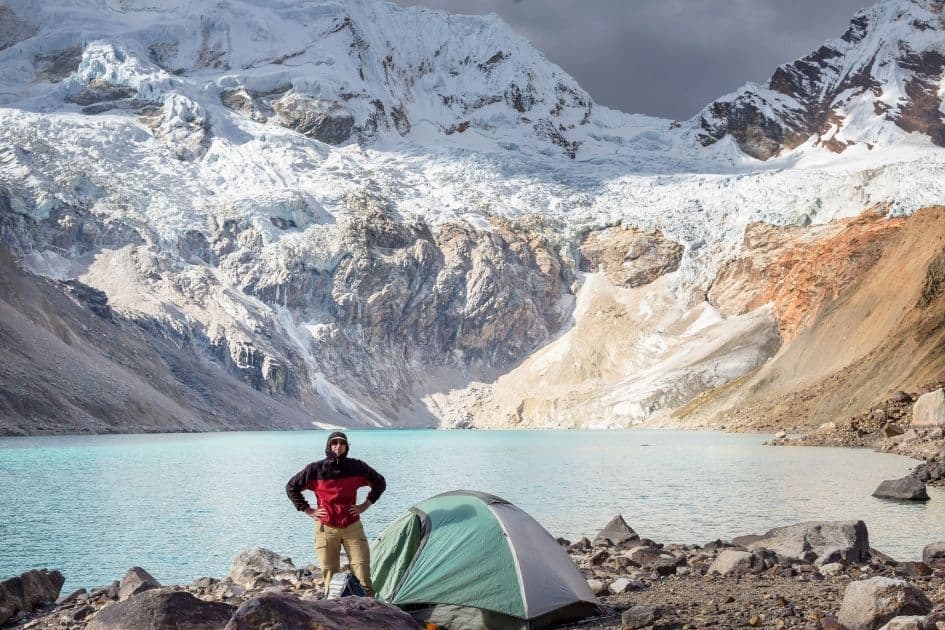
3-Season vs 4-Season Tents: Which One’s Right for You?

How to Choose the Best Camp Cookware for Your Outdoor Adventure

Good Winter Sleeping Bags Under 2 lbs
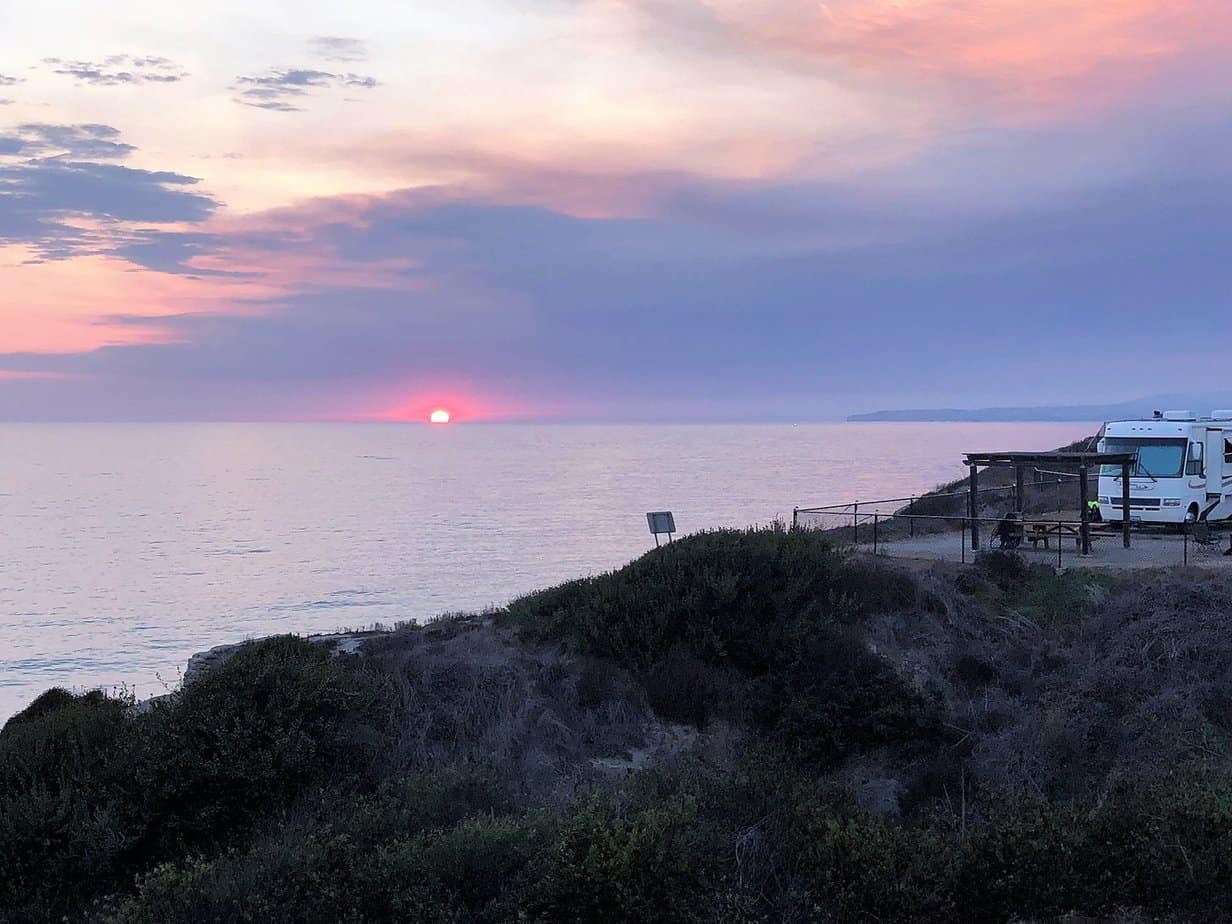
San Clemente Beach Camping: Coastal Camping Bliss Unveiled

13 Exciting Non Hiking Activities to Do in National Parks

Review: RTIC 45 Hard Cooler: Top-Tier Quality for a Low Price

How To Weatherproof a Tent

Sandy Adventures Await: Beach Camping in California

How to Choose the Best Camp Shower According to Campers

Bivy Sack vs Tent – What’s Better for Your Trip?

The 12 Best Double Sleeping Bags

Winter Hammock Camping? How to Stay Warm in a Hammock
Last update on 2024-04-12 / Affiliate links / Images from Amazon Product Advertising API
Submit a Comment Cancel reply
Your email address will not be published. Required fields are marked *
Save my name, email, and website in this browser for the next time I comment.
This site uses Akismet to reduce spam. Learn how your comment data is processed .

Day Hiking Checklist
We cover all you need to hit the trail for the day, from clothing and gear essentials to extras like sunscreen and snacks.
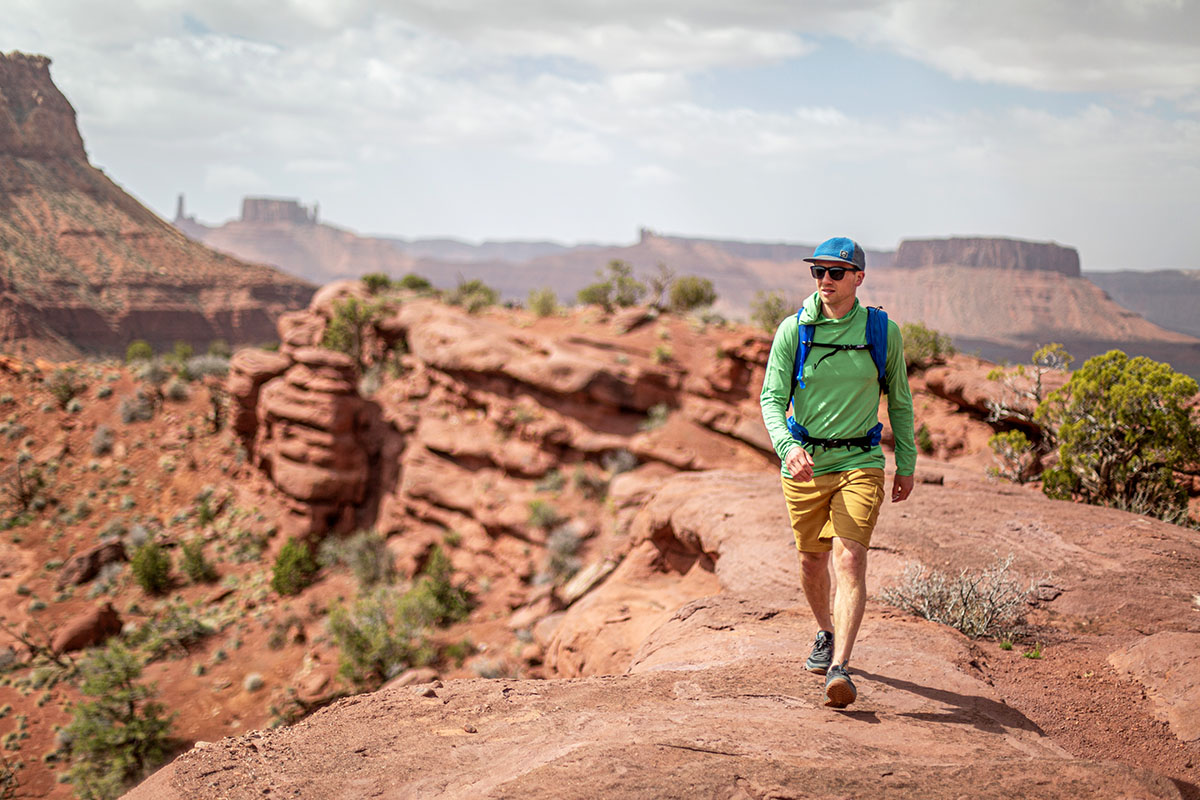
Switchback Travel ( Brian McCurdy )
We use affiliate links and may receive a small commission on purchases. Read more about us .
A day hike can be as simple as walking a well-maintained trail near your home, or as complex as a dawn-to-dusk journey through a remote wilderness. The items you bring may vary slightly depending on the difficulty and length of the hike, but no matter how you travel, it’s always nice to be prepared. Below, we list the most important items for day hiking, including clothing items such as a rain jacket and hiking pants, essential equipment like a daypack and trekking poles, and extras and personal items . For more information on each category, many of the headings link to our detailed product articles. And for all our recommendations in one place, see our hiking gear reviews .
Day Hiking Footwear and Clothing
1. hiking shoes or trail runners.
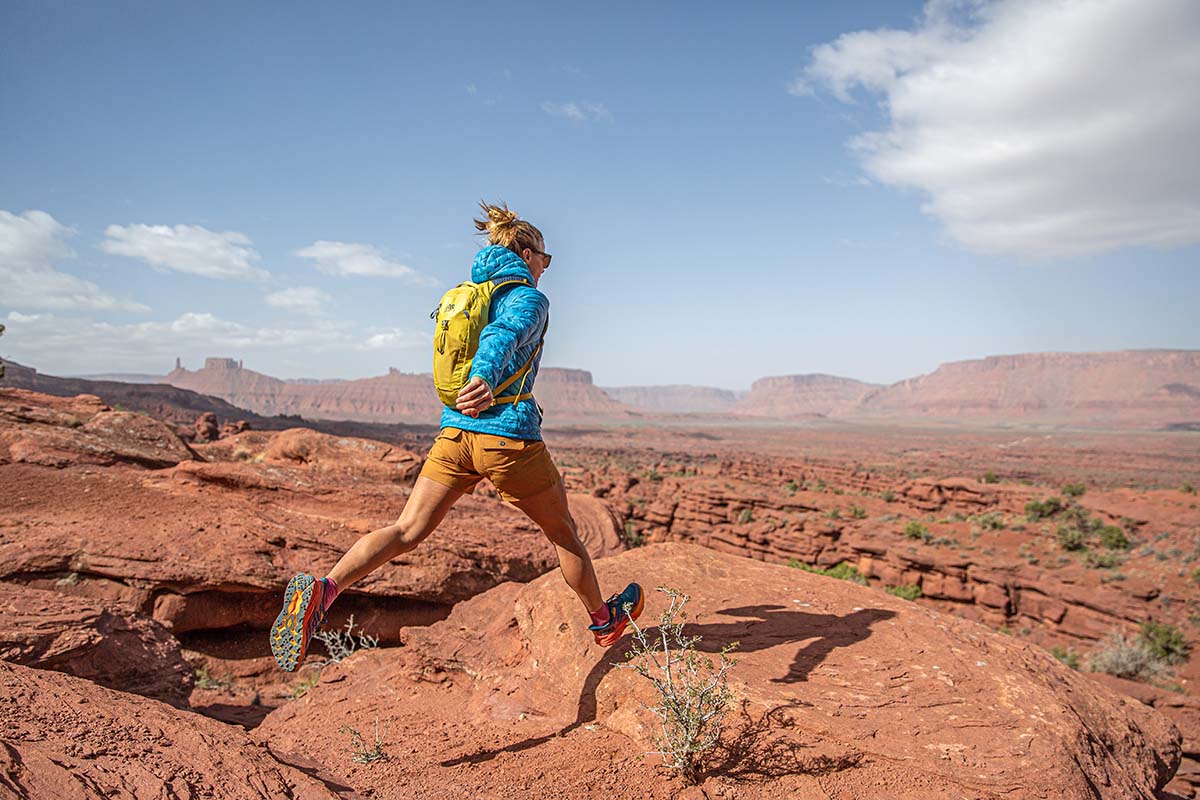
2. Hiking Socks
As we mentioned above, happy feet make for a happy hiker. Once you’ve settled on a pair of shoes or trail runners, it’s important to look for a set of hiking-specific socks to complete your setup. We prefer wool socks to those made with cotton or synthetic materials: Wool has an incredible ability to regulate temperature, stays warm when wet, and dries much faster than cotton. Our favorite socks for keeping our feet happy are the Darn Tough Micro Crew Cushion , which also come with a lifetime warranty. In terms of height, most hikers prefer crew-cut socks for protection against low branches and debris, but quarter-height and no-show designs are lower-profile and cross over well for use with sneakers and trail runners.
3. Hiking Pants or Shorts
.jpg)
6. Down Jacket or Synthetic Jacket
Whether you’re walking through a canyon, ascending a mountain ridgeline, or just taking a break in the shade, you’re likely to encounter a range of temperatures throughout your hike. It’s a good idea to have an insulated layer stowed in your backpack so you can stay warm regardless of activity level or weather. Down packs into a tiny package, is feather-light, and provides a surprising amount of warmth, making it our favorite type of insulation for hiking. That said, some will prefer a synthetic jacket instead, which insulates even when wet and surpasses down in terms of breathability. Two of our favorite insulated jackets for hiking are the down-filled Mountain Hardwear Ghost Whisperer/2 and the synthetic Patagonia Nano-Air Hoody .
Day Hiking Equipment
.jpg)
13. Navigation
Even if you’re familiar with the area where you’ll be hiking, it’s a good idea to bring along some sort of navigational tool. A high-tech GPS device will cover all your bases, but it’s a bit overkill for a day hiking application. In fact, a paper topographical map—especially when laminated or printed on waterproof paper—is the most sure form of navigational help, as it does not rely on battery power. That said, our favorite means of tracking location are GPS-powered navigational apps on our phone. Apps such as TopoMaps, Gaia, and Hiking Project can pinpoint your location at any given moment—even when cell phone service is non-existent—and even give details like hiking pace, elevation, and mileage.

14. Satellite Messenger
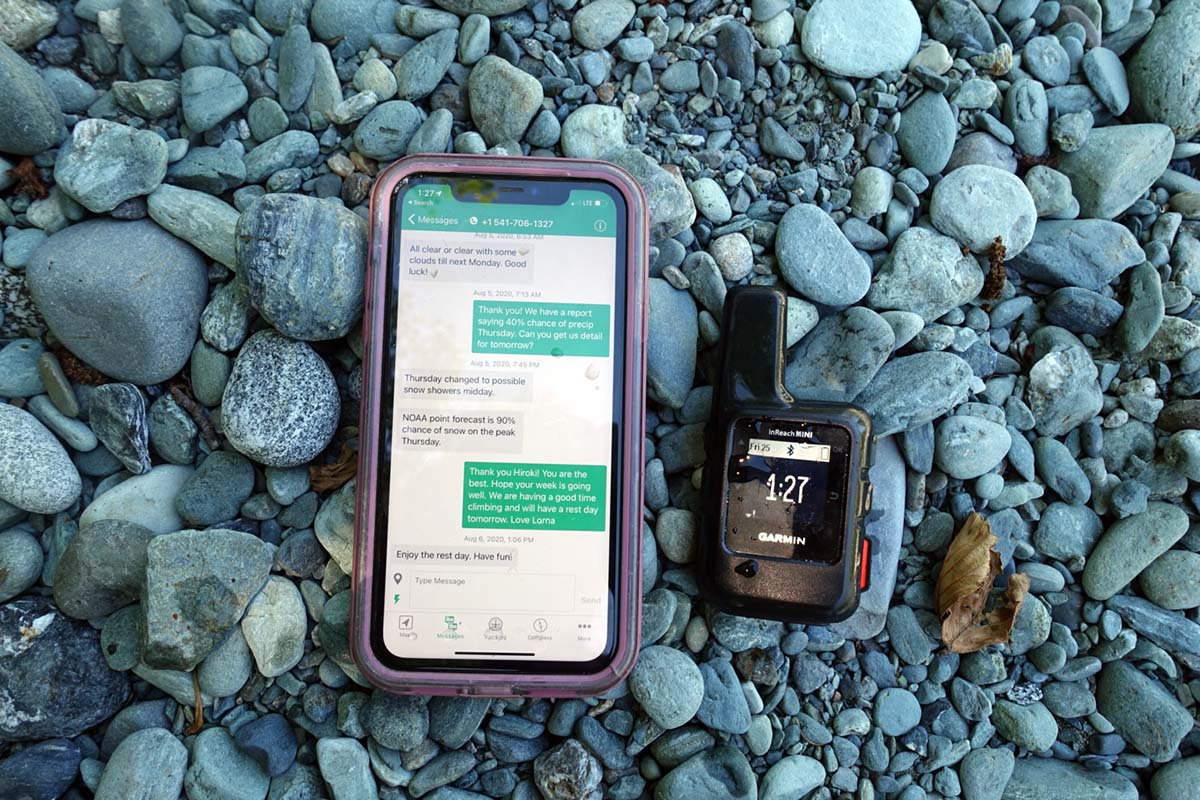
Along with water, it’s essential to pack enough food for your hike (and even a little more). In general, we recommend eating between 300 and 400 calories per hour of hiking, depending on your body type and level of exertion. High-energy foods like nuts, bars, cheese, and dried fruit provide great nutrition and calories while keeping weight low. Some of our favorite energy bars are Kate’s Real Food Bars , delicious high-calorie snacks made with quality ingredients in the small town of Victor, Idaho. Additionally, Snickers bars and sandwiches provide easy trail food solutions at a lower cost.
Extras and Personal Items
- Insect repellant
- Toilet paper and trowel
- Bear spray (depending on the area and season)
- Simple repair kit (a bit of duct tape and paracord should be plenty)
- Multitool or Swiss Army knife
- Emergency blanket or bivy
- Lighter or waterproof matches
- Whistle for emergencies
- Winter traction devices and gaiters (depending on conditions)
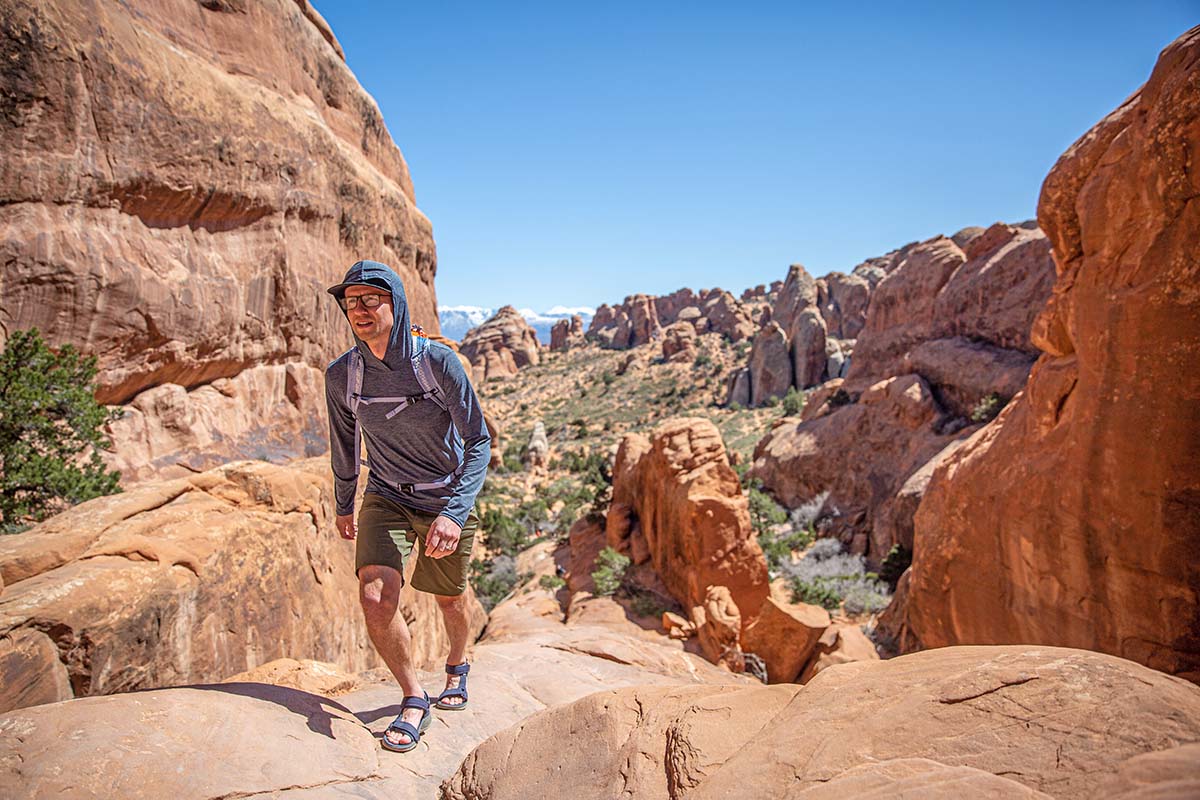
Where to Buy Hiking Gear
Although much of this gear can be found online, we first recommend visiting your local gear shop or consignment store. There’s simply no substitute for looking at items up close, trying on clothing, backpacks, and footwear, and receiving personal advice from the experts. If you do choose to shop online, REI Co-op and Backcountry are two of the most reliable retailers when it comes to hiking gear. Both have impressive selections, provide free shipping on orders over $50, and offer generous return and exchange policies. And as a bonus, REI has over 175 brick-and-mortar stores across the country, so you can try on before you buy or pick up your order in store. Finally, for cheaper items and those who need gear quickly, it’s hard to beat Amazon and the sheer volume of their inventory. Back to Our Day Hiking Checklist See Our Hiking Gear Reviews
Learn More About Outdoor Gear
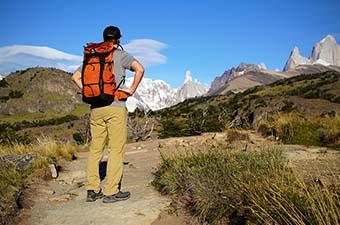
Hiking Gear Reviews
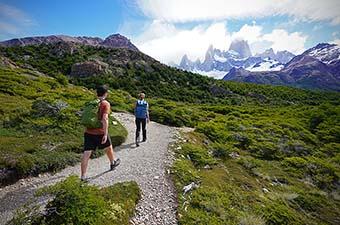
Best Hikes in El Chaltén, Argentina
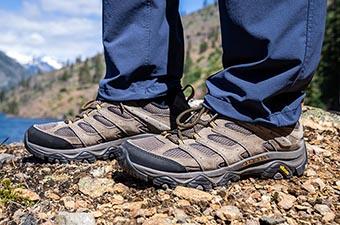
Best Hiking Shoes of 2024
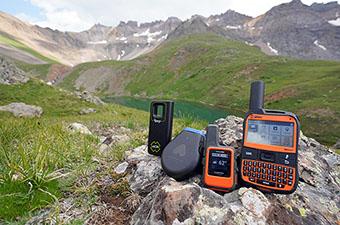
Best Satellite Messengers of 2024
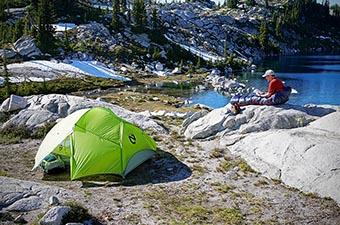
Backpacking Checklist for 2023
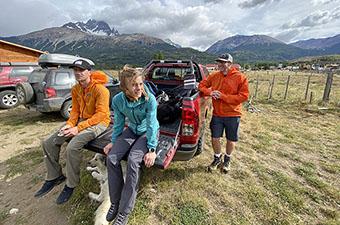
Best Windbreaker Jackets of 2024
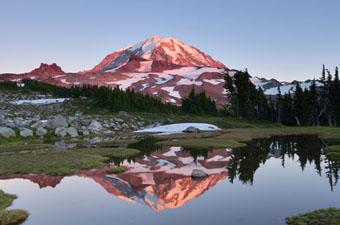
10 Great Day Hikes from Seattle
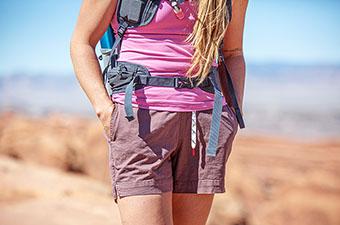
Best Women’s Hiking Shorts of 2023
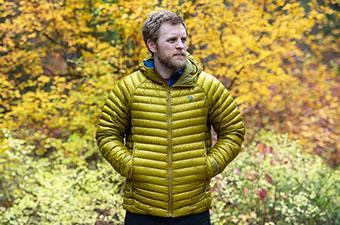
Mountain Hardwear Ghost Whisperer/2 Hoody Review

Mobile Menu
Megamenu - desktop hamburger menu.
- Hiking Gear
- Backpacking Gear
- Biking Gear
- Camping Gear
- Footwear Reviews
- Climbing Gear
- Skiing Gear
- Winter Gear Reviews
- In-Depth Gear Reviews
- Hiking Shoes
- Hiking Boots
- Trail Running Shoes
- Mountain Bike Shoes
- Approach Shoes
- Climbing Shoes
- Beginner Climbing Shoes
- Mountaineering Boots
- Winter Boots
- Rain Jackets
- Down Jackets
- Synthetic Jackets
- Fleece Jackets
- Hardshell Jackets
- Softshell Jackets
- Windbreaker Jackets
- Ski Jackets
- Winter Jackets
- Hiking Pants
- Hiking Socks
- Trekking Poles
- Baby Carriers
- Running Vests
- Backpacking Tents
- Backpacking Packs
- Backpacking Sleeping Bags
- Backpacking Sleeping Pads
- Backpacking Stoves
- Backpacking Food
- Water Filters
- Altimeter Watches
- Handheld GPS
- Mountain Bike Helmets
- Mountain Bikes
- Mountain Bikes Under $1,000
- Mountain Bikes Under $2,000
- Gravel Bikes
- Bike Brands
- Kids' Bikes
- Hitch Bike Racks
- Camping Tents
- Rooftop Tents
- Camping Sleeping Bags
- Camping Mattresses
- Camping Chairs
- Camping Stoves
- Duffel Bags
- Rock Climbing Shoes
- Climbing Helmets
- Climbing Harnesses
- Climbing Quickdraws
- Belay Devices
- Climbing Ropes
- Climbing Backpacks
- Winter Gloves
- 4-Season Tents
- Ski Helmets
- Ski Goggles
- Ski Backpacks
- All-Mountain Skis
- Ski Bindings
- Backcountry Skis
- Backcountry Ski Boots
- Skis for Beginners
- Hardpack Skis
- Mirrorless Cameras
- Full-Frame Cameras
- DSLR Cameras
- Point-and-Shoot Cameras
- Travel Cameras
- DSLR Lenses
- Mirrorless Lenses
- Lofoten Islands
- Lofoten Hiking
- Hardangervidda
- Jotunheimen
- 10 Great Norway Hikes
- Public Huts
- Torres del Paine
- Chalten and Glaciares
- Lake District
- Patagonia National Park
- Milford Sound
- Abel Tasman
- Marlborough
- Great Walks
- Adventure Towns
Add adventure to your inbox
- Privacy Policy
- Terms of Use
© 2024 Switchback Travel. All Rights Reserved. No part of this site may be reproduced without our written permission.
- Hiking trips
- Mountain bike trips
- All articles
- Hiking gear
- Mountain bike gear
- Outdoor electronics
- Hike tutorials
- MTB tutorials
- Ski tutorials
- Electronics how to…
- Hiking trails
- Mountain bike trails
- Freeride ski routes
- 10 ESSENTIALS for day HIKING: what to bring!
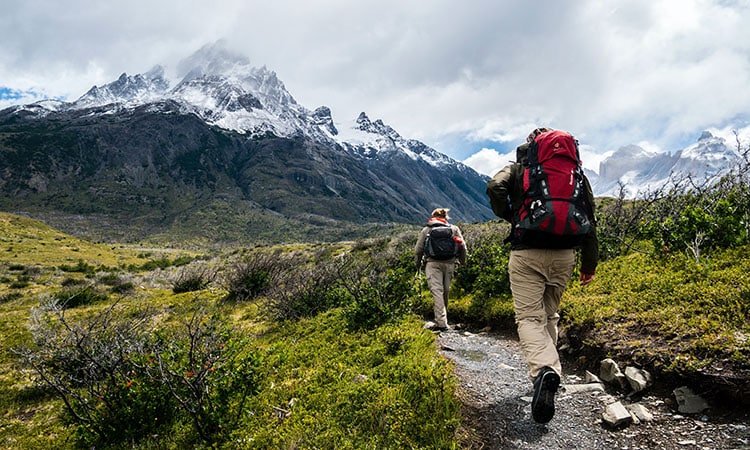
Are you planning a (day) hike and wondering what is essential to bring with you? Whether you’re a seasoned hiker or new to the activity, having the right gear is essential to a successful and safe hiking trip.
We have composed a list of gear and tools with the 10 essentials for day hiking, because packing the right gear can make all the difference. Some of these items you will hopefully never need to use but hey… better safe than sorry!
In this article, we’ll cover the day hike essential gear and things needed for hiking, so you can be prepared for any situation on the trail. So grab your backpack, lace up your boots, and let’s get started!
10 essentials for hiking
The 10 essentials for day hiking are a set of items that every hiker should have in their backpack, regardless of the length or difficulty of the trail.
Some of the items on the list are just to make your experience on the trails more comfortable.
Other items are packed in case of an emergency. These are the kind of tools you hope you will never have to use. Nevertheless, no matter how small or big the adventures is you are planning, it’s best to come prepared!
Although most of the items are relevant all year long, some like sun protection for instance will be mostly useful in warm climates or summer season. Even so, it’s not bad just having them in your hiking backpack.
Here is the short version you can use as a checklist before you go. Below we will discuss each essential for day hiking some more in depth.
- UV protective clothing
- a warm mid layer (fleece of puffy jacket)
- a hard shell jacket or rain jacket
- Gloves (in cold temperatures)
- Beanie (in cold temperatures)
- A flashlight
- Powerbank(s)
- Outdoor first aid kit
- Rescue blanket
- Matches or lighter
- Waterproof container
- Tindersticks
- Leatherman, Gerber or Swiss knife
- Energy bars
- Energy gels
- Insulated drinking bottle
- Hydration reservoir
- Quick stow flask
- Emergency shelter, blanket and sleeping bag
1. Navigation
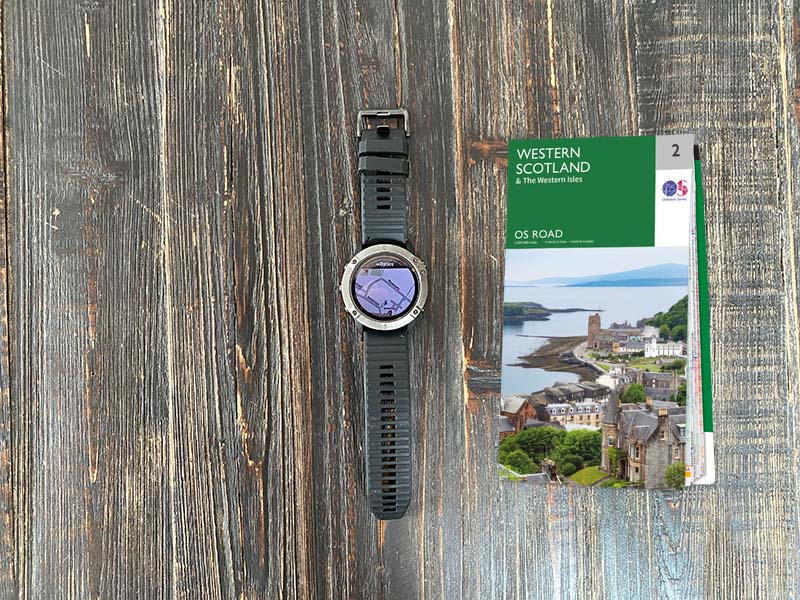
A map and compass are one of the 10 essentials for hiking, even if you’re following a well-marked trail. They can help you stay on course if you get lost or if the trail becomes obscured.
However, navigating with a map and compass can be challenging sometimes. It’s therefore advisable to practice this upfront and train the skills how to use these tools.
Make sure to keep your map and compass in a waterproof container to protect them from the elements.
GPS devices and smartphone apps can also be helpful, but they shouldn’t be relied on as your only navigation tools. Electronic devices can stop working due to empty batteries or other technical issues.
Therefore, analogue tools like a local hiking map and compass are a good backup. You can buy a map or download and print it yourself. You’ll find more info about printing a topo map for the US here: USGS For EU visit here .
Products we use and can recommend for hiking:
Garmin Fenix series for GPS navigation
2. Sun protection
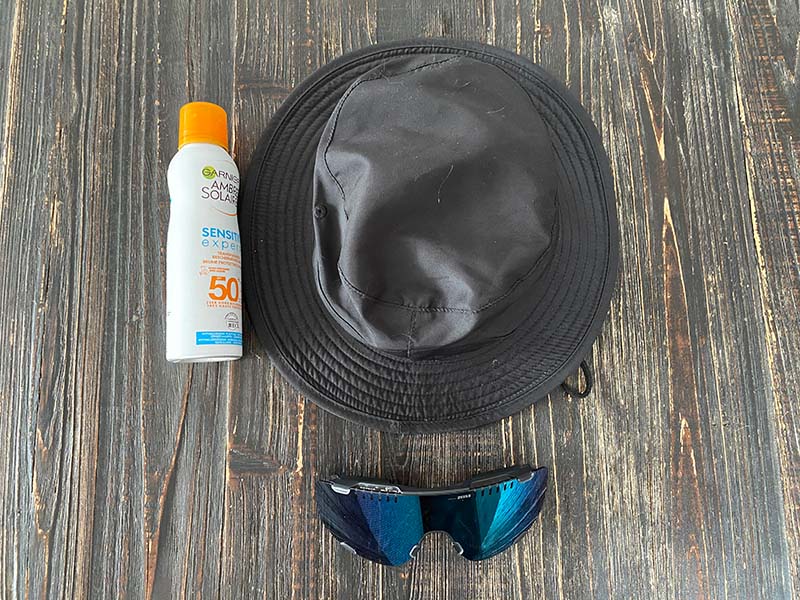
Spending a day in the sun can quickly lead to sunburn and dehydration. Make sure to bring sunscreen with at least SPF 30 and apply it liberally throughout the day. Even in winter in the mountains, on a bluebird sunny day, you will need sunscreen!
Sunglasses and a hat with a brim can help protect your eyes and face from the sun’s harmful rays.
In addition, UV protective clothes protects your entire body on very sunny days. Wear long sleeves and pants with SPF 50+ for optimal protection.
Products we use and can recommend hiking:
POC Devour sunglasses
3. Insulation

Even on a warm day, temperatures can drop quickly in the mountains or in the evening. A lightweight fleece or puffy jacket can help keep you warm and comfortable.
Synthetic or wool materials are preferred as they still retain heat when wet. Pack your insulation layer in a waterproof stuff sack or plastic bag to keep it dry.
An extra dry base layer, such as a synthetic t-shirt, is also nice to have in case the one you are wearing gets wet.
To block wind and rain take a shell jacket with you that you can easily pack without taking too much space in your backpack.
The holy trinity of outdoor layering is: base layer (synthetic or wool), mid layer (synthetic or wool) and shell.
According to the weather and activity, you can adjust your temperature during the hike by adding or removing a layer.
Peak Performance Helium Jacket
Patagonia Pile jacket fleece
4. Illumination
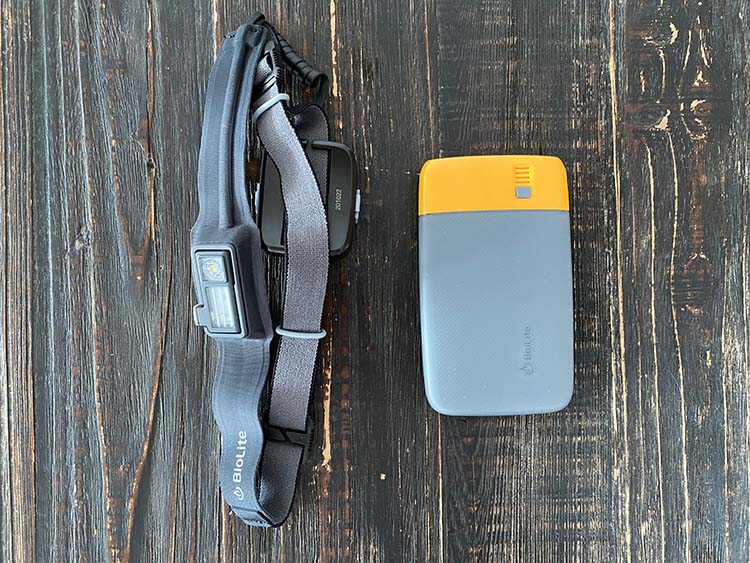
A flashlight or headlamp can help you navigate in the dark and signal for help if needed. Therefore, it’s an important item on our 10 essentials for hiking list. Usually a headlamp will be the most useful. But it’s good to have a back up flashlight as well.
When choosing a headlamp and flashlight, make sure to check the specs of the product. To hike or run a trail at night make sure it has sufficient lumens for the job. A headlamp of around 300 lumens or more should do the job. Also battery life and the ability to connect an external power source while using, such as a powerbank, are important features to consider.
That being said, make sure you have at least one powerbank or extra batteries with you on the trails.
You’ll want to pack your headlamp in an easy accessible pocket in your backpack, for instance the hip pocket.
BioLite Headlamp 425
BioLite Charge 20 powerbank
5. First aid suppliers
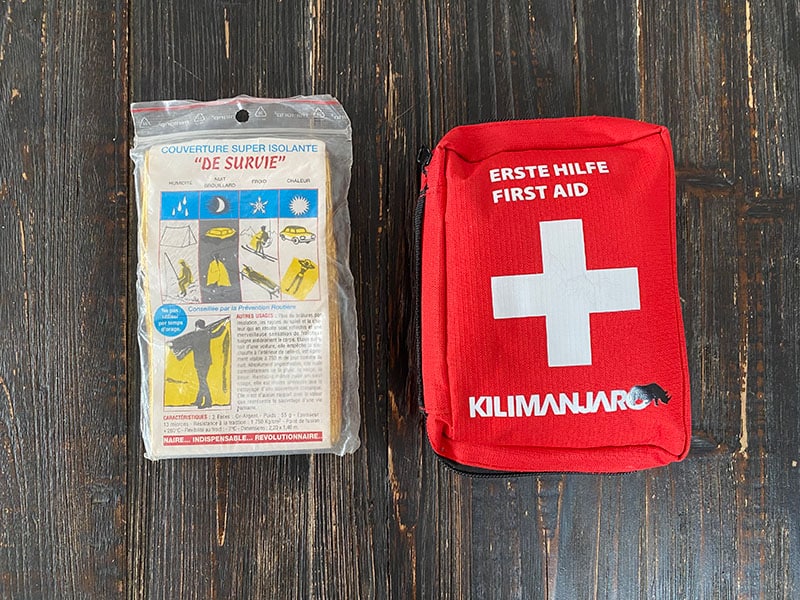
A basic first-aid kit should include items like bandages, gauze, antiseptic, and any prescription medication you may need.
This can help you treat minor injuries on the trail until you can get more advanced medical attention. Make sure to know how to use the items in your first-aid kit before you hit the trail.
An emergency blanket can be a life saver when you get stuck overnight for some reason and helps prevent hypothermia.
But it can also be useful in very hot environment to prevent hyperthermia. An emergency blanket has 2 sides (gold vs. silver). Depending on what side is on the inside, the blanket will either contain body heat or help reducing it.
Emergency blanket
First aid outdoor kit
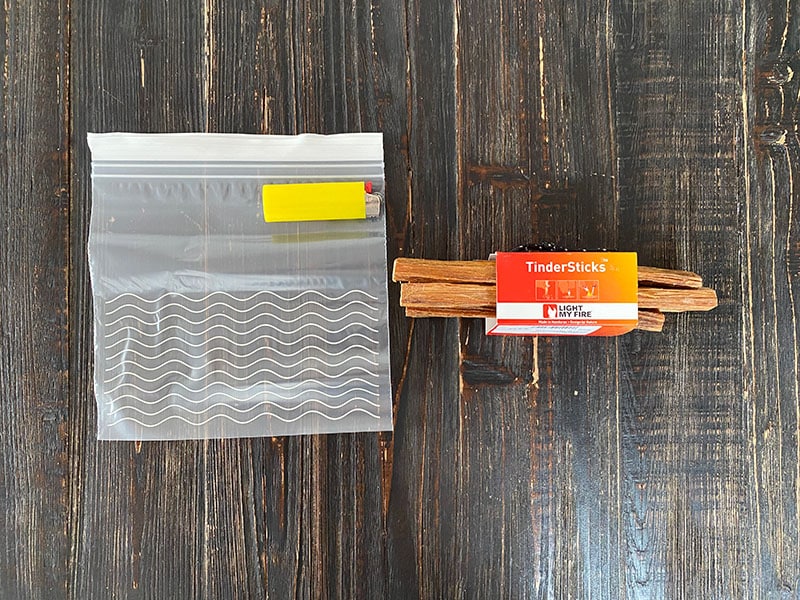
Unless you have Bear Grylls skills or want to do it the old fashion way you can use firesteel to start a fire. But let’s be honest… some matches or a lighter will do the job as well and make your life a lot easier.
Matches or a lighter, kept in a waterproof container, can help you start a fire for warmth or to signal for help. Dryer lint, tinder sticks or cotton balls coated in petroleum jelly can be used as tinder.
It’s important to check fire restrictions in the area you’re hiking as some places may have a ban on fires. For instance, be careful when lighting a fire when the chances for forest fires are high.
Fire starter kit
7. Repair kit and tools

A multi-tool or pocketknife, duct tape, and a repair kit for your gear can help you fix unexpected issues on the trail.
Multi-tools are available in all kinds of models and sizes. We always pack a Leatherman which has a knife, pliers, file, screwdriver,… that will get most of the jobs done.
Duct tape can be used to patch a tear in your tent or fix a broken hiking pole.
TIP: You don’t need to take the thing with you. Just wrap some duct tape around a strap of your backpack or hiking poles and pull it off in case you need it.
Finally, a paracord or a piece of paracord is always useful when you need to tie stuff together.
Leatherman multi tool
8. Nutrition
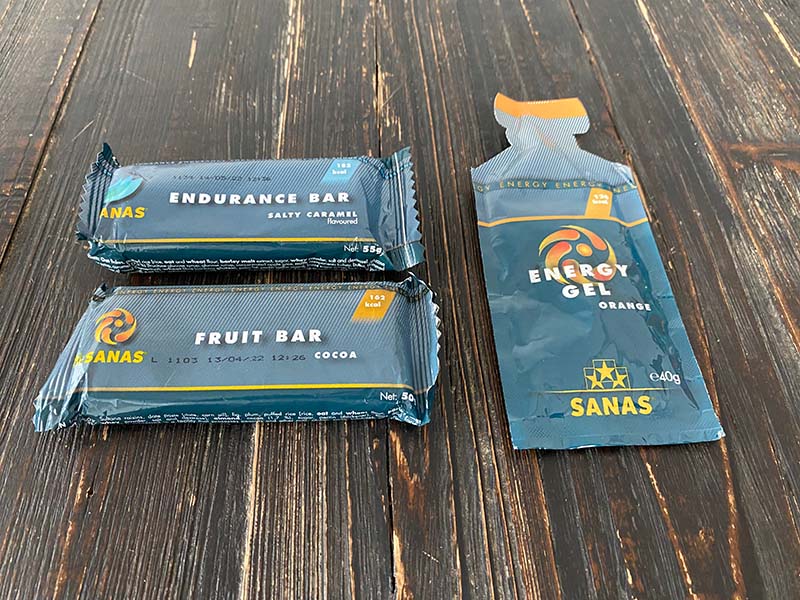
Bring enough food and snacks for the length of your hike, plus a little extra in case of emergency. High-energy snacks like trail mix and energy bars are a great option, as they provide quick energy and don’t take up much space in your backpack. Pack your food in airtight containers to keep it fresh and prevent attracting wildlife.
If you are craving for a decent meal on the trail that doesn’t take much space in your backpack, backpackers food is a good option. Be aware that you will need to be able to add hot water to prepare it. An insulated water bottle that you filled at home with hot water can do the trick.
Clif bar energy bars
Backpacker dried food
9. Hydration
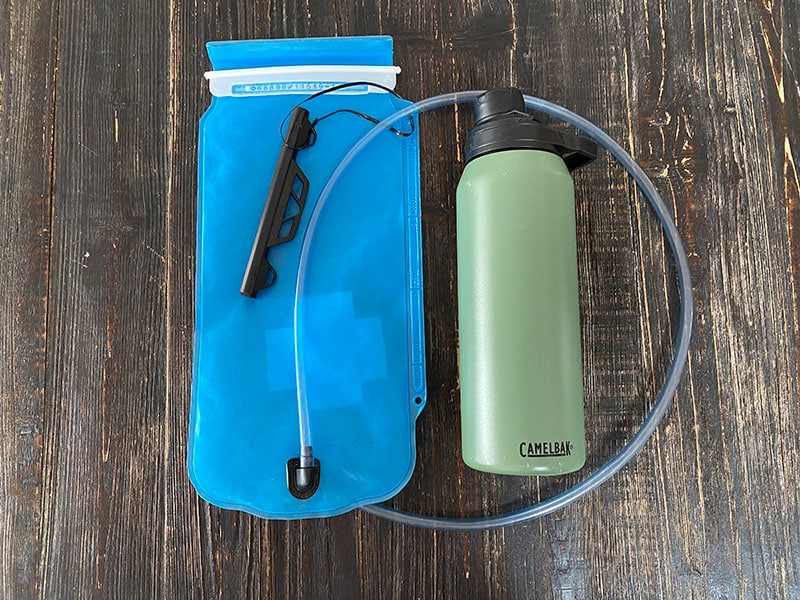
Bring enough water for the length of your hike, plus extra in case of emergency. A hydration bladder or water bottles can be used to carry water. It’s important to stay hydrated throughout the day to prevent dehydration, which can lead to fatigue and headaches.
A hydratation reservoir quite handy because you can drink on the go without having to stop and put your backpack off.
In addition, having an insulated bottle is nice to keep your liquids cold or hot during a long period of time.
As an extra, a quick stow flask is useful to take along. When it’s empty you just fold it and it doesn’t take much space.
Camelbak Chute Mag insulated steel bottle
Camelbak water reservoir
10. Emergency shelter
As mentioned above (5), if you get lost or injured on the trail, an emergency blanket can provide protection from the elements.
In addition, there are lightweight emergency shelters that are made of the same fabrics that can help keep you safe. You can use them as a sleeping bag or as a shelter/tent.
It’s important to pack your emergency shelter in an easily accessible location in your backpack in case of an emergency.
A bivy sack or emergency shelter tent is also a great option for overnight stays or in areas with inclement weather.
Other essential gear for day hiking
In addition to the 10 essentials for hiking, there is still important gear that you should also bring such as appropriate footwear and clothing for the trail :
- Hiking poles
- Hiking shoes
- Hiking clothes
By packing the 10 essentials for day hiking, you’ll be prepared for whatever the trail may throw your way. Remember to always leave no trace and respect the natural environment. Happy hiking!
Other posts you may like:
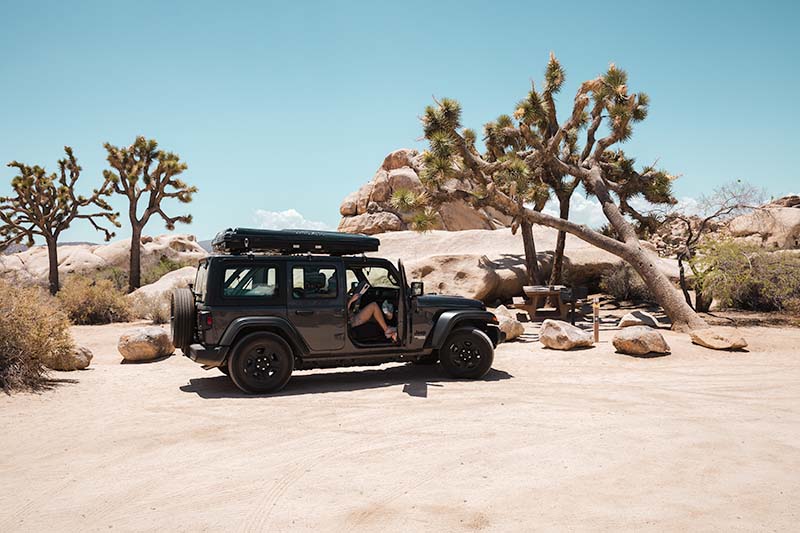
- BioLite Headlamp 425 Review: to Buy or Not?
- Discover Canyon Trôs Marets: Beautiful Hike in Malmedy!
- Avalanche safety kit: a freeriders BEST friend!
- Avalanche safety tips: the basics!
Hi, I’m Manou, founder of GPXadventures.com. My goal is to help others discover the joys of the outdoors and to encourage them to pursue their own adventures. #Livetheunknown
GPX Adventures
© 2024 GPX Adventures.
- Privacy policy
- Cookie Policy (EU)

My Itchy Travel Feet
The Baby Boomer's Guide To Travel
Day Hiking Essentials: What to Wear and Bring on a Short Hike
This article may contain referral links. Read our DISCLOSURE
Are you including day hikes in your next road trip, national park adventure , or cruise excursion? If so, you’re going to need my tips for day hiking essentials.
I’m a boomer traveler who still enjoys hiking. Alan, too.
We’re convinced that getting out on the trail is one of the best ways to experience a destination. Although Alan and I aren’t hardcore backpackers, show us a day hike or scenic short trail to include on a road trip or national park visit and we’re happy boomer travelers.
I’ve experienced some spectacular USA hikes , as well as international ones, over the years. There’s something about putting my feet on the ground that connects me to a place, not to mention that it’s good exercise for my boomer body.
As you begin packing for a trip that includes day hikes, do you find yourself wondering, “how much hiking equipment is too much?” or “which hiking clothes should I pack?”
If those questions are running around in your mind, my day hiking essentials tips will help you decide what to bring on a short hike and what to leave at home.
Table of Contents
My favorite day hiking essentials

Knowing what to bring on a day hike makes a huge difference in your hiking experience. Should you pack a heavy backpack filled with every hiking essential or choose a minimalist approach? Knowing the best hiking clothes to wear and equipment to pack is crucial to a good hiking experience.
How do I travel light, yet include the essentials for a day hike? Check out my hiking checklist for day hikers:
1. What to wear on a day hike: tops and pants

I’m a big believer in layering for a comfortable day on the trail. It’s my best tip for what to wear hiking.
Yes, you could wear a pair of jeans, but you’ll be sorry if it rains. Jeans take forever to dry out! Ask Alan—he doesn’t always follow my “what to wear for hiking” advice.
Pants for hiking:
Zip-off pants are indispensable on any hiking trip. That’s why I pack several pair of convertible hiking pants from Columbia. These aren’t your baggy convertible pants from a couple of years ago.
I also like the Saturday Trail stretch pants which are stylish enough to wear around town. And, yes, they come in plus sizes .
If the word “stretch” concerns you, REI offers more relaxed styles . Looking for men’s convertible hiking pants? Here you go .
Tops for hiking:
For up top, Alan and I wear sunshield long sleeve shirts . If we can find them with insect shield, even better.
In cooler weather, I’ll layer on a sleeveless quilted vest or a long-sleeve fleece jacket (and here’s a longer version of the fleece jacket.)
For a slightly heavier jacket that also provides protection from the elements, I recommend Kirkland Signature Ladies’ Water-repellent Wind Resistant Softshell Jacket . I own the red and blue versions of this coat—remember my tip to wear bright colors for better looking photos.
I look for tops and jackets with pockets that zip and are easy to access. This is where I keep my iPhone just in case an animal sighting occurs and I don’t have time to pull out the good camera from the backpack. And there are times, these days, when I don’t even bring a camera, relying on the iPhone instead.
2. Staying dry on short hikes
What if it rains? A raincoat and pants help you stay comfortable, warm and—most importantly—dry. I look for a brand that’s highly breathable so that I don’t suffocate if the weather’s warm, humid, or my body heats up from exertion.
Alan and I bought our rain gear from REI (they have petite and plus sizes in the pants, ladies) before a trip to Glacier National Park where we hiked 30 miles of day hikes in a week.
Here’s a packing light tip: I wear the rain pants over thermals and convertible pants on our trips to Antarctica and the Arctic.
3. Taking care of your head, hands and feet

For me, keeping head, hands and feet comfortable is the key to a happy hike. As long as I’m shielded from the sun, my hands aren’t cold and my feet are comfortable, I’m good to go.
Hiking gear for your head:
Since I’ve experienced skin cancer, a hat is a must for me—Alan, too. That’s why we both wear a Tilley Endurables Hat , which protects our faces from the sun. This Tilley hat also has a mesh feature for keeping our heads from getting too hot.
And here’s a tip for ladies who have curly hair—like me: wearing a hat, even if it’s a ball cap keeps hair under control and less frizzy.
Hiking gear for your hands:
If your hands get cold easily, like mine do, glove liners are a good choice for those cool mornings on the trail. Of course you want to bring a heavier pair of gloves if hiking in colder weather.
Hiking gear for your feet:
It goest without saying that comfortable hiking shoes are a must for day hikes. Alan and I wear Keene hiking boots— I like this one —for tough, rocky trails. But if we’re hiking a short trail while taking a break on road trips, we both wear lighter weight hiking shoes that can double as active wear shoes for the trip.
I’m a big fan of the Kuru Chicane . It’s a comfortable shoe with tread that grips the trail, without being a heavy hiking shoe. I pack the Kuru Chicane for cruises where shore excursions include hiking. And they look good enough to wear around town and double as my active wear shoe for on the ship.
Boomer Travel Tip
Check out my tips for the best cold weather gear for women that packs light .
This lightweight addition to my hiking gear is one of my favorites: gaiters. Depending on your hiking route’s terrain and weather conditions, a good pair of gaiters help protect your legs from getting wet. Wear them over waterproof hiking boots on a snow trip and you have snow boots without the bulkiness.
Of course great hiking socks are the key to comfortable fitting hiking shoes. Alan and I both wear Merino Wool Hiker Socks or Darn Tough Socks to keep our feet dry.
Good hiking socks also provide cushioning on a long day of exploring. Shh, don’t tell anyone, but I sometimes wear these around the house as bedroom shoes.
4. Hiking equipment for day hikers: what to bring on a short hike

An enjoyable hiking experience is more than the beauty of the trail or the comfort of the hiking clothes that you’re wearing. Day hikes and short hikes don’t require a lot of gear, but bringing along the right gear makes a big difference in the quality of your hiking experience.
Anti-shock hiking sticks are my best friend on the trail. They take the pressure off knees and hips, especially on downhill treks.
I also find that the poles help when my fear of heights kicks in. They keep me feeling steady and secure.
Yes, according to TSA , you can bring them on a flight as long as the hiking poles are packed in checked luggage.
How do we carry gear on a day hike? Alan and I avoid backpacks whenever possible because they’re hard on our boomer backs. For short hikes, our choice is to wear a waterproof fanny pack that holds a water bottle on each side of the pack.
However when we’re hiking in destinations where the weather changes quickly, a day hiking backpack like the Osprey Tempest for women or the Osprey Talon for men , is essential for holding rain gear or an extra layer of clothing.
Need tips for getting out on the trail? I’ve written a hiking planner to help boomer travelers prepare for the best day hikes. Check it out!
For me, the best hiking day pack conforms to my body. It also includes cushioning on shoulder straps and comfortable hip belts that distribute the pack’s weight.
You’ll also need a backpack to carry larger cameras. Hiking with a camera around your neck is cumbersome and no fun—I know.
If you’re really picky about water quality, LifeStraw bottles have a two-step filtration system. Don’t just use them on a hike, these are great for air travel or running around town.
What about mosquitos and other pesky biting insects? Deet bug spray will protect you against mosquitos (and ticks), but what if you are trying to avoid chemical sprays?
I recommend a net that goes over your head that will protect your head, face and neck. Mosquito coil bracelets that contain essential infused oils that repel insects are another choice. Wear them on your arms and ankles to be completely protected. They come in a resealable pouch and last for 10 days or 250 hours of use.
And, just in case, pack this lightweight outdoor first aid kit . You’ll be happy that you did if a shoe causes a blister or another minor emergency occurs.
If you follow my day hiking gear list, you’ll be set with the best hiking gear for short hikes. These items also make the great gifts for hikers on your gift giving list.
Day Hiking Essentials Shopping List
Would you rather purchase day hiking essentials all in one place? This Amazon shopping list makes it easy for you to buy what you need to be out on the trail in no time. Happy shopping!

Columbia Women's Benton Springs Full Zip Jacket, Soft Fleece with Classic Fit
A fleece jacket is perfect when your day hike begins on a cool spring or fall morning. Once you warm up, tie the jacket around your waist. That's what I do. It's also lightweight enough to easily stuff into a backpack. Buy one of the bright colors so your photo stands out from trail scenery.

Kirkland Signature Ladies' Water-Repellent Wind Resistant Softshell Jacket
This Kirkland jacket comes in many colors (I don't recommend black if you'll be wearing this in photos). I wear my red Kirkland Signature jacket on almost every adventure. The lining adds a bit of warmth, plus the outer shell is water repellent and wind resistant.

Waterproof Hiking Fanny Pack
How do we carry gear on a day hike? For short hikes, our choice is to wear a waterproof fanny pack that holds a water bottle on each side of the pack.

BAFX Adjustable Anti Shock Aluminum Hiking Poles for Walking or Trekking
Hiking poles take the pressure off hips and knees, especially on downhill portions of the trail. If you have a fear of heights, like me, hiking sticks offer stability and security.

HotHands Toe, Hand and Body Warmer Variety Pack
Your hands and toes will thank you for carrying adhesive warmers in your pack. They're perfect for when colder weather surprises you on the trail.

Osprey Packs Tempest Women's Hiking Backpack
The Osprey Tempest comes with cushioned shoulder pads and comfortable hip belts. It's my backpack choice for day hikes where I need to pack more gear in anticipation of changing weather conditions.

Tilley Endurables LTM6 Airflo Hat
My Tilley Endurables hat protects me from the sun, plus the mesh airflo vent keeps my head from overheating.

KEEN Women's Targhee Waterproof Hiking Boots
For rocky trails, I wear a tough hiking boot like the Keene Targhee.

Darn Tough Vermont Hiker Boot Full Cushion Sock
Darn tough cushion socks keep my feet dry and comfortable. Good hiking socks provide essential cushioning for those long days of exploring.

Columbia Women's Standard Saturday Trail II Convertible Pant, British Tan, 6 Regular
These stretch hiking pants look good enough to wear around town. The convertible feature is handy for warmer days. And, ladies, these Columbia pants also come in plus sizes.

LifeStraw Go Water Filter Bottle
The LifeStraw has a 2-stage integrated filter that protects against, microplastics, chlorine, organic chemical matter and sand, dirt, cloudiness and more. And your water will taste better, too!

HESTYA 4 Pack Mosquito Head and Face Netting
Avoid mosquito and insect bites with the Hestya mosquito head and face netting. Place the head netting over a hat and your neck and face will be protected. Comes in a set of four. This is perfect if you only occasionally hike in mosquito prone areas. Also easy to pack in your luggage.

Cliganic 10 Pack Mosquito Repellent Bracelets
Wear these DEET-free mosquito repellent bracelets on your wrists and ankles to avoid bug bites on the trail. Each coil is individually wrapped in a reusable pouch. The essential-oil infused coils last for 10 days or 250 hours.
Need more what to wear on a trip tips?
- Read my advice on what to pack for an Alaska cruise .
- Discover cold weather gear that’s easy on the budget and packs light .
- Learn what to pack for a luxury cruise .
Save to Pinterest

Scratch those itchy travel feet!
Boomer travelers rely on our weekly email newsletter for fresh travel inspiration, tips, and advice. It's free! No spam, unsubscribe anytime.
You may also like
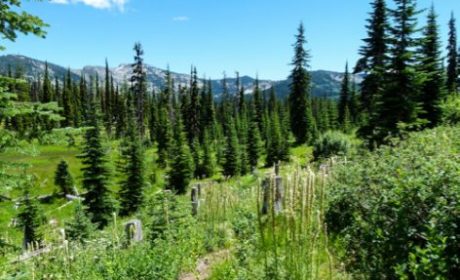
Adventures of Alice

19 Hiking Essentials: The Ultimate Hiking Packing List
Sharing is caring!
Are you searching for the perfect hiking essentials for your next adventure? If you’re ready to hit the trails but feeling overwhelmed by what to pack, you’re in the right place.
There’s nothing worse than lugging around a heavy backpack filled with unnecessary items, only to realize you forgot something crucial.
I have actually done this before and it was incredibly frustrating! Not to mention, my shoulders killed at the end of the hike!

That’s why I’ve put together the ultimate list of hiking gear to help you pack like a pro and avoid any “oh no!” moments on the trail.
From the essentials like a sturdy backpack and proper footwear to the little extras that can make all the difference (hello, blister prevention!), this hiking packing list contains the must-have items that will ensure your hike is safe, comfortable, and most importantly, fun.
(P.S. This list focuses on day hikes as opposed to multi-day trails. For those, you’ll need overnight gear too!)
🡲 Love hiking? Grab my favourite hiking gear – ACAI outdoor trousers come with me everywhere and these are my favourite hiking boots . Plus, book cheap airline tickets and accommodations with Booking.com to save SO much money on travel.
What Hiking Essentials do I need for a day hike?
Okay, let’s get real for a second. When it comes to a day hike, there are two types of people: those who pack everything and the kitchen sink, and those who think a granola bar and a bottle of water will suffice.
But here’s the thing: both of these approaches can lead to disaster. Overpacking can weigh you down and leave you exhausted before you even hit the trail while underpacking can leave you stranded without the essentials.
You’ll need:
- Hiking Boots
- Outdoor Trousers
- Thermal Base Layer
- Water Bladder
- Walking Socks
These are the absolute basics, and they still depend on the weather. For instance, I won’t bring a thermal if it’s not really cold weather. trust me, you’ll warm up on the trail. As well as these, I like to bring a few other items along too. Read on to find out what they are!
The Best Hiking Essentials
So, without further ado, here are the ultimate hiking essentials for the perfect day to enjoy all nature has to offer.
1. Hiking Boots
Ah, hiking boots. The unsung heroes of any hiking trip. While it may be tempting to wear your trusty trainers or running shoes, trust me when I say that investing in a good pair of hiking boots is worth it.
For starters, hiking boots are designed to provide support and protection for your feet on rough and uneven terrain. They have thicker soles and sturdier construction, which can help prevent injuries like sprained ankles. Plus, many hiking boots are waterproof or water-resistant, which is a game-changer when you’re trekking through streams or dealing with unexpected rain.

So, while you may be tempted to skimp on footwear, trust me when I say that a good pair of hiking boots will make all the difference on your next hiking adventure.
I actually have several pairs of hiking boots. These hiking boots have never let me down (even when hiking tricky trails like Kjerag in Norway) and are also very affordable. I use my trusty Timberland hiking boots (pictured above) for easier hikes.
My fiancé has a great pair of Salomon shoes which he swears by. I also love these hiking boots which are super reliable, comfy even after long hikes, and rated one of the best women’s hiking boots.
2. Water Resistant Outdoor Trousers
When it comes to hiking in wet or rainy conditions, a good pair of water-resistant trousers can be a lifesaver. Not only do they keep you dry and comfortable, but they also help keep you warm in colder temperatures. And let’s be real, nobody wants to spend their hike feeling damp and uncomfortable.

One of my favourite hiking essentials is ACAI Outdoorwear’s outdoor trousers. Their trousers are not only water resistant but also breathable and lightweight, making them perfect for a variety of outdoor activities.
They are also skinny fit, meaning you don’t have to look like you’re wearing a bin bag on your legs. Bit of an exaggeration, but honestly, I’m really not a fan of the design of other brands of walking trousers. ACAI allows me to stay dry and look good at the same time!
I’m wearing their Max Stretch Skinnies in the image above and their Skinny Outdoor Jeans in the image below. You can check out their full range of trousers here .
3. Thermal Base Layer
When you’re hiking in colder temperatures, layering is key to staying warm and comfortable. A good thermal base layer is the foundation of that layering system and one of your most important hiking essentials.
Not only does it help regulate your body temperature by wicking away moisture and retaining heat, but it also provides a comfortable and snug fit that won’t restrict your movement.
Personally, I’m a fan of the Merino wool base layers from Patagonia or Icebreaker. Or, for a more budget-friendly version, Mountain Warehouse does a pretty good one.
They’re soft, and warm, and don’t have that scratchy feeling that some synthetic materials do. Trust me, investing in a good thermal base layer will make all the difference on your next cold-weather hike.
4. Fleece Mid Layer
As I mentioned, layering is the key to staying warm on those colder treks. The fleece mid-layer is an essential component of that. Made from synthetic materials like polyester, fleece is lightweight, breathable, and provides excellent insulation.
Plus, like the base layer, it’s quick drying and moisture-wicking, which makes it ideal for colder weather when sweat can be a problem.

The beauty of the fleece mid-layer is that it can be worn alone on milder days, or paired with other layers for added warmth when the temperature drops.
My personal favourite brand for fleece mid-layers is Patagonia . Their fleeces are not only warm and cosy, but they’re also made from recycled materials, which is always a plus.
But, I also have a more affordable Mountain Warehouse fleece which does that job just fine too!
5. Waterproof Jacket or Coat
When it comes to outdoor gear, this is a must-have. A good waterproof jacket will not only keep you dry in wet or rainy conditions, but it will also protect against wind and cold. And let’s face it, nobody wants to be caught in a downpour without proper rain gear.
When shopping for a waterproof jacket, look for features like a hood, adjustable cuffs and hem, and sealed seams to keep water out.

Types of waterproof coat
There are several different types of waterproof jackets you can buy:
- A water-resistant jacket for keeping out light rain or snow (such as in the photo below)
- A waterproof jacket for light to average rain
- A very waterproof coat that will protect you in heavy rain (such as in the photo above)
- And a highly waterproof coat that will pretty much keep you toasty and dry in torrential downpours.
Depending on which country you’re visiting, and what type of hiking you’re doing will depend on what jacket you need. If you’re travelling somewhere cold like Iceland or Norway , a heavy coat like this will be one of your most-used hiking essentials.
It rained a lot on our trip there and I was very grateful I brought it. I also love my Superdry Everest jacket which kept me dry and toasty while hiking in Wales.
If you’re hiking somewhere with less chance of heavy downpours, a waterproof down jacket like this may be all you need.
And if there’s only a small chance of showers, opt for something much more lightweight, like this. You could even go for a foldable pac-a-mac if it’s fairly warm weather but there’s a chance of showers.

Bear in mind, that you’ll probably get warm while hiking, especially if there are lots of steep uphill climbs. So, while you want to prepare for the weather, it can get very uncomfortable wearing a heavy coat all day or lugging it around if you take it off.
Hence why, unless it’s really cold, it’s sometimes better to go for the lighter coat, but layer up underneath.
6. Hiking Backpack
Sure, you could try to stuff all your gear into a regular backpack or tote bag, but trust me when I say that a good hiking backpack will be one of the most important hiking essentials you invest in.
When you’re heading out for a day hike, you need a reliable backpack to carry all your gear and supplies.
Hiking backpacks are designed to distribute weight evenly across your back, which helps prevent strain and fatigue. They also have features like padded shoulder straps and back panels for added comfort.
Plus, many hiking backpacks come with handy slots for your hydration systems (more on that later) and built-in rain covers, making your trip even more enjoyable.

My personal favourite brand for hiking backpacks is Osprey . They make durable and functional backpacks that are perfect for various outdoor activities.
I also have a smaller hiking bag because of its compact size – I tend to use this for my smaller hikes. Vanguard also has a bag with an integrated camera pouch , perfect for taking your travel photography gear along for the hike.
7. Water Bladder
A water bladder is a super covenant, hands-free hydration system. It’s basically a plastic pouch that you can fill with water and place in your hiking bag, and then use the attached hose to drink from while you’re on the move.
This is one of the hiking essentials that’s super useful for longer hikes or hikes in hot temperatures where you need to drink water regularly. The bladder means you don’t need to keep stopping to get a water bottle in and out of your bag.
Lots of hiking bags come with a compartment at the back specifically for water bladders and they also come in a range of sizes. For instance, I only have a 1.5-litre bladder , because I don’t want too much weight on my back all day, whereas my fiance has a 3-litre one .
You buy basic water bladders from Amazon or purchase them from outdoor companies like Osprey .
8. Reusable Water Bottle
Of course, you need to stay hydrated when you’re hiking. And if you don’t like the idea of a water bladder, then you can always opt for a good, reusable water bottle .
I use a stainless steel bottle that keeps water cold for 24 hours and warm for 12 – ideal for those long hiking days where you need a cold drink, (or a warm one if you’re hiking in winter).
Using reusable water bottles instead of disposable plastic bottles helps reduce waste and protect our planet. Plus, it saves you money in the long run since you don’t have to keep buying single-use bottles. But beyond the environmental and economic benefits, having a reusable water bottle is just more practical.
I love my bottle from Chilly’s , and they do both 500ml and 1000ml sizes .
9. Comfortable Walking Socks
Trust me when I say this, but blisters, while you’re hiking, are really not fun. I’ve been there, and it puts a bit of a downer on the whole trip when every step you take you feel your shoes rubbing your heels.
When you’re hiking, your feet are working hard, and if your socks aren’t up to par, they will suffer the consequences. Comfortable walking socks are typically made from moisture-wicking materials that keep your feet dry and prevent blisters from forming. Plus, they provide extra cushioning and support where you need it most.
I love these socks from Danish Endurance and these from ACAI are also pretty good.
10. Hiking Poles
When you’re hiking on uneven terrain or navigating steep inclines and descents, hiking poles can help you maintain your balance and reduce the impact on your knees and joints.

In all honesty, I don’t bring them on every hike. Sometimes they feel like more of a hindrance than a help and I end up just strapping them under my bag out the way (another benefit of a good hiking bag). However, they can definitely help take some of the weight off your legs, which can be a welcome relief on longer hikes.
Plus, they can be used to probe uncertain terrain and clear spider webs from your path which trust me, is a blessing!
Here are the hiking poles I’d recommend .
11. First Aid Kit
When it comes to outdoor adventures, it’s always better to be safe than sorry. Accidents happen, and you never know when you might need some basic medical supplies.
Whether it’s a small cut, a twisted ankle, or something more serious, having a first aid kit with you can help you manage injuries and stay prepared for any unexpected situations.
A first aid kit should include items like bandages, antiseptic wipes, pain relievers, and any medications you might need.
You can buy a pre-made hiking first aid kit here.
12. Toilet paper
This is possibly one of the most underrated hiking essentials on this list! It’s not the most glamorous item on your hiking packing list, but it’s definitely a necessity. When you’re out on the trail, you never know when nature might call, and having toilet paper with you can make all the difference.
Plus, you never know when you might need to blow your nose or wipe off some sweat, so having a small roll of toilet paper in your pack can come in handy for multiple purposes. And let’s be real, nobody wants to be caught in a situation where they’re out of toilet paper and have to resort to…creative solutions!
Snacks might seem like one of the more obvious hiking essentials, but they are often overlooked or underestimated in their importance. When you’re out on the trail, your body is working hard and burning calories, so refuelling with some tasty treats is important.

Snacks can help boost your energy, prevent low blood sugar, and keep you going when you start to feel fatigued. Plus, they can be a great morale booster on a long hike, giving you something to look forward to and helping you power through those last few miles.
I often bring one of my favourite bars and reward myself with it once I’m at the top!
The best snacks for hiking are trail mix, energy bars, protein bars , granola , or dried fruit. If you have a packed lunch box , you should also bring a packed lunch, especially if you’re out all day.
14. Pocket Knife
A pocket knife is one of those items that you might not think you need until you’re in a situation where you really need it. A good pocket knife can come in handy for a variety of tasks on a hike from cutting rope and opening packages to first aid. Just make sure to handle it responsibly and follow all safety guidelines.
15. Sunscreen
We all love a good tan, but when you’re out on a hike, it’s important to protect your skin from the sun’s harmful rays. Sunburn can be painful, uncomfortable, and even dangerous if it’s severe enough.
And, when you’re out on the mountains, even though it can feel cool if you’re high up, that doesn’t mean that the sun isn’t shining.
Just because it’s a cloudy day or you’re in the shade doesn’t mean you’re safe from the sun’s rays. UV rays can still penetrate through clouds and tree cover, so it’s important to wear sunscreen even if it doesn’t seem like it’s that sunny out.
Make sure you get a sun cream with a high UV protection factor too. I usually go for 30 or above.
16. Headlamp
If you’ve ever been caught out on a hike after dark, you know how important a good headlamp can be. But even if you don’t plan on hiking at night, a headlamp can still be an essential item to pack.

It can help you navigate through dark or shaded areas on the trail, like tunnels or caves, and it can also be a lifesaver in emergencies. Or, if you’re starting a hike later in the day, the sun could set earlier than you realise. There are countless reasons why a headlamp could come in handy.
Plus, if you’re camping overnight, a headlamp can be a convenient way to light up your tent or navigate around the campsite without having to hold a torch in your hand.
17. Navigation Tools
While it’s great to have a sense of adventure and explore new hiking trails, getting lost in the wilderness is never a good feeling. That’s why bringing navigation tools , like a map and compass or a GPS device , can be a lifesaver.
Not only can these tools help you stay on the right trail and avoid getting lost, but they can also be a fun way to learn about the landscape around you and make your hike more engaging.
Plus, you never know when technology might fail you, so it’s always a good idea to have a backup plan. I’ve been in plenty of places before when I’ve completely lost signal and we were warned by the warden before we did one hike in Norway about how people have got lost in the fog at the top of the mountains.
So, bringing good GPS equipment like this can be a lifesaver. Also, picking up a trail map from the trailhead when you can is always a good idea.
18. Portable Power Bank
Now for the complete opposite of bringing a paper map! Let’s be real, hiking usually comes with plenty of opportunities for snapping beautiful photos.
We all know how reliant we are on our phones these days, and when you’re out on a hiking adventure, your phone can be a valuable tool for navigation, taking photos, and even in emergencies.
But what happens when your battery runs low, and you’re nowhere near an outlet?
With a fully charged power bank, you can keep your phone, GPS, and other devices charged up and ready to use, even when you’re miles away from civilization. Plus, many power banks are lightweight and compact, making them easy to carry in your hiking backpack without adding too much extra weight.
I recommend this power bank as it’s lightweight, yet will charge your phone several times over.
As I mentioned, one of the best parts of hiking is getting to experience the beauty of nature firsthand, and what better way to capture those moments than with a camera?
Whether you’re a professional photographer or just enjoy taking snapshots, having a camera with you on a hike can be a great way to document your adventure and relive the memories later. And with so many lightweight and compact camera options available these days, it’s easy to find one that won’t weigh you down on the trail.

I love the FUJI X-T30 for its versatility, portability, and amazing image quality. Plus, with manual controls and interchangeable lenses, you can get creative with your shots and capture stunning landscapes, wildlife, and other outdoor scenes. Also, check out more of my travel camera gear here.
There you have it – the ultimate hiking packing list! From the right footwear to navigation tools, snacks, and a camera, each item on this list plays a crucial role in making your hiking adventure safer, more comfortable, and more enjoyable.
While it may seem like a lot to pack, taking the time to prepare properly can make all the difference in the world, and ensure that you have everything you need to handle whatever challenges come your way on the trail.
Of course, you won’t need all of this for every hike you do. But having these hiking essentials ready and knowing what to bring on each hiking trail can make all the difference.
So, next time you’re getting ready for a hiking adventure, use this list as a guide to make sure you’re fully prepared, and get ready to hit the trails with confidence! Happy hiking!
My favourite tools for finding cheap travel
- SKYSCANNER – For amazing flight deals.
- BOOKING.COM – For affordable hotels and accommodation.
- SAFETY WING – For affordable, reliable travel insurance.
- DISCOVER CARS – For cheap car hire around the world.
- OMIO – For trains, coaches, and transfers.
- GET YOUR GUIDE – For attractions and tours.
- AIRALO – For a global eSim that keeps you connected.
Disclosure: Please note that some of the links above may be affiliate links, and at no additional cost to you, I earn a small commission if you make a purchase. But, I only recommend products and companies that I use and love.
Similar Posts

10 Most Beautiful Places for Hiking in Spain
From mountains to volcanos, these are the top 10 most beautiful places for hiking in Spain.

The 16 Best Travel Gifts for Adventurers
Gift shopping can be tricky, especially when it comes to those people who are always on the road. It…

19 Beautiful Walks in Cambridge and Cambridgeshire
Do you love the outdoors? Here are the 19 best walks in Cambridge and the surrounding area for your next adventure!

Best Hikes in Norway: The 5 Most Beautiful Trails
If you’re looking for an adventure, check out these 5 must-try hikes in Norway. These places for hiking in Norway will take your breath away.

How to Visit Bastei Bridge: The Perfect Day Trip in Germany
If you love unique locations and beautiful hiking trails, here’s the ultimate guide to visiting the Bastei Bridge in Germany.

The Ultimate Winter Packing List for Any Destination
Packing light for winter is considerably harder than for summer. Here’s the ultimate winter packing list to keep you cosy and dry!
Leave a Reply Cancel reply
Your email address will not be published. Required fields are marked *
Save my name, email, and website in this browser for the next time I comment.
Day hike essentials: what to pack for a single day trip
Heading out on the trails? Don't forget these day hike essentials
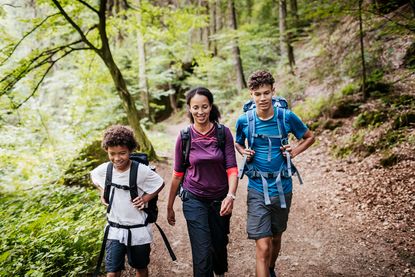
When going hiking, the right day hike essentials are something you should look out for. Day trips are a nice way to enjoy the landscape without committing several days to a hike, but they still require a bit of forethought and planning. As with any type of physical activity, you’ll need to ensure that you’re kitted out in appropriate clothing so that you can stay dry, warm and comfortable throughout the day.
Nature can also be unpredictable, so you’ll need to ensure you’re prepared for any emergencies and well-stocked with snacks and water to keep you fueled and hydrated. Read on for our day hike essentials that will prepare you for a fun day out!
Plus, have a look at our guide for the best hiking backpacks in which to store your kit.
1. Hiking boots
Your feet are going to get you from A to B, so it’s important to take good care of them by choosing the best boots and socks that will stop sores and blisters from ruining your hiking experience. Take a look at the best hiking boots for men and the best women’s hiking boots to see if it’s time to invest in a new pair of shoes.
While good hiking boots are important, you also need to consider how good your socks are, as they are generally the thing rubbing your feet. Have a look at our guide to the best hiking socks on the market, and while you’re at it, our tips on how to prevent blisters might give you a head start in protecting your feet.
2. Appropriate clothing
Whether you’re a seasoned hiker or just starting out, you will need to wear suitable clothing to keep you comfortable and at a good temperature while you’re out on the trails. Chaffing can ruin a perfectly nice walk, so we recommend a pair of the best walking trousers . If you’re more of a hiking leggings person, we have a guide for that too.
Omar Villafuerte, a qualified mountaineer, says the right and wrong gear can be trip altering. “Picking clothing that is both lightweight and durable in 70mph winds is essential,” he says. “Learning how to layer during activity and downtime is important for a successful trip.”
Get the T3 newsletter!
All the best features, news, tips and great deals to help you live a better life through technology

3. Weather protection... for sun or rain
Even if the weather forecast says you will be hiking under glorious sunshine, pack a waterproof jacket just in case. An extra layer provides you with some warmth and keeps the elements off should it rain or snow.
Villafuerte also stressed the importance of sun protection. “As strong as some of us may feel, the sun is even stronger,” he says. “I always carry protective layers, sunscreen, lip balm, and even side protection for my eyes.”
Sunburn may not seem too dangerous, but having five or more sunburns more than doubles your chance of developing melanoma, a form of skin cancer. Remember to cover all exposed skin with sunscreen and reapply every hour in midday sun if you can.
4. Food and drink
You must endeavour to stay properly hydrated when hiking and replace the water you lose through sweat. On average, people need to be drinking two to three litres of water a day. This increases when doing moderate exercise like hiking, where you will need to be consuming at least a litre every two hours to replace water loss. We have a round up of the best hiking water bottles if you’re thinking of getting a reusable bottle for your trips.
You also need to be replenishing your energy levels throughout the day. High calorie snacks like nuts and dried fruit are excellent sources of energy and easy to eat on the go (there’s a reason it’s called trail mix). You can also pack glucose sachets or chewables to keep you going throughout the day, but try to make sure you eat at least three proper meals too. Build on a good, balanced breakfast like oatmeal and ensure that you’re getting enough protein to help your muscles repair themselves after your hike.
5. A navigation aid
You need to know where you’re going, even if you’ll only be out for the day. Villafuerte recommends you not only plan your route, but bear in mind the steepness of the terrain so that you don’t overestimate yourself. “The contour lines allow you to read the steepness of an area so you can plan effectively,” he says. “Anticipate problems before you step out and always think about the return.”
One of the best hiking GPS systems is designed specifically to keep you on the right track, although if you already have an outdoor watch , that'll also do the job.

6. Emergency kit
Even though you only plan to be hiking for a day, it’s important that you’re prepared for an emergency. The following are all good to include in your day pack:
- A first aid kit - containing bandages, disinfectant wipes, various sizes of dressing, gloves and burn dressings.
- A bivy bag - in case you get trapped out overnight, bivvies are lightweight so won’t be much of a hindrance to carry and can protect you from the elements.
- A head torch - if you’re hiking at night or returning late, a head torch has the benefit of being hands-free and can prevent injury on uneven or unfamiliar terrain.
- A spare layer - you may be grateful for another layer if you get to high altitudes or the weather changes.
- Toilet paper - if you need to go, you need to go, so make sure you’re prepared.
- Repair kit - you shouldn’t have to use it, but if your backpack, boots or clothing become damaged or break you’ll be glad you brought it along.
“I would rather have to carry gear I did not need than make it to the base of a mountain and realise I needed those crampons after all,” Villafuerte adds. “I always scout my expeditions as much as I can. I read weather reports, look at online reviews, and the history of the area to make a decision on everything I would need.”
Lou Mudge is a Health Writer for Future Plc, working across Coach, Fit&Well, Live Science, TechRadar, T3 and Tom's Guide. Based in Bath, UK, she has a passion for food, nutrition and health. She's eager to demystify diet culture in order to make health and fitness accessible to everybody, and is a champion of sustainable training and eating practices. Multiple diagnoses in her early 20s sparked an interest in the gut-brain axis, and the impact that diet and exercise can have on both physical and mental health. She was put on the FODMAP elimination diet during this time and learned to adapt recipes to fit these parameters, while retaining core flavours and textures, and now enjoys cooking for gut health.

Get brilliant results and save a lot of elbow grease with one of the best pressure washers on the market
By Derek Adams Published 12 April 24

Barbells and dumbbells aren't necessary to build a bigger chest, you can do it straight from home
By Bryony Firth-Bernard Published 12 April 24
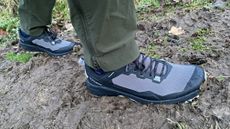
Robustly built from recycled materials to a decent design, the waterproof Revolute Active is a workhorse of a walking shoe
By Pat Kinsella Published 19 March 24

Rechargeable, robust, reliable and simple to use – the Intensity 300 is a non-flashy highly functional head torch for overnight adventurers
By Pat Kinsella Published 12 March 24

We love a good fleece, but are they good for the planet, and what can you do to lessen their negative impact?
By Pat Kinsella Published 7 March 24
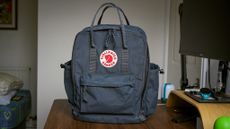
The latest addition to the Kanken family is perfect for commuting, hiking, and everything in between
By Matt Kollat Published 26 February 24

We sneak a peak under the hood of the humble hiking boot to find out how it works
By Pat Kinsella Published 17 February 24

The new outdoor collection introduces new technologies for better performance on the trails
By Matt Kollat Published 15 February 24
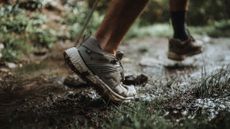
Lightweight but hardy hooves for hitting the hills and tackling trails virtually year round
By Pat Kinsella Published 23 January 24
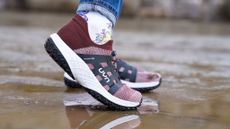
Urban trail shoes for walking from UYN feature some unique technologies
By Sophie Higgs Published 11 January 24
Useful links
- When is the next Prime Day?
- Best 5G phones
- Best VPN services
- Best laptops
- Best smartphones
- Best mattresses
- Best phone deals
- Best mattress deals
- Best TV deals
- Discount codes
How to Pack for a Day Hike: Packing List & Tips (2023)
Camotrek is reader-supported. When you buy through links on our site, we may earn an affiliate commission. See the disclosure page for more information.
In this article, we discuss what to pack for a day hike. You will find the most important items to have in your day hike packing list as well as our preferences for critical pieces of clothing and gear. This way, you could purchase all the day hike essentials before you go hiking.
For hiking beginners, day hikes are the safest and easiest way to start. Moreover, they are easier to plan (at least they don’t require meticulous planning) and prepare than multi-day hikes and as a result, you’ll spend much less time during the planning stage . Furthermore, your mistakes when packing for a day hike will rarely prove costly unless you repeat them again and again. Once you learn from them, they can actually be helpful to avoid problematic situations in your future hiking trips.
Packing for a day hike is easy – just pick up a comfortable backpack that fits, follow our guide, and start packing. A huge advantage is that you don’t need some fancy travel backpack for a simple walk in the woods because an ordinary day pack will do the job as well.

Table of Contents
Depending on the surface, weather conditions, the distance of the trail, and your own preferences, you will need appropriate footwear. The most widely used options include comfortable hiking boots, shoes or trail-running shoes. The last two are your best options for three-season hiking. High-quality trail runners are extremely comfortable out of the box and we recommend them for hiking on most types of terrain. Lightweight, flexible, quick-drying, and fairly breathable shoes with grippy soles such as La Sportiva Ultra Raptor and Salomon X Ultra 4 GTX are awesome for day hiking as they can handle rough, rocky or wet terrain equally well.
Hiking sandals and trail runners are perfect for summer hiking trips. Especially efficient in wet and hot weather, they’re (relatively) lightweight, breathable, and fast to dry. If thinking about a pair of hiking sandals, you may wish to check out the Chaco Mega Z Cloud . They are comfy and sturdy sandals with a grippy sole that will keep your foot stable even when hiking on rocky terrain or when walking through rivers and streams. In addition, the wide straps are soft and comfortable making the Chacos perfect for everyday wear.
Stiff-soled boots such as the La Sportiva Makalu are built for climbing but are also highly recommended for winter hiking , especially for areas covered with snow. The reason is that they provide more stability and ankle support than other types of footwear. If you decide to put on hiking boots, make sure they are broken in. Keep in mind that some models and designs don’t need a lot of time to be broken in (you can wear some straight out of the box), while others might require a week or even a month.
To break in your hiking boots , start by wearing them inside the house. Then you can gradually increase the distance by walking to the local shop or around town followed by short and easy off-road trips. After this whole process (your boots should feel good at the end of it), you can think of wearing them on longer hiking trips. The duration of the break-in process varies and depends on factors such as the boots’ model, weight, and materials. Keep in mind that the choice of hiking footwear can make or break the entire experience.
To learn more about hiking boots , shoes, and other types of footwear, see our guide to hiking footwear where you will find a ton of information, including detailed features, advantages, and disadvantages as well as proper shoe care.

Hiking clothing and layering
Wear layers of clothes to match the forecast and season. Layering is essential , especially when hiking in the mountains, in changing weather as well as in cold conditions. It is best to rely on a clothing system composed of specialized items that can be easily adjusted and mixed and matched with changes in environmental conditions and your level of exertion.
Base layers are an important part of the clothing system for day hiking as well as longer hikes because they help regulate body temperature, wick away moisture, and provide insulation, keeping you comfortable and protected throughout your hike. Consider synthetic-fabric clothing as well as merino wool for your day hike because they both offer excellent moisture-wicking properties, quick-drying capabilities, and the ability to regulate body temperature, ensuring optimal comfort and performance on the trail.
For day hiking in low temperatures, we recommend base layers such as Helly Hansen’s LIFA Merino Midweight because they will keep you dry and cool/warm. For warmer conditions, Patagonia Capilene or one of its main competitors HH LIFA ACTIVE Crew (or another synthetic-fabric base layer) is a better choice as it is fairly breathable, dries fast, and will keep you cooler. Avoid cotton (as they say “cotton kills”) at any cost in cool-to-cold and changing weather. While cotton is good for hot summer and desert hiking due to its breathable properties, it’s best to avoid wearing cotton clothing in cool-to-cold and changing weather conditions. This is because cotton tends to absorb a lot of moisture and takes a long time to dry, which can lead to discomfort, chills, and even hypothermia. To stay comfortable and safe on your day hike, opt for moisture-wicking and quick-drying fabrics like synthetic-fabric clothing or merino wool.
Wind and waterproof jacket
Get a windproof jacket if it’s cold or you expect it to become cold. In wet environments, you may wish to get a waterproof breathable garment as well. Most quality rain jackets are windproof so you won’t need two separate garments – one for windy conditions and another for rain . A wind and waterproof jacket is an essential piece of gear for a day hike because it provides protection against unpredictable weather conditions, keeps you dry during rain or snow showers, and shields you from chilly winds. It acts as a reliable outer layer, allowing you to focus on the hike without worrying about getting wet or feeling the discomfort of strong gusts of wind.
When it comes to gear, having a reliable jacket can be crucial for a day hike. The Outdoor Research Foray II is an exceptional waterproof and breathable option that works well as an outer layer to keep you protected from rain and snow. If you’re venturing into very cold conditions or varying climates, consider investing in a versatile 3-in-1 jacket like The North Face Clement Triclimate . It provides the flexibility to adapt to different weather conditions. However, if you’re on a budget, the REI Co-op Traimade is a great choice. It offers excellent weather protection at a more affordable price compared to pricier rain jackets.
When preparing for cold weather on your day hike, it’s important to pack a suitable mid layer for added warmth and insulation. Consider bringing a synthetic or merino mid layer, which can provide excellent insulation properties. A simple and cost-effective option is the Helly Hansen Daybreaker 1/2 Zip , a polyester fleece design. This lightweight and soft pullover offers warmth and comfort without breaking the bank.
To tackle changing weather conditions and engage in high-intensity activities, softshells and softshell jackets are a great option. These versatile garments offer flexibility, weather resistance, and breathability, making them ideal for a range of outdoor pursuits.
Hiking pants
When it comes to choosing the right pants for your day hike, prioritizing durability and comfort is essential. The Outdoor Research Ferrosi Pants are a top pick due to their versatility, durability, and overall quality. They’re well-suited for both day hikes and multi-day adventures in various conditions.
For warm-weather day hikes, lightweight and flexible pants are the way to go. Consider options like the KUHL Renegade Cargo Convertible or the Patagonia Quandary , which offer a classic trouser style while providing comfort and freedom of movement. If you’re on a budget, the Free Soldier Outdoor Cargo pants are worth considering. They feature a nice design and are made with DWR-treated 4-way stretch fabric, making them suitable for changing weather conditions.
Zip-off trousers are another great choice, especially for warm conditions and unpredictable weather. They offer the flexibility to convert them into shorts when needed. When it comes to hiking in hot weather, many outdoor enthusiasts, both men and women, prefer the comfort and freedom of hiking shorts . Lightweight, breathable, and fast-drying designs are key to staying cool and comfortable throughout your hike. For ladies, there are various options available that cater to different preferences and styles. When choosing hiking shorts, prioritize features like moisture-wicking fabrics and a comfortable fit to ensure a pleasant experience on the trails.
When it comes to hiking in wet weather, rain or snow pants are a must-have for staying dry and comfortable. Look for breathable and lightweight options like the Outdoor Research Foray pants, which provide excellent wind and rain protection while being compact and packable. These pants won’t take up too much space in your backpack and are perfect for milder or cooler climates. For winter hiking in the snow, rugged snow pants like the Columbia Bugaboo IV Snow Pants are the way to go. These pants will keep you warm and dry during your outdoor activities. If you’re facing extremely cold weather, consider layering with thermal pants underneath for extra warmth and insulation.
Having the appropriate pants for different weather conditions ensures that you stay comfortable, dry, and protected during your outdoor activities.
When it comes to selecting the right socks for your hikes, we highly recommend considering merino, synthetic, or merino blend options as we discussed in our article on choosing the best socks for outdoor adventures. In particular, we strongly endorse the Darn Tough brand, especially their Hiker Micro Crew socks, for several reasons. These socks are not only durable and breathable but also provide a comfortable and secure fit. Also, thanks to the antimicrobial properties of merino wool, they don’t stink (unlike synthetic-fiber socks) after a couple of hours on the trail even in hot conditions . Speaking about hot conditions, we recommend choosing shorter socks – ankle/quarter or the like especially if planning on avoiding hiking off-trail.
For winter and cold weather hikes, if you require more substantial socks, we suggest checking out our review of the Smartwool Hike Full Cushion Crew . These socks are designed to keep your feet adequately warm, comfortable, and blister-free, even on the most challenging terrains. They provide the necessary insulation for colder temperatures while maintaining a comfortable fit.
Gloves and mittens
On cold days, it’s crucial to conserve body heat, especially as you lose heat through exposed areas like your head and hands. It’s important to note that you lose more body heat than usual in cold environments , and factors such as wind speed and relative humidity can make the situation even worse. To protect yourself in such conditions, wearing gloves and/or mittens is essential.
When it comes to cold-weather hiking, winter gloves provide extra insulation to keep your hands warm. They are thicker to provide the necessary protection from the cold. However, keep in mind that they may not be suitable for tasks requiring fine motor skills. If you need more dexterity and flexibility, consider using liner gloves . These gloves are thinner but still offer some warmth while allowing for increased finger movement.
For more detailed information and our top recommendations for hiking gloves of all types, we encourage you to check out our post about the best hiking gloves . It covers a range of options suitable for hiking and backpacking, ensuring you find the right gloves for your specific needs.
When it comes to choosing headwear for your hikes, it primarily depends on the weather conditions and your personal preferences (to some extent). In hot temperatures and strong sunlight, it’s crucial to wear a sun hat to protect your head from harmful UV rays. Sun hats not only shield you from the sun but also help keep rain, snow, and sweat out of your eyes. Wide-brimmed hats like cowboy hats , sombreros, and Tilley hats are excellent options for this purpose.
On the other hand, when facing rainy conditions, hats specifically designed for rain protection are a smart choice. The Outdoor Research Seattle Rain Hat , for example, is made with high-quality waterproof and breathable materials to offer excellent defense against the elements. Some rain hats can also double as sun-protection hats, providing versatility for different weather conditions.
Remember that it’s always better to bring more clothes than you think you’ll need. You can always take off layers if you get too hot, but you can’t add clothes you didn’t bring. Make sure the clothes you choose are easy to take off and put on, so you can adjust as needed throughout your hike. If you want to learn more about essential hiking clothes, materials, features, and layering, check out our post on hiking clothing for all the details.

How to pack for a day hike?
When it comes to day hiking, it’s not just about knowing what to pack, but also how to pack. You don’t want to end up with a heavy backpack that’s weighing you down on your adventure. So, how do you pack for a day hike ? It all depends on the type of hiking you plan to do, the environmental and weather conditions, and the type of backpack you have. Additionally, it’s important to pack items that you’re likely to need during the day within easy reach. Here are some basic rules to follow when packing for a day hiking trip:
- As a rule, low-bulk items should be packed high and near to your back to keep the load close to your center of gravity and enable you to maintain an upright stance. It’s important that the load is balanced so the pack doesn’t pull to one side.
- The items you’ll need the most during the day (such as snacks, water bottles, cameras, and maps) should be accessible without taking off your pack. For this purpose, you can keep them in the side pockets.
- Keep spare clothes near the top of your hiking pack for easy access without taking off your pack. It ain’t fun when having to access a particular item that’s at the bottom of your backpack.
- It helps to know where everything is, so try to create and employ a system that allows you to remember where exactly you pack your stuff.

Tips for picking gear and packing efficiently
Here are some recommendations so that you pack as efficiently as you can:
- Find a balance between what you really need and what you don’t need.
- Avoid excess weight to travel as light as possible.
- Buy good and appropriate footwear that fits you well. Don’t forget properly sized synthetic or wool socks.
- Get a good day pack or a multi-day hiking backpack. Choose the option that is best for you not for someone else.
- A reliable backpack for day hiking should be durable, light, water-repellent, with multiple compartments, has a padded back with air mesh for better ventilation and more comfort. A backpack designed to distribute weight to your hips, maybe hydration compatible too.
- Keep items you’ll use often during the day where you can grab them without taking off your pack, like in hipbelt pockets or side pockets.
- Keep spare clothes where you can have easy access to them (near the top of your pack) so that you won’t have to unpack other gear.
- Make up a small first aid kit to be better prepared to respond to emergencies (in case something goes wrong).
- Don’t forget the common life stuff you use.
- Buying gear just because it’s popular or pricey isn’t very smart – high prices and famous brands do not make products more valuable – your purchasing decision should depend on whether you need something or not.
- Don’t forget to let someone know where you are going and your route.
Now that you know the basics, here’s our day hike checklist:
Download: Packing for a Day Hike: Cheat Sheet

Complete list of the essential and extra stuff to have for a day hiking trip (in PDF format)
Day hike essentials
Certainly, day hiking trips in different environments and conditions require to bring different items. Hence, some of the extra items (in our list) in certain conditions can become essentials and vice versa. The following day hiking packing list is aimed at giving you some insight about what to purchase before heading out for your next hiking adventure.
#1 Daypack (we recommend the Osprey Talon 22)

Check Price on Amazon
Our choice, Osprey Talon 22 is a tried-and-tested multi-sport backpack that can be used as a daypack for hiking, skiing, biking, etc. It’s a lightweight but durable backpack with a stable carrying system. Made with a bluesign-approved nylon material. Don’t be misled by the 22L volume – the pack offers plenty of space for your stuff. There’s virtually enough room for everything you would need for a long day hike. Helmet attachment, stow-on-the-go trekking pole attachment, side and slash pockets, a zippered hipbelt, and external hydration sleeve provide easy access to the day hike essentials.
Note that pretty much every daypack or small hiking backpack is suitable for day hikes. To get a better understanding of the features, materials, and use of different types of backpacks for hiking and backpacking , check out our article.
#2 Backpack rain cover and/or dry bag

You need to keep your gear dry and functioning. Both of these are lightweight and do not take a lot of space, however, they can be very useful if the weather turns wet. Dry bags or sacks are versatile and can be used for storing food, electronics, extra clothing, etc.
#3 Food (lunch plus snacks)

Since it is a one day hike, choose whatever lunch you’d like to eat. Additionally, get some snacks high in carbohydrates, fat, and sugar like snickers, energy bars , chocolate, almonds or other types of nuts. You can also buy a trail mix or prepare one yourself. A healthy breakfast and regular eating throughout your hike will defend you against exhaustion. When packing food, make sure it isn’t going to leak or spill.
#4 Hydration

You need a good amount of water for proper hydration – 2 to 3 liters, in summer even more – preferably in a water bladder because it’s light and can be easily accommodated in a pack with a water bladder sleeve inside. Our suggestion is to choose between Platypus and Osprey . Their lightweight leakproof water reservoirs allow for easy loading, access, and use on the go. Additionally, you might also carry some water in a plastic or stainless steel water bottle. We recommend Nalgene for all those who like to travel lightweight. They make strong and solid plastic bottles that are easy to clean and use.
#5 Poncho /raincoat/umbrella

Raincoat or an umbrella or a loose-fitting poncho can be good options too depending on the weather forecast and the hiking location. Ponchos are more convenient than raincoats in most cases because they’re lightweight, compact, allow for airflow, and are much cheaper, in general. In addition, they can be used for various things such as backpack rain cover and to keep other gear protected from driving rain.
#6 First aid kit

An outer container made of durable nylon is optimal and protects contents. Among the essentials in your first aid kit, you should include some analgesics/antibiotics/anaphylaxis (Ibuprofen, Acetaminophen or Aspirin, Sting relief pad etc.), bandages, antiseptic towelettes, blister care pads, 2″x2″ and 3″x3″ gauze sponges, safety whistle, and water-purifying tablets . If you don’t have enough time or desire to pack up your first aid kit, you can always buy a pre-assembled first aid kit with most essentials necessary for a day hike.
#7 Repair kit (with multi-tool )

It’s necessary to have a repair kit, especially if planning a long day hike. You can buy a pre-assembled repair kit or build-up your repair kit. We recommend the second option as it gives you an opportunity to customize the contents of your repair kit according to your preferences. You don’t need too many items in your repair kit for a day hiking trip, just some basic ones such as extra shoelaces, fire starter, duct tape, and a multi-purpose tool. Each one of them can be used for many different tasks and repairs. Keep your repair kit handy for easy access on the trail.
#8 Navigation

To orient yourself especially when hiking in an unfamiliar area you need a map and a compass.
#9 Mobile phone (in a shock and waterproof case)
Another one of the day hike essentials, mobile phones are especially useful in case of emergency. Your mobile phone should be in a shock and waterproof case so that the phone stays safe and secure even when crossing a river or walking up steep terrain. If you decide to carry your phone in a phone holster, you may not need a dedicated shockproof case, as solid models often come with dedicated padding inside to prevent damage to the screen. While phone holsters are an excellent choice, ensure that you select one with a smart and effective design, such as the OneTigris ARMOR .
#10 Toiletries (for good personal hygiene)
Here’s a list with some of the most important items to have in your toiletries packing list:
- Toilet paper
- Ziplock bag for safe disposal of used toilet paper
- Hand sanitizer
- Handkerchiefs
- Quick-drying towel
#11 Sun protection (is extremely important in the mountains)

Sunglasses, sun hat, sunscreen with UPF are very important because you may get scorched if you underestimate the sun. Sunburn is a problem typical for both summer hiking and high altitude hiking . Remember that you can burn even on a cloudy day in the mountains because clouds do not filter UV radiation effectively.
#12 Flashlight or headlamp (with extra batteries)

Check Price on Amazon Check Price on Amazon
You will need it in case it becomes dark outside and you’re still on the trail.
#13 Bear spray

This is what you need for self-defense if you encounter a bear or some other wild animal and it charges you (it is of prime importance to have a can of bear spray when hiking in bear country ).
In addition to the basic stuff above, you may wish to carry with you some extra items.
Day hike extras
Trekking poles – for those who need added stability on steeper trails and when crossing streams. Use trekking poles to take the stress off your muscles, joints, and ligaments.
Gaiters can be of good use depending on the terrain and weather conditions. They are very useful for desert hiking as well as when walking down scree slopes. A combo of gaiters and rain pants is highly effective against snow and mud.
Personal Locator Beacon (PLB) provides a powerful safety net for wilderness travelers. Having a PLB is very important in areas of poor phone coverage.
Signal mirror is a simple but effective tool to signal your location in case of emergency. Glass signaling mirrors are better than cheaper plastic ones because of their superior reflectivity. You may never have the need for using your signal mirror but it should definitely be on your day hiking packing list just in case.
Insect repellent is essential for areas with too many buzzy insects.
Camera to capture great images of breathtaking views. Best photos are rarely anticipated in advance so keep the camera easily accessible.
Figure: A workable list with day hiking essentials

Source: www.azutopia.com
Be conservative in planning and packing for your hiking expedition, especially if you are new to hiking. Make detailed lists before packing your backpack and note what you use and what you don’t use so that on future trips you can fine-tune the packing. Choose appropriate hiking shoes and clothes; pick up a comfortable backpack or day pack and pack whatever you’ll need for your day hiking trip. Avoid excess weight to travel as light as possible. Eliminate unnecessary things, however, when deciding what to cut, think twice about eliminating insulation and food.
Remember that you enter into a world in which planning and preparation, self-reliance, and good choices are crucial. How you plan and pack for your day hikes will inevitably reflect on preparation for future multi-day trips. And finally, one good piece of advice from the U.S. National Park Service :
“Get the weather forecast. Don’t overestimate your capabilities. Hike intelligently.”
Related Articles
Packing for a Multi-Day Hike
Ultimate Guide to Planning Hiking Trips
Ultimate Guide to Hiking Apparel
Wool vs Polyester for Outdoor Clothing
Polyester vs Cotton for Outdoor Clothing
Hiking Backpacks Basics
Like this post? PIN ME!!

Leave a Comment Cancel reply
Save my name, email, and website in this browser for the next time I comment.
- CBSSports.com
- Fanatics Sportsbook
- CBS Sports Home
- Masters Live
- Champions League
- Motor Sports
- High School
- Horse Racing
Men's Brackets
Women's Brackets
Fantasy Baseball
Fantasy football, football pick'em, college pick'em, fantasy basketball, fantasy hockey, franchise games, 24/7 sports news network.
- CBS Sports Golazo Network
- PGA Tour on CBS
- UEFA Champions League
- UEFA Europa League
- Italian Serie A
- Watch CBS Sports Network
- TV Shows & Listings
The Early Edge
A Daily SportsLine Betting Podcast
With the First Pick
NFL Draft is coming up!
- Podcasts Home
- The First Cut Golf
- Beyond the Arc
- Eye On College Basketball
- NFL Pick Six
- Cover 3 College Football
- Fantasy Football Today
- My Teams Organize / See All Teams Help Account Settings Log Out
The best hiking essentials for beginners: Everything you need to head out on the trail
From hoka hiking boots to a durable water bottle, head out on your next hike with the best gear from top brands..
If you're new to hiking , prepare to become obsessed. Getting out on the trail is a chance to take a break from your normal routine and discover the beauty of nature. Plus, it counts as a workout and, depending on the trail, it can be a surprisingly intense one.
You don't need much to get started, but making sure you get best essentials is key to making your hiking adventure safe, comfortable and fun. There's nothing better than trekking out to a stunning waterfall -- and there's nothing worse than doing it in a pair of stiff, uncomfortable boots or a backpack that chafes and pinches at your shoulders.
To make sure you start your new hiking adventure on the right foot, we've put together a checklist of the best hiking essentials from our favorite boots to our favorite app for finding and planning your next outdoor adventure.
A comfortable pair of hiking boots: Hoka Anacapa 2
Finding a pair of hiking boots that feel comfortable and provide the right kind of support might be the most important thing to do in preparation for your first hike. When your feet hurt, it's hard to think about anything else except how much your feet hurt. It can also be dangerous to head out on gravely or muddy trails in shoes that weren't designed to handle that kind of terrain.
Our favorite hiking boot is the Hoka Anacapa 2 Mid. Already well-known for its ultra-comfortable running shoes and walking shoes , the brand's popular hiking boot received the American Podiatric Medical Association seal of acceptance as a comfortable, supportive boot.
The premium hiking boot features a lightweight EVA midsole, plush ankle collar and soft sock liner so your foot is completely enveloped in cloud-like comfort. A Gore-Tex liner and water-resistant leather upper protect your feet from the elements as you trek through mud, gravel and dirt.
Get the rugged yet cushy Hoka hiking boots for $195.
Shop men's sizes:
Shop women's sizes:
A durable and lightweight backpack: Fjallraven S/F expandable hip back
When it comes to choosing a hiking backpack as a beginner, the key is to not overdo it. You don't need an oversized backpacking pack to head out on a two-mile hike. Remember that whatever you bring with you, you will be carrying from beginning to end.
That's why we recommend the Fjallraven S/F hip back. Ideal for short 1-2 hour hikes, you can wear it as a belt bag to stash your phone, keys, and water bottle. For a longer day hike, it expands into an 11.5-liter day pack with room enough to add a hearty lunch and extra water bottles alongside your other hiking essentials.
The expandable design is great for all kinds of day hikes, allowing you to be as unencumbered as possible while still being able to carry everything you need. Get the lightweight, expandable daypack at REI for $120.
A reusable water bottle: Hydro Flask
Staying hydrated is a top priority whenever you're exercising. But when you're out on a hike, it's more important than ever to make sure you're bringing enough water for the trek because you won't find many convenience stores out in the wilderness.
So make sure you grab a large-capacity yet lightweight water bottle like the Hydro Flask. With its flex straw lid, it's easy to sip while you walk and the double wall insulation will keep your water refreshingly ice cold for up to 24 hours.
We also like this water bottle for hikers because of the convenient carry handle on the lid. This gives you the option to either clip it to a backpack or carry it by the handle if it's hot day and you'll be taking frequent sips.
Get the 40-ounce size on Amazon for $50.
Non-slip sunglasses that you can afford to lose: Goodr OG
When you're heading outdoors, it's important to bring plenty of sun protection. That means sunscreen, a hat, and a pair of sunglasses. For the most part, there's not one right answer for any of these. Whatever hat, sunscreen and shades you already own will likely work just fine on a hike.
With that said, if your sunglasses are from a premium, expensive brand, we recommend leaving them at home. Not that you're planning to lose your sunglasses on the trail, but if you drop or break a $200 pair of shades, you will probably cry (at least, we sure would).
So we recommend wearing an affordable pair that do their sun-blocking job well but wouldn't sting as much if they accidentally got crushed at the bottom of your backpack.
These Goodr OG sunglasses fit the bill. They're lightweight and slip-resistant, so you can work up a sweat without them bouncing or sliding around your face. And as far as sun protection functionality, they're hard to beat with their polarized UV400 lenses that block out harmful UV rays and reduce glare.
Get them for $25 on Amazon or head directly to Goodr to shop their full collection of sport-specific sunnies.
An app that makes planning for your hike easy: AllTrails
Every hike is different. A five-mile loop on mostly flat terrain will require different gear than a five-mile uphill climb to a peak. The type of terrain, the amount of shade cover along the way and other details can also dramatically influence what you should pack and how much.
The best way to get all those details about a trail you've never hiked before is the AllTrails app. If Yelp and Strava had a baby that was obsessed with the outdoors, that's AllTrails.
You can search for trails near you and see real reviews from other people who have hiked them. Alongside key data like mileage, elevation gain, overall difficulty rating, and a map of the trail route, those reviews give you first-person insights into how well the trail is maintained, when it's most or least crowded, the best season or time of day to hike it in, and more.
While the free version of the app gives you access to the trail maps and the ability to make lists, we highly recommend upgrading to AllTrails+. It's just $35.99 per year and unlocks important features like the ability to download maps for offline use, get real-time alerts if you stray from the path and live share your location with friends and families in case you get lost.
The 10 essentials of hiking that should be in your backpack
The American Hiking Society has a short and handy guide of the ten essentials of hiking . It includes the following:
- Comfortable footwear
- Sun protection, including a hat, sunglasses, and sunscreen
- A map (or GPS-enabled smartwatch or device)
- Rain gear and dry-fast layers
- Safety items, including a flashlight, whistle, and a way to start a fire
- A basic first aid kit
- A knife or multi-tool
- Shelter (which can be an emergency space blanket for short hikes)
We covered the first four in the roundup above, along with the backpack to stash it all in. For the rest of the items, what you pick will really depend on where you're going and how long your trek is. You can use the AllTrails app to help you figure out what kind of food and emergency gear make sense to bring with you.
Our Latest Essentials Stories
Walmart is practically giving away this exercise bike
Rachael green • 2 min read.
The best gut powders and capsules to reduce bloating
Meredith gordon • 8 min read.
Amazon will pay you $25 to buy ON protein powder
Stanley's new Mother's Day tumbler drops today
Rachael green • 3 min read.
5 best turmeric supplements in 2024
Rachael green • 10 min read.
Yeti vs. Stanley: The best water bottle in 2024
Meredith gordon • 4 min read, share video.
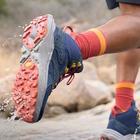
The best hiking essentials for beginners in 2024
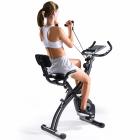
Best walking shoes for 2024: Hoka, New Balance, more

South Carolina Gamecocks championship gear is out now

UConn Huskies championship gear revealed

Essential Emergency Supplies for Day Hikers
W hen hiking, the draw of nature's varied lands and open spaces can be intoxicating, beckoning us to explore and immerse ourselves in its beauty.
Whether it's dense forests and gushing rivers or towering mountains and vast meadows, there's a world of landscapes out there just waiting to be explored.
If you're gearing up for your next great outdoors journey, Varied Lands (a reputable camping guide site) is an excellent starting point. Let's look at the benefits of overnight preparedness and packing emergency supplies when hiking.
Hiking Tips
Expect the unexpected.
While day hiking is often seen as a low-risk activity, especially when compared to overnight camping or long-distance backpacking , it is critical to remember that the great outdoors is unpredictable.
Weather conditions can change rapidly, injuries can occur, and you can lose your way. All these unforeseen circumstances could leave you stranded in the woods overnight. This is why packing emergency supplies, even for a short day hike, is essential.
Packing the Right Supplies
When you pack emergency supplies, you prepare for the unexpected. Having these essentials on hand not only allows you to survive if stuck overnight but gives you peace of mind, knowing you've taken vital steps to stay safe.
Emergency Supply List:
- Water purification tablets or a portable water filter
- High-energy snacks such as nuts, granola bars, and dried fruits
- A flashlight or headlamp with extra batteries
- First aid kit
- A whistle to signal for help
- A firestarter such as waterproof matches or a lighter
- A multipurpose tool or knife
- A lightweight, compact emergency shelter or a space blanket
- Extra layers of clothing, including a waterproof jacket and hat
- A map and a compass or GPS
Benefits of Packing Overnight Supplies
This is the top priority when venturing outdoors. Pack the essentials, like water, food, first aid, tools, and shelter, so you can handle whatever comes up. This will ensure you're prepared to wait for help or find your way back into the hustle and bustle.
Peace of Mind
Knowing that you are prepared for the unexpected can alleviate stress and anxiety, allowing you to enjoy your hiking experience fully. Being ready for any surprises can help chill out your nerves and worries.
Independence
With the right supplies, you can handle challenging situations rather than ask others for help. However, handling things yourself can also make you feel more confident.
Independent thinking helps you get creative and figure things out, but it also lets people make their own choices and take the lead.
Flexibility
Sometimes, an unexpected overnight stay can be an opportunity to experience nature's beauty in a new way. It's essential to be open to different possibilities and take advantage of opportunities.
Being adaptable lets you fully seize life's unexpected twists and turns. With the right supplies, you can comfortably enjoy a night under the stars.
Before you head out for a day hike, think about how long and arduous the trail is, what the weather is like, and how fit you are.
Make sure to inform someone of your planned route and estimated return time. This will ensure that help can be sent if you do not return as expected.
Spending time in nature hiking can be rejuvenating, but let's not forget the wild can be unpredictable, so it's critical we're ready for anything that might come our way.
Bringing along vital emergency gear not only lets you tackle an unexpected night in the wild but also offers peace of mind so you can immerse yourself in your hiking adventure.
This story is brought to you in partnership with Varied Lands.
The post Essential Emergency Supplies for Day Hikers appeared first on Go Backpacking .
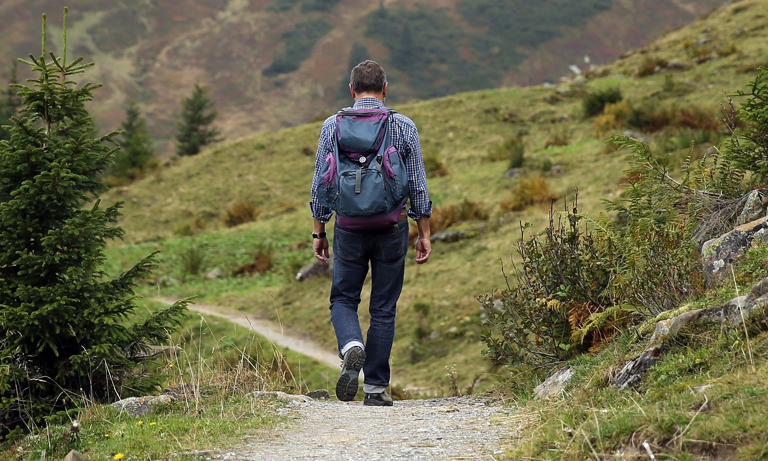
- United States
- Santa Clara County
Santa Clara County, California
Looking for the best hiking in Santa Clara County? We've got you covered with the top trails, trips, hiking, backpacking, camping and more around Santa Clara County. The detailed guides, photos, and reviews are all submitted by the Outbound community.
Top Hiking Spots in and near Santa Clara County
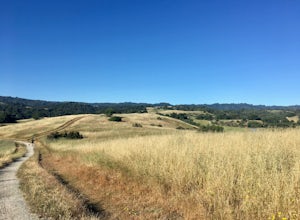
Hike the Arastradero Preserve Loop
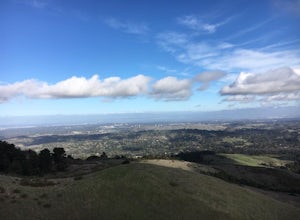
Hike the Windy Hill Loop
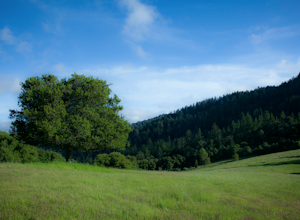
Hike through Wunderlich County Park
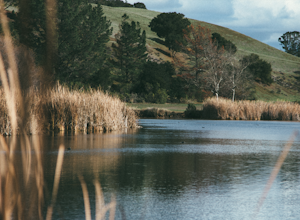
Park Day at Foothills Park

Sunrise Hike at Windy Hill

Black Mountain via Rhus Ridge Trail

Hike the Crystal Springs Trail Loop
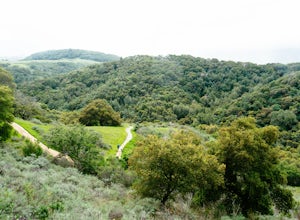
Hike the Pulgas Ridge Open Space Preserve Loop
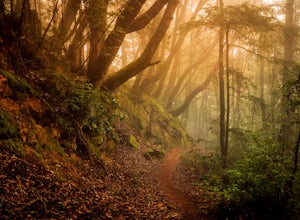
Hike or Bike the Old Growth Redwood Loop at El Corte de Madera

Hike the Monte Bello Open Space Preserve Loop
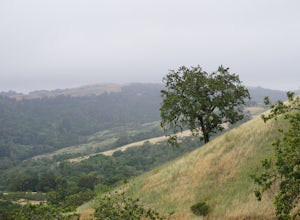
Hike to Black Mountain and Stevens Creek Canyon

Hike Russian Ridge

Hike Deer Hollow Farm Trail

Hike the Methuselah and El Corte De Madera Creek Loop

Hike Whittemore Gulch at Purisima Creek Redwoods OSP
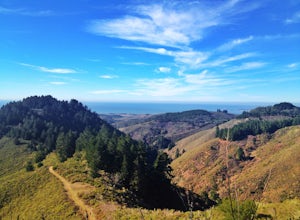
Hike Purisima Creek Redwoods OSP
Top activities.
- Backpacking
- Mountain Biking
- Photography
- Rock Climbing
- Local Adventures
- Tours and trips
- Camping Nearby
- Outbound PRO Membership
- Add your property
Mobile Apps

© 2024 The Outbound Collective - Terms of Use - Privacy Policy
- Search Please fill out this field.
- Manage Your Subscription
- Give a Gift Subscription
- Sweepstakes
- Travel Products
REI Is Cleaning House With a Massive Spring Sale — Shop the 50 Best Deals Up to 81% Off
Score Patagonia, New Balance, Cotopaxi, and more from just $4
:max_bytes(150000):strip_icc():format(webp)/Alexandra-Domrongchai-Headshot-0b9572e52b9c4f69b7b8c388c2f830d3-a0d22381cba940719a3100a66044827a.jpg)
Best Apparel Deals
Best shoe deals, best camping gear deals, best travel bag deals.
We independently evaluate all recommended products and services. If you click on links we provide, we may receive compensation. Learn more .
Travel + Leisure
Since the arrival of spring, my mind has been consumed with non-stop thoughts of my upcoming outdoor adventures that will make the most out of the longer, warmer days. But as I learned the hard way last year, the trademark of any great trip is being prepared with excellent travel gear. Trust me, the last thing that anyone wants is to let uncomfortable athleisure hinder their enjoyment or have a flimsy tent spoil their camping trip. When it comes to exceptional outdoor gear, REI is my ultimate destination for purchasing high-quality and dependable travel essentials that are built to last.
If you've been searching for the perfect opportunity to upgrade your gear, then you're in luck, because REI also happens to be hosting an incredible (and under-the-radar) spring sale to ring in the season. With hundreds deals on top brands like Patagonia , Vuori , New Balance , Hoka , and Cotopaxi , this sale requires some diligent scrolling, so I’ve taken the time to carefully sift through them alls to curate a list of the 50 best ones, starting at just $4 ahead of all of your upcoming ventures.
The apparel deals at REI are truly next-level. With mega discounts on the top-rated and extra stylish Outdoor Voices Doing Things Dress and Arc'teryx Men's Cormac Crew SS Shirt in Pytheas Heather , you have the chance to upgrade your wardrobe with high-quality pieces that are perfect for any adventure. And guess what? You can snag a pair of the REI Co-op Women’s Trailsmith Overalls in Washed Blue for just $27 and even get $50 off a pair of the Kuhl Men’s Renegade Rock Pants in Bedrock . We don’t know how long these deals will last, or how much longer they’ll be in stock. So if I were you, I’d get shopping.
- Vuori Women's Halo Essential Hoodie , $28 (originally $96)
- Outdoor Voices Doing Things Dress , $32 (originally $108)
- REI Co-op Women's Powderbound Insulated Jacket , $100 (originally $199)
- Vuori Women's Vintage Ripstop Shorts , $30 (originally $68)
- Patagonia Women's Wind Shield Pants , $84 (originally $169)
- REI Co-op Women's Wallace Lake Flannel Shirt , $18 (originally $75)
- Arc'teryx Men's Cormac Crew SS Shirt in Pytheas Heather , $56 (originally $70)
- REI Co-op Men’s Trailsmith Fleece Jacket in Red Cascade , $45 (originally $90)
- Kuhl Men’s Renegade Rock Pants in Bedrock , $49 (originally $99)
- Patagonia Women’s Strider Pro Shorts 3.5-inch , $23 (originally $79)
- REI Co-op Women’s Trailsmith Overalls in Washed Blue , $27 (originally $90)
- Topo Designs Men’s Patagonia Women's Wind Shield Pants , $84 (originally $169)
- REI Co-op Men's Trail Pants , $30 (originally $100)
Vuori Women's Halo Essential Hoodie
Any experienced hiker, runner, or traveler will tell you that the shoes you wear (and pack) play an important role in ensuring a comfortable trip. If your shoe collection is lacking in that department ahead of spring hikes and other outdoor activities, then consider this REI sale as a clear indication that it's time for an upgrade. Whether its with a pair of the New Balance Men’s Fresh Foam X More v4 Sneakers to wear on your next run or the top-rated Merrell Men's Merrell Moab Women's Speed Mid Gore-Tex Hiking Boots for your next trek, be sure to take advantage of significant discounts on both pairs while they’re still in stock.
- New Balance Men’s Fresh Foam X More v4 Sneakers in Summer Aqua , $112 (originally $150)
- La Sportiva Men’s Jackal GTX Trail-Running Shoes , $117 (originally $195)
- Black Diamond Women's Fuel Approach Shoes , $93 (originally $170)
- Allbirds Women's SuperLight Wool Runner Sneakers , $60 (originally $120)
- Helly Hansen Women’s Cascade Mid HT Hiking Boots , $88 (originally $160)
- Keen Women's Targhee III Waterproof Mid Hiking Boots in Atlantic Blue , $82 (originally $165)
- Keen Women's Astoria West Sandals , $81 (originally $125)
- Oboz Bozeman Women's Mid Hiking Boots , $74 (originally $135)
- Rockfish Women's Chelsea Wellington Ankle Boots , $66 (originally $135)
- La Sportiva Men's Ultra Raptor II Mid GTX Hiking Boots , $140 (originally $199)
- Hoka Men's Arahi 6 Road-Running Shoes , $113 (originally $140)
- Merrell Men's Merrell Moab Women's Speed Mid Gore-Tex Hiking Boots , $102 (originally $170)
- Columbia Men's Rostra Beachcomber PFG Flip-Flops , $32 (originally $50)
Keen Women's Astoria West Sandals
Complete with stellar deals on spacious tents and campsite must-haves , REI has some of the best discounts on camping gear across the web right now. If you’re looking to turn your next camping experience into a glamping experience, I recommend snagging the REI Co-op Outward Hammock while it's on sale for $99. Or, if your camping accessory department needs a bit more love, you’ll have to check out the TheTentLab The Deuce UL Backcountry Trowel while its on sale for $15, the Princeton Tec Snap Solo Headlamp for just $21, and the cooling and UV-blocking Sunday Afternoons UVShield Cool Face Mask for a mere $4.
- Sunday Afternoons UVShield Cool Face Mask , $4 (originally $20)
- GSI Outdoors Cascadian 1-Person Table Set , $9 (originally $18)
- Big Agnes Wyoming Trail 2 Tent , $390 (originally $650)
- Alpine Mountain Gear Weekender Tent 4 , $65 (originally $150)
- Alps Mountaineering Dash Chair , $45 (originally $120)
- Princeton Tec Snap Solo Headlamp , $21 (originally $40)
- TheTentLab The Deuce UL Backcountry Trowel , $15 (originally $20)
- Hydro Flask Cooler Cup , $15 (originally $25)
- Mountain Equipment Starlight I Sleeping Bag , $90 (originally $205)
- Leki Jannu FX TA Trekking Poles , $110 (originally $150)
- Trekmates Bomberlite Sleeping Pad , $54 (originally $120)
- REI Co-op Outward Hammock , $99 (originally $199)
Big Agnes Wyoming Trail 2 Tent
So you’ve shopped for new camping accessories, clothes, and shoes, but what about something to carry those precious valuables in? You'll need a durable backpack, duffel, or suitcase to withstand the weight of your essentials, so that’s where REI’s deals on spacious and practical bags come in. Shoppers can score the stylish Cotopaxi Luzon Del Dia 18-liter Backpack , a roomy and sleek hiking bag for just $65 off and high-quality Eagle Creek Tarmac XE 2-Wheel 95-liter Wheeled Luggage while it's sporting an enticing $100 discount. That’s not all, as customers can also enjoy steep discounts on daypacks and hip packs for a fraction of their price. But you’ll have to act accordingly because there’s no way these bag deals will be in stock for much longer.
- Eagle Creek Tarmac XE 2-Wheel 95-liter Wheeled Luggage , $240 (originally $339)
- Cotopaxi Luzon Del Dia 18-liter Backpack , $45 (originally $60)
- Granite Gear Perimeter 35 Pack , $112 (originally $230)
- Patagonia Ultralight Black Hole Mini Hip Pack , $24 (originally $35)
- Patagonia Fieldsmith Roll-Top Pack , $70 (originally $129)
- Osprey Heritage Aether 30 Backpack , $98 (originally $180)
- Topo Designs Mini Shoulder Bag , $27 (originally $39)
- Gregory Men’s Zulu 30 Pack in Fiery Red , $120 (originally $160)
- Sherpani Women’s Cabo Convertible Pack , $52 (originally $75)
- Kavu Wombat Pack , $45 (originally $65)
- REI Co-op Big Haul 28 Recycled Duffel , $70 (originally $100)
- Mountain Hardwear Camp 4 Duffel , $91 (originally $130)
Eagle Creek Tarmac XE 2-Wheel 95-liter Wheeled Luggage
Love a great deal? Sign up for our T+L Recommends newsletter and we’ll send you our favorite travel products each week.
See More T+L Shopping Deals
:max_bytes(150000):strip_icc():format(webp)/amazon-roundup-12-trending-amazon-bottoms-for-spring-under-50-tout-74a4775b3712431fb929f19e063229c9.jpg)

IMAGES
VIDEO
COMMENTS
The rest of the Ten Essentials as appropriate for your hike; Jump ahead to the list that fits your needs: Day Hikes: 2 Hours or Less; Day Hikes: 2+ Hours . Day Hikes: 2 Hours or Less . This list is a good starting point for a morning spent on regional park trails or a local lake walk.
Foam pad (to insulate you and your dog from the cold/wet ground during breaks) Dog first aid kit (or add stuff to human first-aid kit) Collar light (check battery pre-trip) Leave in car. Quick-dry towel. Blanket. Dog car hammock (seat protector) Extra dog food in airtight container.
While the only truly essential items for a hiking trip are a backpack, the 10 essentials, and the right clothing, I recommend packing a few extras. ... While this list covers the best day hiking gear, you just need the essentials. Before you head out on your hike, be sure to pack: A quality hiking day pack; The Ten Hiking Essentials;
This 'Ten Essentials of Hiking' list is universally agreed upon in the hiking community and should serve as a baseline for all the necessary supplies you need to bring along on any given day hike. 1. Navigation: map, compass, GPS device, personal locator beacon, altimeter. 2.
Day Pack. Day packs come in a wide range of sizes and brands. Most of our day packs have a capacity of roughly 20 to 24 liters, which is the mid-range size. These are big enough to carry some food, extra clothing, and up to 4 liters of water. Having a dedicated space for a water reservoir is a must (more on this soon).
Trash Bag. Pack this 11th essential to making sure that the trails you love stay beautiful for generations to come. A ziplock bag is a great option for keeping the trash you pick up along the trail separate from the rest of your gear. Level up by including a pair of disposable gloves to use when picking up less-pleasant litter.
2. Sun Protection. Sun protection is an incredibly important part of any backcountry trip, even when the weather looks cloudy. Sunscreen , SPF lip balm, sunglasses (preferably polarized), a brimmed hat, and protective clothing should be considered essential on every hiking trip.
Day hikes, by definition, are hikes that you can complete in one day (meaning, you're not sleeping overnight on the trail like you would on a backpacking trip or thru-hiking trip). That said, some day hikes turn into overnight trips when people run into trouble, so it's best to bring along some emergency items as part of your essential gear.
Water Bladder. Water bladders are one of the first things to pack for hiking trips. It makes it easier to stay hydrated, and you don't need to keep taking off your pack to pull out your water bottle. I use the 2l water bladder from First Ascent, and it also comes in a 3l if you want more carrying capacity.
5) LOTS of Water. Your body needs water to function at its very best. Bringing extra water, and even a water filter for long hikes in case you run out is a really important day hiking essential to have while you're out there bagging peaks.
And if you're out on the trails for more than a day, the wide-mouth container can double as a food prep and storage container for soups and other backcountry meals. 3. Snacks. Exercising your body depletes its energy stores. Keeping snacks in your daypack is essential for sustaining energy during the hike.
9) Clothing: Bring extra clothing and several layers to stay warm and dry. Prepare for any possible weather situation. Shop for hiking and camping clothing at MEC. 10) Shelter: Bring a lightweight shelter, like a siltarp or bivy sack. Pack lightweight rope to secure your shelter.
In this case, you are probably gearing up for a simple day hike with friends on a national park. As such, you will need the essentials for a day hike, including sunglasses, hiking boots,hiking pants, comfortable clothing, a camera, hiking poles and a lightweight daypack. With that in mind, here is a more comprehensive list of what to take hiking.
15. Food. Along with water, it's essential to pack enough food for your hike (and even a little more). In general, we recommend eating between 300 and 400 calories per hour of hiking, depending on your body type and level of exertion.
Emergency shelter, blanket and sleeping bag. 1. Navigation. A map and compass are one of the 10 essentials for hiking, even if you're following a well-marked trail. They can help you stay on course if you get lost or if the trail becomes obscured. However, navigating with a map and compass can be challenging sometimes.
Check out my hiking checklist for day hikers: 1. What to wear on a day hike: tops and pants. Alan and I took a short trail through a slot canyon on a drive on the Burr Trail in southern Utah. As you can see, I was dressed for hiking. The lightweight hiking shoes were a perfect choice for the day.
The Best Hiking Essentials. So, without further ado, here are the ultimate hiking essentials for the perfect day to enjoy all nature has to offer. 1. Hiking Boots. Ah, hiking boots. The unsung heroes of any hiking trip.
When going hiking, the right day hike essentials are something you should look out for. Day trips are a nice way to enjoy the landscape without committing several days to a hike, but they still ...
Hiking clothing and layering. Wear layers of clothes to match the forecast and season. Layering is essential, especially when hiking in the mountains, in changing weather as well as in cold conditions.It is best to rely on a clothing system composed of specialized items that can be easily adjusted and mixed and matched with changes in environmental conditions and your level of exertion.
For a longer day hike, it expands into an 11.5-liter day pack with room enough to add a hearty lunch and extra water bottles alongside your other hiking essentials.
The post Essential Emergency Supplies for Day Hikers appeared first on Go Backpacking. Go Backpacking ... This is why packing emergency supplies, even for a short day hike, is essential.
At trail intersections, you may see several sign paddles placed on different sides of one 4"x4" trail post. The different paddles are needed as there are different directions one can travel at a 4-way or 3-way intersection. By learning to read the trail markers, you will be able to explore back-country trails without getting lost.
Long-sleeve shirt (for sun, bugs) Lightweight fleece or jacket. Boots or shoes suited to terrain. Socks (synthetic or wool) Extra clothes * (beyond the minimum expectation) Additional items for rainy and/or cold weather: Rainwear ( jacket and pants) Long underwear. Warm, insulated jacket or vest.
Hike the Windy Hill Loop. 4.3. 7.2 mi / 1400 ft gain. This 7.2-mile loop starts by heading out of the parking lot and onto the Spring Ridge Trail. Head Southeast On Spring Ridge Trail until you connect with Hamms Gulch Trail. When you jump on Hamms Gulch, head southwest for ~3.4 miles as you circle the far end of the OSP.
Cachuma Lake Recreation Area. Framed by the beautiful Santa Ynez Mountains and the San Rafael Mountains, Cachuma Lake is one of California's most beautiful lakes. It makes for one of the easiest and most idyllic day trips from Santa Barbara. Cachuma Lake is located off California Highway 154, famous for its stunning views. Beautiful Cachuma Lake.
Go Hiking Trip Reports Tibbett's Marsh, Wilderness Peak Loop, Whittaker Wilderness Peak, Harvey Manning Trail, East Fork, Fred's Railroad, Shy Bear ... It was a perfectly cool spring day for a spontaneous hike. I ended up doing a 6.6 mile loop; I'll show the map below. All trails I hiked on were in great condition, only one had a small alder ...
REI is having a massive sale on outdoor gear and travel accessories. Right now, shoppers can save up to 81 percent off on hiking boots, camping gear, and travel clothes from brands like Patagonia ...
10 Day Radar. Video. Try Premium free for 7 days ... April 12, 2024. Spring is here, and it's time to wake up your home and garden with these essential tips for tackling tough chores. Trending ...